LONDON FOR LESS THAN £ 100 A DAY
THE BEST BOUTIQUE HOTELS IN THE WORLD
INSIDERS’ GUIDES TO ICONIC CITIES

WHY NIIGATA IS JAPAN’S NEW HOT SPOT

LONDON FOR LESS THAN £ 100 A DAY
THE BEST BOUTIQUE HOTELS IN THE WORLD
INSIDERS’ GUIDES TO ICONIC CITIES

WHY NIIGATA IS JAPAN’S NEW HOT SPOT
DINE
WHERE TO EAT IN THE ADELAIDE HILLS
DESIGN HOMES OF THE FUTURE WILL LOOK LIKE THIS...
INNOVATE HOW TO BUILD YOUR SKILLS IN AI – FAST


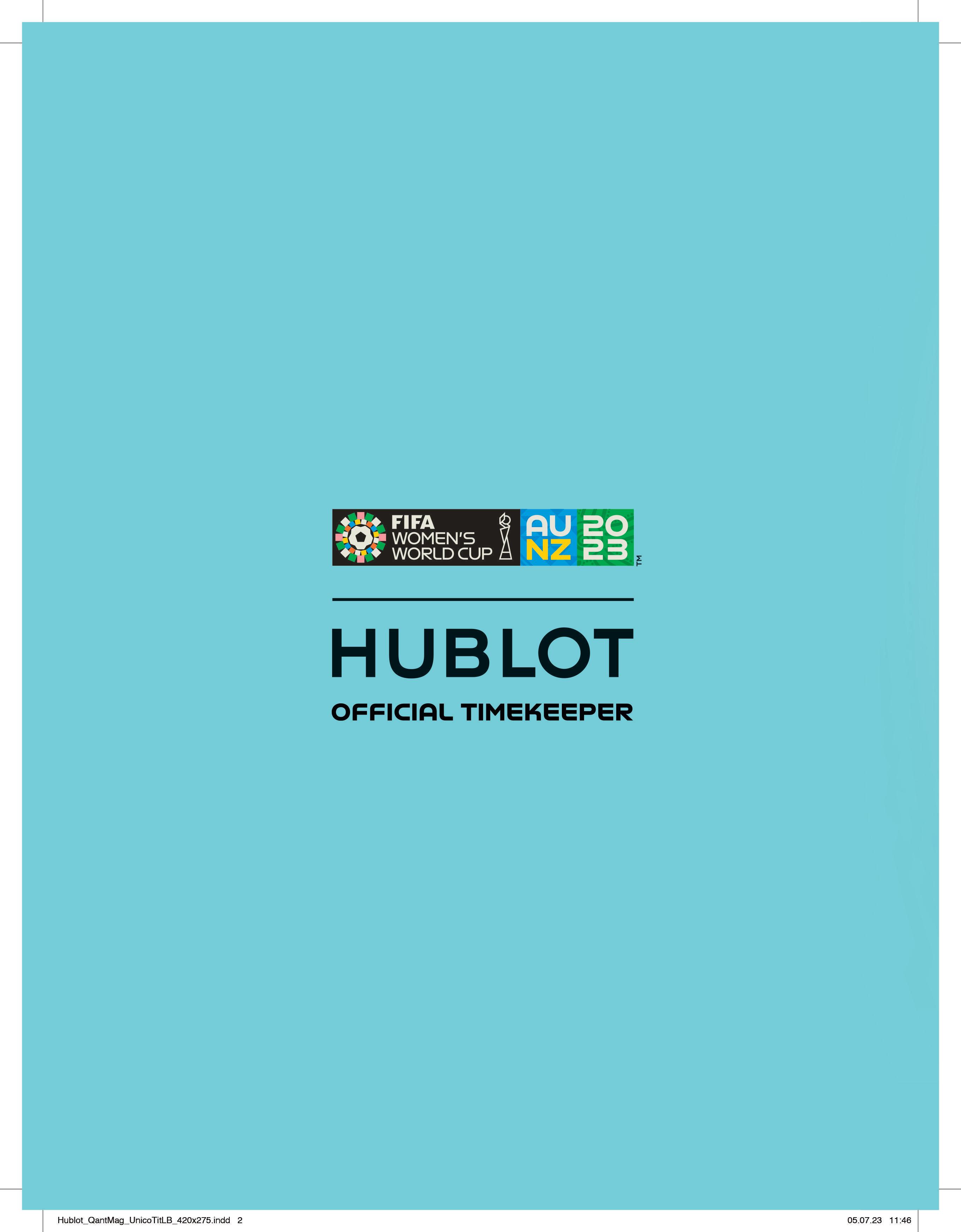
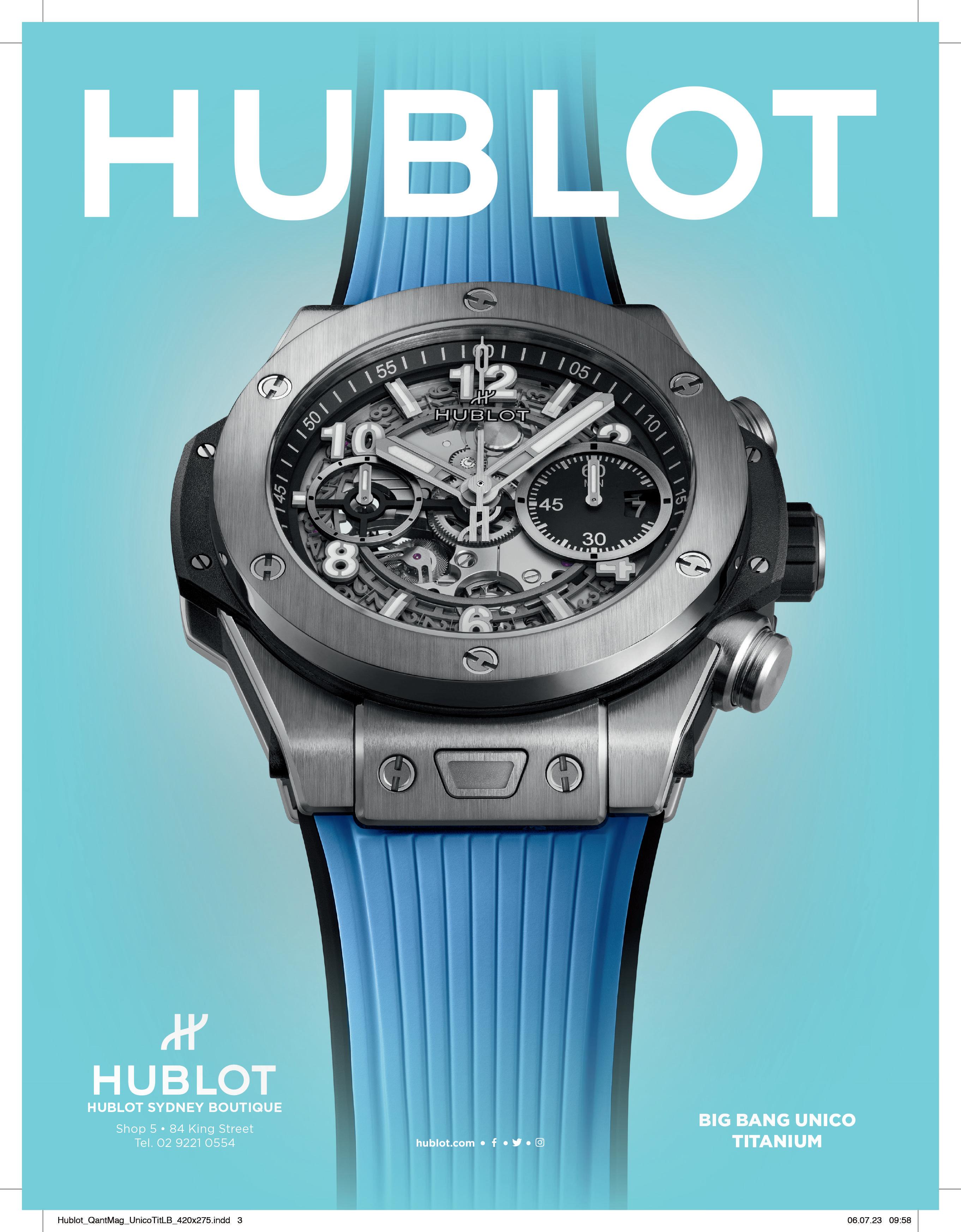







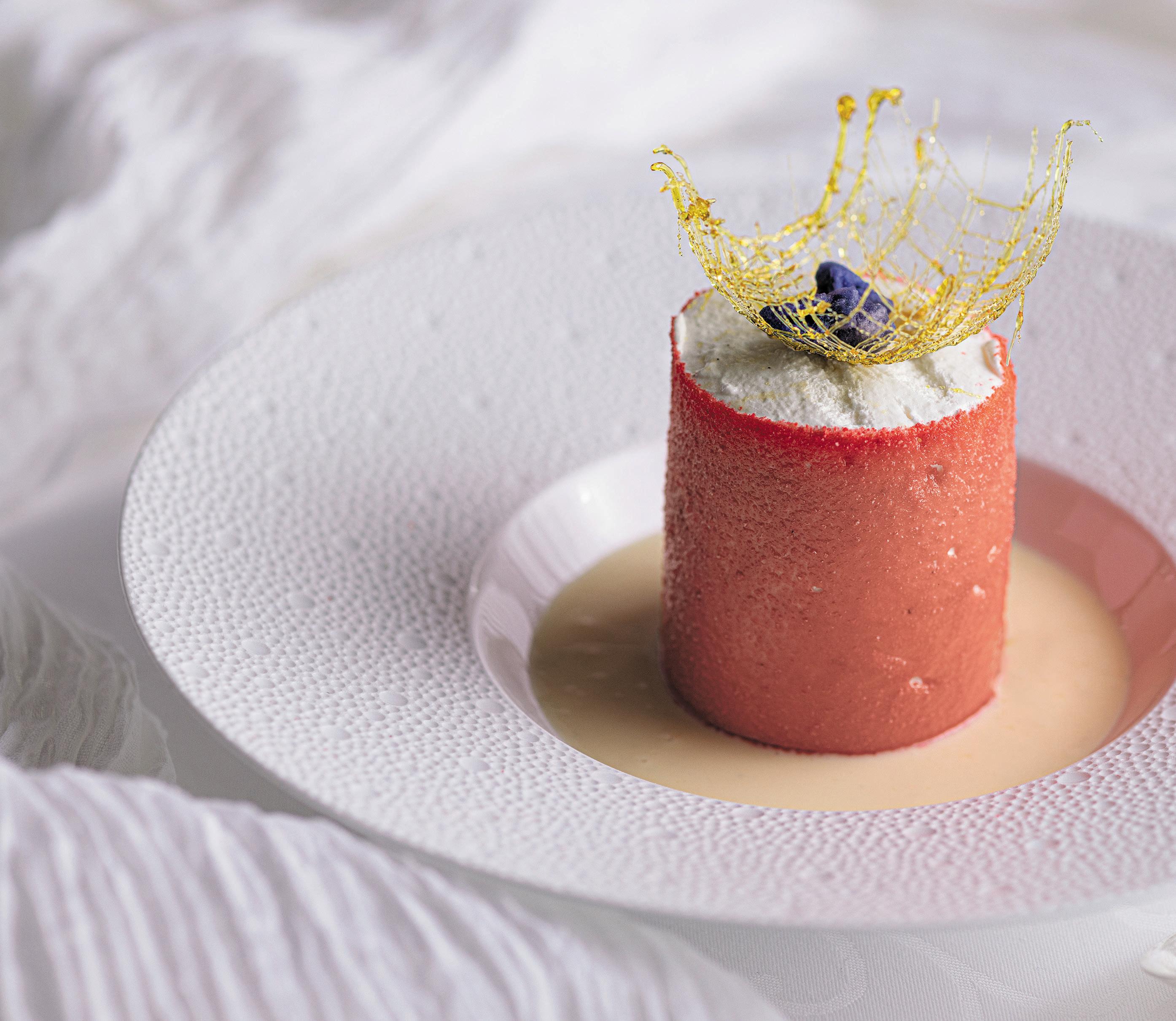



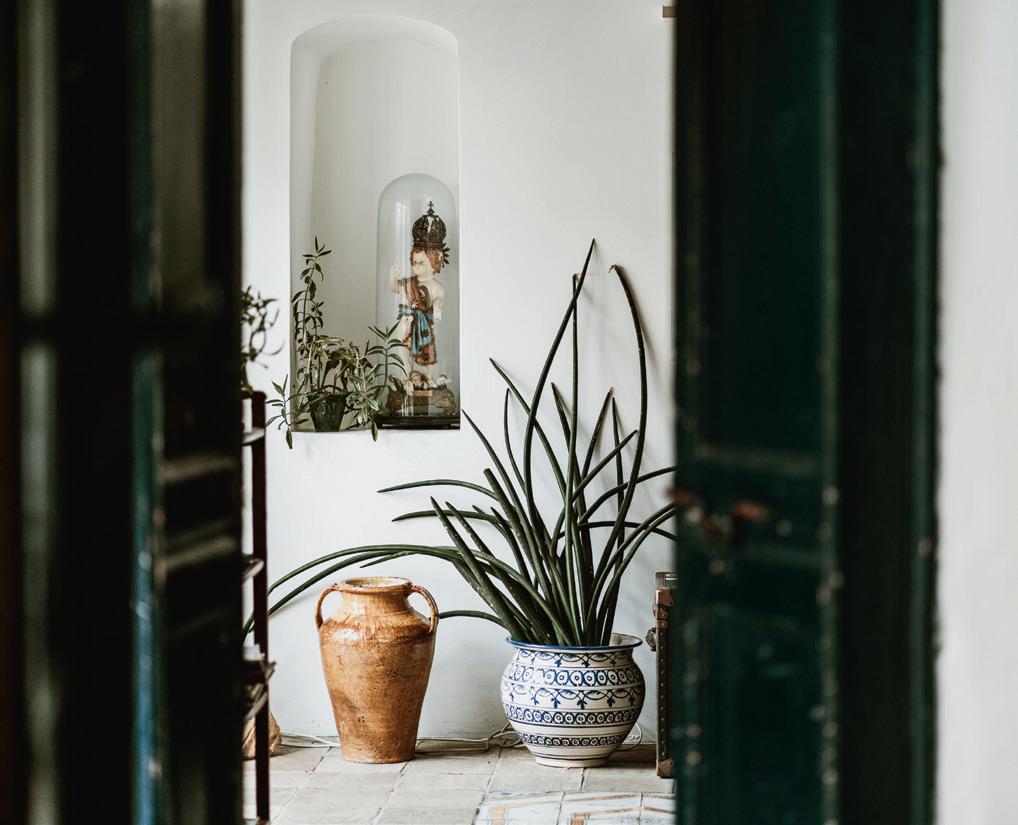

Innovate
139 How adaptive home design aims to connect us to the natural world and create a household ecosystem
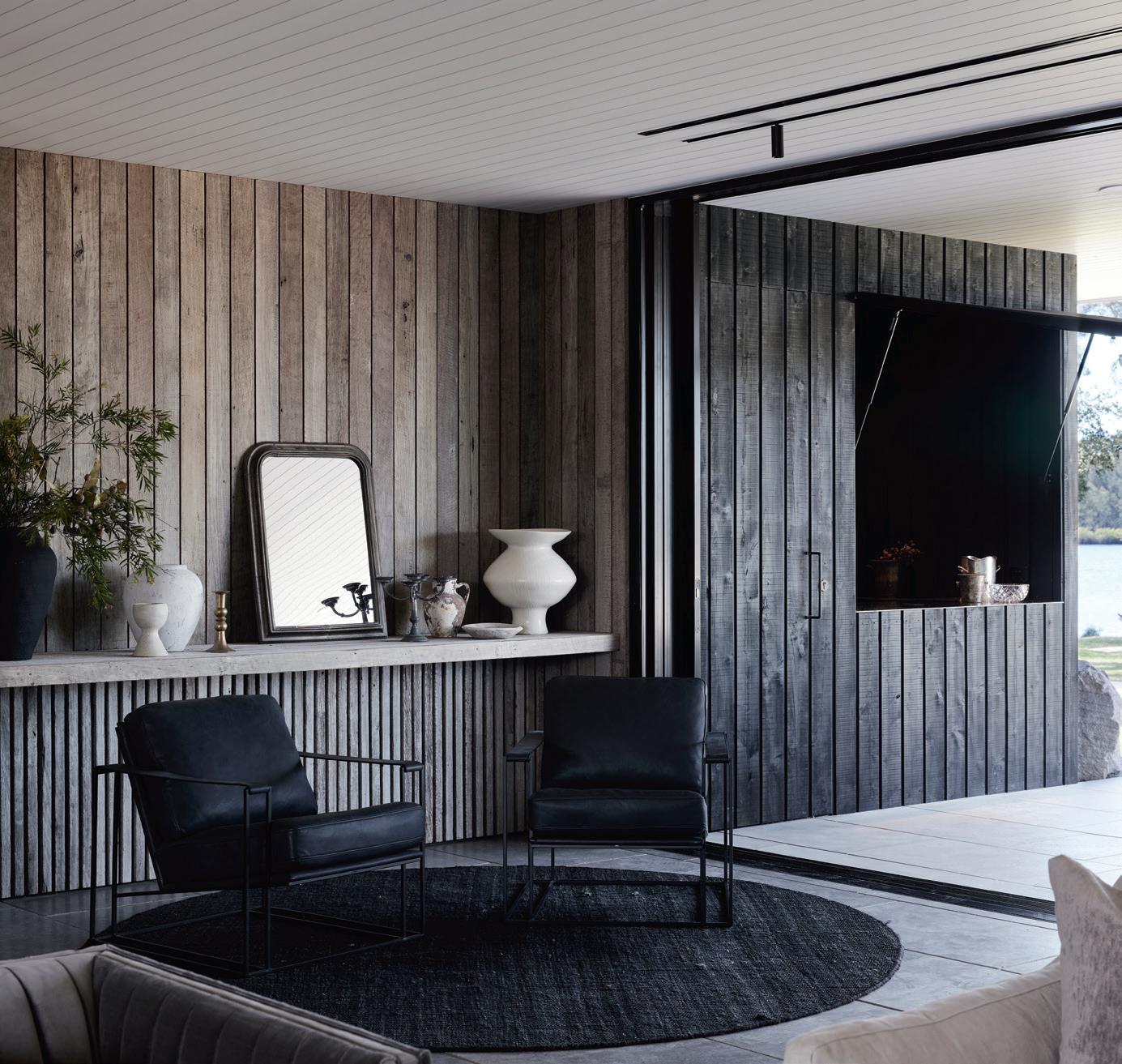
Touring special report
107 The latest group journeys for every type of traveller
Design
124 On The Inside: Micalo, Yamba, NSW
126 Creative Process: Thea Anamara Perkins
128 Foundations: Casa Malaparte, Capri, Italy
130 The Statement: Luxo lamp
132 Packing List: Fashion for travelling in style
136 The Classic: The puffer jacket
On board
177 Inflight entertainment
152 The Business of AI: The push by educators to bring leaders up to speed on the exciting, disruptive tech
160 View From The Top: Mark Rigotti, managing director and CEO, Australian Institute of Company Directors
168 Career Path: Dr Catriona Wallace, founder, Responsible Metaverse Alliance
172 Small Business: Beat the financial squeeze by engaging with customers’ values and expectations
174 Upstart: Energy Renaissance
182 Health, safety and security on board and when you land
186 Games
Natural beauty at your fingertips.

















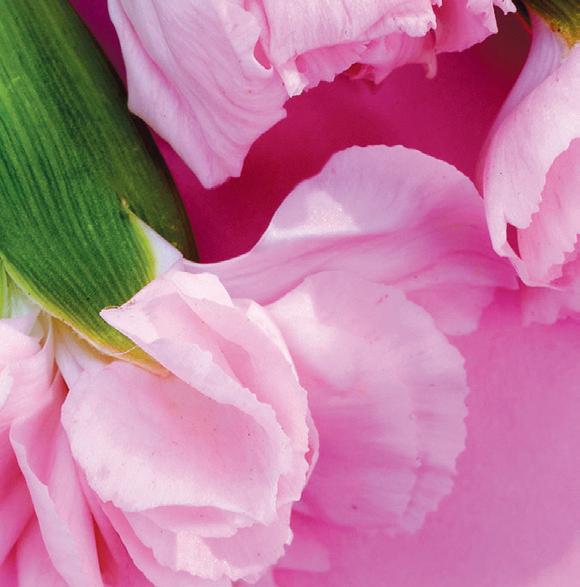








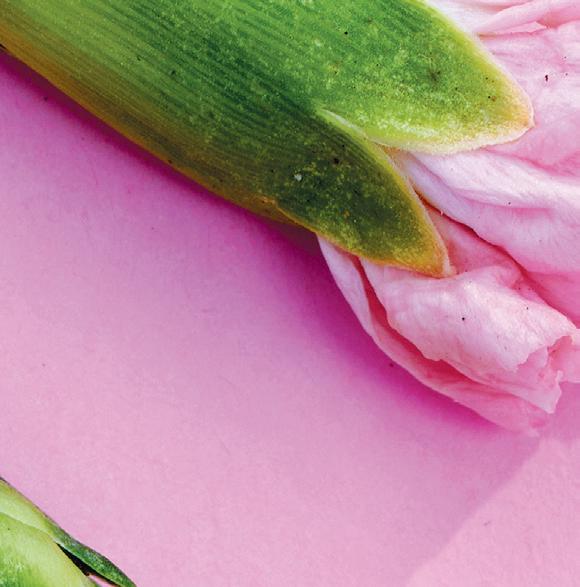
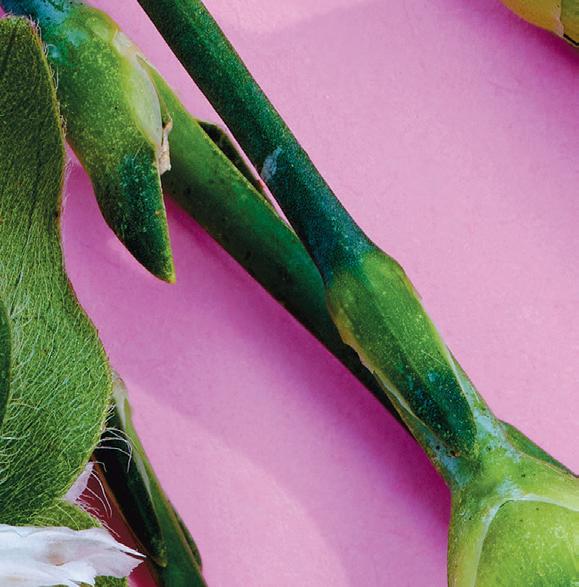
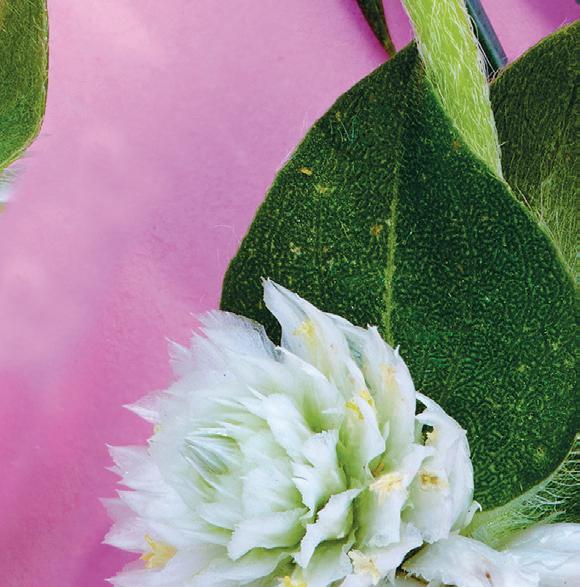


Editorial
Editor-in-Chief
Kirsten Galliott
Content Director
Genevra Leek
Deputy Content Director
Faith Campbell
Content Manager
Natalie Reilly
Online Editor
Christina Rae
Managing Editor, Qantas Hotels
Bridget de Maine
Digital Producer
Anneliese Beard
Creative Director
Tony Rice
Art Directors
Kate Timms
Nick Clark
Visual Director
Elizabeth Hachem
Copy Director
Rosemary Bruce
Deputy Copy Director
Sandra Bridekirk
Copy Editors
Pippa Duffy
Nick Hadley
Production Manager
Chrissy Fragkakis
For editorial inquiries, contact: qantaseditorial@mediumrarecontent.com
Head of Sales, Travel and Luxury
Tony Trovato
+61 404 093 472
National Sales Manager, Travel
Callum Bean
+61 404 729 224
Senior Account Manager, NSW
Crystal Wong
+61 420 558 697
Senior Account Manager, NSW
Anthony Sullivan
+61 408 447 148
Sales Manager, Qld, WA and SA
Sarah Harding
+61 403 699 867
Senior Account Manager, Victoria
Miranda Adofaci +61 410 387 707
Senior Account Manager, Victoria
Jo Farrugia +61 450 968 882

Digital Sales Director
Mike Hanna +61 402 640 095
Digital Campaign Manager and Product Specialist
Anna Delgado +61 404 855 041
Implementation Executive, Travel and Luxury
Ammara Mumtaz +61 480 223 837
International Representatives
Greater China and Japan
Peter Jeffery +852 2850 4013 peterjeffery@asianimedia.com
South-East Asia and the UK
Nick Lockwood +65 9776 6255
nick.lockwood@ pharpartnerships.com
United States
Ralph Lockwood +1 408 879 6666 ralph.lockwood@ husonmedia.com
For advertising inquiries, contact: qantasadvertising@mediumrarecontent.com
Head of Rare Creative Paulette Parisi Content and Partnerships Director Mark Brandon Senior Content
Editor Natalie Babic Partnerships Editor Helen Martin Senior Writer Terry Christodoulou Creative Director
Philippa Moffitt Art Director Georgia Dixon Designer Mark Gattellari Strategy and Insights Director Jane
Schofield Senior Strategy Manager Natalie Pizanis Commercial Insights Manager Melissa Bruce Qantas
Senior Partnerships Manager Alana Baird Qantas Loyalty Partnerships Manager Molly Maguire Qantas
Partnerships Campaign Executive Kellie Hammond Content and Events Campaign Manager Jessica Manson
For Rare Creative inquiries, contact: rarecreative@mediumrarecontent.com
Managing Director Nick Smith Chief Commercial Officer Fiorella Di Santo Head of Content, Travel and Business Kirsten Galliott Head of Design, Travel and Business Tony Rice Head of Digital Production and Operations Hana Jo Head of Audience Intelligence Catherine Ross Financial Controller Leslie To Finance Manager Yane Chak Junior Accountant Yongjia Zhou
Rare
please visit mediumrarecontent.com.






















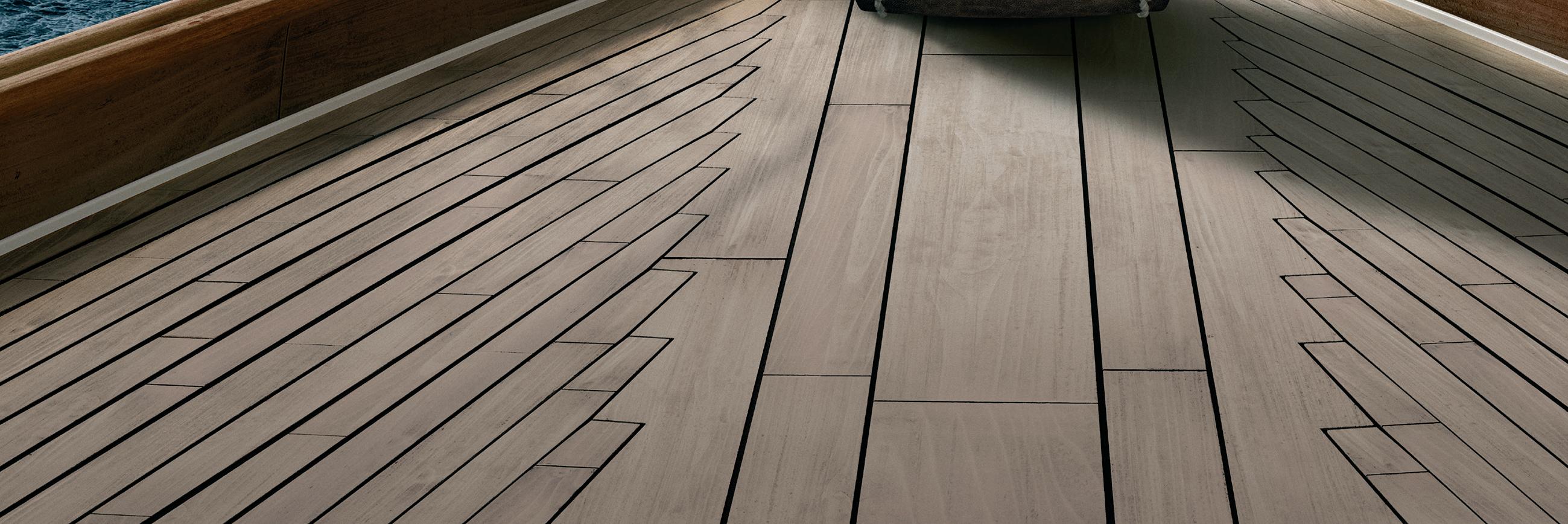

When I went to Melbourne with my two oldest friends recently, I made a pact. I was in charge of our itinerary and I was determined to mix things up. This trip wasn’t going to be a roll call of my favourite things.

You know what I’m talking about. A gimlet at Gimlet. A walk along the Yarra, past the rowing crews. Feasting on green papaya salad at Chin Chin or twirling linguine capri around my fork at Di Stasio Citta. There is so much to love about this city.
The morning walk took us around The G and into the surrounding gardens. I’d never stopped to look at the statues of the greats before. (And yes, we went to the footy – a first for me.)
We dined at Marameo, the newish “Italian dinner party” conceived by Joe Mammone, the man behind Il Bacaro (another city favourite) and Bar Carolina. He promises diners a “rollicking good time” and he delivers – our waiter even gave us a hug as we left.
The National Gallery of Victoria is no stranger to me but recent visits have tended to be dashes (and that is no way to experience art). You must get to the Pierre Bonnard exhibition, which is given an extra touch of whimsy by Parisian designer India Mahdavi. It’s the freshest thing I’ve seen in years.

And would it be a trip to Melbourne without booking into one of Andrew McConnell’s joints? His new cocktail bar, Apollo Inn, is small, dark and sexy. Order a dry Martini and the wonderful beef carpaccio (with a side of potato focaccia) from a team who love what they do and seem genuinely thrilled you are there to share the experience.
If you skip the Amaro Montenegro at Marameo (guilty) and perhaps forgo a second cocktail at Apollo Inn (ahem), all of the above will take you to Melbourne without breaking the bank.
Timely because this issue is all about affordable luxury. Or, as my mother would say, having your cake and eating it, too. Enjoy!
Kirsten Galliott Editor-in-Chief
kirstengalliott
Our writers are not armchair travellers. Rest assured any assistance we accept from the travel industry in the course of preparing our stories does not compromise the integrity of our coverage.





One of the things I always do when I’m flying is to check the name of the aircraft I’m on. Our pilots say each aircraft has a unique personality so it’s only fitting they get their own name. Over the years the names of Qantas jets have celebrated what’s great about Australia. From 747s named after capital cities to A380s that honour aviation pioneers, every aircraft name has a story to tell.
We’re thrilled that the first of our new Airbus A220s will arrive soon and we want your help in choosing their names. The A220s’ extended range means they can fly between any two points in Australia so we want to name them after our native species, which could be a frill-necked lizard, echidna or emu. (Clearly, we have the kangaroo covered.) Head to qantas.com/a220name for more information. Our wildlife is a major drawcard for tourists and, in the near future, a lot of the trips to see them will be on an A220.
We’ve also been busy planning long-term improvements to our network and it’s amazing to think that, by 2026, we’ll see Qantas and Jetstar aircraft taking off from Western Sydney International Airport. The Qantas Group will be there from day one, with up to five Qantas and 10 Jetstar aircraft based at the airport in its first year of operation. This equates to about 25,000 flights and up to four million domestic passengers annually. And that’s on top of our flights out of Sydney Airport.
We’re always looking for ways to make travelling with us better. The Qantas App is getting a major update to give passengers more booking flexibility and include baggage tracking. We’ve introduced refreshed menus with bigger serves and new dishes from premium Australian producers across all cabins and a $100-million expansion of our domestic and international lounge network is underway. We’re also rolling out fast and free WiFi on nine overseas routes while flying over Australia, with more to come. Our popular Neighbour Free seating is expanding across the domestic network and into our international flights.
Wherever you’re flying today, thanks for choosing Qantas.
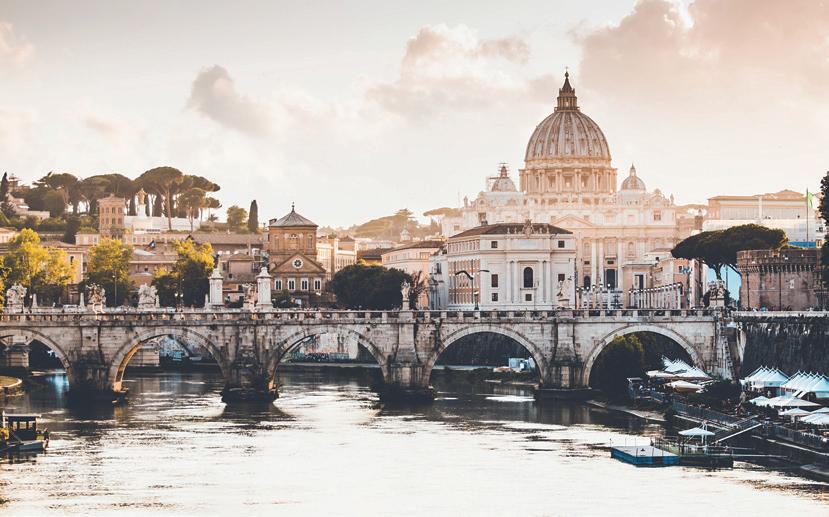
Seasonal direct flights from Perth to Rome are back for the Northern summer, operating three days a week on Qantas 787 Dreamliners until 3 October. One of the airline’s most popular international routes, it remains the only direct flight between Australia and Europe. From Rome, you can connect to 16 European destinations, while a “circle fare” means you can fly into the Eternal City and return from London on a single ticket. And flights for 2024 are already on sale.

Once onboard, connect your own device to Qantas Free Wi-Fi on domestic flights in three simple steps:
Enable Aeroplane Mode and select the “Qantas Free Wi-Fi” network in your Wi-Fi settings.
Follow the prompts on the “Welcome Onboard” screen to connect.
Once you’re connected, you’re ready to access the internet and start exploring.
Having trouble connecting? Make sure you’re connected to the “Qantas Free Wi-Fi” network and go to wifi.qantas.com in your preferred browser to start the connection process. To ensure an enjoyable flight for everyone, keep flight mode activated, switch your device to silent and refrain from voice and video calls.
We acknowledge the Traditional Custodians of the land on which we work, live and fly. We pay our respects to Elders past and present and are committed to honouring Australian Aboriginal and Torres Strait Islander peoples’ unique cultural and spiritual relationship to the land and water.

“Achieving excellence requires dedication. I’m proud of the hard work I’ve put in over the years and the relationships I’ve built.
Which is why it’s an honour to partner with a company that continually strives for excellence. LSH Auto Australia is dedicated to building trust. It’s the place for all your premium motoring needs, where the goal is to deliver an exceptional customer experience.”
Australia’s leading Mercedes-Benz retail group YOU

 Mercedes-Benz Sydney | Mercedes-Benz Melbourne | Mercedes-Benz Brisbane | AMG Sydney | Mercedes-Benz Melbourne Airport
Mercedes-Benz Sydney | Mercedes-Benz Melbourne | Mercedes-Benz Brisbane | AMG Sydney | Mercedes-Benz Melbourne Airport

Cocktails with a side of binoculars, robots at hotels and heated pools overlooking the city. There’s only one Big Apple but there are many ways to explore it, as these Qantas travellers tell.
Derrin Stent
Frequent Flyer Status: Silver
“My wife, Tracy, and I wanted to give our two teenage boys the New York City experience that they’ve seen in the movies. We stayed at Luma Hotel (hotel.qantas.com.au/lumahotel), which is right near buzzing Times Square. It’s very cool – a robot comes to your door with deliveries such as extra towels. The kids loved the Museum of Natural History, partly because of the film Night at the Museum . We also went to a Yankees game and ate large buckets of fried chicken and visited Bill’s Bar & Burger (billsbarandburger.com) in the Rockefeller Center. It was just like the TV show Cheers. We’ll never forget this trip.”

Frequent Flyer Status: Silver
“I lived in Manhattan for many years so I often go back, always flying Qantas and making sure to visit the International Lounges. The crew are so lovely and now that there’s a flight from Sydney, it’s going to make the trips even easier. I always squeeze in a run at Central Park – it’s an oasis in the middle of such a busy city. L’Artusi (lartusi.com) is a great hole-in-thewall restaurant in the West Village that you wouldn’t even know is there; order the pici nero, a pasta with crab, chilli, tomato and garlic. Manhatta (manhattarestaurant.com) has one of the best city views. It’s on the 60th floor of a Downtown building and you can get binoculars at the bar. Go at sunset – you’ll see Manhattan bathed in light from all angles. It’s perfect.”
Natalie Babic
Frequent Flyer Status: Bronze
“I went for a nine-day trip to visit my friend Bec and as soon as I landed, we headed out for Aperol Spritzes in the afternoon sun at Dante (dante-nyc. com) in the West Village. The street out front was shut down for a photo shoot – it was a very NYC welcome! Everywhere we ate was incredible: order the tonnarelli cacio e pepe at the quaint Sant Ambroeus (santambroeus. com) and the saganaki fondue at Lola Taverna (lolataverna.com), where the walls are covered in purple flowers – it’s stunning. You must visit the QC NY Spa (qcny.com) on Governors Island, too. Each outdoor pool is a different temperature and you relax in the water or on sun lounges while watching the Manhattan skyline. It’s bliss.”


Progress you can feel
The all-electric Audi Q8 e-tron. Arriving soon.
Equipped with fast charging and impressive range, the Audi Q8 e-tron is an artful combination of sophistication and electric performance — allowing you to confdently conquer the road ahead .



When you think about The Rocks district in Sydney, renowned for its rich convict history, it’s unlikely the idea of “Mediterranean seaside” springs to mind. Yet when you step off George Street and into labyrinthine Le Foote (swillhouse.com), the latest opening from the team behind Restaurant Hubert and Alberto’s Lounge, it starts to make sense: narrow passages and tucked-away courtyards, retro Euro posters and a monochrome Grecian-style mural. “The Rocks has so much heritage and history with its old cobblestones and it’s also quite close to the ocean,” says co-owner Anton Forte of the venue’s sun-and-salt concept. “There’s a symbiosis.” And then there’s the food. Simply dressed but perfectly cooked proteins such as swordfish and steak; a tangle of citrusy octopus tentacles exactingly charred. A lemon leaf ice-cream that beams with Sicilian sunshine and a wine list that draws on the ancient terroir of the Old World. Order an amaro soda aperitif to sip with your honey-glazed cheese pie, jump to pork and pistachio rillettes and then, perhaps, the crisp lamb belly with a party of endive leaves. Colonial Sydney-meets-Crete? Le Foote fulfils – and exceeds – the brief.
Hot hotel dining has hit the capital, with the launch of Louis (louisdining.com.au) inside the revamped Hotel Realm in Barton. The moody space, layered with marble and leather, its walls hung with gilt-framed art, is serving rarefied Provençalstyle dishes from the creative mind of one of Canberra’s best chefs, Ben Willis from the much-missed Aubergine.
Of course, a dining room inside a homewares store is going to look gorgeous. At Becker Minty in Hobart, the designer furniture and ceramics are chic but the real showstopper in the restaurant (bmdiningroom.com) is the rough-hewn rock wall draped with greenery. The food is triumphantly Tasmanian: sugarcured wallaby, Bass Strait scallops and local cheese boards.
It’s the luxuriant curries, rich with aromatics and structured around top-shelf proteins such as duck and barramundi, that are drawing the crowds to Adelaide’s new 40-seater, Thai Room (thairoom.com.au). The creative cocktails and strong spirits list, plus a snappy bar menu, make this place an excellent casual drink and snack stop.
After a two-year intermission, the fiercely loved Eau-De-Vie bar has blossomed back in the Sydney CBD, this time with a food-focused sidekick. The Sanderson bistro (thesanderson.com.au) sits upstairs from the main bar and has drama at its heart: tartares and crab salads are mixed tableside with theatrical flair and cocktails are set alight with a flourish.

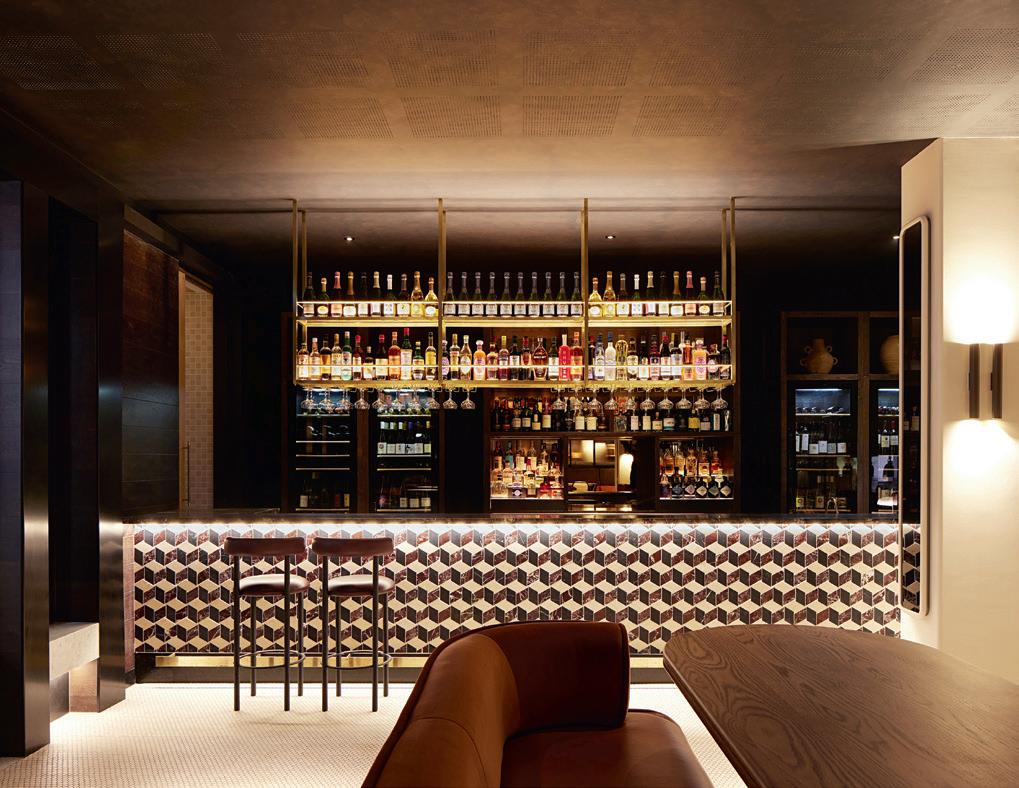
Waking on Sumba is like seeing colour for the first time. Hypnotic greens and blues pool in a halo at Weekuri Lagoon, on the north-west coast of the Indonesian island, a 90-minute flight from Bali. At Cap Karoso (capkaroso.com), a contemporary 47-room, 20-villa retreat, the colours roll in waves towards the stark white shoreline then creep onto land in landscaped gardens and topaz infinity pools.
Located on the beachfront near the remote village of Kodi, a 40-minute drive from Tambolaka Airport, Cap Karoso is part of a movement of lifestyle-led hotels that values experience at its core. A series of short excursions, such as a visit to the
nearby lagoon or a traditional village, means you can absorb the area without losing valuable time away from the hotel. The Beach Club, helmed by French chef Antoine Le Vacon, channels Ibiza’s mellow side, while communal-dining restaurant Julang invites guests to share a meal (such as a tasting menu featuring shellfish ravioli and Angus beef striploin) and conversation.
Owned by Paris-based Fabrice and Evguenia Ivara, the property – part of the Design Hotels portfolio – is a mash-up of food, art, music and wellness. There’s a rotating roster of renowned chefs-inresidence through the year, including Katsu Okiyama of Michelin-starred Parisian eatery

Abri. A one-hectare onsite permaculture farm provides fresh ingredients for the kitchen and holds workshops in agricultural methods to benefit the local community.
Clean lines and concrete merge harmoniously with stone, timber, glass and indigo textiles, while Malala Spa is housed in one of the island’s traditional thatched dwellings. Evguenia has gathered a gallerylevel collection of custom art, including a large-scale work by Sumbanese ikat master Kornelis Ndapakamang in the reception that took his team of 15 people four weeks to create. In one of the wildest parts of Indonesia, this new island getaway conjures delight in every detail.


The broadcaster, TV presenter, DJ and host of the award-winning podcast Tough Love has just added author to her talents with the release of her memoir, Love Language. Here, she reveals what inspires her.
INTERVIEW BY NATALIE REILLY PHOTOGRAPHY BY JESS GLEESON
The movie I saw recently…
Triangle of Sadness . I actually saw it twice – at the cinema and then I came home and it was on streaming services here in Los Angeles. I had to watch it again because the first time I saw it, I was laughing so much because it has just a buoyancy to it. But the second time I was able to get that sinister undertone as well as the grander philosophy around the way we live – the class systems and social media and elitism and all of that. So the second time I laughed less but felt a lot more.
The last TV show I binged…
I was in Bangkok the other week. I got home one night and I was sweating from being out on the streets having street food for about 12 hours. And I brought home this takeaway container full of mango and sticky rice and I was like, “I’m gonna sit on my clean hotel bed, eating my mango with a face mask on and binge-watch Wellmania .” I loved watching Celeste Barber trying to overhaul her life and the chaos that unfolds around that. I ended up watching six episodes in one hit.
The last podcast I listened to…
The New Yorker Fiction Podcast , where a famous author reads another famous author’s story that’s been published in the magazine. My favourite one has been Rebecca Curtis reading Confessions of a Shinagawa Monkey by Haruki Murakami. Just hearing the way that writers put together sentences to create imagery – I was really inspired by it. The voice of authors can be calming, too.
The last book I read…
I’ve just finished reading Bad Thoughts , the debut novel by Nada Alic. It’s a series of short stories that are really funny, biting and absurd, set in contemporary times about different women. They’re generally all in the first person. I just love the way she writes; it’s kind of mean and self-deprecating – really sarcastic. Another book I’ve just finished that I loved was this Black Mirror-style dystopian novel called Bliss Montage by Ling Ma. She’s the Chinese-American author who wrote the book the TV show Severance is based on and she’s so clever at putting together dark, surrealist worlds.
At Viking, curiosity is in our DNA. So we’ve made exploring an art form.
Our modern fleet and dedicated crew take you deeper into the world’s greatest destinations, offering a new level of comfort and contentment for true explorer spirits.

For a limited time, receive up to $2,000 flight credit per couple on 2024 or 2025 ocean bookings made before 28 August 2023 – quote ‘OC10’ when booking.


A 30,000-bottle cellar, the biggest restaurant garden in Australia and cottages almost too lovely to leave.

The four newly refurbished heritage bluestone cottages at the Royal Mail Hotel in Dunkeld, three hours west of Melbourne, make it tempting to bunker down indoors. They’re cosy, with leather sofas, a roaring fireplace and a “sommeliers bar” stocked with wines from the property’s extensive cellar. But allow yourself to be drawn
outside, where peach-pink skies break into dawn over Mount Sturgeon (Wurgarri) while kangaroos and emus graze on the grasslands below.
The Royal Mail’s (hotel.qantas. com.au/royalmailhotel)
Mountain View and Courtyard
rooms are convenient if you want direct access to the property’s pool and restaurants (including the two-hat Wickens fine-diner) but the freshly upgraded Deluxe Mount Sturgeon Cottages, a short drive away, are the pick for country tranquillity. The buildings originally belonged to settler shearers and inside the
original water tanks, you’ll now find contemporary curved bathrooms.
There are kitchen gardens and then there’s the restaurant Garden of Eden at the Royal Mail, which is the largest of its kind in the
country. Everything from cranberries and turmeric to some 65 varieties of tomatoes are grown here – and all of it makes its way onto plates. The five- or eight-course dégustations at Wickens are where you’ll taste the garden in its most refined form: one course might be snails with powdered sunflower leaf; another, Dunkeld banana frozen yoghurt (yes, the gardeners have even found a way to grow bananas in Victoria) with rum caramel. Don’t overlook the Mail’s more casual option, Parker St Project, where executive chef Robin Wickens gets playful, serving onion and thyme milk bread with lashings of butter and Vegemite.
mammals, including quolls and bandicoots. Book a tour of their habitat and, if you’re lucky, you’ll spy Bruce the rufous bettong scuttling through the undergrowth. A tasting at the hotel’s vast cellars is a chance to see the Southern Hemisphere’s largest bordeaux and burgundy collection up close but you can also sample wines from small-scale local producers, such as pinot noir from Pierrepoint Estate.
The property operates a conservation program for endangered Australian
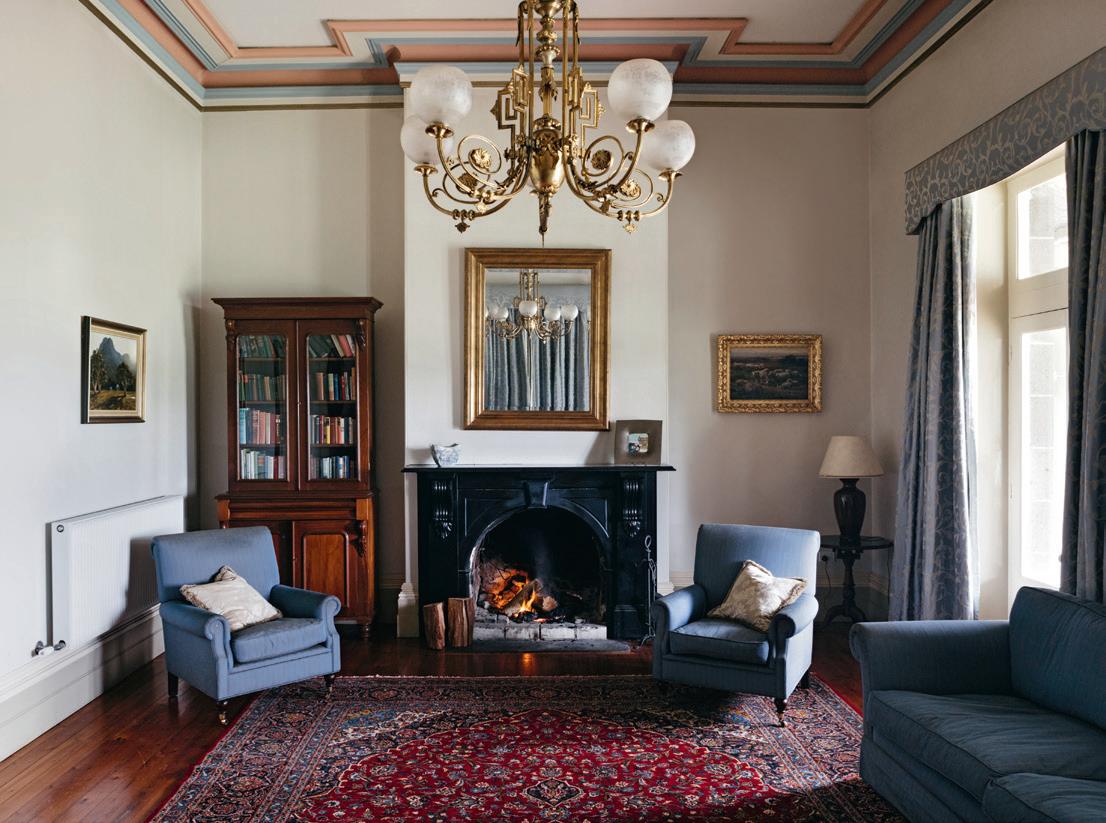
As the only venue in Australia to partner with French winery Château d’Yquem, the Royal Mail offers guests exclusive previews of new vintages by the glass. When added to a Wickens dégustation, the prized sauternes is matched with a bespoke savoury dish rather than the usual dessert or cheese.
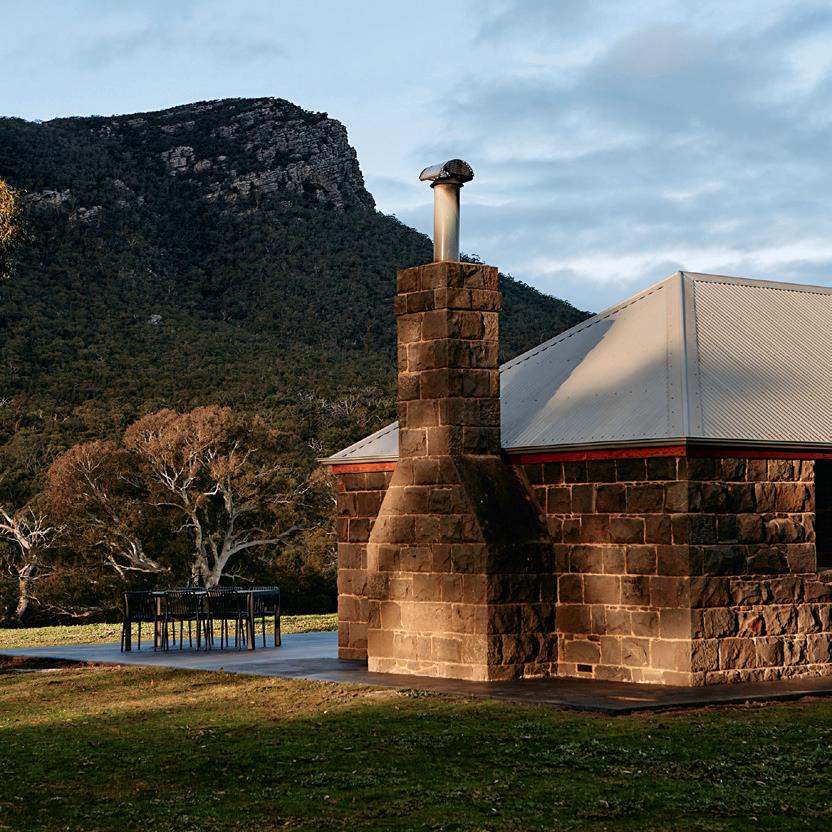

During his career at The Australian Ballet – first as a principal dancer in the 1980s and later as artistic director for two decades – David McAllister danced with the Bolshoi Ballet and Birmingham Royal Ballet. At 59, he bares all about life as a dancer and his critically acclaimed career (plus a few behind-the-scenes romances, too). Titled Ballet Confidential, the beautifully packaged memoir has been described as an “in-depth exploration of the gritty and glamorous world of professional ballet by one of the most celebrated artists of our time”. In bookstores now.
English director Tom Harper (Peaky Blinders) knows the action-spy genre is already crowded. James Bond Mission Impossible The Bourne Identity But it’s crowded with men
(and middle-aged ones at that). Heart of Stone, starring Wonder Woman’s Gal Gadot (above, right), promises to shake up the well-worn narrative of 50- and 60-something blokes jumping off buildings. Gadot plays Rachel Stone, a secret agent – and the only woman – working for an underground organisation. And although there are plenty of leaps and bounds, there’s also a humanity underpinning Rachel that’s not often seen in the current crop of spy movies (or shows such as Killing Eve). Out 11 August on Netflix.
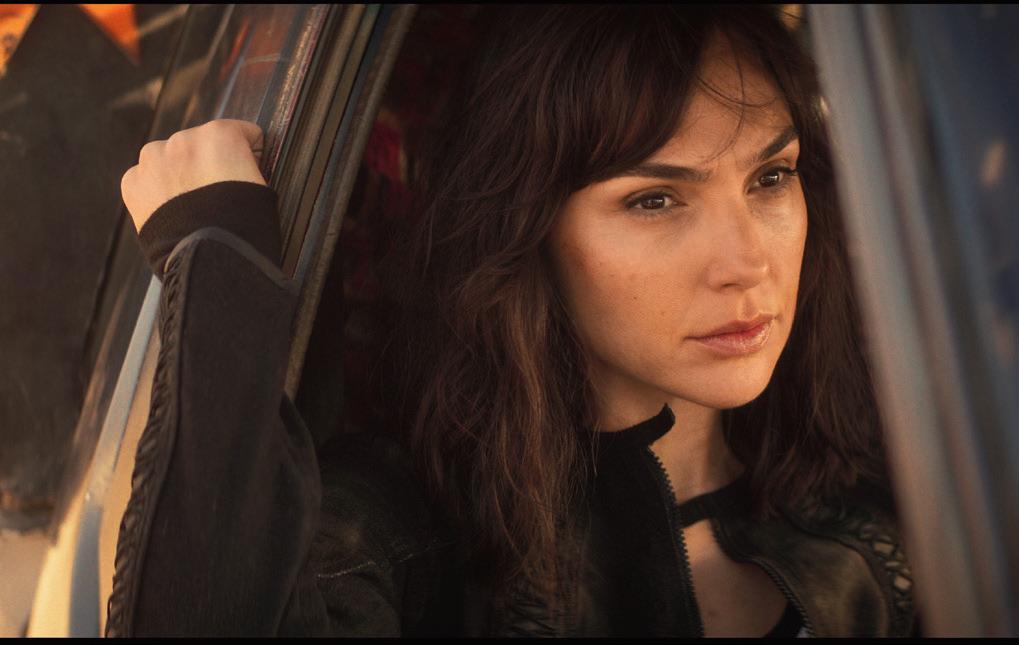
Saturday Night Live ’s breakout star, Bowen Yang, best known for his hilarious impersonation of the iceberg that sank the Titanic (watch it on YouTube, you’ll never recover), has hosted the award-winning podcast Las Culturistas (above, left) with his best friend, comedic actor Matt

Rogers (I Love That for You) since 2016. It’s an unapologetic deep dive into the nuances of pop culture, featuring guests such as Oscar winner Michelle Yeoh and Will & Grace ’s Sean Hayes, plus detailed dissertations on everything from classic films to Real Housewives. It’s little wonder The New Yorker calls it “both acidic and warm, like a steaming cup of Tang for the mind”.
Amid all the buzz around stealth wealth and “quiet luxury” taking over fashion (we’re talking bland suits, logo-less clothing and black polonecks), there’s one item that refuses to go quietly: the big, brand-name tote bag. Though an oversized Burberry carryall was famously maligned by Tom in Succession , the logo tote is proving an accessible and bold vehicle for brand awareness. As well as Gucci’s pompom version, there’s Marc Jacobs’ cheeky
canvas offering, Prada’s crochet iteration and the Loewe tote (above, $2850; loewe.com) – huge among certain Euro-summerholidaying starlets, including Aubrey Plaza (The White Lotus), who is a Loewe spokesmodel.
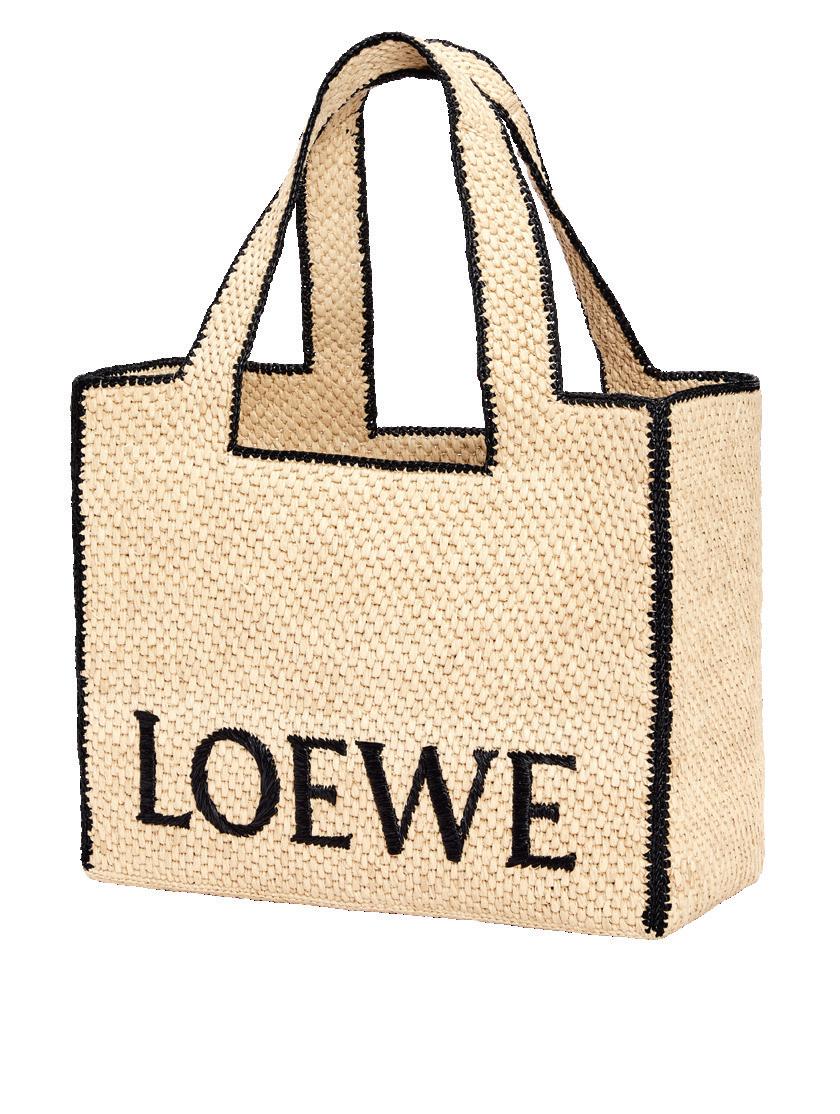
Toners, traditionally used as an astringent to mop up residual cleanser (leaving skin tighter than a drum), have had a makeover. Korean company Laneige has formulated a two-in-one toner/moisturiser called Cream Skin (from $21; sephora.com.au) that uses Cerapeptide, a combination of ceramide and peptide, which is said to strengthen and firm the skin. Closer to home, Aussie company Go-To has launched a trio of Exfoliator toners – one to minimise dullness, one to clarify clogged pores and one that claims to minimise fine lines ($40 each; gotoskincare.com).
We’ve scanned the zeitgeist for what to read, watch, wear and listen to now.
COMPILED BY NATALIE REILLY




The Artisan Series consists of 50 one-of-a-kind pieces to commemorate each year of Linneys’ storied history. Hand-crafted using incredibly rare Argyle pink diamonds, this collection celebrates the unique natural beauty of WA’s most prized gems. Each piece not only offers the owner an item of exceptional rarity and value, but also the privilege of becoming the custodian of one of nature’s most exquisite gifts.





 Lovers in the Kimberley #6
Lovers in the Kimberley #6
“What have the Romans ever done for us?” is the question posed in Monty Python’s Life of Brian . Well, apart from introducing the world to aqueducts, gladiators and formidably straight roads, they’ve also provided the inspiration for the Bulgari Octo Roma. The eight-sided case design of the watch was purportedly influenced by the octagonal motifs found on the ancient vaults of the Eternal City’s Basilica of Maxentius. Fast forward a couple of thousand years and the newly upgraded Octo Roma doesn’t so much walk the line between sportiness and sprezzatura as zip along it on a shiny red Vespa.
Defined by the cascading facets of a design that comprises an octagon topped by a circle, the elegance of this 41-millimetre stainless-steel case is backed with 100-metre water resistance.
Available in three colour options – grey, white or blue – the dial is enlivened with hobnail patterning for textural interest.
The Octo Roma is packaged with a slinky bracelet in stainless steel along with a soft rubber strap. A simple click of the pusher on the back allows you to switch them up with ease.
Visible through the open caseback, the in-house automatic movement propels time and date functions, backed by a 42-hour power reserve.
Bulgari Octo Roma automatic, water-resistant watch in stainless steel / $11,400 / bulgari.com

Rise and shine? This bejewelled ring takes that sentiment to another level. Designed to evoke the sun at dawn, its glittering centrepiece is a rare Argyle pink diamond surrounded by vivid yellow sparklers to represent the first rays of daylight.
Musson Aurora Argyle pink and yellow diamond ring / $305,000 / musson.com.au

Australia’s only elite introduction agency for gay gentlemen is celebrating 10 years of finding long-lasting happiness for our clients, both locally and internationally. Beau Brummell Introductions personally matches men at all stages of life who share a desire for genuine relationships and the chance to build a family.

Time-poor professionals, it’s time to outsource your love life to a caring team who’ll uncover that one exceptional individual who could change your journey forever.
Ph 1800 889 991 — beaubrummellintroductions.com
Beau Brummell Introductions founders Vinko Anthony and Andrea Zaza, photo by Sealeybrandt.com
The enfant terrible of the global arts scene promises to again shake up the establishment with an eclectic, entertaining calendar of acts.
An early playground for actors Jude Law, Emma Thompson and Judi Dench, the Edinburgh Festival Fringe (edfringe.com) is famous for launching careers. “For a creative, the festival is one of the most unique places on the planet to launch work, meet other artists and be discovered by audiences,” says Fringe Society honorary president Phoebe Waller-Bridge, whose one-woman play debuted at the festival in 2013 and went on to become the critically acclaimed television series Fleabag
With this year’s line-up boasting nearly 3000 acts across hundreds of venues, it’s not so much a question of if the next big thing will be discovered at the world’s largest performing arts festival but when .
British comedian and writer Barry Ferns will present Arthur’s Seat Comedy Extravaganza at the city’s most iconic location, atop the summit of Edinburgh’s dormant volcano (Arthur’s Seat), while international blues star Giles Robson will be joined by local guitarist Sandy Tweeddale


for Up Close with the Blues at Ryrie’s Bar. RuPaul’s Drag Race UK winner Lawrence Chaney will cover everything from dating and exercise to having to buy two seats on a plane in Overweight and OVER IT! while disability-led theatre company FlawBored’s scathing satire on exploitation and identity politics will spare no-one in It’s a Motherf**king Pleasure. Every artistic whim – from cabaret to comedy, dance and rap orchestra – descends on the city from 4 to 28 August, breathing creativity and rebellion into the Scottish capital.
Can’t get there? Tune into a calendar of online events via the official website.


Red mullet cooked over coals, hand-dived Orkney scallops and Hopetoun Estate venison are just a few of the local ingredients on the seasonally shifting menu at understated eatery Heron (heron.scot). Located in the harbourside foodie hub of Leith and helmed by culinary wunderkinds Sam Yorke and Tomás Gormley, the recent addition of a Michelin star to the restaurant’s name means that everyone is clambering for a seat, so book ahead.
Once you’ve finished dinner overlooking the harbour, venture onto the water for an overnight stay you’ll never forget. Fingal – a former Northern Lighthouse Board tender ship now docked in the historic Port of Leith –has been reimagined as luxury accommodation and now boasts glossy, Art Deco-inspired furnishings and a sunken ballroom (fingal.co.uk). The 22 comfortable cabins, each one named for a different lighthouse, are decked out in sea-green, deep burgundy and just enough tartan to remind you where you’re sleeping.




















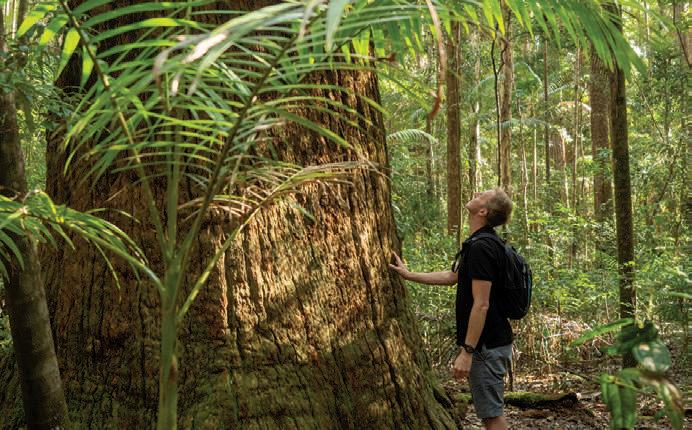
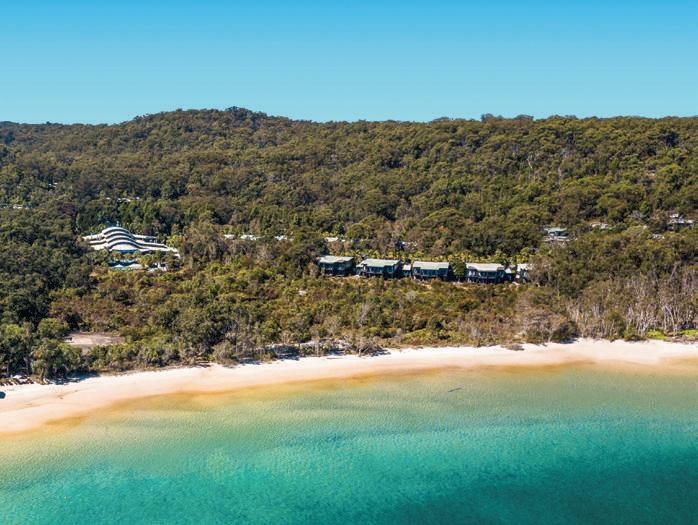
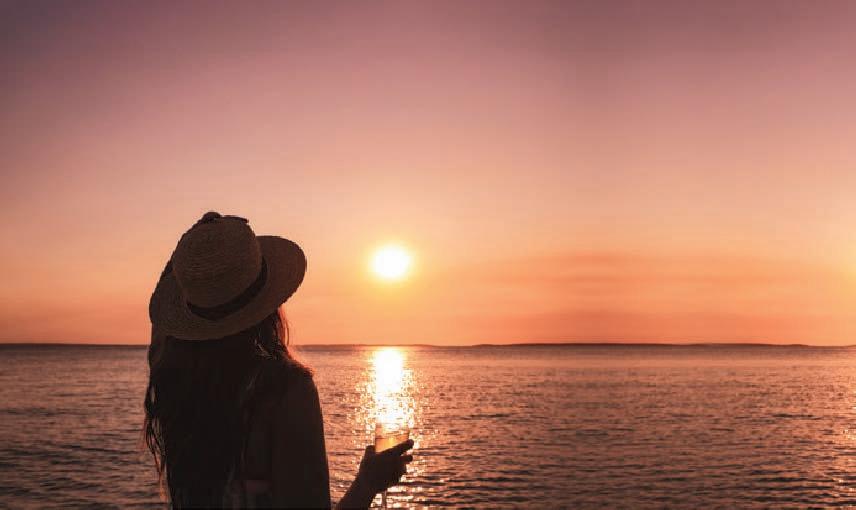
From the latest novels to classic books worth discovering, these are the page-turning picks for the month.

One of the books I’ve bought again and again as a gift is Ann Patchett’s Bel Canto, a romantic, suspenseful and tender wonder. So a new Ann Patchett novel has me rushing to the bookshop. And Tom Lake doesn’t disappoint. Three adult daughters facing various challenges and fears in their own lives return home. They hear their mother’s stories about a time before they were born, a romance with a man and with the world of theatre. Stunning.

Remember the name Peter Polites and his new book, God Forgets About the Poor It’s his third novel and he deserves to be recognised as one of Australia’s most exciting writers. The satire and sharpness of his earlier books is on ample display here but they’re leavened by deep love as he turns his considerable skills to sharing his mother’s story. “A son can never see his mother as a woman,” he writes. This novel contradicts that claim powerfully.
Before he became a leading advocate of climate action, Tim Flannery was a respected palaeontologist. Long before that, he was a boy on a beach, uncovering the fossilised tooth of a giant shark at Port Phillip Bay.
The shark was a megalodon – Big Meg – a 15-millionyear-old super-predator. Now he and his daughter, scientist Emma Flannery, tell the extraordinary story of a fascinating piece of natural history in Big Meg: The Story of the Largest and Most Mysterious Predator That Ever Lived.

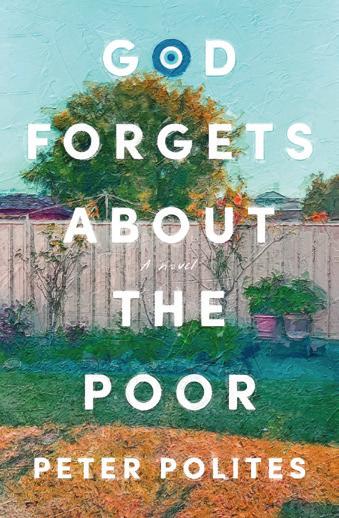
The death of satirist John Clarke in 2017 was a colossal loss to Australian media, culture and public life. Clarke’s sharp intellect and boundless capacity for both silliness and insight made him one of our most beloved figures. But he was also a private man and his daughter Lorin Clarke shares the experience of living with him in Would That Be Funny?: Growing Up With John Clarke, a generous, intimate, very funny account of her dad and a deeply sad story of family love and loss.

Bila Yarrudhanggalangdhuray (River Dreams) by author and academic Anita Heiss is only a couple of years old but she is a wonderful writer with many books to her name (including some outrageously fun romantic comedies). This novel, set on Heiss’s Country on the banks of the Murrumbidgee River, is devastating and a complete triumph. An antidote to the lies of national mythology and an essential read for all of us.
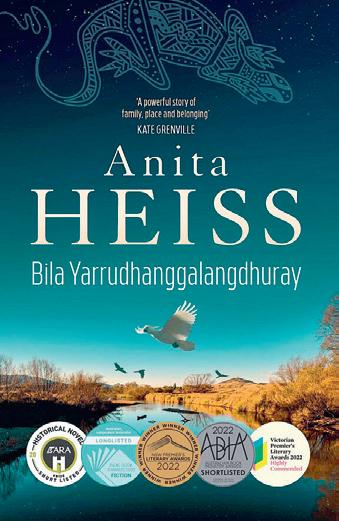
Nestled in Queenstown’s elemental splendour, the exclusive waterside community of Lake Tewa is taking shape beneath the Remarkables, at Jack’s Point. This idyllic waterside village features eight figurehead villas perched on Lake Tewa’s placid shores, each secluded sanctuary with its own private water access. Nearby, innovatively concepted alpine residences cluster amongst parks and gardens. Designed by internationally awarded architects this waterside concept also ensconces boutique Hotel Tewa, a destination unto itself with premium retail, dining, spa and wellness centre. All next to New Zealand’s premier golf course, best vineyards and ski fields.

+64 21 588 672
laketewa.nz
willie@falconer.nz
+64 21 24 47630
julia@falconer.nz
For its final iteration of the iconic luxury sports car, the British marque has just launched two very special models.
So this is the end of the road for the F-Type? Sadly, yes. If you’ve been dreaming of a new F-Type, it’s your last chance. From 2025, Jaguar will be an all-electric brand so these special editions, celebrating the 75-year lineage of Jaguar sports cars, are the iconic brand’s swan song. What’s new? Mostly exterior and interior design bits that amplify the sophistication and style but retain the F-Type’s cool aggression. These include 20-inch gloss black wheels, Windsor leather seats and some new colour choices, including the chic 75th-anniversary-exclusive Giola green. Eagle eyes will notice that the badge accent colours are now black and grey (instead of red and green). Is the iconic V8 engine the same? Yep! Jaguar wanted the F-Type to go out with a bang so the specifications have been narrowed to reflect the iconic two-seater in its best form. So while the V6 option is no more, the supercharged 5.0-litre V8 engine is as good as ever. Does it still sound incredible? Absolutely. The F-Type’s signature throaty rumble lives to sing once more. And yes, it does come with a quiet start mode for those preferring a discreet getaway. How does it drive? Planted, agile, dynamic and addictive. The F-Type is a pure driver’s car and this final iteration has been meticulously tuned so that every element, from the double-wishbone suspension to the torque vectoring by braking, aims to enhance the driving experience and inject a special sense of thrill, connection and responsiveness into every drive. I want one. What are my options? There are three body choices: F-Type 75, a 331kW/580Nm-producing P450 V8 rear-wheeldrive convertible or coupé (from $188,450 and $183,200, plus on-road costs); or F-Type R75, a 423kW/700Nm P575 V8 all-wheel-drive coupé (from $284,550). jaguar.com.au

The best leaders navigate an unpredictable and competitive global environment through continuous learning. Our Executive and Senior Executive MBA programs bring together the sharpest minds in business in a unique way with minimal disruption to your responsibilities and schedule. Australia’s most influential network, united by a motivation to succeed, awaits.

Join a cohort with 10+ years management experience
10 nine-day residential modules over 18 months
Overseas modules and business projects in South Asia, Europe and North America
Commencing April 2024
To find out more, visit mbs.edu/executive
Join
Overseas module and business project in South Asia
Commencing April 2024

In 2019, Pleasant State CEO and co-founder Ami Bateman was suffering daily headaches. “I would use a cleaning product that had ‘organic’ in the name and I’d spray it in my home and my headache would escalate to a migraine,” she says. Thus began her mission – together with co-founder Sian Murray – to create a “just add water” cleaning range that was not only healthy but also zero-waste and, crucially, actually worked (pleasantstate.com).

“When I finally found a chemist to try and make the products, he said, ‘I can do two but I can’t do all three,’” she says, laughing. “So I told him, ‘You’re going to do all three.’ And he did. He later admitted it was the toughest gig he’s ever had.”
The result: Australia’s first concentrated cleaning bars that dissolve in tap water (think Berocca but for your kitchen bench). They’re compact enough that a pack of 15 – which can be delivered in a five-centimetre-deep box half the size of a sheet of A4 paper – will last an entire year. Plus, customers receive 25 per cent off future orders when they subscribe for refills.
“Pleasant State is Australia’s first B Corp certified cleaning brand and to date, we’ve saved more than 150,000 single-use plastic bottles from going to landfill,” says Murray. “We’ve also generated more than 75,000 litres of toxin-free cleaning solution and we donate 1 per cent of all sales to [environmental organisation] Take 3 For The Sea, which is more than $45,000 since launch.”
Pleasant State products are now in 20,000 homes across Australia and New Zealand, with daily sales averaging more than $3500 and the million-dollar revenue mark surpassed in well under two years. But as exponential as growth has been, Bateman and Murray are in agreement: this is just the tip of the iceberg. “We’re ready now to take on retail,” says Bateman. “We plan to go mainstream and get our products closer to where our customers are shopping day-to-day.”
To facilitate this jump, former Unilever CFO and current Carman’s Kitchen COO Wendy Rattray has joined the team in an advisory capacity, as has Mathew Nelson, EY’s Oceania chief sustainability officer. “We’re supported by amazing people,” says Bateman. “Combined with our customer support, we’re really excited for the impact we’re about to make.”
This clean, green duo is on a mission to reduce our use of plastics and toxins, one household at a time.Co-founders Ami Bateman (left) and Sian Murray
Package your stay with flights and save. Book at qantas.com/ holidays
Presented by
Swim in the turquoise waters of the Great Barrier Reef or stay at Sydney’s most luxurious new hotel. Your next getaway is calling – and you’ll find it at Qantas Hotels and Holidays

Where
HOLIDAYS
Receive premium inclusions packed with value when you book at qantas.com/ luxuryholidays

Just a 45-minute boat ride from Cairns – in the middle of the Great Barrier Reef Marine Park – is Fitzroy Island. Much of this lush green isle is a national park, with a small corner dedicated to Fitzroy Island Resort Book an Island Suite to relax on your private balcony or a Welcome Bay Suite on the top floor. Then spend your days snorkelling, scuba diving and hiking nature trails.
Visit Sydney’s newest grande dame
After a seven-year restoration, Capella Sydney at Circular Quay has opened and it is luxury with a capital L. Four storeys were added to the historic sandstone building, as well as an indoor pool surrounded by copper-lined heritage lanterns. Rooms and suites – awash in neutral tones and marble – come with deep soaking tubs, Italian Frette linens and Haeckels amenities. Planning a stay? Bundle your hotel and flights with Qantas Holidays to pack in more value – or better yet, save your money and use Qantas Points to book.


Stay three nights for two people from $785 or 93,079 Qantas Points

Save 55%
When you book with Qantas Luxury Holidays, you’ll receive:
Daily à la carte breakfast
A two-course dinner at Zephyr Restaurant
Welcome cocktail per person
Return ferry transfers from Cairns
You can book selected Qantas Luxury Holiday stay packages through Qantas Holidays with a minimum 20% deposit, paid in cash or using your Qantas Points. You’ll then pay the balance closer to the date of your stay. 3
This under-the-radar prefecture, just two hours from Tokyo by bullet train, won’t stay secret for long.


At the secluded Satoyama Jujo hotel (en. satoyama-jujo.com), you know you’re in for something special when dinner kicks off with a shot of “snow spring water” tapped from a maple tree only metres from the inn. “You’ll taste sweetness and something flavourful from the forest,” says chef Keiko Kuwakino. The nine-course feast at Sanaburi restaurant may include the wild bitter vegetable fukinoto soaked for three weeks and turned into ice-cream and lotus roots hand-ripped from the bottom of a frigid pond but it’s the plain boiled rice that’s touted as the highlight. Thanks to the heavy Niigata snowfalls, mineral-rich water flows from the mountains postwinter to grow Japan’s number-one koshihikari rice. “Foreigners don’t understand why it’s so special when it’s just rice but it’s our identity,” says
Kuwakino. Afterwards, roll into the open-air onsen to admire the Milky Way. The award-winning 13-room property in Minamiuonuma is centred around a 150-year-old building with wooden beams and warm lantern lights. Nab room 202 or 301 for the best views of Mount Makihata from the private, always steaming balcony baths.
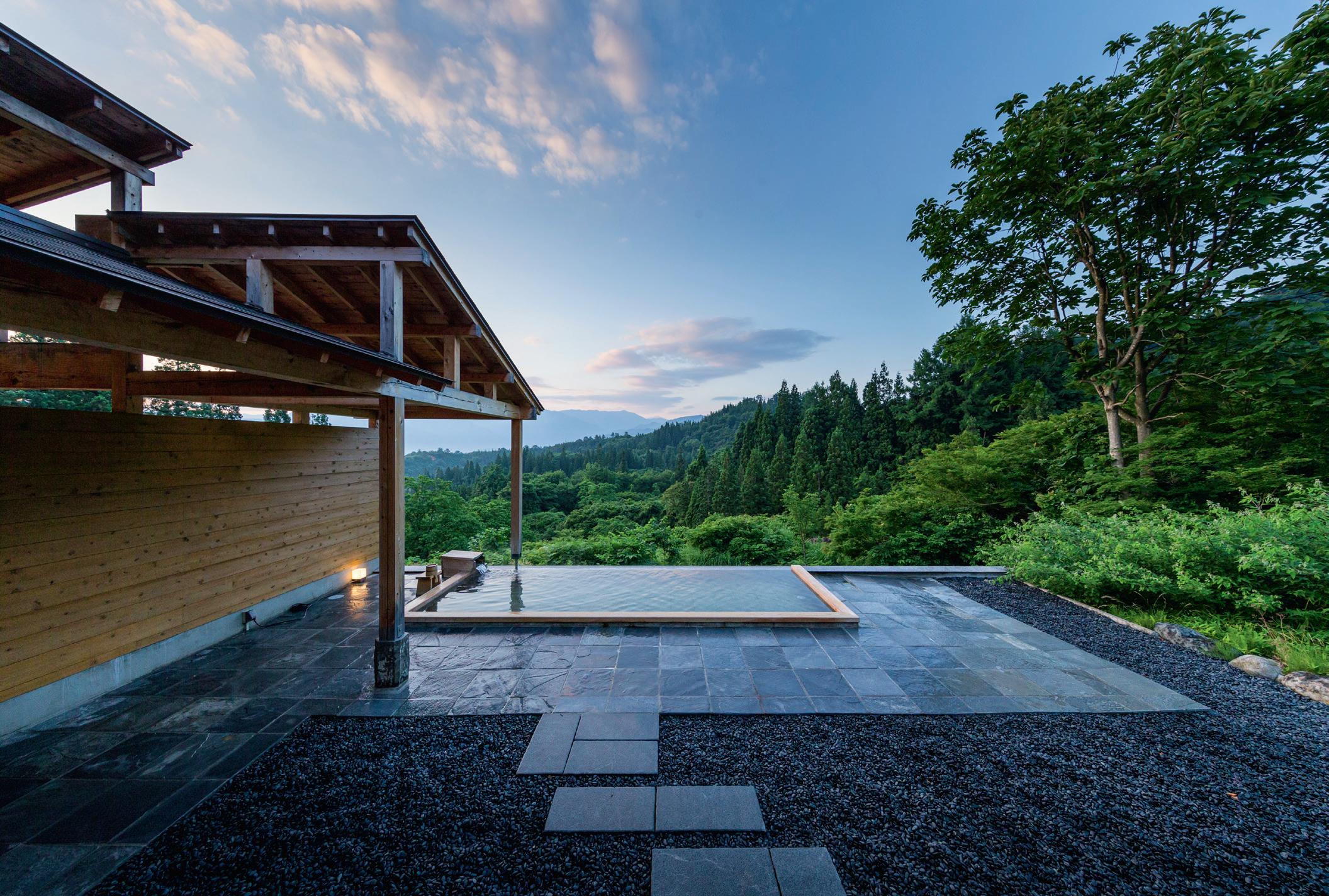
If you prefer your ski resorts sans the uncomfortably cold weather, Ishiuchi Maruyama ski resort (ishiuchi.or.jp) has you covered. Last August, the resort, 10 minutes from Echigo-Yuzawa train station, opened The Veranda, with a café, terrace and six dome tents – seethrough polycarbonate igloos equipped with butterfly chairs, heating and wi-fi. Take a seven-minute ride to the summit
in a Sunrise Express gondola and hire a dome for an hour or two to appreciate the panorama across the Uonuma plain. At sunset, pull up a perch on the terrace and watch as the silver-white Echigo Mountains turn crimson. Or keep skiing – half of the 24 courses are lit until 8pm.
About 150 years ago, when Niigata Prefecture had the largest population in Japan, its port city was a major trade hub. Back then, Niigata City’s Furumachi was a bustling entertainment district and it still has some of the old-town ambience. Step back in time at the two-Michelinstarred restaurant Nabejaya (nabedyaya. co.jp), which opened in 1846, and let the geisha, known locally as geigi, entertain you. For some of the best sushi in town, hunt down the hidden alley entrance to
Kyodai Sushi (kyodaisushi.gorp.jp). And
Amid the cacophony at the Gyokusendo workshop (gyokusendo.com) in the city of Tsubame, artisans on wooden stools hammer out copperware the same way they did when it opened more than two centuries ago. A seamless teapot fashioned from a single copper sheet carries a ¥700,000 price tag but it’s a three-month process and a craft that takes more than 10 years to master.
“Some customers have been using our copperware for three generations,” says Gyokusendo’s Matthew Headland. The twin cities of Tsubame and Sanjo are well-known for their metal tools and
tableware. Victoria Beckham apparently swears by her Suwada nail clippers, produced in Sanjo.
When you have hundreds of dried salmon hanging above your head, you notice their cranky faces (apparently they turn savage when they go back to the rivers where they were born). In Murakami, the castle town’s favourite fish almost became extinct 250 years ago, until a samurai explained the salmon’s life cycle. “The salmon is so special that we don’t want to waste even one piece. That’s why there are 100 dishes, not only meat and eggs but guts and bones,” says Shinji Kikkawa, the 15th-generation owner of historic salmon shop Kikkawa (1-20 Omachi, Murakami-shi, Niigata; +81 25 453 2213). At Izutsuya restaurant
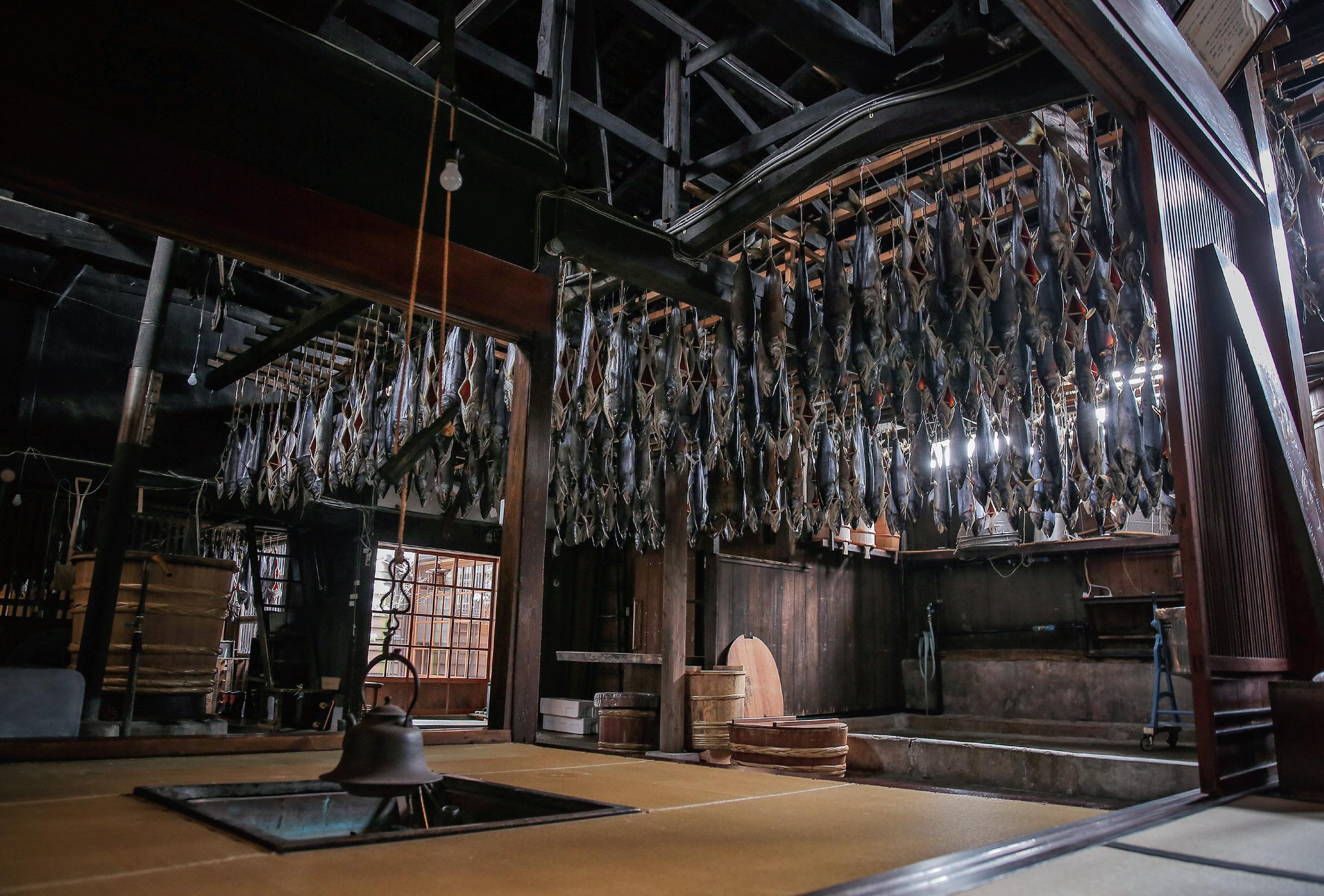
across the road, you can try every bit of the fish, including salmon testes that taste like salted caramel and look like guitar picks. No wonder those fish are grumpy.
For a hit of Japanese and international contemporary art, head to the Museum on Echigo-Tsumari (MonET; echigotsumari.jp) in Tokamachi, staffed by players from the local women’s football team (captain Misato Ishiwata runs the gift shop). In the heart of the 760-squarekilometre Echigo-Tsumari Art Field –more than 200 artworks across rice terraces, forests and abandoned buildings – the MonET has an outside pool that reflects the sky and architecture around it. “The building is an artwork in itself,” says the football forward/PR officer Kisa Mori. In summer, kids can paddle in the
water, while adults enjoy the works inside, such as Movements by art collective [mé], which features hundreds of metal clock mechanisms suspended from the ceiling to look like a flock of starlings.
Where there’s quality rice, there’s quality sake, which explains the 90 sake breweries in Niigata Prefecture. The handiest is Imayo Tsukasa (imayotsukasa.co.jp), established in 1767 and only a 15-minute walk from Niigata train station. With a day’s notice, they’ll give you a free English-language tour of the brewery and, failing that, there’s a comprehensive brochure and audio guide. Check out the finished product with two free samples or pony up ¥1000 for a premium tasting, choosing from at least 10 sakes. The award-winning KOI – with its orange-
and-white carp-like bottle design – is a cracking place to start. To try drops from every Niigata brewery, head to the Ponshukan store at Niigata, Nagaoka or Echigo-Yuzawa train stations. From its famous vending machines you can get five tokens for ¥500 to sample five cups of sake. You can even take a sake bath at the Echigo-Yuzawa branch.
Originally established to revitalise the depopulating rural area in 2000, the Echigo-Tsumari Art Field and Triennale comprise festivals, guided tours and seasonal exhibitions all year round. (Kids will love snowshoe trekking and mushroom foraging.) You can even stay overnight in Serbian artist Marina Abramović’s Dream House, a transformed, century-old mountain cottage. Don
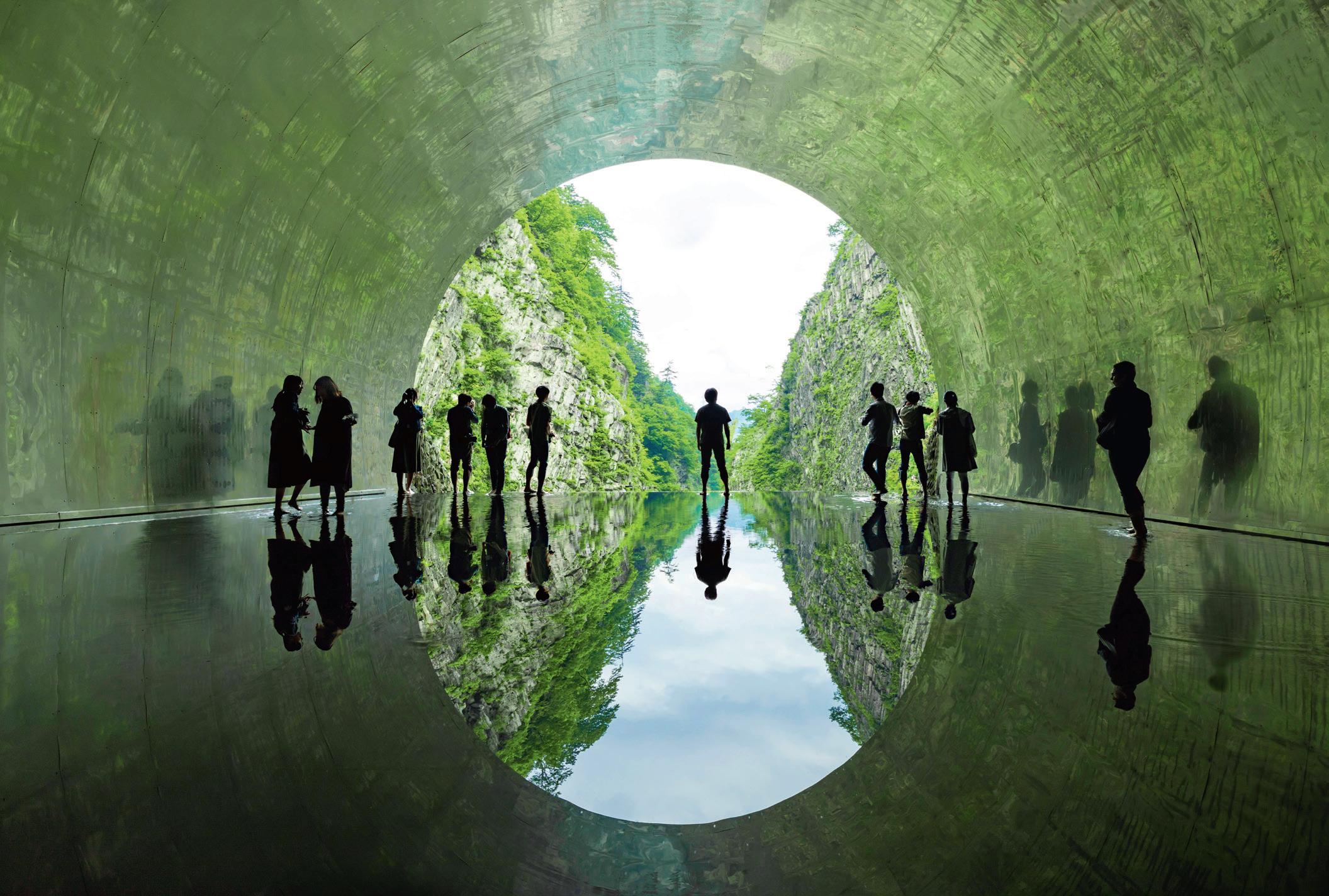
a sleep suit and hop into a bed specially designed for the project then document your dreams in the Dream Book the next morning.
Lie back in Rankeisou’s alfresco onsen (rankei.com) and let the rushing crystal-clear Sumon River lull you into relaxation. “This salty water will heal your scratches or burns,” says inn owner Yukari Ootake, whose husband’s greatgrandfather discovered the hot springs a century ago. “And if you drink it, it’s good for the stomach.” The water has an umami flavour, making the “hot spring porridge” here a breakfast hit. For dinner, try the historic 17-room property’s carp sashimi, sweet potato brûlée and aged Wagyu beef cooked on a hot stone at the table.










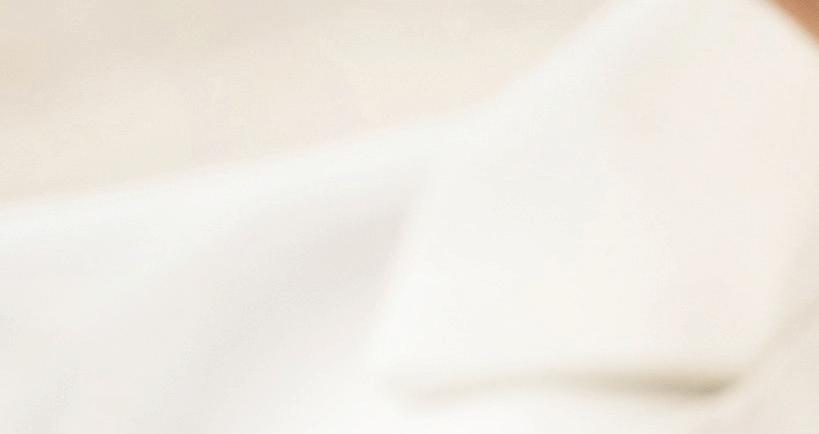



What keeps a restaurant popular for decades? It’s quality, consistency and community at these Australian stalwarts.

When the Singh-Sandhu family opened Indian restaurant Jasmin (jasmin.com.au) in Adelaide in 1980, there was a Coke machine in the middle of the dining space for decoration. The menus were written on a typewriter and the matriarch, Anant Singh, cooked tandoori chicken in a regular oven because she couldn’t purchase a tandoor anywhere in Australia.
“I went out and bought four teapots and six plates and a mismatch of everything else,” says Mrs Singh’s son, Amrik, who was a university student at the time and now manages the restaurant along with his sister, Sheila. “I remember it so fondly. We had no restaurant experience at all but it was so fun.”
It was more than just fun: Jasmin was a roaring success. “We opened in January and by Easter it was so busy, I couldn’t believe it,” recalls Singh. “People on holidays, people visiting family in Adelaide, the locals. The community was amazing.” Soon, word was out. The restaurant became a favourite of the visiting Indian cricket team when they were in town. Elton John stopped by during a tour, asked for “the hottest thing on the menu” (“I was worried we’d kill him!” laughs Singh) and loved it so much he came back the next day. Comedian Billy Connolly claimed that he’d sometimes cut his Adelaide shows short so he could snag a table before closing time. And British chef Marco Pierre White tells anyone who’ll listen that it’s the best Indian food he’s ever eaten.
Today, the Coke machine and makeshift cutlery are long gone, replaced by elegant timber furnishings and paintings by Australian artist Tom Gleghorn (who, aged in his late 90s, is a long-time Jasmin customer). But the true heartbeat of Jasmin remains: the loyal locals. “We have one couple in their 80s who comes in every Thursday night at 7:30pm and they are truly the most wonderful people,” says Singh. “Sometimes it feels like we’re throwing a dinner party in here. It’s lovely.”

a lot.
Stay at the best of the best. Sydney’s #1 hotel on Trip Advisor. Little National Hotel rises above Wynyard Walk, moments from everything that defines the city. With a private rooftop lounge and bar, workspace, super-king plush beds, wellness centre by Technogym and more.



For business or leisure, Little National has it all in a heartbeat.
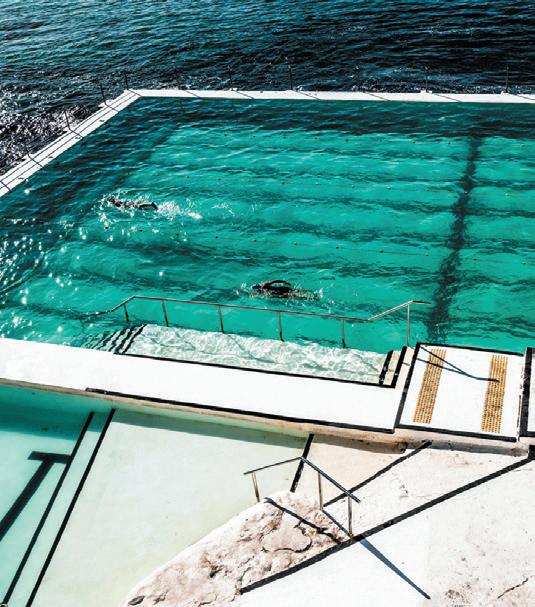
From $269*
*Per room. Subject to availability
26 Clarence Street Sydney 2000 NSW
+61 2 9135 0222
littlenationalhotel.com.au
Where
little things meanBondi Icebergs Pool
Flashy new restaurants open almost weekly in Australia but there’s something deeply comforting about the quiet confidence of a venue that’s stayed true to its philosophy for decades. Bistro Moncur (bistromoncur.com.au), in the eastern Sydney suburb of Woollahra, has just celebrated its 30th anniversary and, like Jasmin, has become part of the fabric of its neighbourhood, with many customers now second- or third-generation regulars. The team and ownership has changed – it’s now helmed by head chef Tom Deadman and restaurant manager Simon Tebbs – and its classic French cuisine has been modernised over the years, though only to a point. Former owner and executive chef Damien Pignolet remembers the time he decided to take the beloved onion soufflé off the menu: “There was a mob waiting to do away with me!” It was returned the next day and has been served ever since.
Caleb Dreaver, hospitality manager for the 34-year-old Vasse Felix (vassefelix.com.au) winery restaurant in WA’s Margaret River, says there are several secrets to a venue’s longevity: a clarity of vision and consistency in quality; staff who treat each other with care and respect; and making sure that every customer goes away feeling good. “Our restaurant is a joyful place to be,” he says. “The customers feel that, the staff feel that. Everyone is just happy to be there.”
While the Singh family’s philosophy has always been the same – “We don’t want to be trendy, we want to be friendly,” says Amrik – Pignolet has a French word for it: habitué. “It means more than ‘regular’. It means ‘part of the family’.”
The long-serving local eateries that still have our hearts NSW
The name means “good memory” and you’ll probably need one to recollect this Italian institution’s early years, which began back in 1987 (buonricordo.com.au). A visit to the Paddington favourite still creates wonderful memories, especially if you order the deliciously indulgent fettuccine al tartufovo.
Serene and sophisticated, Launceston’s Stillwater (stillwater.com.au) quickly
became one of Tasmania’s most beloved restaurants when it opened in 2000. Coming on board nine years later, co-owner and executive chef Craig Will elevated the offering to new heights using top-notch local produce, such as Cape Grim beef and fruit and veg grown in his own back garden.


Original owner Gilbert Lau opened his Cantonese classic in its current elegant CBD location in 1985 (after 10 years in Chinatown) and the Peking duck quickly became the stuff of legend. Since 2003, the restaurant (flowerdrum.melbourne) has been run by one of its original executive chefs, Anthony Lui, and his son, Jason, who are proud custodians of Flower Drum’s unwavering commitment to quality and service.
The bustling Enjoy Inn is a mainstay of Brisbane’s Chinatown, delighting diners with old-school Chinese restaurant touchpoints, such as lazy Susans, live seafood and yum cha since 1983 (167 Wickham Street, Fortitude Valley; 07 3252 3838). It’s still run by the Cheung family and regulars say the san choy bao is the best in the city.
The original in Darlinghurst, which opened in 1989, is no more and matriarch Amy Chanta sadly passed away in 2021 but the Chat Thai spirit lives on in its flagship Thaitown restaurant, where you’ll still see queues outside whenever the par
tuhng go (doughnuts with pandan sauce) are fresh from the wok (chatthai.com.au).
At a time when new restaurant “concepts” are appearing beneath every cookie-cutter apartment development, there’s something uniquely beautiful about Balthazar (balthazar.com. au), which has sat at the base of a picturesque Art Deco block in Perth since 1998. It remains a cherished destination for refined, Euro-leaning fine-dining and a focus on local producers.
There are few better examples of a classic seaside restaurant than Noosa’s popular Sails
(sailsnoosa.com.au), with its absolute waterfront location on Main Beach making it feel as though you’re practically wiggling your toes in the sand. The ceviche with tropical tones of coconut, chilli and lime is an example of the salt-and-sun cuisine that the Sunshine State does best.
Bright and cheerful Estia (estia.com.au) sits by the sand of Adelaide’s iconic Henley Beach and is credited with popularising mezze, ouzo and Greek Island vibes in the South Australian capital since 1992. Earlier this year, tennis champ Novak Djokavic chose the restaurant for a vegan Greek feast when he visited the city to compete in the Adelaide International tennis festival.
From the red-and-white striped awnings to popular pastas, Capri (caprirestaurantfremantle.com) is the sort of welcoming Italian joint that every neighbourhood needs. Its first incarnation opened in 1954 and it has been lovingly run by members of the Pizzale family ever since, with nonna Maria, daughter-in-law of the original owners, still very much boss of the Fremantle favourite.
A classic Top End fusion of Thai, Nonya and Indian cuisines, Hanuman (hanuman.com.au) was opened by chef Jimmy Shu in Darwin in 1992. The barramundi curry with coconut and turmeric even gives the city’s famous laksas a run for their money.
This unapologetically authentic French brasserie (france-soir. com.au) has charmed South Yarra regulars since 1986 and it’s one of the best places in the country to enjoy French classics that pay little mind to fads. Escargots, moules marinière and crème caramel are served alongside drops from an extensive French-leaning cellar.
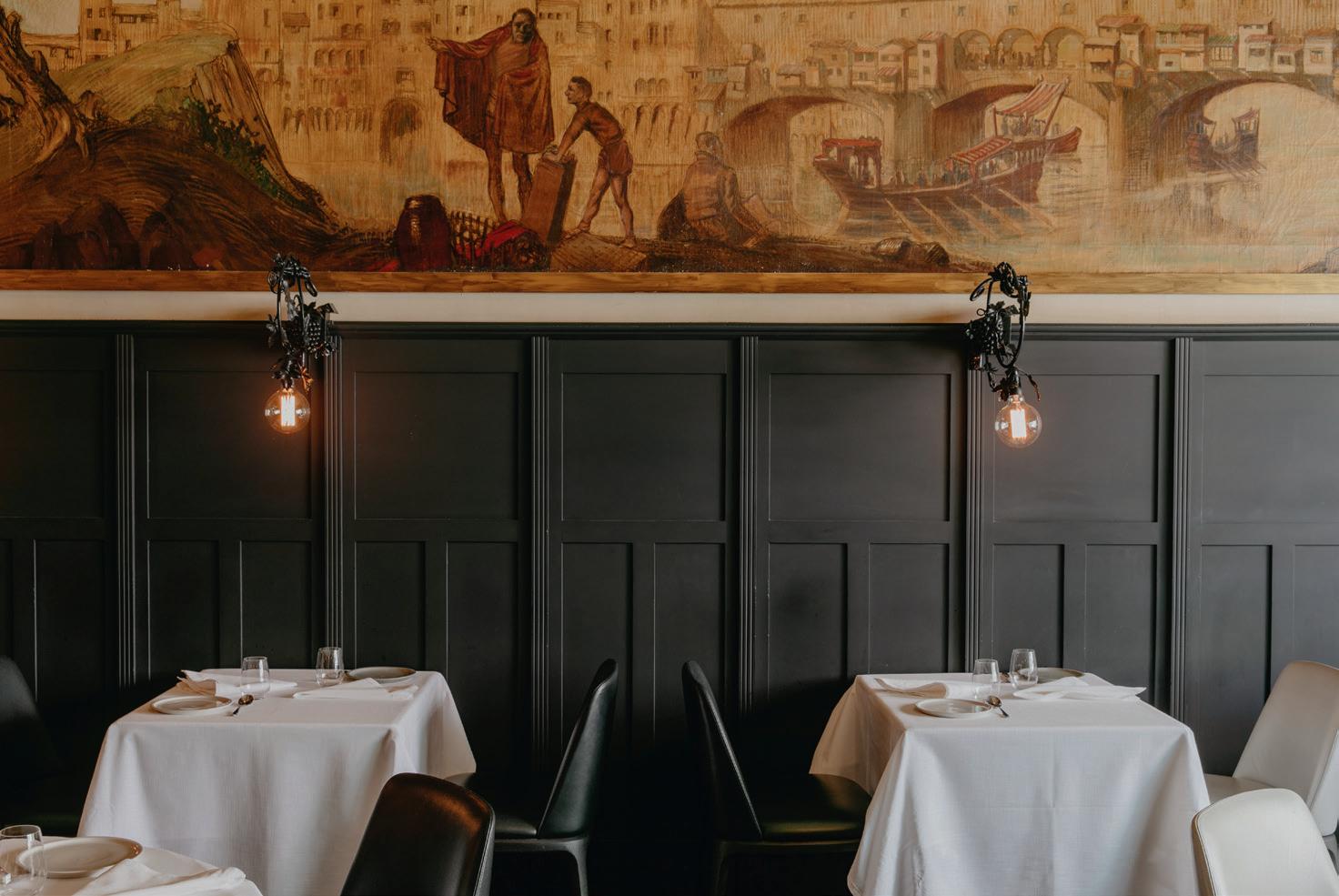
The Bourke Street home of Grossi Florentino (florentino.com.au) began life as Café Florentino in the 1930s and changed hands several times before being taken over by the Grossi family in 1999. The multi-area restaurant’s Mural Room contains heritage art that’s almost 100 years old and the whole venue is known for genuine Italian hospitality.










If you miss an episode of Gardening Australia , this kitchen team’s Thursday morning harvest will keep you up-to-date with what’s in season. The haul determines a weekly menu that heroes open flames and fermentation but still has room for delicate bites such as creamy duck liver parfait with quince paste and lacto-fermented green strawberries. The organic, minimal-intervention drops on pour ensure local winemakers are regular visitors.
1097 Greenhill Road, Summertown; thesummertownaristologist.com; 0477 410 105
Rising up dramatically like an island in a sea of vines, the views from this glass-fronted cellar door restaurant are almost picturesque enough to steal the focus from the food. The five-course Provenance menu is packed with twists on Euro classics and estate-grown ingredients, and during vintage it reaches a sweet peak via a sorbet made from just-picked grapes doused in caramelised lees.
5 Ravenswood Lane, Hahndorf; thelane.com.au; (08) 8388 1250
Terroir-focused gins infused with sandalwood, wild basil and bright red riberries. Dirty Martinis featuring green ants marinated with olive, lemon and lime rind. Gin-cured trout with pickled karkalla, finger lime caviar and crème fraîche. This former apple cold store in Gumeracha is a Willy Wonka’s factory for native Australian ingredients; the boundarypushing cocktail list works in concert with a tight food menu by local chef Kane Pollard.
24 Victoria Street, Gumeracha; applewooddistillery.com.au; (08) 6333 0369
Far enough from the freeway to feel off the beaten track, this impeccably situated cellar door overlooks a hidden valley where three tiers of outdoor decking look over steeply pitched rows of chardonnay and pinot noir. The food is equally enticing: seared discs of flathead presented alongside beer-battered ice plant typify a playful high-low ethos, while the Sri Lankan sous chef’s influence on the desserts makes the third course a no-brainer.
166 Harris Road, Lenswood; mtloftyrangesvineyard.com.au; (08) 8389 8339
This sprawling property houses a distillery, brewery and cidery but it’s the restaurant that has the crowds flocking on weekends. Grab a seat in the timber-lined shed and you’ll be treated to crisp woodfired pizzas, small plates and snacks that make use of the kitchen garden while nodding to the neighbours with crackers made from spent brewery grain and a Vienetta tribute drenched in cider caramel.
68 Chambers Road, Hay Valley; lot100.com.au; (08) 7077 2888
You’ll still find immaculate service and glittering views of the eastern suburbs at Adelaide’s OG fine-diner but chef Scott Huggins has modernised the menu in recent years. Crumbed lamb sandos with wasabi slaw show off his Japanese influences, while the fried chicken wings stuffed with scallop and lobster have achieved icon status. The Penfolds wine pairings are as luxe as you’d expect – don’t pass on the divine aged Yattarna chardonnay.
78 Penfold Road, Adelaide; magillestaterestaurant.com; (08) 8301 5551
In a region that experiences each season deeply, elevated culinary offerings provide a snapshot of the latest harvest.
While the colourful homewares for sale at light-filled Fred Living skew traditional, the adjoining café is more than happy to throw out the rule book with a range of Asian-influenced brunch options. One taste of the legendary Happiness in a Bowl (shallot omelette laden with kimchi, barbecued pork belly and chilli caramel) or spiced Indian eggs with roti, roasted cumin yoghurt and eggplant relish and you’ll be asking if you can take them home as well.
220 Mount Barker Road, Aldgate Village; fredeatery.com.au; (08) 8339 1899
There are fewer than 30 Masters of Wine in the entire country, yet two of them call this distinguished winery outside of Balhannah home. They’ve made their chardonnay and pinot bywords for classical elegance and the modern cellar door is equally graceful. A new menu of small plates including duck rillettes, Wagyu bresaola spiked with fig syrup and alpine-style cheeses provides another excuse to linger over views of a lovely reed-lined lake.
136 Jones Road, Balhannah; shawandsmith.com; (08) 8398 0500
This friendly café next to an artists’ studio is named for the way the Kiwi owner says “bread” and his dense sourdough forms the basis for hunger-smashing toasties packed with cheese, pine mushroom and thyme. But the pastries are the real drawcard, each week revealing a new way to celebrate local produce with creations such as poached quince and apple custard turnovers or gently spiced roast chestnut, bergamot and pear tarts.
176 Piccadilly Road, Piccadilly; @brid.piccadilly



 STORY BY ALEXANDRA CARLTON PHOTOGRAPHY BY ASHLEY LUDKIN
STORY BY ALEXANDRA CARLTON PHOTOGRAPHY BY ASHLEY LUDKIN
Shannon Martinez remembers the time her famous vegan cacio e pepe pasta nearly let her down. The Melbourne-based chef was booked to cook backstage for singer Billie Eilish during her 2019 Australian tour, only to arrive at the stadium and discover there was nothing in the promised “kitchen” except a lonely induction hotplate and a microwave. Set to prep a dish that requires pasta to be cooked in one pot while its sauce is emulsified in a separate pan, Martinez had a fight on her hands.
Somehow she managed it but she still had to travel about 15 minutes to Eilish’s dressing room. “I’m pushing this cart to get to her, watching the whole thing slowly stick together. I was thinking, ‘She’s going to get the worst cacio e pepe I’ve ever cooked.’”
But Eilish loved it. “She asked me to cook for her again so something must have gone right,” says Martinez with a laugh.
It’s a testament to the strength of the dish, which first appeared on the menu at Collingwood’s Smith & Daughters (smithanddaughters.com) in about 2018. Even a bad version is pretty great.
A vegan cacio e pepe sounds easy enough – the original is just pasta, cheese and pepper so in theory, you only need to replace one ingredient and you’re laughing. But therein lies the trap. “Like most things, the simpler it is, the harder it is to make it vegan,” says Martinez. A meat substitute can slip into a bolognese with barely a murmur. But with three ingredients, there’s nowhere for vegan cheese to hide.
Martinez’s secret is to use a good-quality alternative with a coconut oil base. “It’s super-umami, really stinky and strong,” she says. To tamp down the oily mouthfeel, she emulsifies it with pasta water and silken tofu. “That helps give it the rich texture that you’d ordinarily get from the fats in milk.” Then she adds freshly roasted and coarseground pepper. “These are the dishes I love to do. Making the impossible possible.”
A taste of Greece has arrived in a sun-soaked Brisbane restaurant serving modern renditions of traditional dishes, one smashing plate at a time.

Plates of silky taramasalata, pita bread and grilled saganaki with caramelised fig sauce land on the terrazzo-tiled table. We may be overlooking the Brisbane River but the whitewashed walls of Opa Bar + Mezze promise to transport you straight to Santorini.
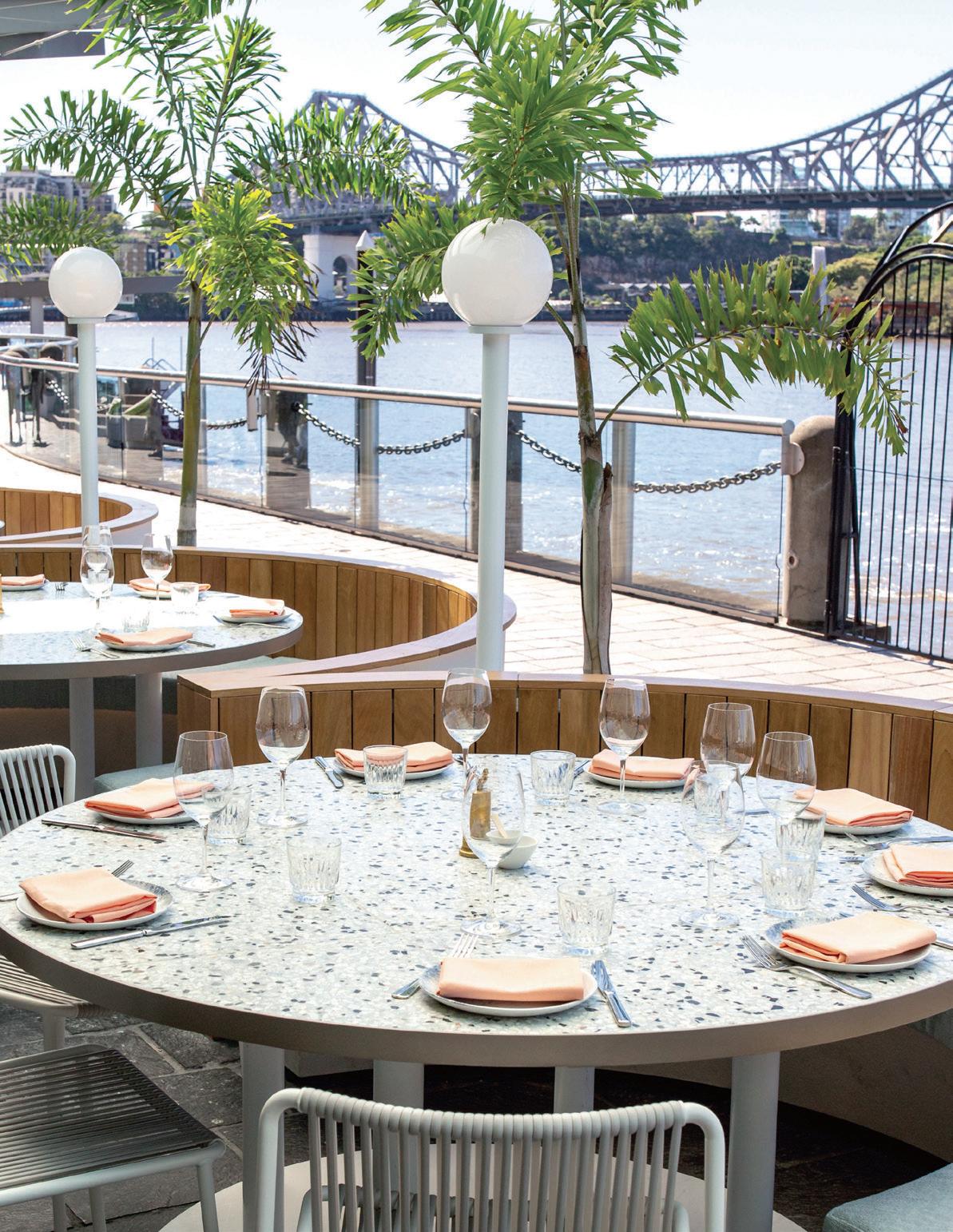
For Michael Tassis, the restaurateur behind neighbouring Italian restaurant Massimo, the refurbished Opa Bar + Mezze represents a chance to honour his family heritage. “I wanted to create a restaurant that shows Brisbane the vibrancy of Greek food and culture,” he says. “Authentic, yes, but modernising it as well and using only the best produce.”

The menu, designed by husband-andwife chefs Vangjel and Dianna Jorgo – who hail from Ioannina, the same northern region of Greece as Tassis’ father – celebrates the mezze tradition of small plates designed to be shared by the whole table.
You can expect just-shucked oysters laced with ouzo and tabasco and classics such as grilled octopus topped with the holy trinity of Greek cooking (olive oil, lemon and oregano). Pair these with larger dishes, such as fall-apart, slow-baked whole lamb shoulder served with tzatziki. “It’s a
joyous way to eat,” says Tassis. “It brings everyone together.”
There’s equal delight in traditional northern dishes, including the hearty keftedes – beef and pork meatballs, styled up with feta mousse. And desserts like galaktoboureko (filo pastry, custard and lemon syrup).
Much like the menu, the wine list is extensive and features Greek varieties such as xinomavro and assyrtiko. The broad marble counter bar is the place for blushhued cocktails including the Aphrodite (gin with pomegranate, lime and prosecco).
Whether you’re seated on the Eagle Street Pier decking overlooking the water or in a private arched alcove, there’s a general air of sunshine-filled celebration. “Opa”, after all, is a Greek expression of joy (although the staff at the restaurant like to keep their dinner plates intact). “It’s a festive approach to life,” says Tassis. “It’s very Greek and I’m thrilled to show it to Brisbane.”
For Michael Tassis, it’s hard to go past the hearty home-style moussaka. “Ours comes with Wagyu beef mince to give it that extra richness, topped with a white sheep’s cheese, kefalotyri, for a tangy kick.”
Served individually, it’s layered with braised eggplant and béchamel sauce. “It’s the taste of home.” And the side? “A Greek salad is a must.”
To find out more, visit opabar.com.au
Presented by Opa Bar + Mezze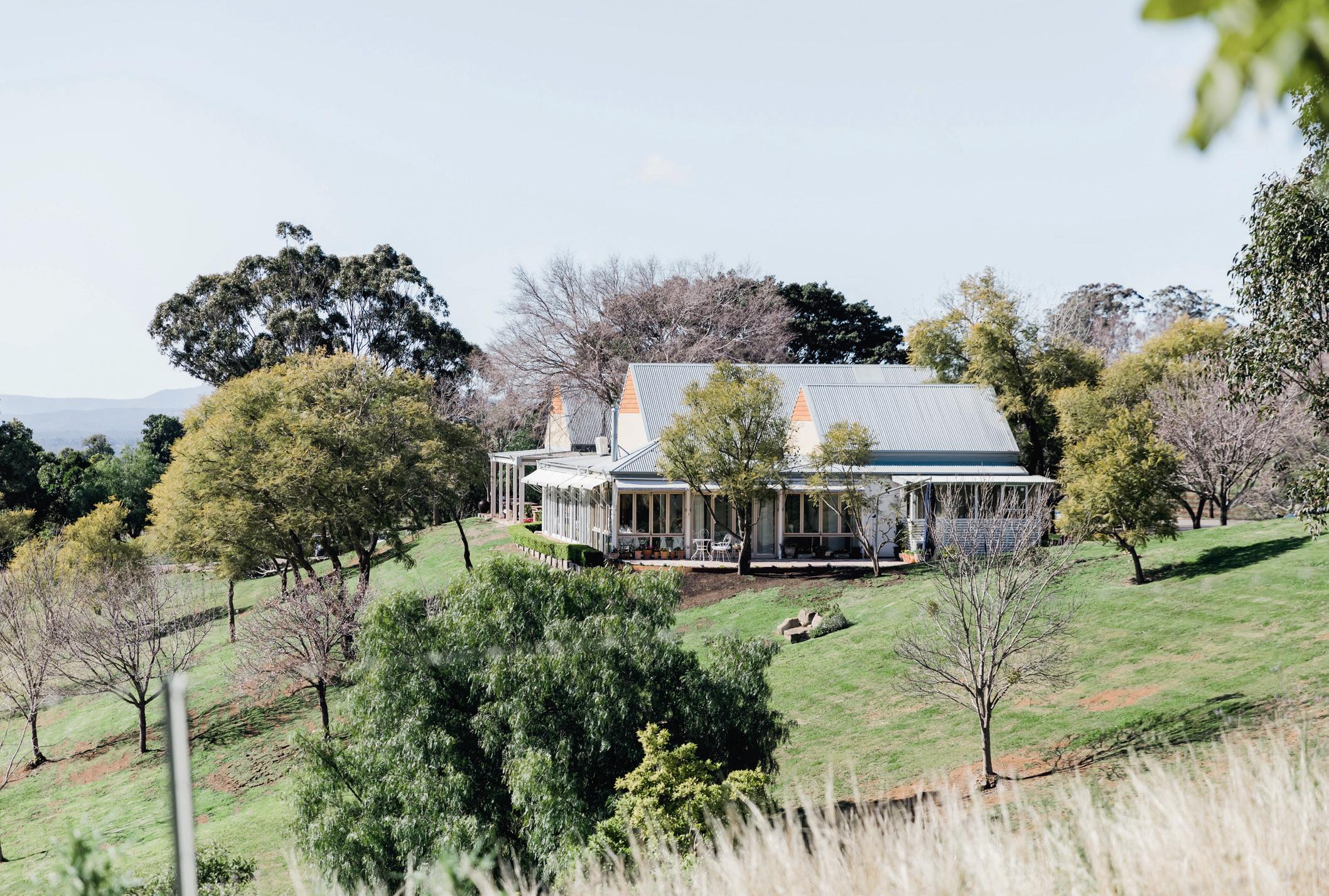
In a region rich with world-class food and wine, where should you start? Chef Troy Rhoades-Brown has the lowdown.
Plenty of chefs talk about using local and seasonal ingredients. “Those words get said a lot,” says Troy Rhoades-Brown (right) before doing what a lot of chefs don’t – namechecking local Hunter Valley producers, beating the drum about their success and detailing why a commitment to working with them is one of his highest priorities. And that’s before he gets started on his own vegetable garden and the pigs he keeps on his property that “find themselves on the menu two or three times a year”. That menu is at Muse Restaurant at Hungerford Hill winery (musedining.com.au) in Pokolbin, a fine-dining or “big night out” restaurant that chef and owner Rhoades-Brown opened 14 years ago, when he was 24. The only thing that might compete with local produce for top billing here would be the approach to service. “We look after our guests really well – the table is theirs for the night, they’re made to feel special, the floor staff have time to engage, be personal, be intuitive and not stuffy.” You’re not only in good hands at the eatery. Follow Rhoades-Brown’s recommendations for the surrounding district and you’ll be well taken care of for the length of your stay.

“Branxton has the best regional butcher shop in Australia (hungerfordmeatco.com.au). It has its own smokehouse, charcuterie range and pâtés, as well as a wicked hamburger shop next door called Burgers by HMC. If you’re coming into the valley, stop and get some salumi and house-made terrines and pork and pistachio rillettes – all that platter stuff you want in your accommodation.”

“The other big night out would be at EXP. (exprestaurant.com. au). It’s a dégustation restaurant and smaller in size than Muse so book early. The owner and chef, Frank Fawkner, was my head chef about nine years ago. They serve very creative food, with a tilt towards native ingredients. It’s a little experimental, a little edgier, but exciting. There’s a bar to sit at and engage with Frank.”
“Robert Molines is a stalwart of the Hunter Valley. He’s been here since the 1970s and he’s still in the kitchen! Make sure you book for a Sunday lunch (bistromolines.com.au). Get the charcuterie board to start, order the fried zucchini flowers, usually stuffed with goat’s cheese, and a couple of provincial French dishes like figs stuffed with blue cheese wrapped in prosciutto.”

“Jimmy Joans (jimmyjoans. com.au) has only been open for about 18 months, out at Lovedale. They’ve got beers on tap and you can dine inside or alfresco or even grab a picnic rug and go and sit on the grass under a tree. The cooking here is really simple but there are no shortcuts taken – try the beautiful Scotch eggs and fish burgers. My partner and I take the kids, our puppy and a soccer ball to kick around. It’s lovely and relaxed.”
“If you haven’t been to the new Mount Pleasant Wines cellar door (mountpleasantwines.com. au), it’s definitely worth a visit. It’s been fully refurbished from top to bottom. So much detail has gone into the build, while keeping the history of the place as well. And the wine, obviously, is some of the best in Australia. I particularly like the Lovedale semillons – it’s a fight between them and Tyrrell’s Vat 1. And Mount Pleasant’s reds are also excellent.”
“The chardonnay is wonderful, the pinot is impressive – and hard to get your hands on –and the prosecco is outstanding. Usher Tinkler (ushertinkler wines.com) is a New Age kind of winemaker; his skill and style are steeped in technical ability and tradition but he’s also pushing boundaries with different varietals and natural wines. This is another good spot to sit down for lunch, pick away at share foods and drink some great wines.”
Try the lush white that’s the perfect match for hearty fare.
First things first: how is viognier pronounced? Vee-on-yay. And where did it originate?
The northern Rhône Valley in France. It’s the mandatory white grape of Condrieu, a tiny 200-hectare appellation on the western banks of the Rhône River. Viognier was almost extinct before a revival in the 1970s and Condrieu is now in short supply. Does it grow here? Yes, although it’s a relative newcomer, with the first vines planted in the Eden Valley by Yalumba in 1980. What does it taste like? Lush and texturally rich, it has perfumes of musk, rose petal and apricot. Flavours echo the nose – apricot, custard apple and lychee, with a ping of ginger and almond skin enlivening the finish. Sounds like a food wine… Yes, viognier goes best with bold dishes such as chicken, leek and mushroom pie, pulled pork rolls or wiener schnitzel. It’s also sometimes blended with shiraz. What’s that about? That style originated in the Côte-Rôtie appellation (just to the north of Condrieu), where up to 20 per cent viognier can be blended with syrah. Clonakilla in the Canberra District makes Australia’s bestknown example. Where do we grow viognier? This variety likes the cool and is happy in the Eden Valley and Adelaide Hills; Geelong, Heathcote and the Yarra Valley; the Canberra District and Orange in NSW. Is Australian viognier as expensive as wines from Condrieu? Prices start at $15 for a local wine (the Yalumba Y Series is a bargain at this price) and climb to about $50. By Farr’s viognier sells for close to $100.
This is Nadja Wallington and Steve Mobbs’ fledging brand. They pick viognier early, with the finished wine just 11.5 per cent alcohol. White blossom and cumquat perfumes precede a bright, tangy palate and a juicy finish.
Orange, NSW / 2022 / $28

Tim Kirk is besotted by viognier. This wine is fermented and aged in large, inert barrels and has heady aromas of almond blossom, apricot and lychee. Rich flavours and the gently persistent finale would suit crumbed Murray cod.
Canberra District, NSW / 2022 / $45
Yalumba’s flagship viognier. Wild yeast fermentation and extended maturation on lees yields a bold bouquet of cardamom, almond meal and toffee apple. The ginger-spiced palate calls for roast pork.
Eden Valley, SA / 2020 / $50
A champion of the region since 1987, Yves Cuilleron now farms 75 hectares, with 12 in Condrieu. Power is key – lush custard apple and apricot flavours are restrained by a well-structured finish. Perfect with washed-rind cheese.
Rhône Valley, France / 2021 / $145
Make every minute count on your next holiday, whether it’s sleeping in an art-filled hotel in the heart of Tokyo, jetskiing through Miami’s neighbourhoods or sipping cocktails in the sun at one of Croatia’s hottest day clubs. IWC friends of the brand Hayden Cox, Daniel MacPherson and Sam Kerr share their favourite places to explore, relax and find inspiration when travelling the world.

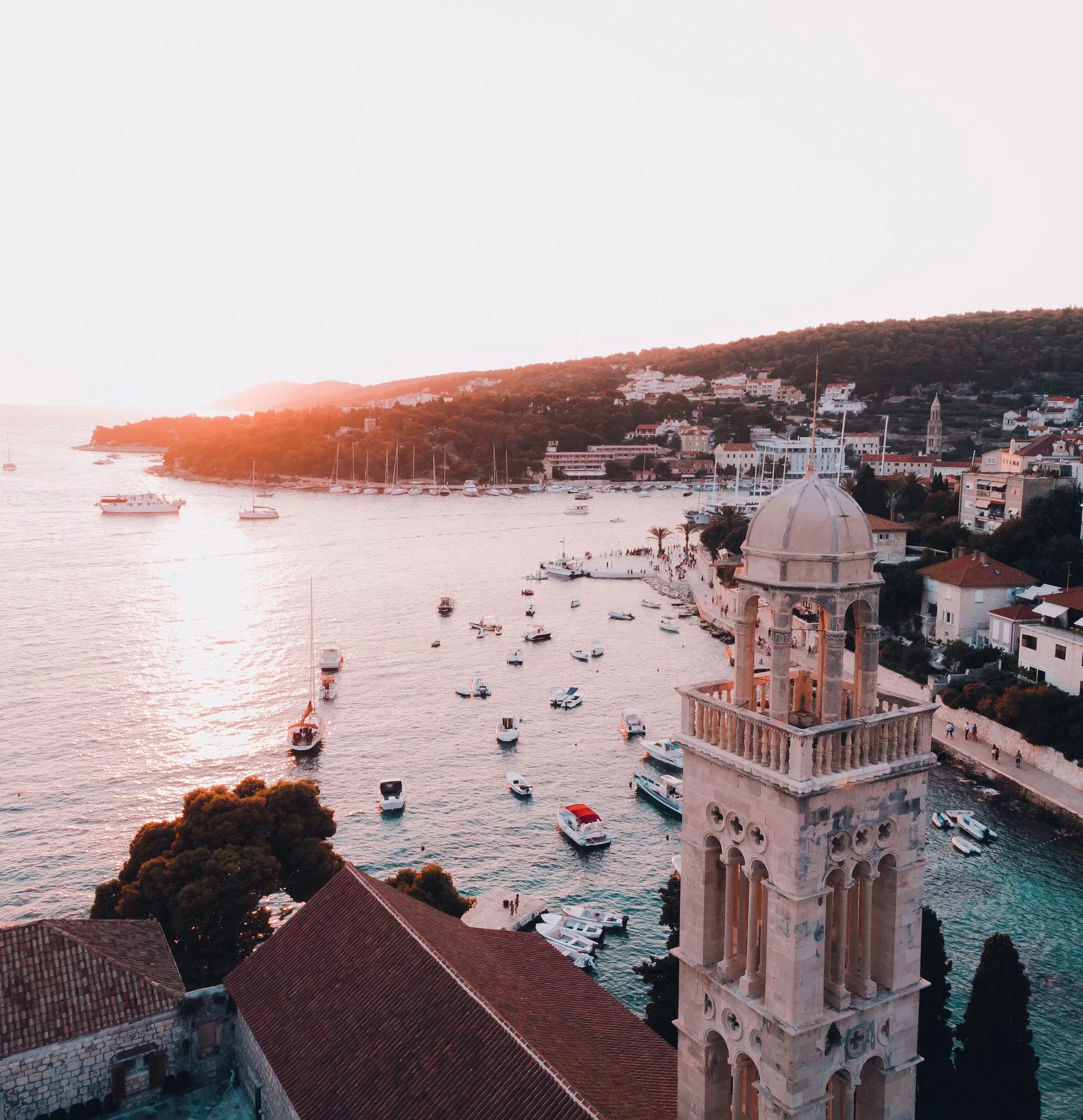
Australian actor Daniel MacPherson fell in love with Croatia’s Dalmatian coastline while filming the HBO series Strike Back in 2019. “It quickly became one of my absolute favourite spots on the planet,” he says. The island of Hvar – an hour-long ferry ride from Split – turned into his regular weekend getaway during the summer months. “I’ll never forget that first time arriving on the ferry, laying eyes on Hvar’s sandstone architecture, all the boats zipping in and out of the port and the perfect little islands speckled around.” Here, he shares his guide to the island.

When in Hvar, MacPherson stays at Hotel Podstine (podstine.com). “It’s a little gem, just a 20-minute walk out of Hvar town.” The 50room hotel is the only one on the island with access to a private beach, where you can kick back on a sun lounger with a strawberry Mojito in hand or enjoy a spot of stand-up paddleboarding.
“Come nightfall, the hotel deck transforms into a candlelit restaurant overlooking the water, where fresh seafood is cooked on an open fire.”
While exploring the cobblestoned streets of Hvar’s Old Town, MacPherson stumbled upon Macondo (macondo.com.hr), a charming sandstone-walled restaurant that combines Dalmatian specialties with traditional seafood. “I always go for freshly caught whole fish with olive oil and lemon juice, served with local vegetables and salad.” His other tip? Order a chilled bottle of Pošip, “a Croatian white wine native to the nearby island of Korcula”.
A 10-minute boat ride from Hvar, on its own private island, is the famous beach club Carpe Diem (cdhvar.com). In summer, it’s the local glamour spot for cocktails in the sun. “All you can hear is the lapping water of the Adriatic and the deep pulsing of the latest chill house hits.” Spend a lazy day swimming, snorkelling, snoozing or snacking on sashimi between sips of an Aperol Spritz.
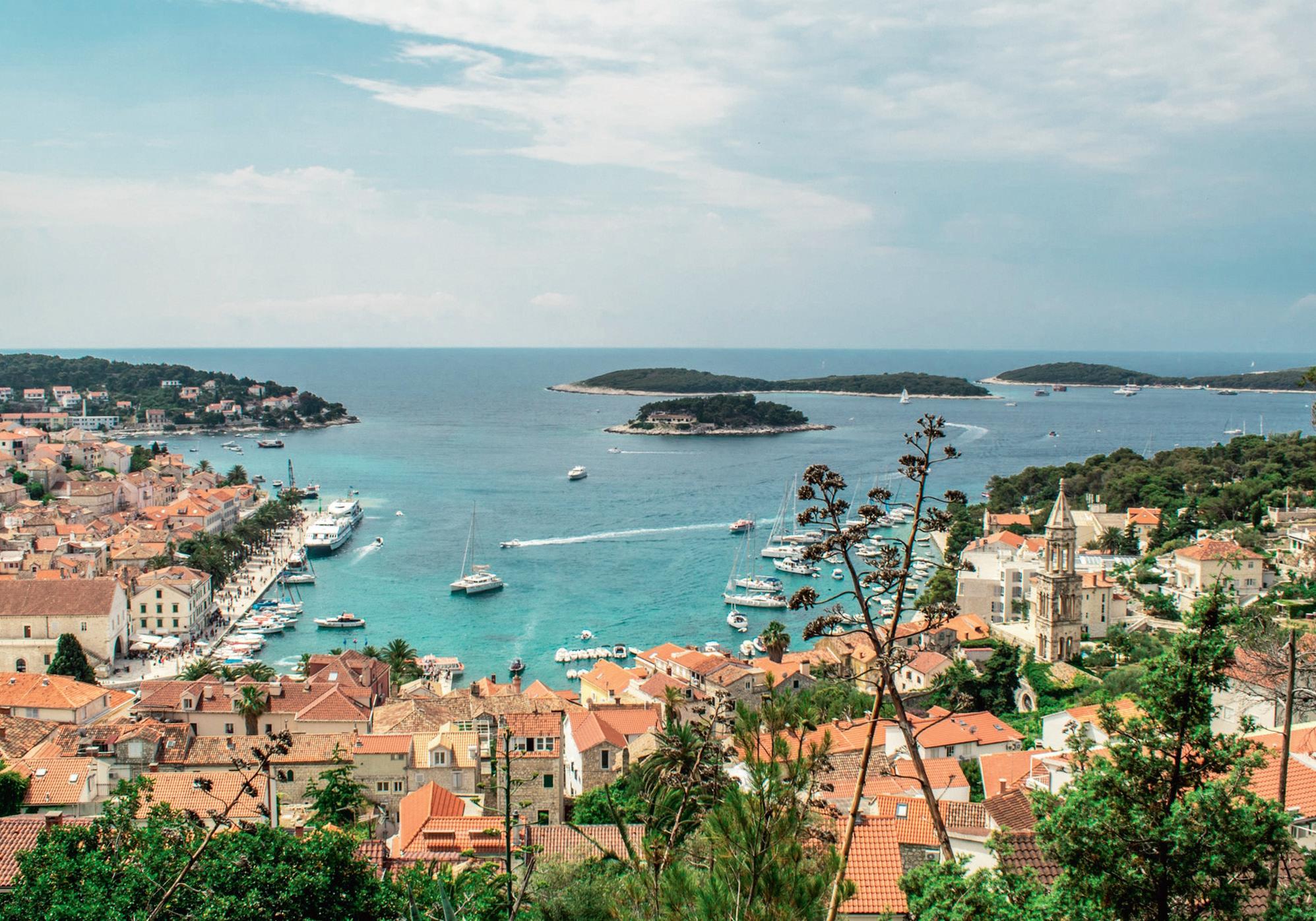
MacPherson acquired the IWC Portugieser Chronograph (Ref. IW371610) after wearing it in the 2022 film Poker Face. “I remember thinking it was a breathtaking watch with its 18-carat gold case, black face and matching alligator-leather strap.” It’s the flexibility of the Portugieser Chronograph and IWC’s EasX-CHANGE system –which enables you to easily switch watch straps – that works for his busy lifestyle juggling fatherhood, travelling and acting (he’s currently performing in 2.22 A Ghost Story playing at Her Majesty’s Theatre in Melbourne). “I try to meditate twice daily and I use the chronograph function to time those sessions. It’s more than versatile enough to be my everyday wear.” $27,500 RRP; available at IWC boutiques or IWC.com

Hayden Cox has always been fixated on quality design. It’s what saw him start Haydenshapes Surfboards on Sydney’s Northern Beaches at just 15 years of age. Japan was the first country Cox sold surfboards to outside of Australia and his eye for detail informs the 41-year-old’s fascination with Japan’s eclectic design. “I really love Tokyo and the progressive fashion. You can visit some of the best underground vintage stores in the world there.” Here, he shares his tips for the ultimate Japanese escape.

Indulge in a curated sushi experience
“When I was last in Tokyo, I visited the restaurant Narukiyo and loved it.” Found in the city’s Shibuya precinct, a 15-minute drive south-west of Tokyo’s city centre, the omakase eatery has no menu and is entirely at chef Narukiyo Yoshida’s whim. Sit back and enjoy plates of seasonal dishes that might include deftly sliced
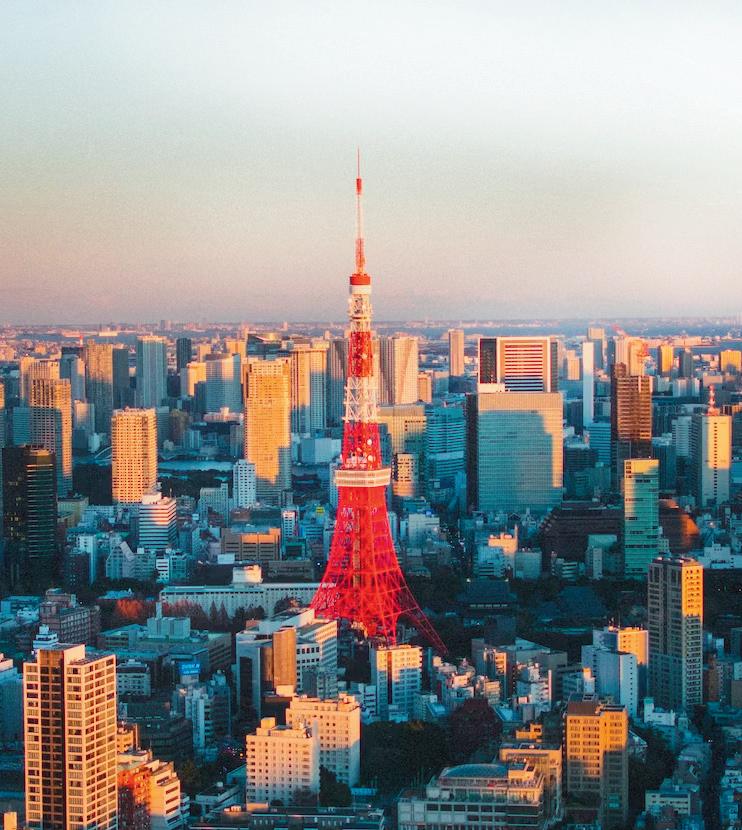

chutoro (tuna belly) sashimi or medium-rare
Wagyu beef washed down with saké. Plant yourself at the counter of the large open kitchen where you can watch the chefs and “soak up the fun vibe”.
In the heart of Tokyo’s Nihonbashi district, visitors to the BnA Hotel (hotels.qantas.com/ bnastudio), short for “Bed and Art”, are met with a colourful mural in the lobby bar, where seasonal saké and riffs on fruit smoothies are served. Staying in this hotel, which has 26 rooms, is like bedding down in a small art gallery. “They constantly switch up the art and creativity with rotating local artists who transform each space.” From minimalist dwellings to psychedelic interiors, each room “offers something unique” with the hotel giving a portion of every booking back to the artists.
Ride the epic waves of Tatadohama
“Whenever I’m in Japan I try to make it out to Shizuoka and get a surf in.” Just over three hours’ drive south of Tokyo’s bustle, you’ll find the white sands of Tatadohama Beach . Here, there are glassy waters and sets of rolling waves primed to ride. “There’s a strong surfing community in Japan. Some of the pro shops have been around for generations.”
The precision of watchmaking drew Cox to IWC and as someone who wears “a lot of black”, he favours the IWC Pilot’s Watch Chronograph Top Gun (Ref. IW389101). He was also attracted to the timepiece’s ceramic case. “It has such a unique materiality – hard-wearing but also very high-end.” The watch has some handy features, with Cox using the stopwatch function in his design workshop when testing new resin formulas. “Tracking time between certain catalysts down to the second is a critical part of that.” The watch is a constant presence on Cox’s wrist. “On the factory floor, designing at my desk, surfing, black-tie events, special family occasions – I wear it everywhere.” $13,800 RRP; available at IWC boutiques or IWC.com

Miami, United States
Widely considered one of the best female football players of all time, Sam Kerr divides her duties between representing Australia with the Matildas and playing for Londonbased powerhouse club Chelsea. On her rare days off, Kerr is always keen to escape the drizzle in England. “If I’m going on holiday, I love South Beach in Miami,” she says. “The weather is good all year round, especially coming from the European winter. Miami has a mix of pools, beaches and nightlife – everything I’m looking for on a break.” Here, Kerr shares the keys to unwinding in the Magic City.

Revel in rooftop views of South Beach

Park yourself poolside with a rosé champagne in hand, 18 storeys above the beach at the five-star 1 Hotel South Beach (hotels.qantas. com/1hotelsouthbeach). “It’s my favourite thing about the hotel; it has the most amazing views of the coastline and poolside service so you never have to leave.” Inside, the hotel features a zen-like coastal blend of white and beige and features furniture crafted from upcycled driftwood, mattresses filled with
a hemp blend and energy-efficient lighting in its mission for sustainable luxury.
Watch a private chef cook tableside
The Michelin-starred Korean steakhouse COTE (cotemiami.com) delivers a performative dining experience transplanted from New York City. Inside the moody-yet-sleek dining room, tables are installed with smokeless charcoal grills where chefs sear cuts of beef to your specification. “It’s all cooked on a grill at your table so you learn all about the different meats and how best to cook them.” Kerr’s personal recommendation is the A5 Japanese Wagyu rib eye. “It tastes like butter and melts in your mouth – it might be the best steak I’ve ever tried.”
See the city from a jetski
“When I’m in Miami I’m always by the water, whether it’s the pool, beach or hiring jetskis.” Take the 90-minute Miami Vice tour with Jet-Ski Tours of Miami (jetskitoursofmiami.com) for a water-bound perspective of the Florida metropolis. Zipping through the turquoise waters of Biscayne Bay, you’ll circle the appropriately named Star Island (home to Millionaire’s Row) and even spot the odd dolphin and manatee if you’re lucky.
On the football pitch, Kerr is renowned for her consistency – terrorising defenders with her goal-scoring capabilities and technical excellence. It’s not surprising then that she gravitates towards the IWC Portugieser Chronograph (Ref. IW371611), a sporty timepiece at heart, thanks to its stopwatch function. “The first thing that drew me to IWC is that they’ve partnered with athletes like Lewis Hamilton, who have been at the top of their game for so long.” Kerr personalised her watch by pairing it with a rubber strap that dresses it down while adding a striking touch. “I love the colour of the burgundy strap. I think a watch can be such a popping part of your outfit.” $27,500 RRP; available at IWC Boutiques or IWC.com





Forget the Michelin stars. If you want to eat like a Florentine, it’s fast, fresh and on-the-fly, writes Alexandra Carlton.
 Photography by Katie McKnoulty
A stall in the Mercato Centrale (opposite); sandwich stand Tripperia Pollini (above)
Photography by Katie McKnoulty
A stall in the Mercato Centrale (opposite); sandwich stand Tripperia Pollini (above)
Mark Twain once described Florence as “the city of dreams”. My guess is many of those dreams are about bread. Florentines love the stuff – from springy schiacciata flatbread and slender grissini to their rather plain pane sciapo, made without salt thanks to a blow-up with nearby Pisa over salt supplies in the Middle Ages. The king of all bread dishes here is the panini, a one-hander usually made with schiacciata or a soft roll and filled with anything from salami and pecorino to combinations such as anchovy, fennel and sliced orange. The big hit is All’Antico Vinaio (allanticovinaio. com) near the Uffizi, where lunchtime lines are so long cars often honk them off the road. But after eating the most luscious anchovy and burrata spaghetti one evening, I developed a soft spot for a hole-in-thewall tucked in an archway in Santa Croce. Called Antico Noè, it’s a sit-down osteria at night (anticonoe.business.site) and runs a panini shop next door during the day (anticonoe.com). The creamy speck, rocket, brie and walnut sauce sando is as soft as a featherbed and rich as a Medici and I eat it as I weave through the crowds, gazing up at the majesty of the Duomo.
It’s not unusual to eat gelato every day in Florence and why wouldn’t you in the city that’s said to have invented it? The most revered flavour is pistachio – for that, Perchè No! (percheno.firenze.it) in the city centre attracts the most diehard fans. I’m visiting in late spring, when the cherries are starting their season, and return daily to the scalloped ceilings and extravagant chandeliers of Gelateria De’ Medici (gelateria demedici.com), in a busy street near the Basilica of Santa Croce. This place is famous for its rum and fig flavour but the ruby gloss of the sweet and sour macerated cherry, with its faint hint of marzipan, swirled into creamy pillows, calls to me. I could walk another 20 minutes to Medici’s second location in Via dello Statuto and enjoy my cherry bomb in the botanical gardens but the siren’s lure of that quick cherry hit wins out every day.
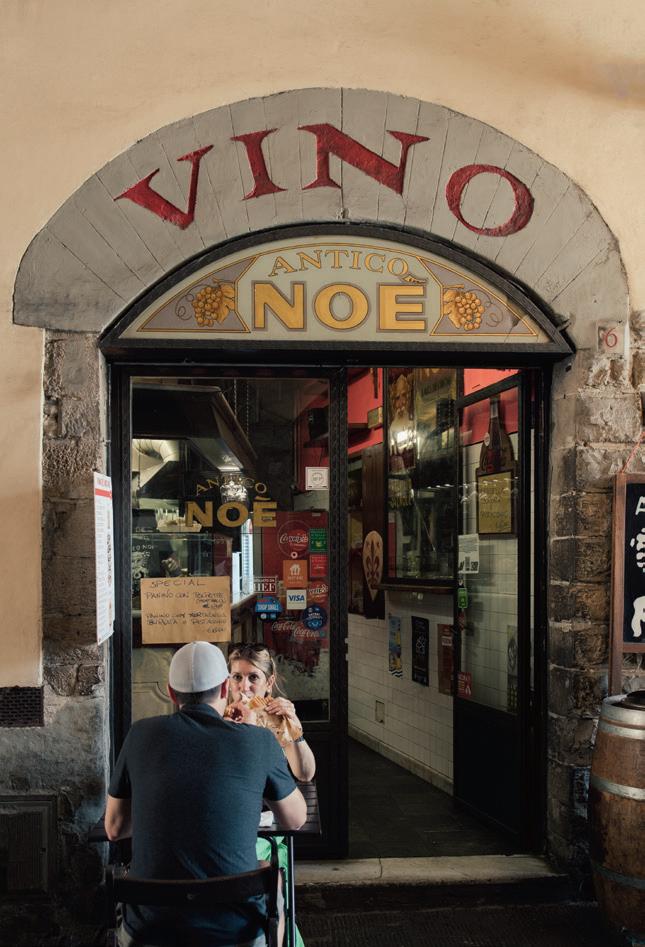


The most famous of local cakes is the schiacciata alla Fiorentina, a spongy orange-flavoured number stamped with the elegant three-petaled lily of Florence.
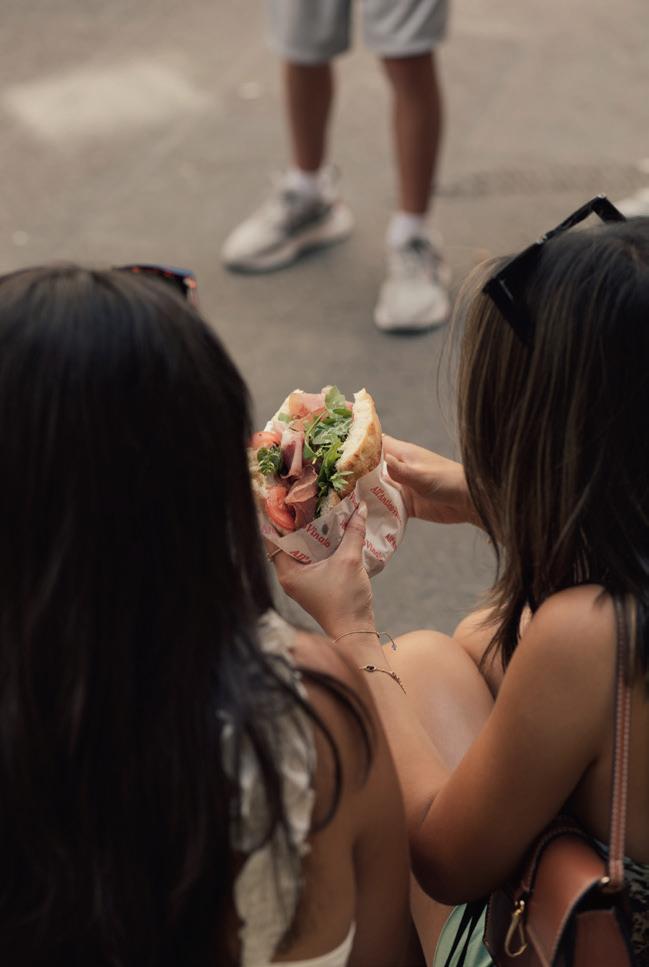
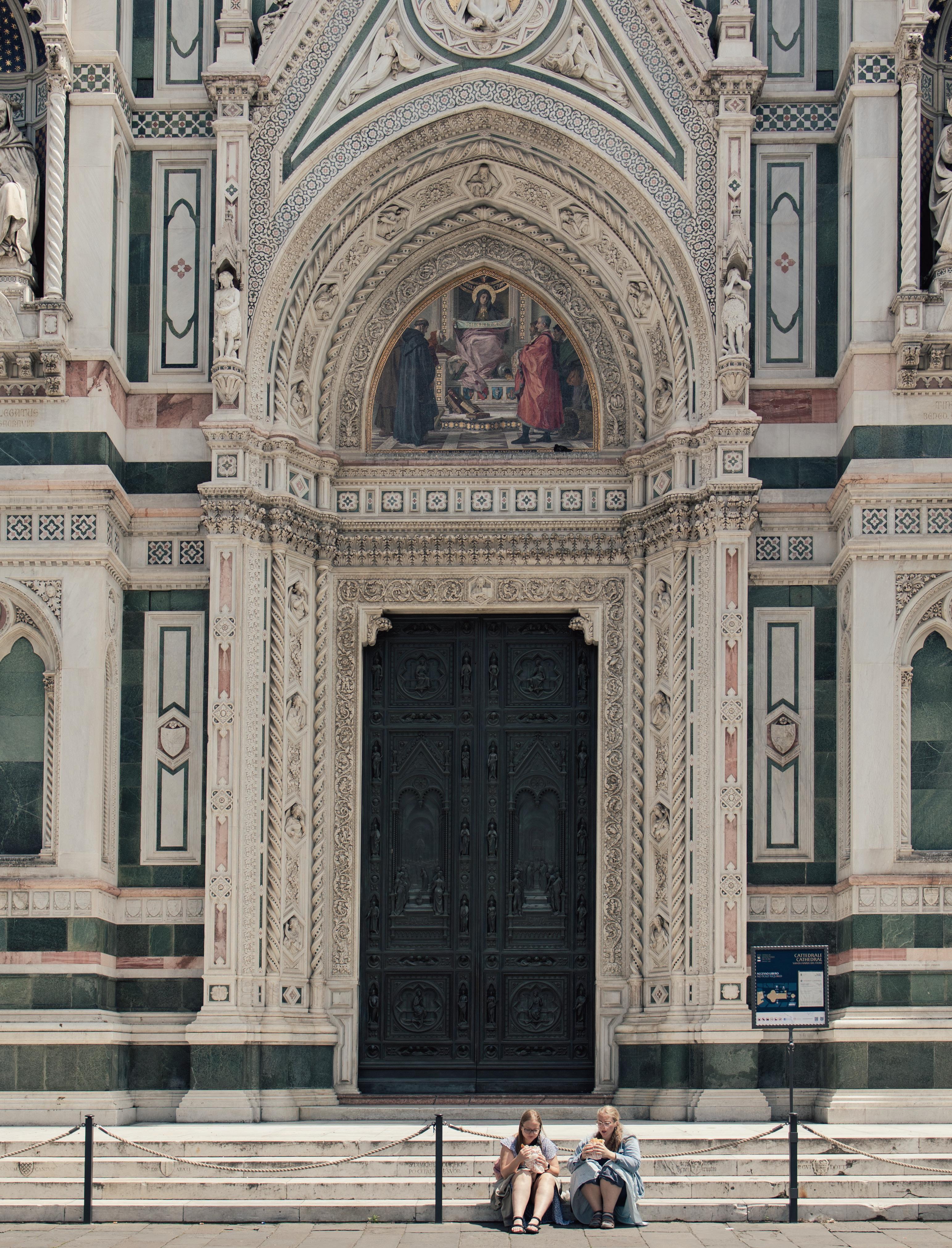



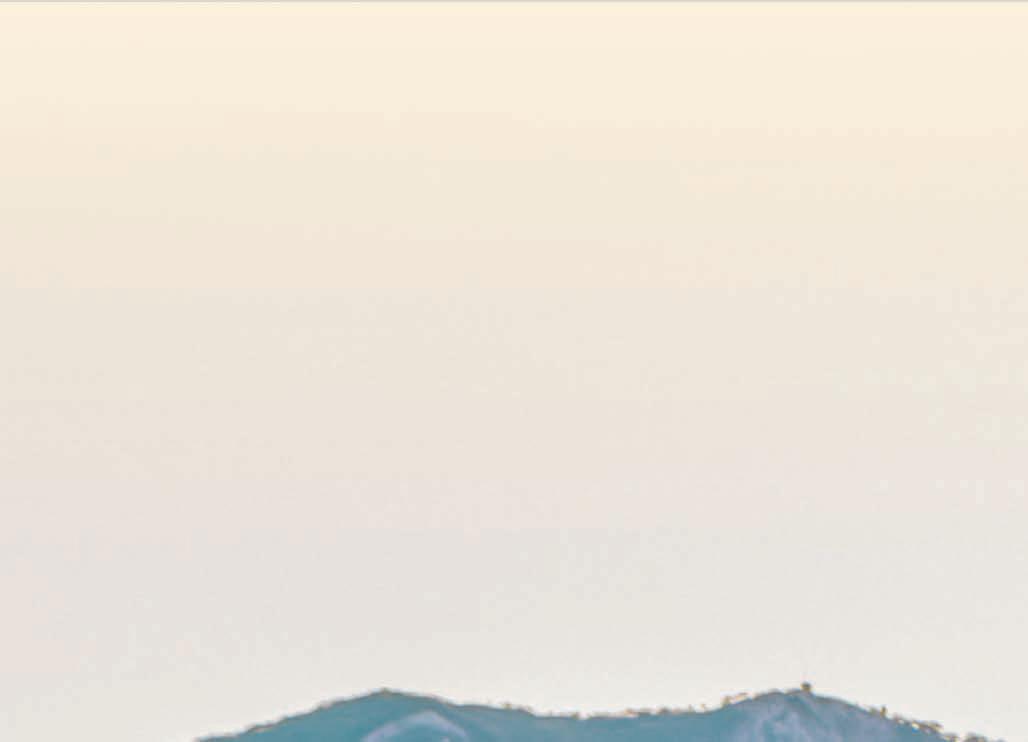



Traditionally it’s only eaten in February at Carnival, whereas other pastries are as much a part of daily life as crossing the Arno by bridge. Close to the city centre, the 70-year-old, family-owned Pasticceria Nencioni (pasticcerianencioni.com), with its glass bowls of candied almonds and tubes of Sicilian almond paste in the window, wins my repeat custom for its pretty individual pear tarts. Over the river in Oltrarno, the ricotta cakes – so fluffy they could blow away in a light breeze – at chic S.Forno (ilsantobevitore.com) are a morning ritual.
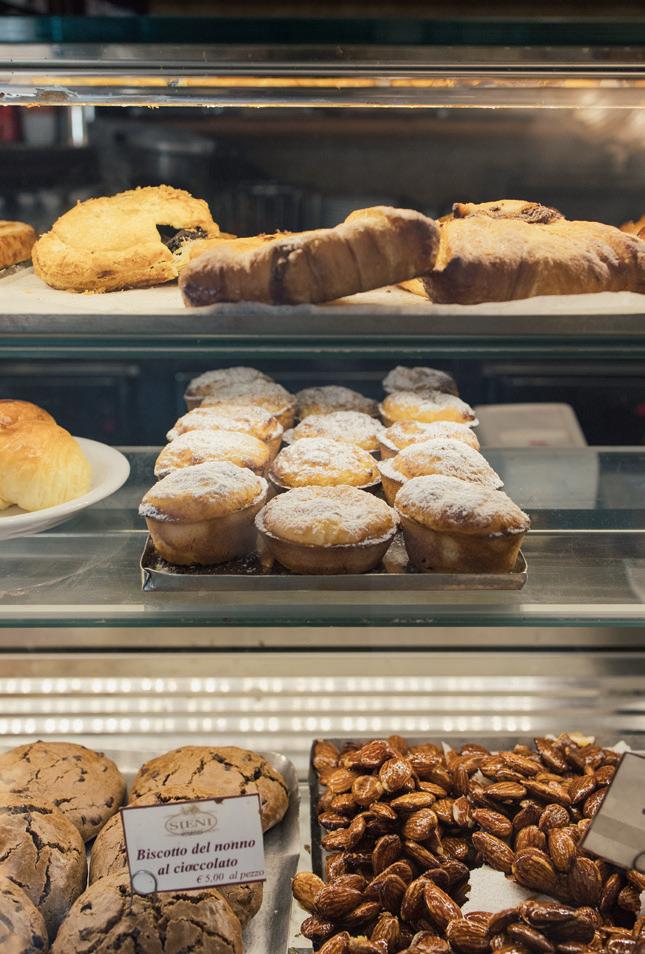
After a few days I become fixated on finding the perfect budino di riso – creamy rice pudding in a tart shell that’s enlivened with the subtle tang of lemon or a cheeky shot of vin santo. I try it at Forno Becagli (@forno_becagli) near the train station and Antica Pasticceria Sieni (pasticceriasieni. com) in San Lorenzo, where master bakers revive Tuscan recipes from the early 1900s.

One afternoon, a friend grabs my hand and races me past Gucci and Giorgio Armani into a barely visible pasticceria named Forno Top (fornotop.it). There are just two lonely budino di risi on display. “This is the best budino,” she insists and one bite confirms the claim. Its lemon zest is as bright as sunshine and the filling as creamy as Michelangelo’s marble.
“Only Rome and Napoli have good pizza. That’s a fact,” a Roman food writer friend says when I ask for pizza recommendations in Florence. She has a point. Florentine pizza is basically another incarnation of schiacciata, perhaps served open but with little resemblance to the blistered thin crusts of Rome. But when you just want pizza, you don’t want to get on a train to find it so one evening I stand outside La Divina Pizza (ladivinapizza.it) in Santa Croce, waiting for its metal shutters to be rolled back. Here, the bases are made from stone-ground flour and the owners even offer a “tasting” menu that takes you on a flavour journey through creations made with different doughs.
The woman behind the counter seems slightly annoyed by my modest order –a single takeaway slice of Napoli pizza, topped with tomato, mozzarella and basil – because she’s busy trying to handle the queues already lining up for the restaurant’s few tables. She diligently

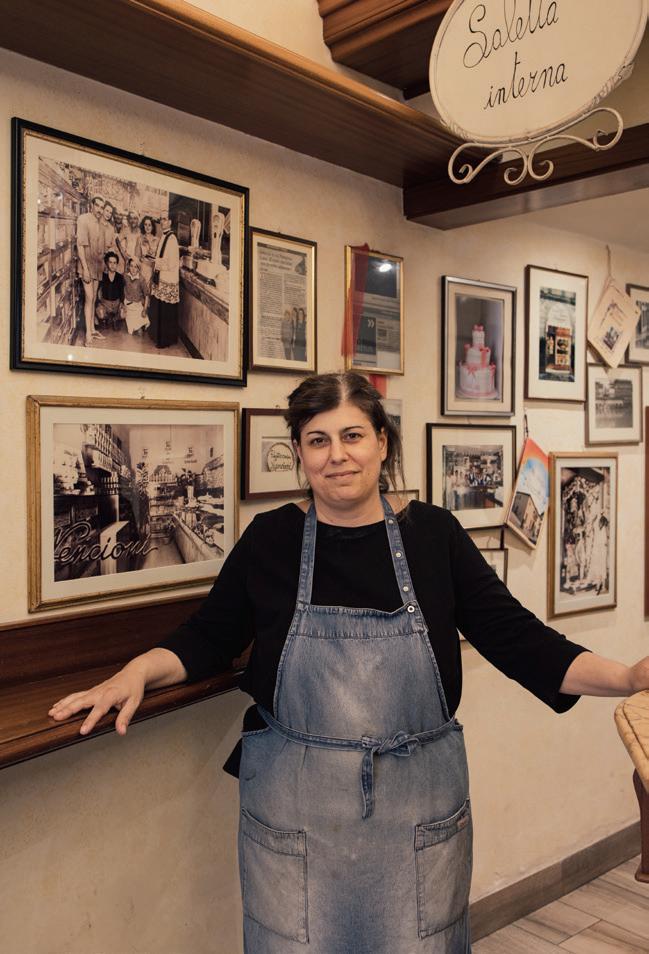
weighs out my €4.20 slice and when I taste that rich pomodoro sauce I forget her irritation, along with any of my own.
One evening, as the fading light deepens the warmth of the city’s limestone walls from pale lemon to golden amber, I find myself in an unusually leafy corner at an outdoor table at Santarosa Bistrot (santarosa bistrot.com) on the edge of the Giardino Henry Dunant. Sipping a garnet-bright Negroni alongside a plate of cicchetti –discs of bread topped with either mozzarella and semi-dried tomato, bresaola and basil or a scoop of hummus – may not feel as history-rich as the city’s medieval wine windows but the tables full of high-spirited locals suggest most Florentines prefer fresh air and the sweet scent of wisteria to relentless tradition.

The Mercato Centrale food hall (mercato centrale.com) is a gourmet pick-and-mix where you can eat anything from fresh pasta to hamburgers made with Tuscan beef. For me, the football blaring from central TV screens makes it feel a bit too much like a sports bar so I head for the less razzle-dazzle Mercato di Sant’Ambrogio (mercatosantambrogio.it), where open-air stalls are piled high with artichokes, oranges and zucchini flowers and indoor butchers and cheese shops are as much of a visual feast as a literal one.
The best eat-and-run food can be found just outside the main forecourt: exotic panini from Semel (Piazza Lorenzo Ghiberti, 44R) – the roast pork with pomodoro and the mussels with spinach are standouts – or the nearby sandwich stand Tripperia Pollini (tripperiapollini.com). It’s here I join a bunch of older men in flat caps and slouchy jackets lining up for the city’s most polarising sandwich made with lampredotto – fried cow’s stomach – a throwback to Florence’s agrarian past.
I inhale the fragrance of richly seasoned curls of offal and grass-green salsa verde on a crunchy bread roll, wrapped loosely in wax paper, and perch on one of the van’s narrow stools away from the clamour of the tours and foot traffic. A man gives me a broad grin, which seems to say that sitting elbow to elbow, eating offal as rich with flavour as it is with history and pride, is about as Florentine as you can get.








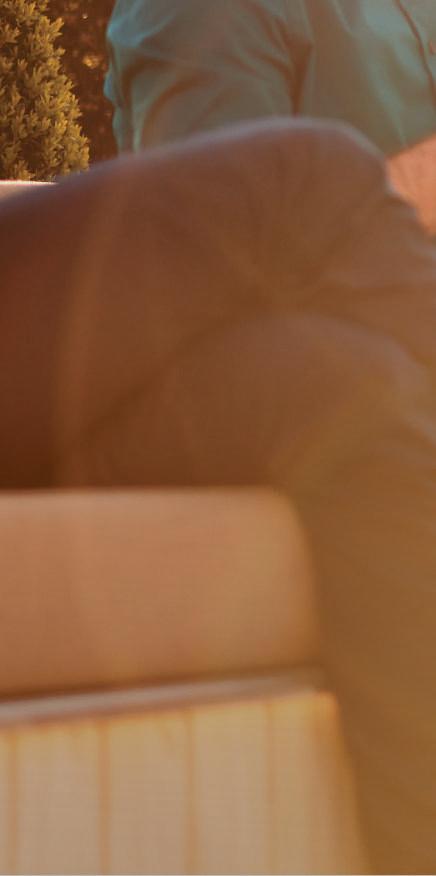













A modern update takes Breguet’s celebrated pilot’s chronographs to new heights.
 Presented by Breguet
Presented by Breguet
The Breguet family is one filled with true pioneers of horology and aviation. Abraham-Louis Breguet changed the watch world after he founded the Breguet brand in 1775 and invented the first tourbillon and shock-absorption system for a timepiece. Just like his great-greatgrandfather, Louis Charles Breguet would innovate an industry in 1911 by establishing the Société des Ateliers d’Aviation, which built warplanes for the French Air Force. Louis would go on to start another aviation firm, Compagnie Des Messageries Aériennes, which ultimately became Air France.
It was generations of experience that ultimately won the Breguet watch brand a significant military contract when, in 1953, it was commissioned by the French Air Force to equip its pilots with chronograph watches. The brief was technically specific and called for a black-dialled watch with luminescent hands for optimal legibility. Inside, the movement had to guarantee accuracy to within eight seconds a day, provide a 35-hour power reserve and offer a “flyback” chronograph function to allow the pilots to stop, start and reset their stopwatch timers with the push of a single button.
Breguet Type 20 (Ref. 2057), $26,200The purpose-built watch from Breguet was the Type 20. “Breguet had nothing to do with the name,” concedes the brand’s CEO, Lionel a Marca. “That code was set by the French military administration in 1953 for this specific piece of military equipment.”
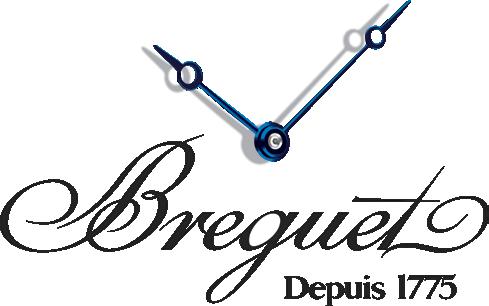
This defence credibility helped the Type 20 become one of the most famous pilot’s chronographs of the 20th century. As the watch’s reputation grew, so too did public demand. “Given the success of the Type 20 military timepieces, Breguet embarked on the production of a civilian model, the Type XX,” a Marca explains.
Both watches have undergone multiple updates in the intervening years. Breguet has recently delivered two brand-new redesigns for the here and now, which coincides with the 70th birthday of the Type 20.
The Breguet Type 20, also known as the “military” model, is inspired by the manufacture’s design codes of the 1950s, says a Marca. The 42mm steel case is capped with a knurled

rotating bezel that encircles a matt-black dial fitted with sword-style hands and Arabic numerals swathed in mint-green lume. The two sub-dials include a running seconds timer and a 30-minute timer, while a date window is built into the 4.30 position. Powering the watch is Breguet’s new “flyback” chronograph movement, which comes with a 60-hour power reserve.
Despite multiple similarities to the Type 20, the Breguet Type XX’s divergences amount to more than the Roman numerals in the name. Essentially, there’s a different dial layout with the inclusion of three counters: a 15-minute timer, a 12-hour timer, plus a seconds timer at nine o’clock. The “civilian” reference’s vintage look is enhanced by the ivory lume on the hands and numerals, while the rotating bezel offers a 12-hour timing scale. Both the Type 20 and Type XX come with a set of two interchangeable straps, one in calfskin leather and the other in NATO fabric, which can be easily swapped with a rapid interchange system.
A chronograph combines a watch’s timekeeping ability with a stopwatch feature to measure seconds, minutes and hours. Before electronic navigation systems, pilots could plot their aircraft’s course by relying on their chronograph, a compass and airspeed indicator. The pilot could calculate their plane’s position by using a technique called “dead reckoning”, where they’d take their previously known position and then factor in their speed, course and the precise amount of elapsed time they’d been flying in that direction. A “flyback” function was particularly useful, enabling a pilot to record consecutive events with a single push – versus a standard chronograph, which would require three pushes to stop, start and reset – providing less of a distraction while flying.
Learn


On the surface, London feels expensive. A glimpse at the pound’s value against the Australian dollar turns me paler than a blob of syllabub, that watery milk dessert inexplicably cherished by generations of Britons. And it looks pricey; all those castles and artworks and extravagant cathedrals. But when you dig into it, the English capital is remarkably generous to visitors on a budget. Last year, a study found that London had more free attractions than any city in the world – 1389 to be precise – and good ones at that: The National Portrait Gallery, the Victoria and Albert Museum and the Tate, for starters. Which should, in theory, leave plenty left over for eating, drinking and getting around. With this in mind, I set myself a challenge: excluding accommodation, could I have a great day out in London with only £100 to spend?
7am
I’m staying at the delightfully friendly Laslett Hotel in Notting Hill (hotel.qantas. com.au/thelaslett), where my package includes breakfast. So fuelled with coffee along with broad bean guacamole and chipotle-roasted tomato on toast, I bounce out into the spring sunshine. The surrounding terraces are bursting with cherry blossoms and camellias, and double-decker buses and black cabs wind their way through narrow streets. But I’ve never believed you get a true sense of a place simply by admiring its prettiest bits so I switch on my pre-downloaded Notting Hill and Black British Culture Self-guided Tour (visitbritainshop.com). The commentary talks about the complex cultural and racial history of the area, from the tragedy of the Grenfell Tower fire to the joys of the Notting Hill Carnival. The hosts are engaging and entertaining and I finish, about two hours later, with a satisfying sense that I’ve discovered much more about Notting Hill than I could pick up from a Hugh Grant film.

10am
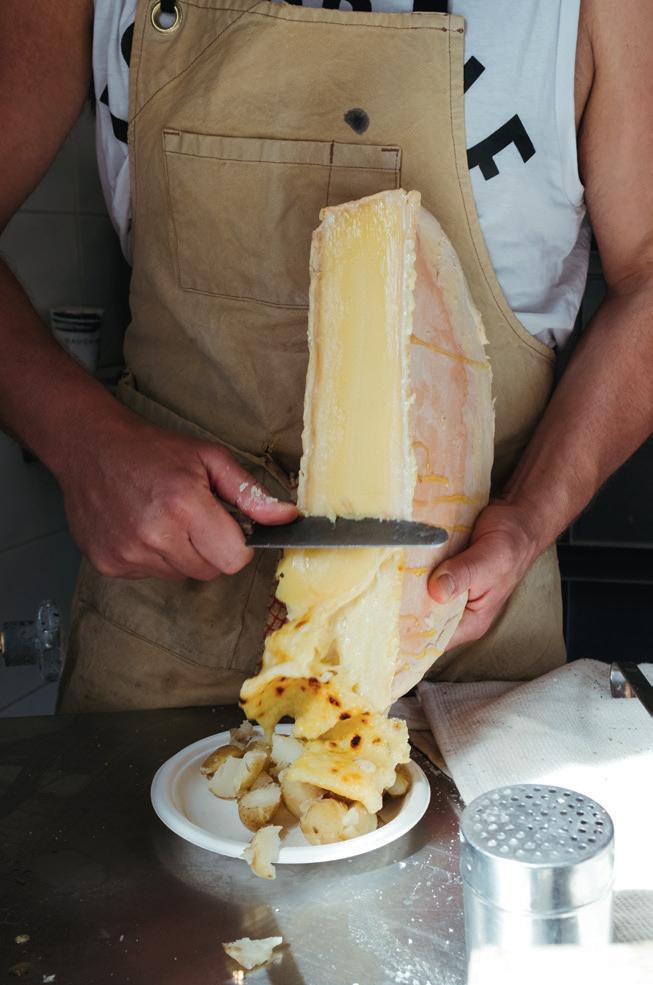
At Notting Hill Gate Tube station, I jump on the Central Line to London Bridge on the south side of the Thames, changing to the Jubilee Line on the way. I could fiddle around with buying a Visitor Oyster card but these require topping up and simply tapping my ordinary Australian bank card using my phone is the easiest, most economical way to get around. Payas-you-go Tube fares in zones one and two (which covers the majority of central London) are capped at £8.10 per day during peak times, which means I can zip all over the network without thinking about it.
I head to the Tate Modern (tate.org.uk) in Bankside to meet up with an old friend, David, and we spend an hour wandering through the galleries, turning up at just the right time to hear a free talk by a tour guide about the Tate Thames Dig exhibit, a cabinet of curios including coconuts, food containers and bones foraged on the muddy banks of the river. David runs into two mates, a couple of dads pushing prams, and I explain my mission. “I have a free family friendly suggestion,” says one. “The Horniman Museum in Forest Hill. The overstuffed walrus is hilarious.” This uniquely British collection of oddities is a kid wonderland, he tells me, especially the walrus, stuffed by clueless Victorian-era taxidermists into a comic tautness that
would make a Real Housewife proud. My schedule won’t allow a visit today but I quickly scribble “weird walrus” in my notebook for another time.
COST
The Tube £8.10
Tate Modern Free

TOTAL £8.10
REMAINDER £85.91
12pm
Breakfast has worn off and we follow the cries of “Strawberries, strawberries! Get your fresh strawberries!” to Borough Market (boroughmarket.org.uk), near the southern end of London Bridge. The snacking choices are endless. I consider a doughnut from Bread Ahead or raw milk gelato from Hook & Son but instead join the queue for one of the legendary cheddar, comté and raclette toasties from Kappacasein Dairy. Hot, gooey and spiked with leek and onion, it’s the ultimate indulgence for under a tenner.
COST £8
REMAINDER £77.91

2pm
I’ve pre-booked a £5 standing-room ticket for a performance of The Tempest at Shakespeare’s Globe (shakespearesglobe. com), the spectacular replica of the 16thcentury Globe Theatre, located next to the Tate Modern. A seat could cost up to £65 but crowding onto the floor of the open-air playhouse, surrounded by its curved timber balconies and raised stage, gives you a sense of what it must have felt like to see a Bard show when the Bard was still with us. The audience is encouraged to laugh, whistle, stamp or shout – and we do. The production by the Globe Ensemble is hilarious, not least because Ariel appears to be based on Bubble, the zany assistant from Absolutely Fabulous. It's the first time I’ve laughed while watching something that bored me senseless in school.

COST
Ticket £5.00
Booking fee £2.50
TOTAL £7.50
REMAINDER £70.41
4pm
There’s just enough time to leap back onto the Jubilee Line to Bond Street Station for one of the best-value afternoon teas in the city at The Wallace Collection (wallacecollection.org). This impressive museum of art has pieces that date as far back as the 14th century, as well as armour and furnishings. Traditional afternoon tea at The Savoy will set you back 75 quid but here you can get all the cucumber sandwiches, scones and fancy cakes you can eat for under 30 (I’m glad I booked
ahead as it’s packed). Full of tiny bites, I spend an hour wandering the museum’s over-the-top homage to noble excess: busts of Louis XIV; paintings of feasts of lobsters and pomegranates; gilded vases; and wildly excessive flocked wallpaper. There’s also a special exhibition dedicated to the late Queen Elizabeth II’s corgis. (Fun fact: one of them boasted the unwieldy name of Windsor Loyal Subject.)
COST
Afternoon tea £29.50
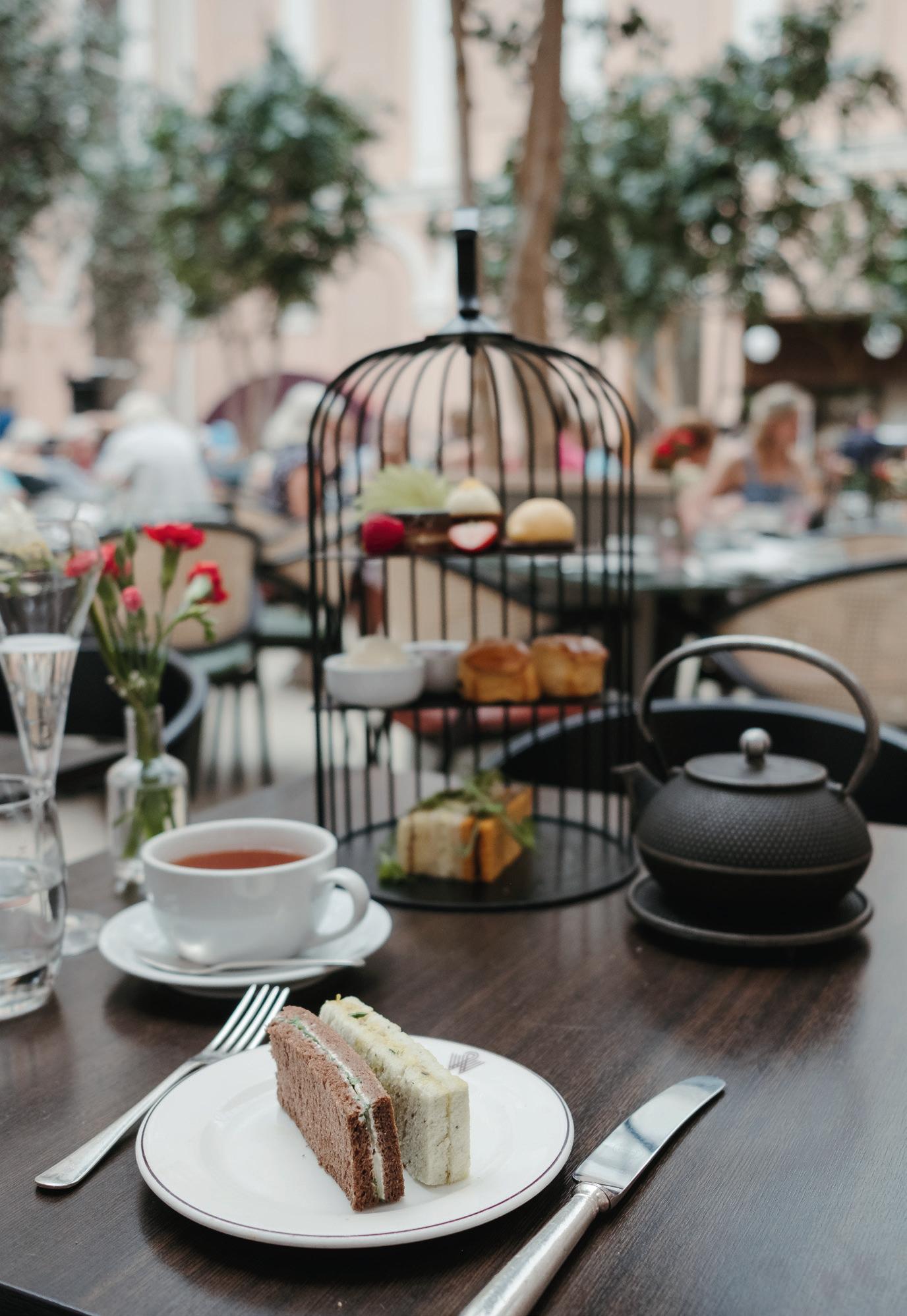
Museum entry Free
TOTAL £29.50
REMAINDER £40.91
8pm
After The Wallace, I return to the hotel to freshen up then it’s another Tube ride over
Whether you’re on holidays or at home, there’s an art to switching off. Hit reset at an innovative boutique hotel or invest in luxury bedding and accessories for an instantly deeper slumber.

Zen out with Shleep’s Calming Blanket made of fine Australian merino wool fleece, a 100 per cent natural fibre. This unique woven fabric was developed by Shleep and it’s as soft as silk and as luxurious as cashmere. Research shows people sleep deeper – and for longer – when they’re surrounded by wool. Plus, this weighted blanket is super-soft, allows for thermal regulation, is anti-allergy, highly breathable and easy care.


*You must be a Qantas Frequent Flyer member to earn and use points.
At The Reef House Boutique Hotel & Spa (hotel.qantas. com.au/reefhouseboutique), located in Palm Cove, North Queensland, PhD candidate and sleep-science researcher Sabine Christelli has helped to develop “Sleep Easy”, a guide that ensures guests achieve quality rest and relaxation. Expect a pillow menu, custom mattress, soothing music, herbal teas and videos and blogs suggesting bedtime routines and relaxation techniques. You can also book spa treatments, stretching classes and beachfront yoga, which should help to expend any excess energy. The sight of palm trees swaying at dusk can’t hurt, either.

Earn 3 Qantas Points per $1 spent* or use your points to shop Shleep at qantas.com/marketplace

Block out cabin lights and glowing screens on your next flight with the Shleep Sleep Mask made with merino knitted fleece and the softest lining for a comfortable snooze.
to Liverpool Street Station to visit Mæne (maenerestaurant.co.uk) in Spitalfields. When selecting eateries for this challenge, I thought about a set menu option (two Michelin Bib Gourmand Indian restaurants are offering two-course prix fixes for £25 or less: Pahli Hill for dinner and Gunpowder as a lunch sitting) but as I’m already heaving with toasties and tea cakes, I decide to do snacks and drinks at a couple of different
venues rather than a major meal. Mæne sits at the top of a Victorian warehouse with views over the twinkling London skyline and is filled with Yves Klein-blue banquettes. Sustainability is big here, with cocktails named according to the kitchen by-products they repurpose. I consider the Potato and the Flat Sparkling Wine but go for the bright blue, mezcal-based Spirulina, accompanied by a mushroom escabeche

tart made with Marmite and “old bread”. The cocktail feels energetically modern, while the Marmite notes in the tart take me back to my years at a British boarding school. You don’t get much more London than that.
COST
Cocktail £12.00
Food £10.00
TOTAL £22.00
REMAINDER £18.91
10pm
I finish the night in Soho, which is wild with late-night revellers. I take a seat at the bar at Paradise (paradisesoho.com), a dimly lit Sri Lankan restaurant. Owner Dom Fernando brings me the late-night Paradise After Dark menu – the snacks are all priced between £5 and £8 and cocktails sneak in under £14. The purple yam and coconut roti, flamed up with nuggets of naga chilli and accompanied by whipped cultured Jersey butter and a spicy sambol, is a firestorm in my mouth. The rambutan and curry leaf Daiquiri is the perfect fire hose.
“Can I get you another drink?” asks Fernando. I’d love to say yes but a quick calculation says the budget’s done: £99.69 on the dot. I smile as I sip the last of my cocktail. London’s the best cheap date I’ve ever had.
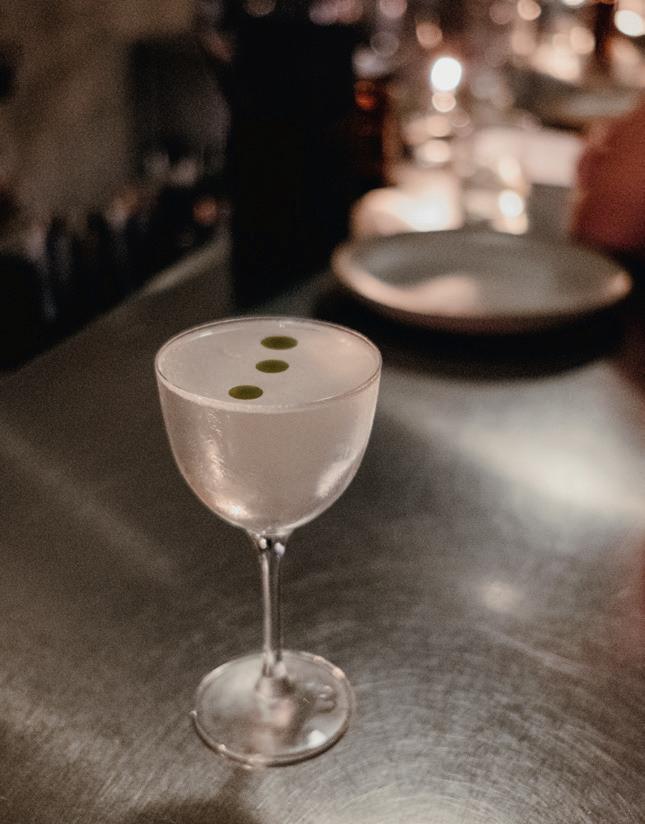
COST
Food £6.60
Cocktail £12.00
TOTAL £18.60
REMAINDER £0.31

















Discover the city’s modern side at a boundary-pushing restaurant and a cool new industrial hub then go back in time to a fantastical hilltop citadel just outside the city.
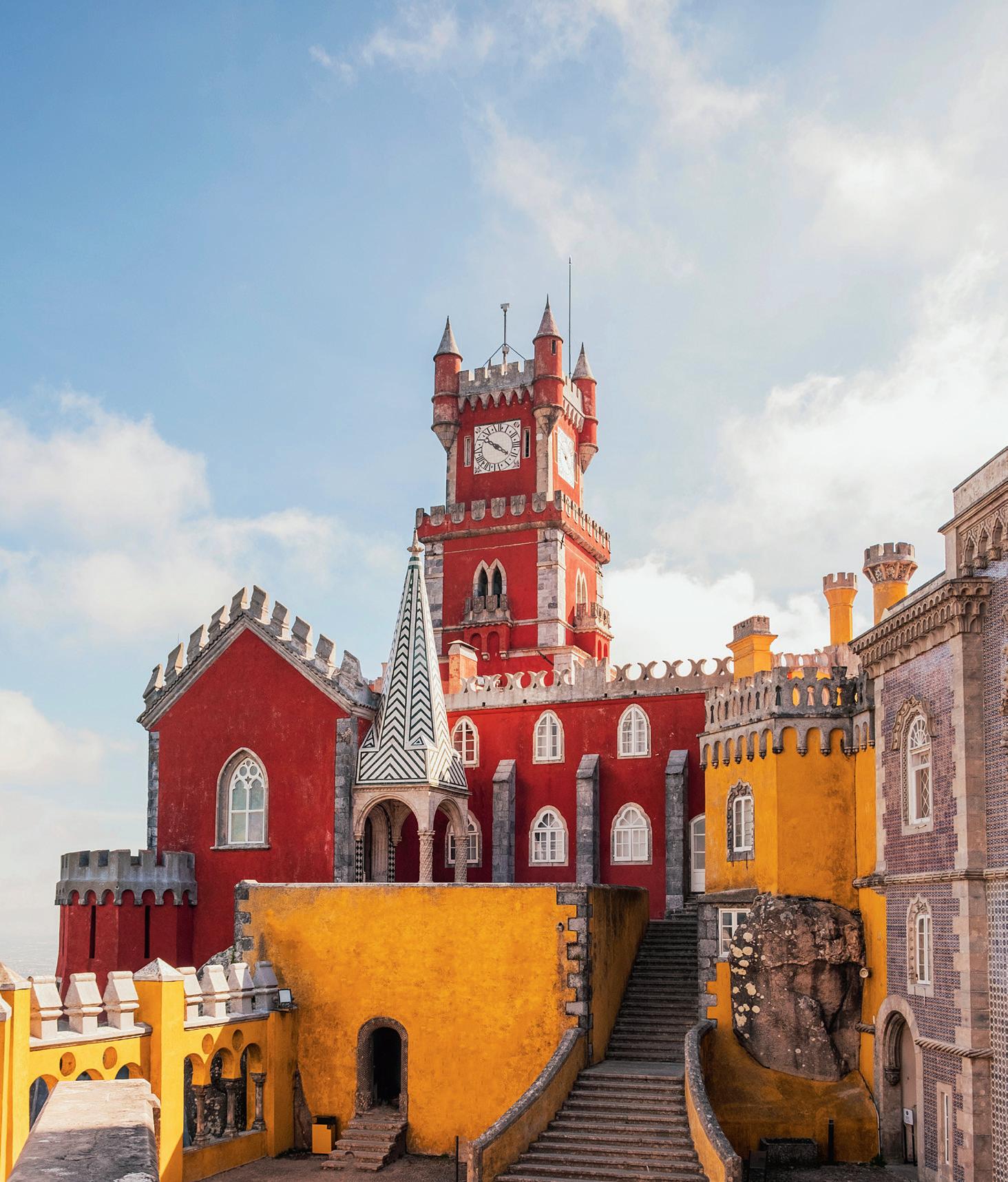
Nestled in the foothills of the Sintra Mountains, 28 kilometres north-west of Lisbon, is the fairytale town of Sintra. Plan a day trip to see the vibrant ochre and mustard-yellow National Palace of Pena, perched high above the city. The palace, built in 1854, will transport you back in time with its intricate stucco, painted trompe l’oeil and enormous stone-floored kitchen. Stroll from the citadel to Casa das Minas on Rua Victor Carlos Sassetti, a restaurant and bar with a delightful terrace, for a glass of vinho verde at day’s end.
Head to the city’s outer west to discover LX Factory (lxfactory.com), a reimagined industrial complex packed with galleries, artisanal shopping and experimental places to eat. Pick up a one-of-a-kind memento like a handmade bracelet from local jewellers Ana Couto and Valérie Lachuer, or grab ceviche and cocktails at the Latin American-inspired eatery Ni Michi. Keep an eye out for special events, including curated artists’ talks and coffee festivals.
Take

The tagline of the colour-splashed Oficio restaurant (oficiolisboa.pt) is “Tasco Atípico”, which translates as a family-style tavern with a difference. Everything here is designed to share, including its signature beef tartare, razor-cut slices of raw mackerel ready to dip in a lettuce vinaigrette and a thick, layered biscuit cake smothered in caramel. The eatery’s blue neon sign reading “Revolution” indicates this style of eating is something of a novelty in this city.
1. Ready
Did you know your Qantas Frequent Flyer card is also your prepaid Qantas Travel Money card? To activate it – or order a new one – visit qantastravelmoney.com
2. Set
View competitive exchange rates with the currency converter. Then buy up to 10 foreign currencies with easy, fee-free load options.4
3. Go!
You’re ready to go. Use your Qantas Travel Money card everywhere Mastercard® is accepted and earn Qantas Points on eligible purchases.
Presented by Qantas Travel Money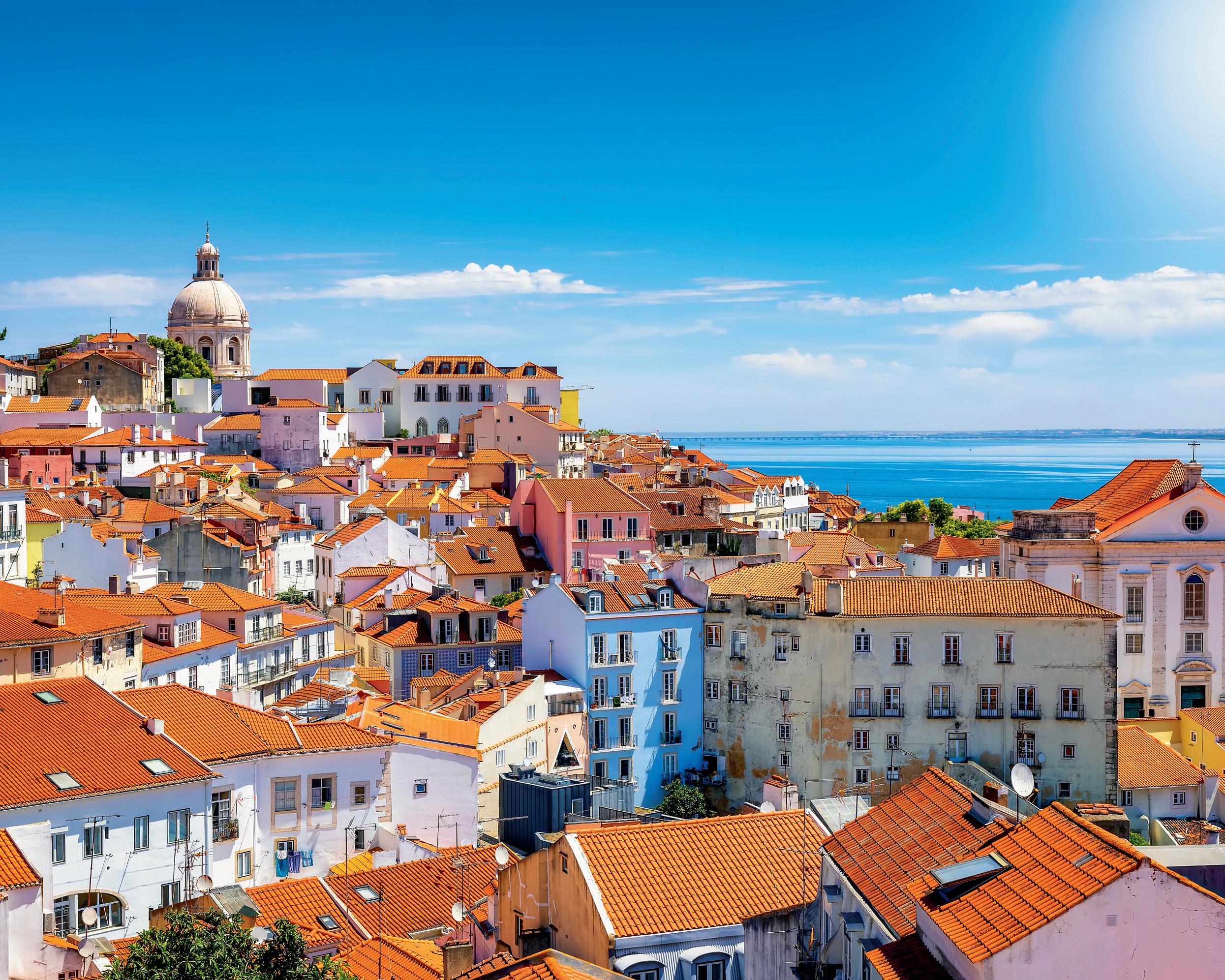



They’re cool, great value and in trending locations around the world. These are the boutique hotels to book before everyone else does.
By Hannah-Rose YeeYou’ll be in rarefied company at Shila (hotel.qantas.com.au/ shilaathens), a renovated 1920s townhouse turned boutique hotel in Athens. First, there’s the location: close to the Parthenon in the Kolonaki neighbourhood, the fashion and dining heart of Greece’s capital. (You can order from some of the hotel’s favourite local restaurants straight to your room.) Then there’s the size –just six generous, beautifully appointed suites with antique metal bed frames and distressed velvet couches in shades of raspberrypink. It’s so cinematic Versace and Dior have shot campaigns here. And then there’s the vibe. Don’t expect a front desk or prosaic lobby bar here. Instead, head to the rooftop, where the long communal table is made for mingling with your fellow guests over cocktails as a visiting DJ spins tracks, a sushi restaurant hosts a supper club or a local artist stages their latest exhibition. Shila is the coolest address in town.
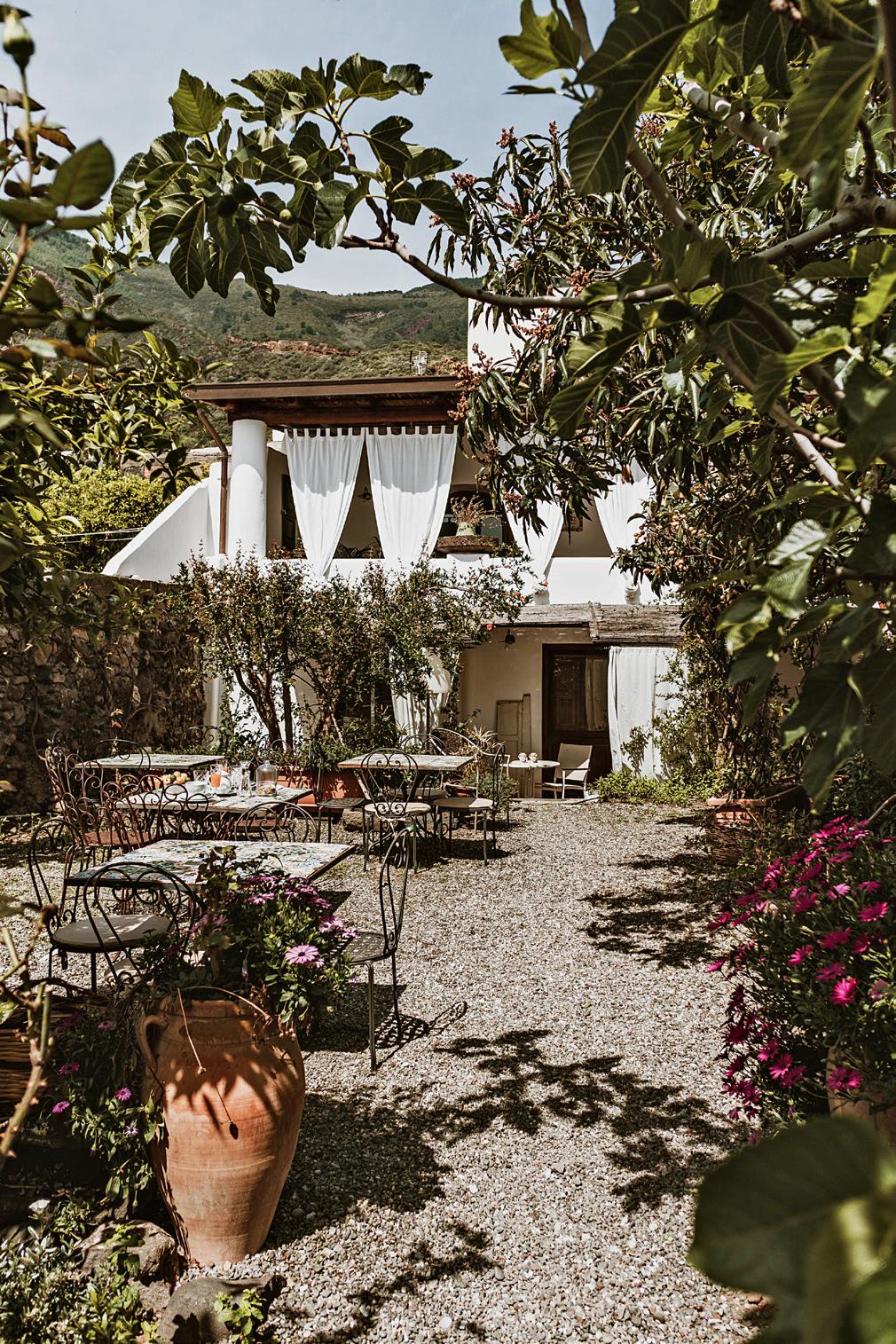

The quintessential island hotel needs to be close enough to the beach that you can taste saltwater in the air. It should have a small number of breezy rooms, with minimal clutter so you never feel too crowded after a busy day of swimming, drying off and swimming some more. And it must have a courtyard garden, bursting with figs and pomegranates, designed for catching the sun over an alfresco breakfast, lunch and dinner. I Cinque Balconi (icinquebalconi.it), a 10-room property that’s just a short stroll from the main port on Salina in the Aeolian Islands (a ferry ride from Palermo, Sicily), has all these charms and more. Housed in a building that’s been passed down through the same Sicilian family for four generations, the hotel is imbued with a welcoming and convivial atmosphere. The island of Salina is known for its sweet wine, juicy capers and some of the most arresting sunsets you’ll ever see.
SALINA, ITALYThe allure of rural Provence meets the style and energy of Paris at Le Moulin (hotel.qantas.com.au/lemoulinlourmarin) in Lourmarin. An hour from Marseille Airport by car and on the road between Aix and Avignon, you’ll find a pretty village that was once home to the philosopher and writer Albert Camus. Inside a renovated 18th-century mill in the centre of town, this sundrenched 28-room hideaway is equipped with everything for a summer stay: pool, restaurant, terrace for aperitifs, outdoor cinema and proximity to the village market for buying linen. The rooms are lovely – sisal carpet with rattan armchairs and an ochre-tiled bathroom – while the breakfast is exemplary: fresh fruit juices, a basket of regional breads with local honey and organic free-range eggs. On your way out, pick up something from Les Commissions, the hotel’s petit deli, whether it’s a jar of preserves as a souvenir or a baguette and pastry for the road.

Opened in 2020 by Lev Glazman and Alina Roytberg, the pair behind cult beauty brand Fresh (yes, you’ll find its products in the bathrooms), this hotel (themaker.com) inside three grandedame buildings is on the best street in Hudson, upstate New York. About a 2.5-hour drive from JFK Airport, it’s an ideal base for exploring the town, a shopping destination for antiques and homewares. But why head out when you can stay cocooned in comfort? Each of the 11 rooms is named for a creative vocation, which is reflected in their interiors: The Writer features walls lined with bookshelves, while The Gardener has a gallery of floral prints. What unites them is a sense of decadence and luxury, right down to details such as fireplaces, chaise lounges, fringed lampshades and velvet throws in shades of sapphire and ruby. There’s also a great Italian restaurant, a dark and sexy lounge bar and a juice counter in the lobby. Staying in has never been such a pleasure.
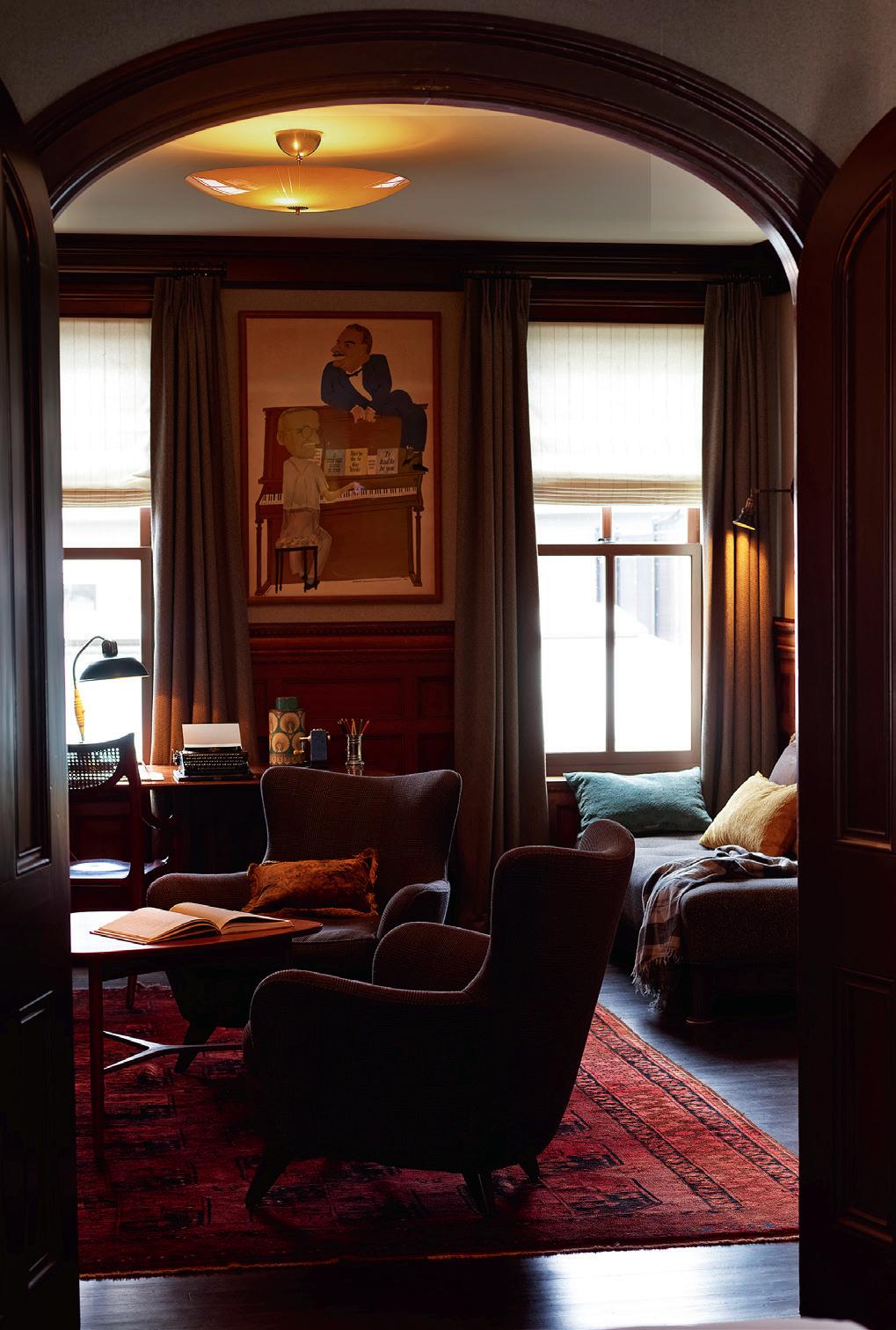
Tucked away only a short walk from the hustle of Orchard Street, surrounded by greenery and featuring Scandi-minimalist interiors, this 34-room getaway (hotel.qantas.com.au/lloydsinnsingapore) feels like a breath of fresh air. Rooms are stripped back with white walls and polished concrete floors and some feature industrialsleek outdoor terraces. The aesthetic might be simple but there’s no shortage of thoughtful touches, such as long hanging rails so you don’t need to live out of a suitcase, plus a rooftop terrace, small pool and outdoor kitchen equipped with microwave, coffee machine and cutlery. Travelling for work? Business Rooms have an ergonomic desk and chair, as well as fast wi-fi. But if you’re in Singapore for a break, the location couldn’t be better – within strolling distance of some of the city’s best chicken rice (Boon Tong Kee and Five Star, next door to each other on River Valley Road) and designer malls.
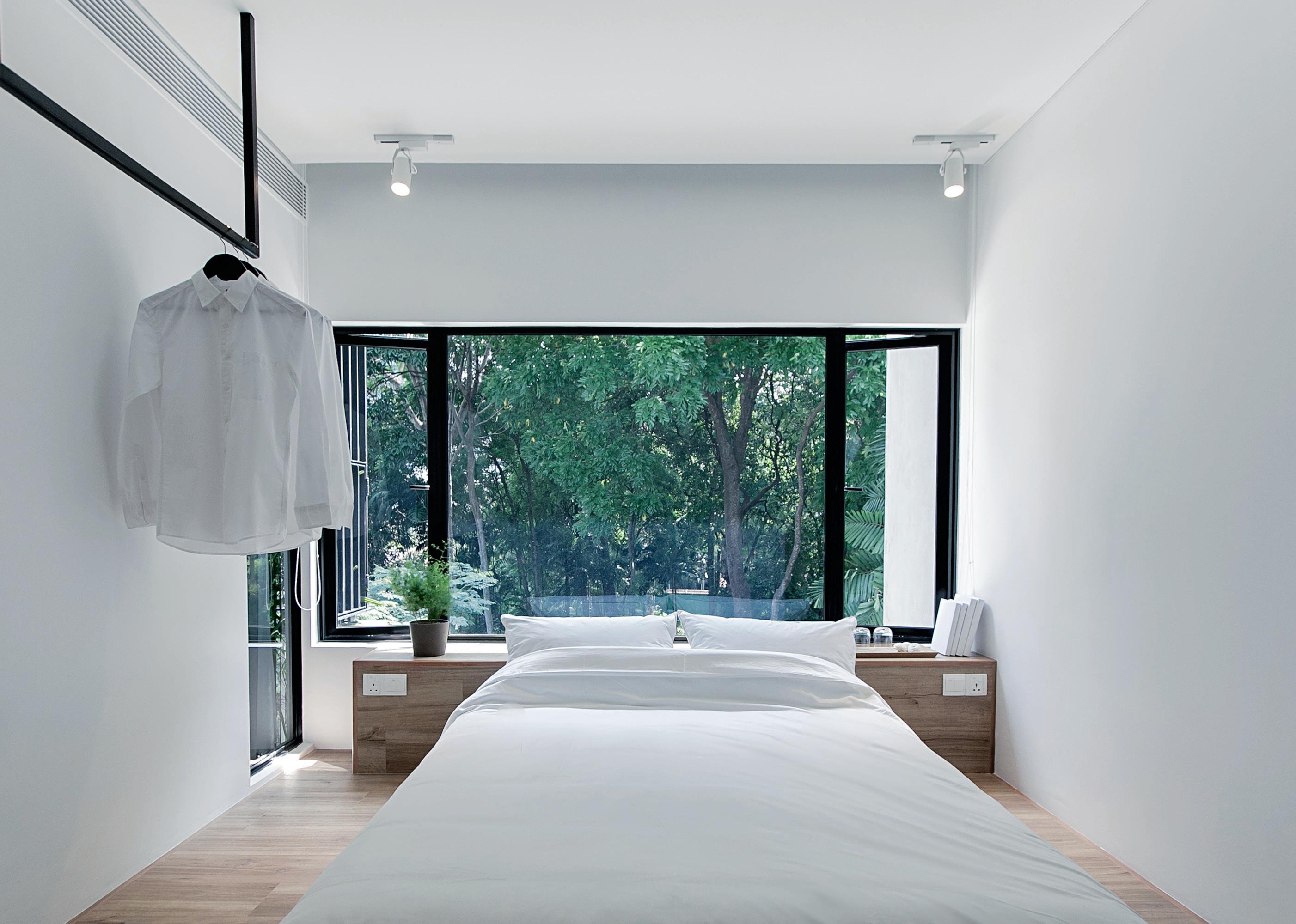
More is more at this 14-room gem (hotel.qantas.com.au/thedairy private) in downtown Queenstown. What was once a clapboard corner store is now an alpine bolthole, kitted out in stylishly clashing wallpapers and richly coloured soft furnishings courtesy of House of Hackney. The best view, though, is of the Remarkables, which can be seen from the Oasis rooms and in spectacular 180-degree fashion from the hot tub in the courtyard. The property prides itself on its sustainability credentials, including using as little plastic as possible, and its spotlight on local goods, such as stellar South Island wines complimentary for guests during the daily happy hour. And once a corner store, always a corner store: there’s a lolly station where guests can fill their pockets with New Zealand favourites. Pineapple Lumps! Jet Planes! Sweet as.

There are two sides to Moss (hotel.qantas.com.au/mosshotel), which parcels its 41 rooms over two Georgian warehouses just a few metres apart on Hobart’s harbourside Salamanca Place. Moss 25 is intimate and quiet, while Moss 39 sits right in the thick of things so you can savour as much of the city’s life as possible. Whichever you choose, you’re guaranteed immersion in the exceptional restoration by Circa Morris-Nunn Chua Architects, who preserved the heritage façades while incorporating hints of Tasmania’s wilderness. Dark oak accents are paired with original sandstone walls and some rooms in Moss 25 look onto an internal hanging garden. Our pick is the Grove Room at Moss 39, with its views over Salamanca and bathroom lined in forest-green tiles.
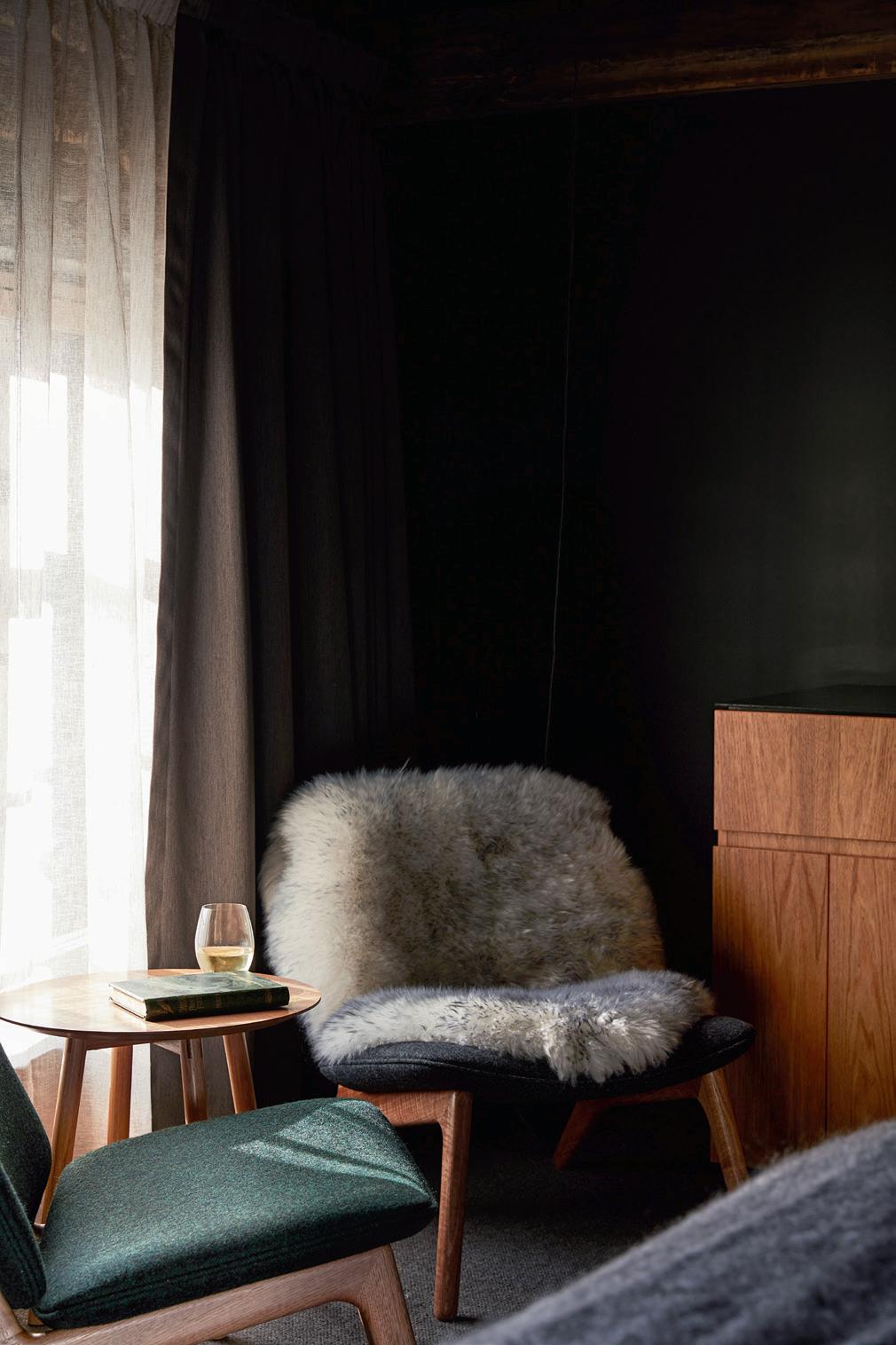






Praise be, what was once a nunnery is now one of Auckland’s best stays. In the chic suburb of Grey Lynn, The Convent (theconventhotel. co.nz) is a few minutes walk from some of the city’s top cafés and restaurants – try Lilian (lilian.co.nz) for woodfired pizza and the pastries at Florets (florets.nz) – as well as the Ponsonby shopping area. But what makes it special is the old-school vibe: real keys instead of electronic cards, relaxed service and a rustic aesthetic with a retro colour palette (caramel leather sofas with aqua-blue cupboards – genius). Designed with city-break travellers in mind, the space is cosy and several of the 22 rooms have patios, sitting areas or kitchenettes. The in-room snack bar is complimentary and stocked with local treats, including cookies, popcorn, chips and blocks of Whittaker’s chocolate (of course). But don’t over-indulge because Ada, the fantastic on-site Italian restaurant, slings bowls of pork shoulder ragu and heavenly ricotta cavatelli.








Pair fruity SC Pannell Sauvignon Blanc 2022 (Was $366 or 58,430 PTS Now $299.88 28,800 PTS per case of 12) with grilled fish or taste the summer in Stone & Wood’s tropical Pacific Ale (Was 13,200 PTS





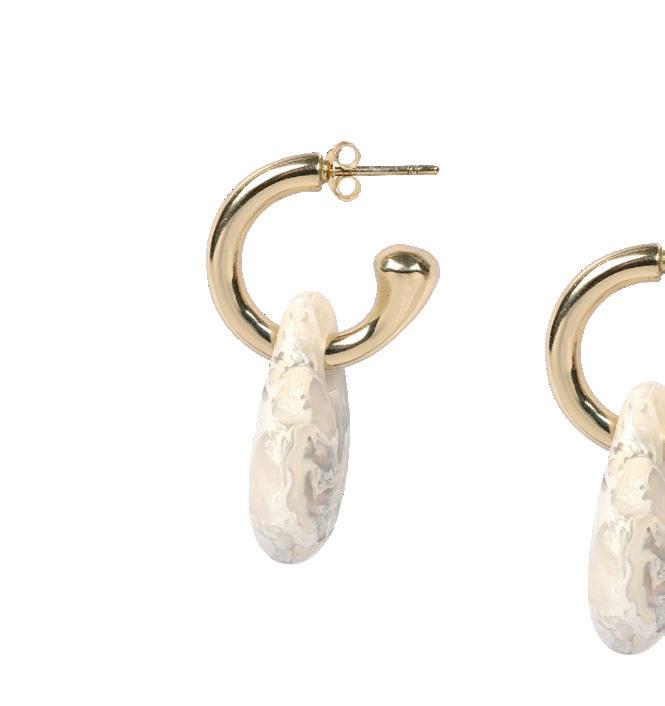
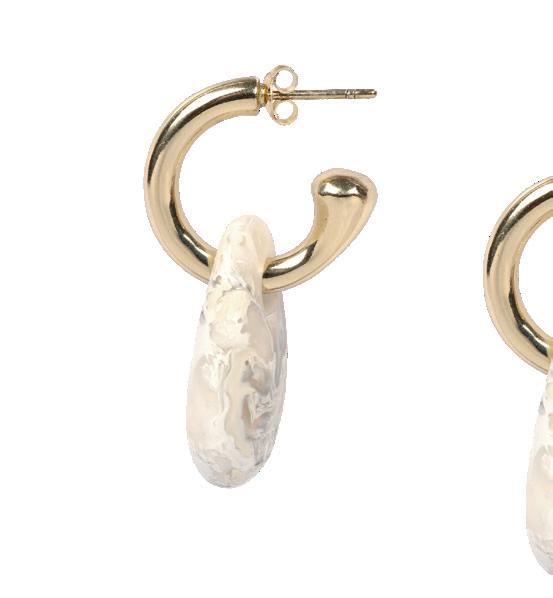



Now $78 or 10,800 PTS per case of 24) qantas.com/wine


J’ai Soif Carafe and Glass in Smoke

$89 or 15,480 PTS qantas.com/ marketplace

Sip
Stock up your cellar with bold reds like Penfolds Bin 707

Cabernet Sauvignon 2019 Gift Box (Was $790 or 137,390 PTS
Now $699 or 100,000 PTS
Cullen Cabernet Sauvignon

Merlot 2021 (Was 46,950 PTS
Now $270 or 30,000 PTS
case of 6) qantas.com/wine
HUGO BOSS

Men’s Barnabie
Pin-Buckle Leather Belt
$149 or 25,920 PTS
qantas.com/ marketplace
Use Qantas Points to book designer digs in the capital of cool or upgrade your flight, tech, home and wardrobe. Take off


Fly Sydney to New York (via Auckland) from 55,200 PTS + taxes, fees and carrier charges or use your points to upgrade. qantas.com/upgrade


SAMSONITE

Lite-Cube Prime Spinner $1,299 or 225,920 PTS qantas.com/marketplace
CHIVAS

Now
SCANLAN THEODORE
Silk Drape Neck Dress $850 or 147,830

qantas.com/ marketplace

There are hundreds of ways to use Qantas Points across travel, premium stays, designer fashion, top beauty brands, home, wine and more. Don’t have enough points? You can use as little as 5,000 points towards your purchase using Points Plus Pay. Visit qantas.com/usepoints
qantas.com/
MAISON BALZAC
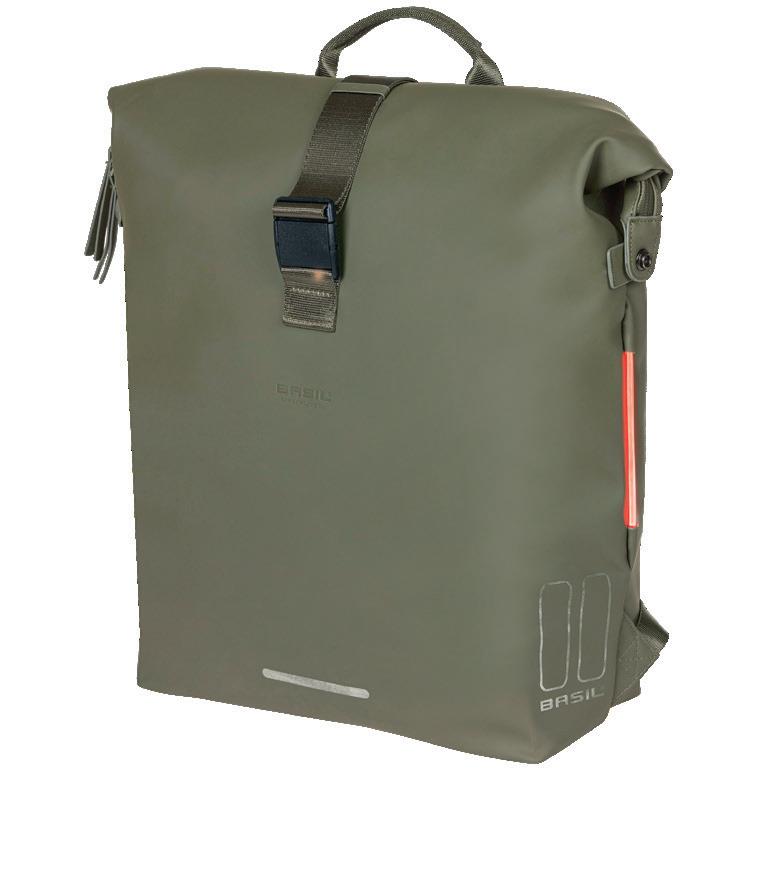
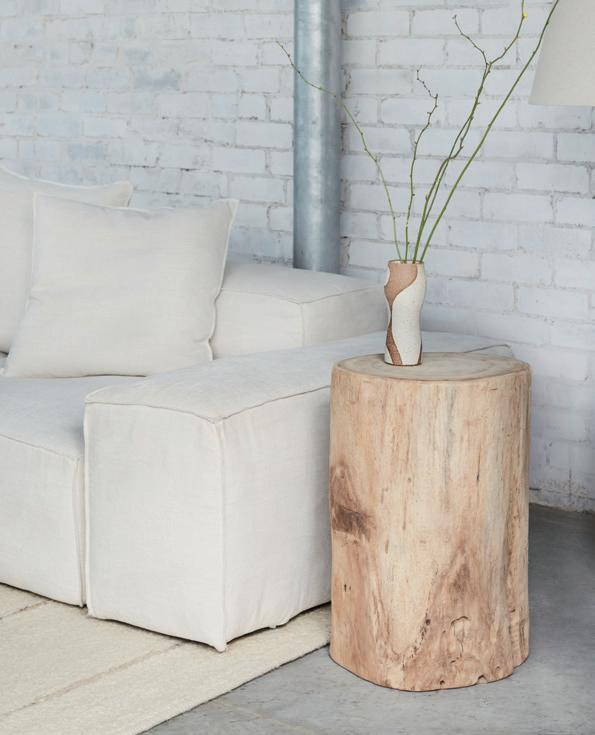






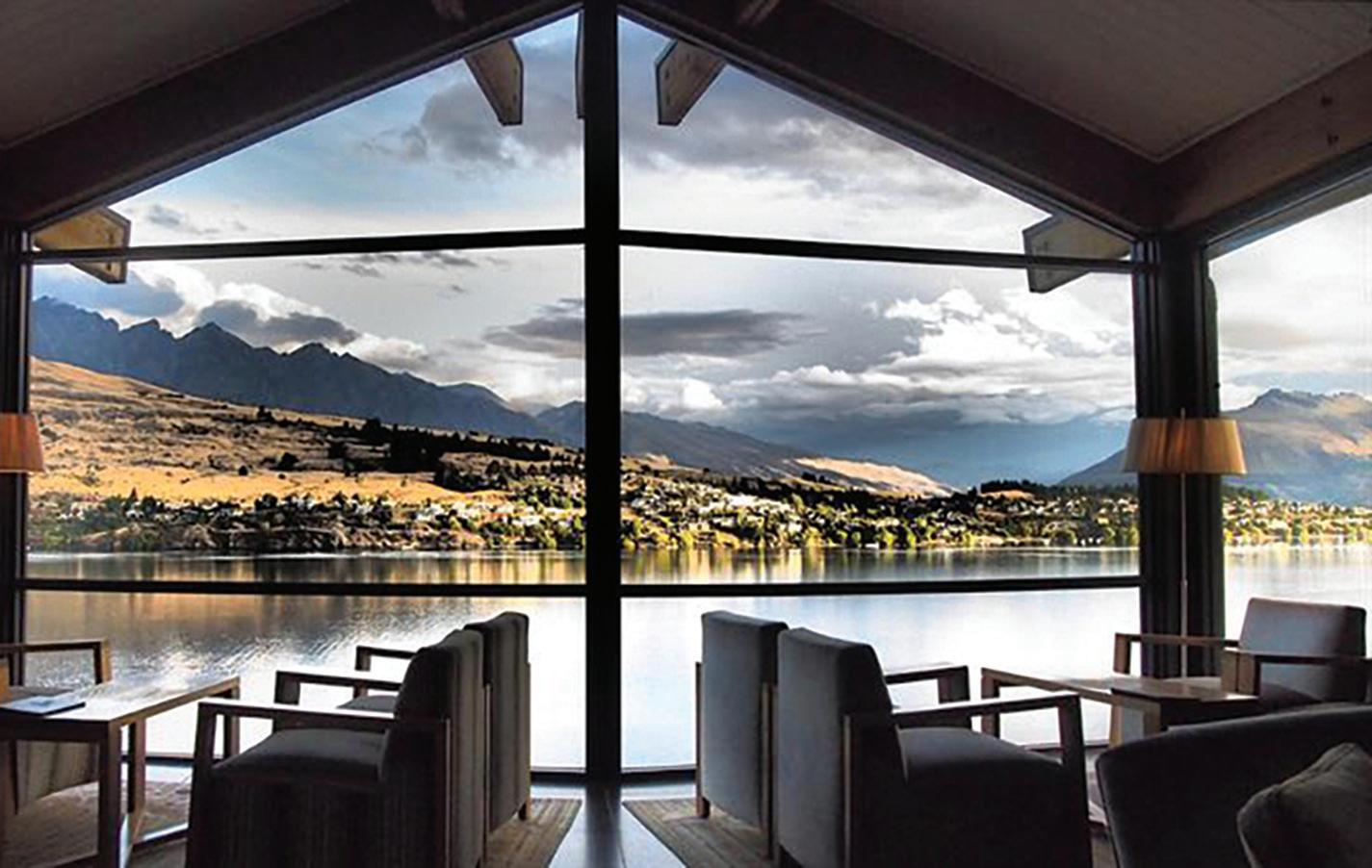




Tokyo, Los Angeles, Paris, Sydney –the world’s most expensive cities?
Not if you follow the inside running on where to stay, eat, drink and play.

Tokyo is meant to be confusing. More than 400 years ago, it was a castle town surrounding what is now the Imperial Palace, its alleyways designed to confound potential invaders. The alleyways remain but today they’re lined with restaurants, bars and shrines, forming a streetscape that defies planning and confounds visitors (take heart, even locals get lost).
When friends visit, I recommend boutique stay OMO5 (hotel.qantas.com. au/omo5tokyo), where the rooms combine modern and traditional Japanese design. It’s in the lively Otsuka neighbourhood, on the Yamanote train line that loops around the city; a prepaid IC card available from ticket machines at stations lets you tap to hop on and off trains and buses.
About 10 minutes walk away, Michelinstarred Sosakumenkobo Nakiryu (fb.com/ #nakiryu) is excellent. While there are 200 Michelin-starred restaurants in Tokyo, they’re not all expensive. At Nakiryu the specialty is Dan Dan noodles (tantanmen) but I usually get the Tokyo classic shoyu soy sauce ramen – chicken broth with noodles, bamboo shoots and thick slices
of chashu pork. It opens at 11.30am for lunch but people start lining up at least 30 minutes before. Like everything in Tokyo, the line moves quickly.
About 20 minutes on the Yamanote line takes you to Shibuya, the centre of neon lights and new trends. At Trunk(Kushi) (trunk-hotel.com), a few minutes walk from Shibuya Crossing, enjoy authentic yakitori without the chain-smokers and scrawled hiragana menus of other local spots.
In fact, you’ll find hot yakitori and icecold beer near most train stations. I often meet friends for drinks around Dogenzaka, a street that runs west from Shibuya Station. At Mikkeller Tokyo (mikkeller.jp) you can sit outside with a craft beer but if it’s a celebration, we go to The SG Club (@the_sg_club) near Shibuya Kitaya Park. The ground floor is Guzzle, a fun bar with a great selection of cocktails. I love the Lemons Sour, which is hard lemonade with Bombay gin, lemongrass and lemon verbena. Speakeasy Sip in the basement has even more adventurous drinks.
After moving to Tokyo, I lived north of Ueno Station, where the streets retain the
atmosphere of the Edo period. When I’m feeling nostalgic, I walk from Ueno Park to Nezu Shrine and along the way, I drop by Kayaba Coffee (6-1-29 Yanaka, Taitō; +81 3 5832 9896), which opened in 1938. A local non-profit group recently renovated the space, keeping the exterior intact but adding modern conveniences such as a La Marzocco espresso machine. I go upstairs to sit on the tatami mats and have its very good take on the classic egg sando.
Growing up in Sydney didn’t prepare me for Tokyo’s humidity. In high summer I try to escape it by heading to Todoroki Valley, a few train stops south-west of Shibuya. Wooden boardwalks skirt the narrow Yazawa River, which is shaded by a thick canopy of trees that keep the valley several degrees cooler than the rest of the city. The walk takes you past a waterfall, several temples and a traditional tea shop where you can grab a cold drink.
On Tokyo’s eastern side, about 30 minutes by train from Otsuka, Kiyosumi Shirakawa was once an unfashionable, industrial part of the city. Now it’s buzzing with cafés and craft breweries, bookshops and galleries, along with traditional sumo stables and artisan workshops. Drop in at Tokyobike Tokyo (tokyobike.com) to rent wheels and explore; it’s a 10-minute cycle to the Museum of Contemporary Art Tokyo (mot-art-museum.jp) in Kiba Park.
High above the city streets, Tokyo’s rooftops are another world. On top of the Seibu department store (sogo-seibu.jp.) in Ikebukuro, one stop from Otsuka Station, there’s a reproduction of Claude Monet’s garden at Giverny – complete with picturesque bridge and a pond full of waterlilies. In summer, the city’s rooftop beer gardens make the most of the long days. My favourite is at Lumine (hello-bbq. tokyo), a department store in Shinjuku, that goes all-out with a cinema under the stars, DIY barbecue and fairy lights. Sipping a cocktail served in a whole pineapple while Japanese indie films play and couples pose next to a fairground carousel is a bit confusing – but that’s Tokyo.
A sprawling behemoth of a city, Los Angeles often gets a bad rap, its critics citing traffic on the famous freeways and a lack of substance. When I arrived here in 2008, I, too, misunderstood this diverse, multilayered West Coast metropolis. In the 15 years since, I’ve come to realise that there’s much more to my adopted home than meets the eye. Los Angeles may require a bit of effort (and local intel) to appreciate but don’t be surprised if that slow-burning courtship turns into a lifelong love affair.
Consider basing yourself in the city’s evolving Downtown at the 268-room Hotel Figueroa (hotel.qantas.com.au/ hotelfigueroa), which dates back to 1926, when it was a women’s hostel – the only hotel at the time where women didn’t need a male chaperone – and, later, a gathering place for social activism.
It reopened in 2018 after extensive renovations and the Fig now boasts elegant, art-filled rooms and a fine-diner, Sparrow Italia, where modern Italian fare is served, including pickled mushroom carpaccio with shaved black truffle.
The property’s coffin-shaped pool, set against a floral mural backdrop (left), is one of my favourite spots in LA for an Instagram snap.
From the hotel it’s a short walk to Pershing Square, the starting point of the Los Angeles Conservancy’s Historic Downtown walking tour (which few locals even know about; laconservancy. org). The two-and-a-half-hour wander highlights some of the city’s Beaux-Arts and Art Deco gems, touching on history, architecture and preservation efforts. The Central Library’s stencilled dome and world-globe-shaped chandelier gets me every time.
When you’re hungry and if you’re willing to drive (hiring a car is the easiest way to see the city), venture 20 minutes north to the hipster neighbourhood of Silver Lake and family-run Pine & Crane (pineandcrane.com). This is where my kids ask to go on their birthdays and we always order the bok choy-stuffed potstickers and scallion pancakes.
We’ve all heard of Hollywood but Culver City, in LA’s west, is historically
recognised as the birthplace of modern cinema as it was home to the Metro Goldwyn Mayer (MGM) studios from 1924 until 1986. Culver City has flourished again in the past decade or so but there’s one downside: parking can be a challenge. Instead, explore its downtown area on foot and stop by the landmark Culver Hotel (culverhotel.com) – where the Munchkins from 1939’s The Wizard of Oz stayed during filming – for afternoon tea (or something stronger) on the lovely, lush garden patio.
Further east, along Washington Boulevard, the Platform LA (platform losangeles.com) is a high-end complex of indie designer shops (Reformation, Wyeth, Teller) that’s a fun stroll, even if a $500 silk blazer is a bit beyond the budget. I like to console myself with a scoop from the on-site outpost of Van Leeuwen, a fab ice-creamery with delicious options, such as chocolate caramel cheesecake.
For more of the see-and-be-seen vibe (this is LA, after all), book a patio table for an early dinner at stylish eatery Gracias Madre (graciasmadre.com) in West Hollywood, where celebrities (maybe Mariah Carey, perhaps Natalie Portman) are known to enjoy the refined vegan Mexican fare, including esquites, potato pimiento flautas and lentil tacos with salsa pasilla.
From here take a Lyft, LA’s preferred rideshare (lyft.com) for the 17-minute trip to Lemon Grove (lemongrovela.com), a new rooftop restaurant and bar in Hollywood, for a Gintonico cocktail infused with lavender and views of Tinseltown’s most famous sight, the Hollywood Sign (which celebrates its 100th birthday this year). A glimpse of those almost 14-metre tall corrugated-steel letters always brings a smile to my face.
Like any city, there’s no right or wrong way to explore Los Angeles; the art, culture, architecture and dining options are endless. Every neighbourhood and community has its stories and every local (and visitor) writes their own.

 By Alice Cavanagh
By Alice Cavanagh
Paris’s appeal is eternal. While locals like me occasionally embrace the cinematic fantasy embodied by Jean Seberg, Jane Birkin and Audrey Tautou’s Amélie, it’s just a veneer that conceals the authentic day-to-day charm of the French capital.
Beyond the central tourist beat, the city is a hive of neighbourhoods, bustling with small businesses, restaurants and cafés. It embodies the concept of the “15-minute city” co-opted by socialist mayor Anne Hidalgo but originally coined by Colombian-French urban planner Carlos Moreno to describe a walkable city in which the daily essentials, along with entertainment and culture, are all within a quarter-hour radius of your home. In Paris, even antique markets (known as brocantes) move neighbourhoods each weekend (you can find the calendar at brocabrac.fr).
Certainly, it applies to my stomping ground, the 11th arrondissement, a sizable suburb that stretches from République to Bastille and skirts the Marais – once an alluring hot spot, now a homogeneity of global fashion boutiques.
The 11th is best known as a food-lovers’ hangout, with a line-up of neo-bistros and wine bars fronted by young chefs. A few addresses stand out and are easily accessible by foot if you stay at charming Maison Br é guet (hotel.qantas.com.au/ maisonbreguet), a boutique hotel with an inviting internal courtyard, which is small enough for staff to know your name. Start the day at Dreamin Man (@dreaminman_ paris), where Japanese owner Yuichiro Sugiyama reigns as king of the café au lait, while his pastry-chef partner, Yui Matsuzaki, bakes a daily spread of sponge cakes and seasonal fruit tarts. The hole-in-the-wall spot is prime for people-watching and the same can be said for Folderol (folderol. com), a natural wine bar that serves artisanal ice-cream in unusual flavours, including olive oil, pomelo earl grey, cold brew and apricot verbena. Show up early if you want to perch at the bar with a glass of local pét-nat; otherwise, the enjoyment spills onto the street.
When it comes to lunch – still a threecourse affair in France – Mokonuts (mokonuts.com) is always top of my list.
Run by Japanese-Lebanese couple Moko Hirayama and Omar Koreitem, this casuallooking, breakfast and lunch-only address serves up some of the best plates in the city. (Book lunch well in advance; it’s not open on weekends.) Each day, Koreitem conjures up concise Middle Eastern-influenced dishes, such as chargrilled sardines, lemon confit and chermoula, complemented by Hirayama’s sweet creations like strawberry tart, mascarpone and thyme.
But there’s no need to forgo traditional French food. Popular newcomer Bistrot ses Tournelles (bistrotdestournelles.com) offers all the greatest hits, including filet de boeuf, sauce au poivre and frites. And don’t skip dessert – the tarte tatin is sticky perfection.
The best pastime in Paris is cycling and with plenty of bike-sharing companies, both electric and pedal, it now ranks among the world’s top 10 cycling cities. It’s even on track to build 180 kilometres of segregated bike lanes by 2026, following the successful pedestrianisation of the northern bank of the River Seine, which gives you a postcard view of the city’s historic bridges by two wheels or foot.
For more than two years now, Rue de Rivoli, the capital’s main artery from Place de la Bastille to Concorde, has been a bikeonly boulevard with token lanes for taxis and buses. If you take this route, drop by art museum Bourse de Commerce –Pinault Collection (pinaultcollection.com) in the 1st arrondissement, a former grain exchange redesigned by Japanese architect Tadao Ando that houses French billionaire François Pinault’s impressive haul of contemporary art.
To see another side of Paris, I always recommend La Coulée Verte, an elevated, garden-lined trail (a repurposed aqueduct and train line) that takes you 4.5 kilometres from Bastille via walking paths and tunnels to the evergreen Bois de Vincennes. The promenade is at its loveliest in spring when the city emerges from the bleak winter and the climbing roses bloom – along with the collective good humour of Parisians.
New York has its beeping taxis, Mumbai has its salty, sticky air and Sydney has its image. For visitors, that might be the sparkling beaches or iconic harbour landmarks. But as one of the 5.3 million people who call the city home, my mind goes to its vibrant food scene, varied neighbourhoods and the beloved “bin chickens” (aka the Australian white ibis) who stalk our streets. And, yes, the Sydney Opera House – the 50-year-old Modernist masterpiece never fails to inspire awe.
In Surry Hills, a dynamic neighbourhood a 30-minute walk from the city centre, the Ace Hotel (hotel.qantas.com.au/acehotel sydney) is the city’s coolest stay; the artfilled lobby has become a hangout for local and visiting creatives. Central Station, which connects to all the city’s train lines, is an easy walk away, as is the 333 bus that goes direct to Bondi Beach. Save your beach jaunt for a Sunday so you can peruse Bondi Markets (bondi markets.com.au) for local designer and vintage finds. Get there early to avoid the crowds and snag the best buys (then plunge into the Bondi Icebergs Pool at the beach’s southern end).
Recently, Sydney’s CBD has experienced a reawakening; there’s more outdoor dining, public art and green space, plus it’s more walkable and interlinked. My theory is that every Sydneysider has a favourite walk. One of mine starts at the Art Gallery of NSW (artgallery.nsw.gov.au) and meanders through the Royal Botanic Garden to Circular Quay. It used to take an hour but with the gallery’s new (and free) Sydney Modern Project wing, you’ll need at least another hour for exploring. Follow the shoreline to the Museum of Contemporary Art (mca.com.au), where, besides the fascinating art, its café and sculpture garden has a brilliant view of Sydney Harbour. If gazing at the water isn’t enough, jump on a Lime bike (li.me) – an app-based bike-share company – and cycle under the Harbour Bridge to Barangaroo and new swim spot Marrinawi Cove.
Barangaroo has plenty of glam dining options but local food-lovers are decamping to one of the oldest developed districts of Sydney, The Rocks. The pandemic saw fresh investment bring new life to the historic precinct. Le Foote (swillhouse.com)
serves big Mediterranean energy (and food) in a venue with a rich 185-year history. Drop in for a quick bite or stay for a feast. The mosaic-mural-flanked dining room is gorgeous but the more intimate courtyard is just the ticket for an early dinner. As is the cheese pie, Rangers Valley bavette and banana parfait.
Another white-hot CBD haunt I’ve fallen in love with is Palazzo Salato (palazzosalato. com). Aside from the spaghetti alla chitarra and 600-strong wine list, it has a bright, convivial feel – like an old-school trattoria but sexier. Afterwards, pop down to Ginny’s Canoe Club (ginnys.sydney), a basement bar with first-rate bartenders close by.
Downhill from the Ace, the buzzy Thai Town precinct covers a couple of city blocks near the Capitol Theatre. I love Boon Cafe (fb.com/booncafethai) for breakfast and lunch (the pandan croissant is an essential) and the attached Jarern Chai grocery for snacks. Don’t miss the district’s dessert vendors (the coconut and pandan treats are addictive). Nearby, on Sussex Street in Chinatown, my favourite place to take friends is Spice World (fb.com/ spiceworldaustralia), a hot-pot institution and feast for the senses. Expect arcade games, a DIY sauce bar, Wagyu beefdressed Barbie dolls and a Szechuan chilli soup base that arrives frozen in the shape of an adorable animal before dramatically melting down into a delicious spicy broth.
A guide to my city wouldn’t be complete without mentioning my home turf – and the birthplace of the urban Aboriginal civil rights movement – Redfern. Today, the neighbourhood brags a cool and creative feel and is a laid-back weeknight destination. My picks: Arcadia Liquors (arcadialiquors. com) for drinks and toasties; The Bearded Tit (thebeardedtit.com), queer bar and LGBTQIA+ safe space, for the live shows; La Coppola (lacoppola.com.au) for the best woodfired gluten-free pizza around; and Ciccone & Sons (cicconeandsons.com.au) for traditional gelato so good it will haunt your dreams. Overwhelmed by choice? Don’t worry, we locals feel the same.








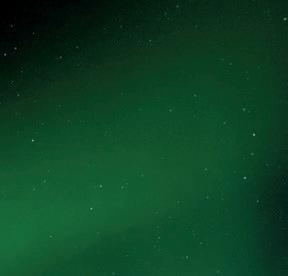




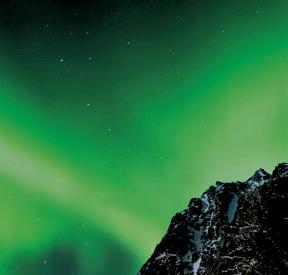
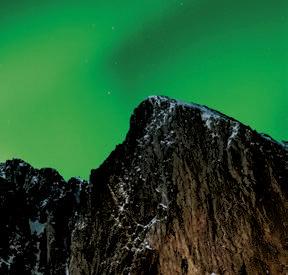
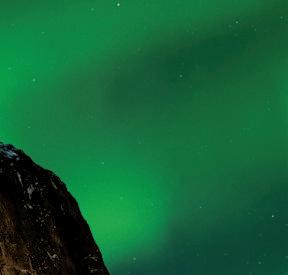
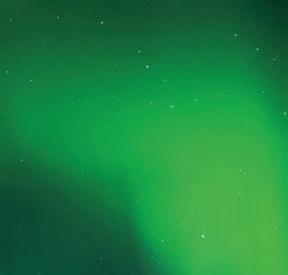



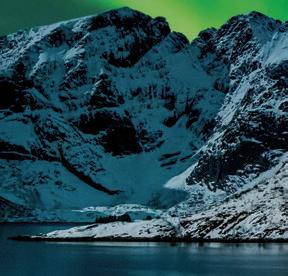

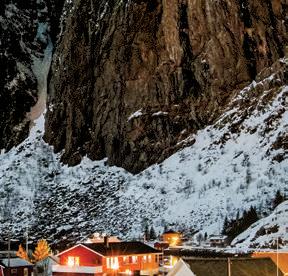




Lapland by snowmobile, high art in the Low Countries and Egypt for solo travellers –our selection of the hottest (and newest) group tours has something for every type of traveller. By Dilvin Yasa
 Zach Searcy
Ha Long Bay, Vietnam
Zach Searcy
Ha Long Bay, Vietnam

On this safari smorgasbord, you can enjoy eight safaris rolled into one action-packed 14-day tour across southern Africa? Somewhat inadequately titled Exploring South Africa, Victoria Falls & Botswana, Collette (gocollette.com) should probably have gone with Africa’s Greatest Hits. This is Big Five exploration at its best, with the itinerary serving up a bounty of 4WD trips across the vast marshlands of Pilanesberg National Park (below) and safari cruises along the Chobe River, in addition to daily “pinch me” moments.
Out here, lion, hippo and African penguin spotting are interspersed with bush dinners under a canopy of stars, sundowners overlooking Victoria Falls, comprehensive investigation of the pinotage-heavy vineyards of Cape Town’s Stellenbosch and Franschhoek and even being the the guest of honour at dinner in a Capetonian family’s home.
Kicking off in Johannesburg and ending in Cape Town, the tour has a capacity for up to 24 guests and includes all game lodge and hotel accommodation, 29 meals, land transport and on-tour flights. The journey can be enhanced further with a pre-tour stay in Johannesburg, a post-trip stay in Cape Town or additional adventures, including a sunset cruise on the Zambezi River.
Australia’s own backyard isn’t exactly wanting for postcard vistas and curious wildlife. Western Australia’s South West region alone is home to 24 national parks, long stretches of secluded beaches, world-class vineyards and a Mediterranean climate. Outback Spirit’s (outbackspirittours.com.au) Gems of the South West tour harnesses the area’s natural biodiversity, wildlife, history, food and wine in an eight-day celebration of Mother Nature.
An air-conditioned 4WD Mercedes-Benz coach will ferry the group of up to 26 people from Perth (and return) to explore the region’s highlights, which include viewing the changing colours where the Indian and Southern Oceans meet at Cape Leeuwin, feasting on local produce at Margaret River and taking a harbour cruise on Mandjar Bay. You can even attempt to climb the famous Gloucester Tree in Pemberton (once the second-highest fire lookout tree in the world) for views of the surrounding karri forest and respectfully tip your hat at the quokkas of Rottnest Island, where you’ll also find the Wadjemup Lighthouse (above).
Seven nights of hotel and resort accommodation are included in the trip, as are all meals and beverages – from a morning flat white to a post-meal gin – attractions, entry fees and cruises, a tour driver and guide.



From towns with no tra c to the vibrance of big cities, make today the day you choose a new destination to explore. With 294 tours in 66 countries to choose from, Globus takes you beyond the guidebooks to show you the world in a style that best suits you.

Call 1300 230 234, visit Globus.com.au or see your travel agent


Solo travel and traditional Turkish hospitality have been a perfect match since international tourism in the country began in the 1960s. Globus (globus.com.au) is tapping into the warm and welcoming culture with an ambitious Turkish Escape tour, which promises to tick off many of Turkey’s drawcards (and 3000-plus years of Ottoman history) in eight days.
Istanbul – complete with visits to the Grand Bazaar, Hagia Sophia, Blue Mosque (above) and Topkapı Palace – is the ultimate springboard for the kolonya-soaked journey along the west coast. Pay your respects to fallen war heroes at Gallipoli, observe the ancient sites of Troy, Pergamon and Ephesus, visit the sundrenched shores of resort town Kușadasi, frolic in the thermal waters of Pamukkale and shop for ceramics in Iznik (all while travelling in a private air-conditioned coach). If your remaining energy stores allow, you have the option of choosing additional experiences, such as a Bosphorus cruise or a Turkish dinner and folklore night.
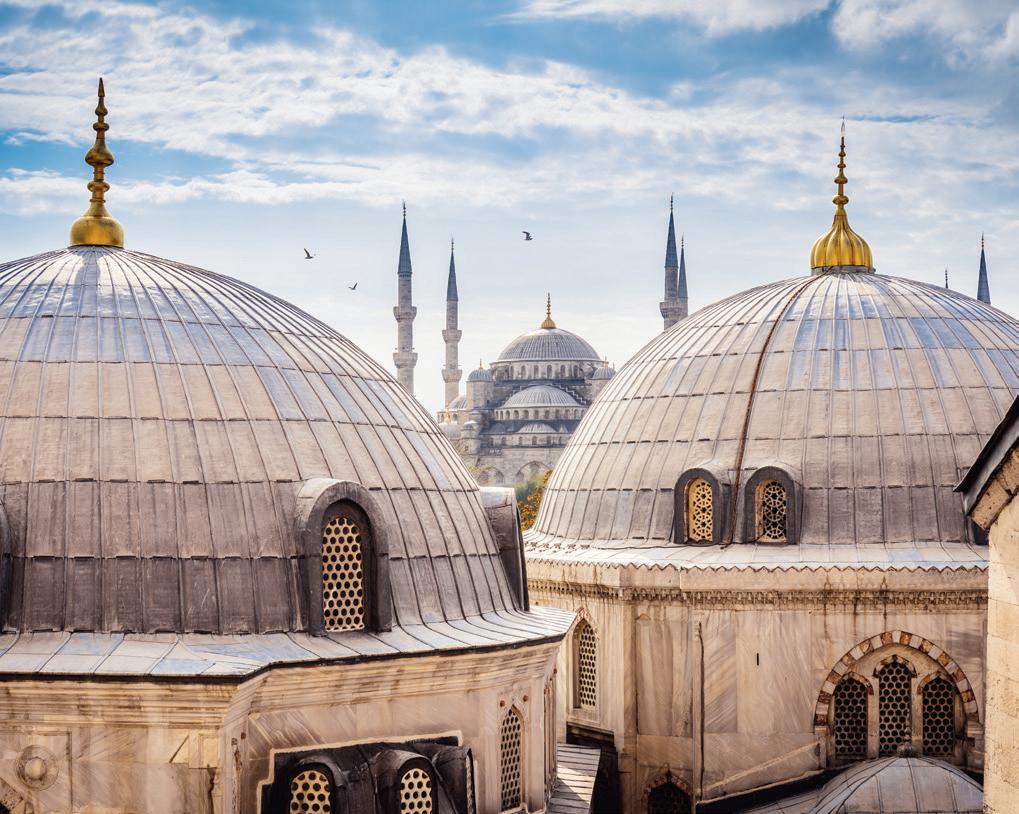
The trip includes most breakfasts and dinners, a dedicated guide and First Class or Superior First Class accommodation. As is the case with most Globus journeys, there are a number of single rooms on this tour where the single supplement is waived, pending availability.
Satisfy your free spirit with an excursion to the land of the Pharaohs, where the mighty Nile thunders along riverbanks sprinkled with archaeological gems and restaurant staff refuse to understand the meaning of “I’m full.” Removing vulnerability from the equation is Trafalgar’s (trafalgar.com) Women’s Only tours, with the nine-day, seven-city Best of Egypt trip leading the charge.
Hosted by an all-female team of travel directors and with a group limit of 47, the Cairo-return tour comprises a luxury four-night Nile cruise, plus getting around Cairo and Giza in an air-conditioned coach, bookended by a wealth of experiences. See the highlights of Cairo and Luxor with an Egyptologist, discover the Great Pyramids of Giza, break bread with locals in their kitchens and set sail on a traditional felucca to Kitchener’s Island and to view the Temple of Isis in Aswan (above).
The tour includes hand-picked and trusted accommodation, all transport – including flights from Aswan to Cairo and from Cairo to Luxor – some meals, gratuities and local guides. Additional experiences, such as a Philae Temple Sound and Light Performance or a flight to Abu Simbel, site of the Temple of Ramses II, may be purchased. Solo travellers are assigned rooms with other lone guests but single rooms are available with the payment of a supplement.

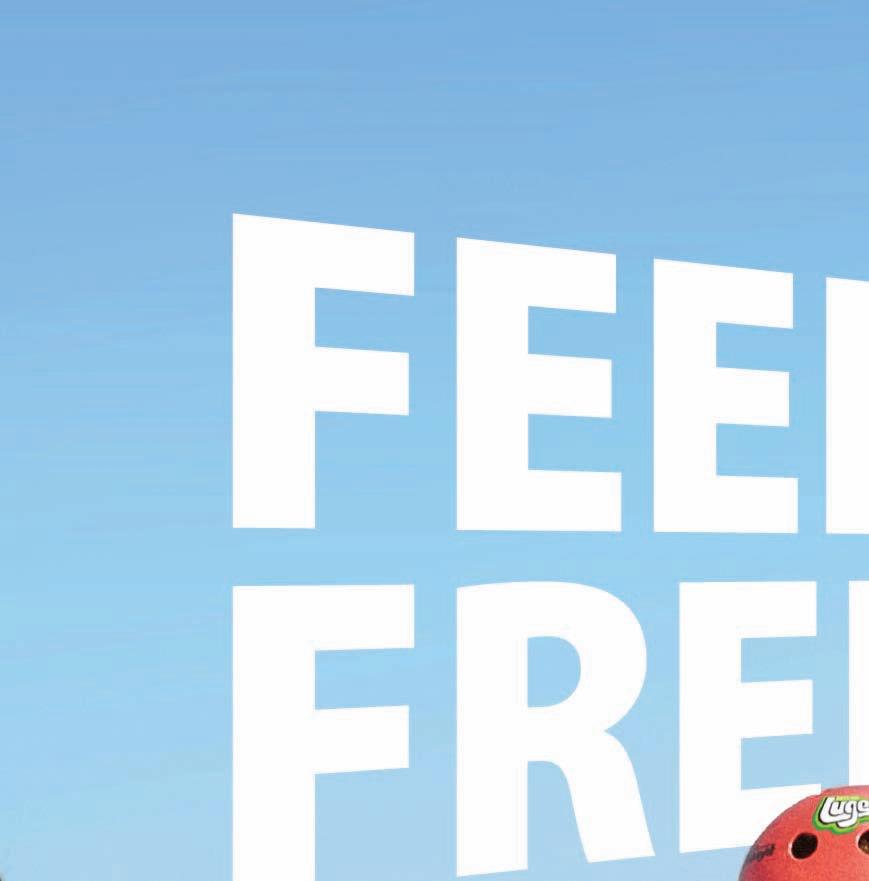


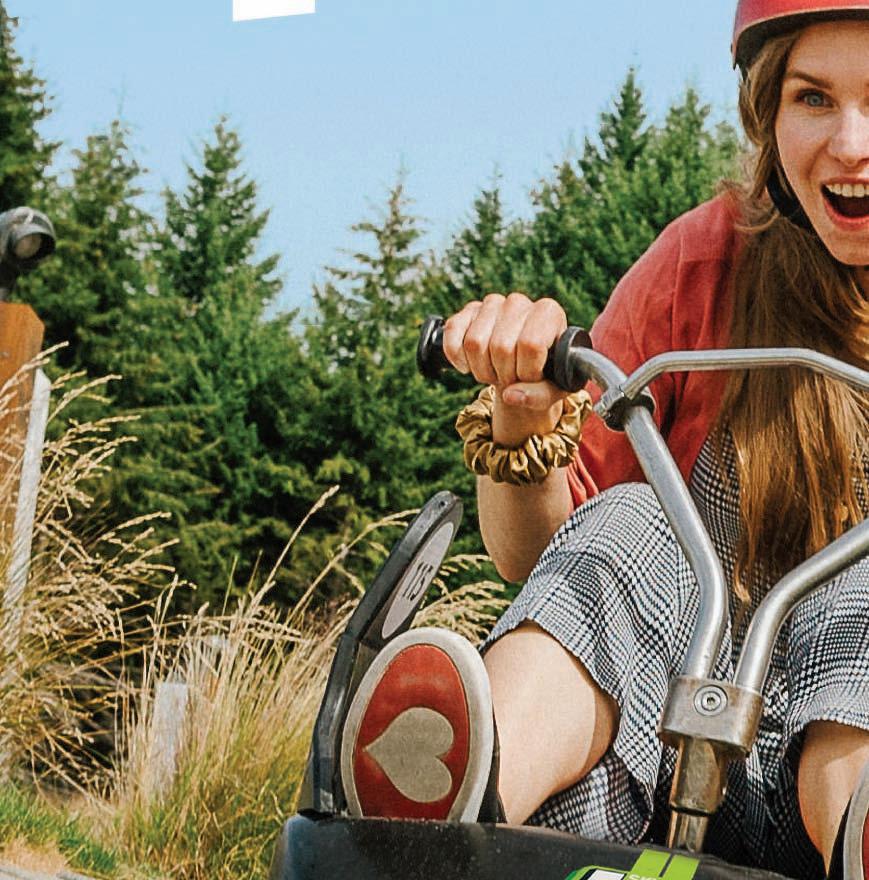




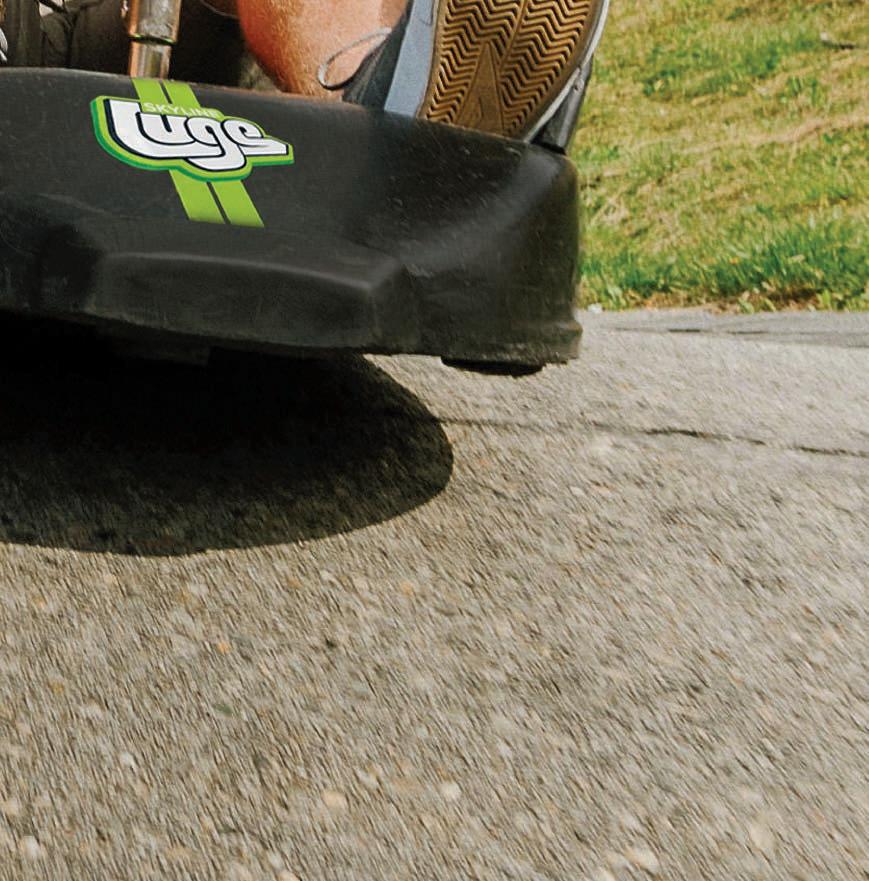



Strap on your sturdiest boots and summon your resilience. World Expeditions’ (worldexpeditions.com) Litchfield Tabletop Trek isn’t what you’d call a leisurely stroll – it’s a five-day, long-distance, guided bushwalk that harnesses the isolation of the Top End and delivers a conga-line of stunning vistas.
Timed to make the most of the tropical weather in cooler months, it’s a daypack-only adventure as you follow the palm-lined creeks, open woodland and lush rainforests of Litchfield National Park, those boots coming off for regular refreshing dips in an abundance of freshwater springs and creeks along the trail and a frolic at Florence (below) and Wangi falls. Sleep under the stars at the comfortable base camp, where the tents come complete with stretcher beds, mats and linen, and relax in the knowledge that all the meals are included, as is transport from Darwin, national park and camping charges and local guides.

The trek is graded introductory to moderate so it will suit most abilities. Those keen to continue hiking can combine this trip with World Expeditions’ Jatbula Trail or Kakadu Explorer trek for a complete Top End wilderness encounter.
If you’ve got a winter Olympian within who’s just begging to be unleashed, Abercrombie & Kent (abercrombiekent.com.au) sets the scene with its 11-day Finland & Sweden: Adventure Across Lapland – a Small Group Journey. With the wilderness of Lapland, plus the cosmopolitan cities of Helsinki and Stockholm, as your base (the adventure begins in the former and ends in the latter), this tour isn’t so much a holiday as a chance to snowmobile, snowshoe and mush like a master sledder around the Arctic.
Opportunities abound to drop tools and learn the ways of the Sami people on a visit to a reindeer farm, take an exhilarating dog-sledding safari (above) in the Arctic Circle and search for the Northern Lights. The accommodation is equally thrilling –glass-domed Aurora cabins and a hotel built over an Arctic river among them – and the trip features a wealth of inclusions. Expect internal flights, local guides, private transfers, a travelling bellboy to handle the luggage, a valet laundry service, as well as full breakfast daily and select lunches and dinners (including a feast in a snow castle), with a resident tour director on hand to provide options for restaurants outside of the schedule. Maximum guest capacity is 18 but private trips with customised itineraries can also be arranged.

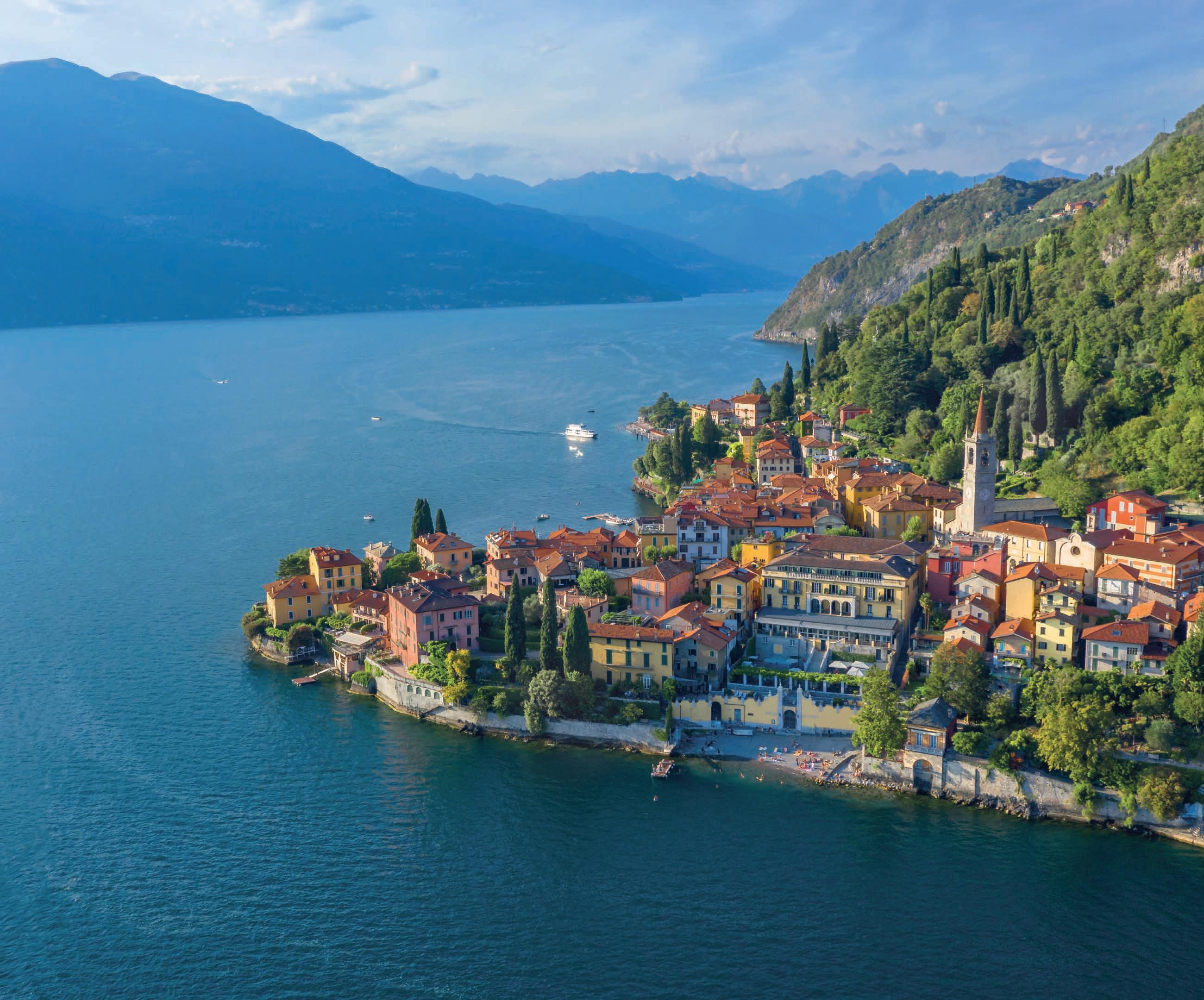


Blame its remote Southern Ocean location, vast population of native wildlife or perhaps the fact that the locals would probably like to keep their island off the map but life moves at a relaxed pace on Kangaroo Island. It’s exactly what those who book AAT Kings’ (aatkings.com) five-day Remarkable Adelaide to Kangaroo Island trip might be hoping for, with each ecological and gourmet moment giving pause to appreciate the little things.

Beginning with a city sights tour of Adelaide and travelling by air-conditioned coach, your wilderness, wildlife and wonderful dining experiences are served in equal measure. Highlights include a visit to the 500-million-year-old Remarkable Rocks (above) and Admirals Arch where families of New Zealand fur seals sunbathe. Then there are the drop-ins on some of the island’s most innovative purveyors, enabling you to down liquid gold at Kangaroo Island Brewery, sample the fragrant scones at Emu Bay Lavender Farm and come to know well the Islander Estate Vineyards’ flagship wine, The Investigator.
Centrally located accommodation, a travel director and driver, local specialists and some meals (four breakfasts, one lunch and two dinners) are included with the tour. The maximum group size is 30 guests.
Viewing art in some of Europe’s most renowned galleries and museums on Renaissance Tours’ (renaissancetours.com.au) High Art in the Low Countries allows plenty of time for reflection. Led by architectural history specialist Thomas Abbott (and organised by the Art Gallery Society of NSW in partnership with Renaissance Tours), the 10-day expedition not only invites immersion in the world of the Old Masters, Impressionists and Surrealists, such as Rubens, Magritte, Rodin and Van Gogh, but allows you to delve into the Gothic and Baroque architecture of Bruges and Antwerp.

You’ll visit all the big names – The Royal Museums of Fine Arts of Belgium, Groeningemuseum, Kunstmuseum, Stedelijk Museum, Rijksmuseum. Starting in Brussels and ending in Amsterdam (above), the itinerary’s highlights include walking tours of Brussels, Bruges, Antwerp and Amsterdam, plus visits to smaller museums and notable churches and cathedrals – St Nicholas’ Church in Ghent, a key example of Scheldt Gothic style, is a standout.
The tour, with a maximum group capacity of 24, includes accommodation in conveniently located four-star hotels with breakfast daily, transportation on comfortable, air-conditioned coaches, comprehensive sightseeing with local guides and entrance fees covered, lectures and talks with Abbott, several lunches and a farewell dinner.
From the rare wildlife experiences of East Africa, to the ancient wonders of Egypt or India, our Luxury Small Group Journeys take you across the globe in consummate comfort and style. Travelling with intimate group sizes averaging 14 guests on expertly designed itineraries, you’ll stay in the finest hotels and enjoy unrivalled insider access to the most iconic sites, often before the crowds arrive. Resident Tour Directors and expert guides ofer an enriching experience through their own understanding of the destination and its culture, ensuring your trip is one you’ll never forget. With over 30 itineraries around the world, our Luxury Small Group Journeys are waiting for you to discover the world’s most exquisite destinations.




Wildlife Safari

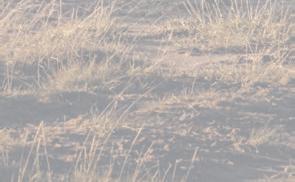



Experience incredible up-close encounters with East Africa’s diverse wildlife in the region’s most abundant parks and private reserves including the Serengeti and Masai Mara whilst staying in luxury camps and lodges.
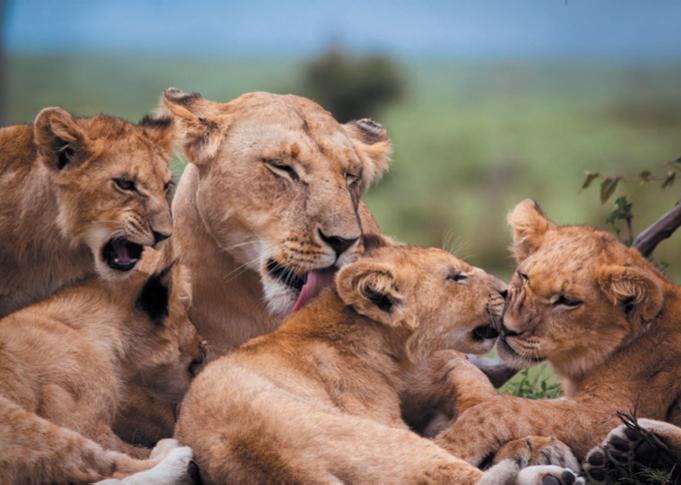

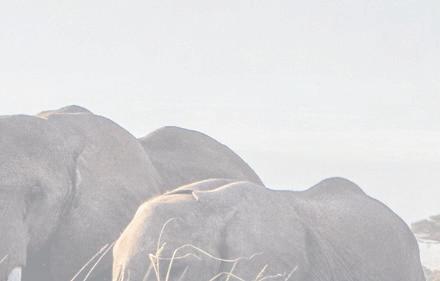
12 days from $19,400 pp
Departs Jan–Feb & May– Dec 2024

Call

Experience the best of Jordan and Egypt on an intimate journey exploring the region’s most iconic sites including Petra, Wadi Rum, the Pyramids of Giza, and cruise along the Nile from Luxor to Aswan on the intimate ‘Sanctuary Zein Nile Chateau’ dahabeah.
13 days from $25,015 pp
Departs Jan–May & Aug– Dec 2024
Explore India’s greatest treasures as you visit the Taj Mahal, seek the graceful Bengal tiger and witness a holy rite beside the sacred Ganges — all while staying in royal palaces-turned-luxury hotels.

14 days from $18,670 pp
Departs Jan–May & Oct– Dec 2024
Fiji and Bali will always have their place as much-loved family holiday destinations but there’s no better way to broaden your kids’ horizons than by trying something new – such as visiting vibrant and untamed Costa Rica. Intrepid Travel’s (intrepidtravel. com) Costa Rica Family Holiday has been a top choice with parents for eight years and the 10-day return-San Jose tour – by way of Santa Rosa de Pocosol, Arenal, Monteverde and Manuel Antonio National Park – delivers an experience far removed from the standard break.
It’s picking produce and making dinner with a local family during an agricultural homestay; trekking to the Peninsula section of the national park, near Lake Arenal; and a canopy walk across the suspended bridges of Monteverde to spot the incredible birds, sloths and toucans (below). The trip winds down at Manuel Antonio National Park, an evergreen forest that stretches into pristine white beaches, where you can hike at dusk to see the area’s nocturnal creatures begin to stir.


On paper, “taking the kids to Vietnam” may not read like an ideal family holiday – given all the traffic, chaos and potential “I’m not eating that” moments. But G Adventures’ (gadventures. com) popular Vietnam Family Adventure quietly dispenses with any concerns, its time-honoured Hanoi to Ho Chi Minh City tour packing as many of the country’s best destinations into 12 days as humanly possible, while taking away the hassles – and tiny finger pointing – of the logistics.
Designed to appeal to younger travellers as well as adults, the highlights list reads like an adventure novella: a cyclo (threewheel bicycle taxi) tour through Hanoi’s Old Quarter; a Ha Long Bay cruise (above) and cave visit; a noodle-making demonstration in Hoi An; a Mekong homestay; and an opportunity to wander the Imperial Citadel in Hue. The variety in accommodation will also keep the kids happy – hotel rooms are interspersed with sleeper trains and overnight junk boats. The average group size for the company’s family journeys is 10 guests and this tour includes all the accommodation, transportation, including boat trips and a flight from Hoi An to Ho Chi Minh City, a chief experience officer and local guides throughout, many attractions and some meals. The minimum age requirement is six years old.
The tour rolls up accommodation, eight breakfasts, plus a lunch and a dinner, on-the-ground transport and a host of activities into one neat package. The minimum age for participants is five years old.

Watch buzzing cities transform into sun-soaked beaches and mountainous hinterlands as you journey on the enchanting, old-world Great Southern train this summer. A sister to icons such as The Ghan and Indian Pacific, the Great Southern weaves from Adelaide to Brisbane (or back) exclusively in December, January and February, with all-inclusive food and wine, magical off-train experiences and more than a few surprises along the way.

Presented by The Great Southern
3 DAYS / 2 NIGHTS

After departing the South Australian capital and winding through the undulating Adelaide Hills on the Great Southern, you’ll arrive at the Grampians, a site known for its sandstone cliffs and home to some of the country’s oldest vines. Sip velvety shiraz and crisp riesling at the familyrun Pomonal Estate paired with locally produced chocolate and pastoral views. Then take it up a notch – way up – in a helicopter upgrade, soaring above the grand peaks of Mount William while taking in vistas of Lake Bellfield, Lake Fyans and the Sera ranges.
4 DAYS / 3 NIGHTS
After departing Brisbane and settling into your cabin in the morning, you’ll arrive at Coffs Harbour station at dusk before being whisked away by coach to a nearby beach for alfresco dining under a canopy of eucalypts and festoon lights. You’ll feast on regional produce and just-caught seafood paired with fine local wines, lulled by the sound of waves lapping the shore. It’s a chance to meet your fellow guests over a few unhurried hours as the sun melts into the horizon.
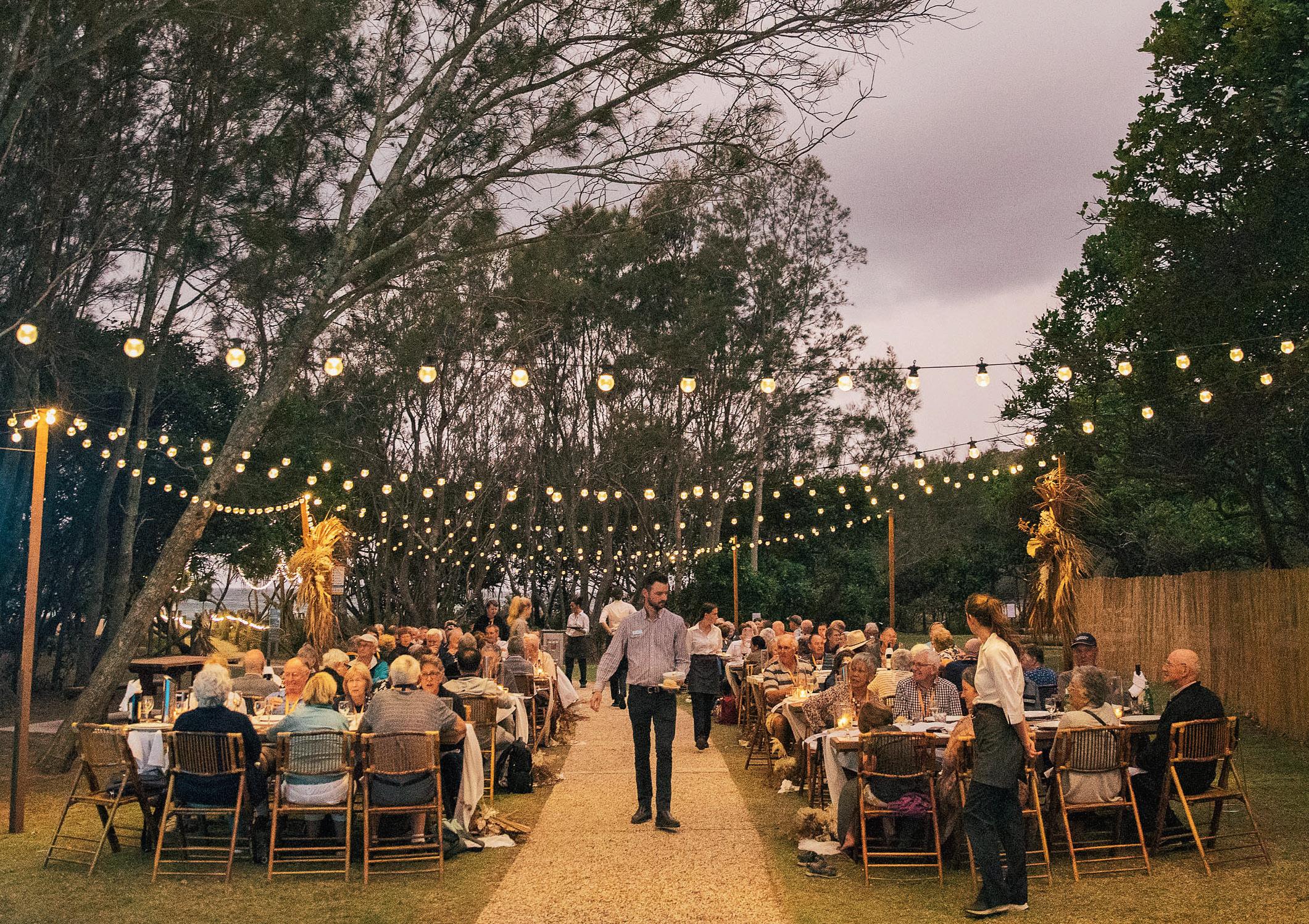 ADELAIDE
BRISBANE
GRAMPIANS
COFFS HARBOUR
ADELAIDE
BRISBANE
GRAMPIANS
COFFS HARBOUR

Arrive in Canberra to lunch served under soaring skylights in the Kings Hall of Old Parliament House – a special off-train experience exclusive to Great Southern guests. After lunch, explore exhibitions of the nation’s most notable (and notorious) political triumphs, tragedies and scandals, including Australia’s declaration of war with Japan in 1941 and Gough Whitlam’s dismissal in 1975. Meander through the acclaimed National Portrait Gallery and catch works ranging from a moody oil painting of blind First Nations musician Gurrumul to a photo of Queen Elizabeth on a glitzy lamé fabric backdrop.
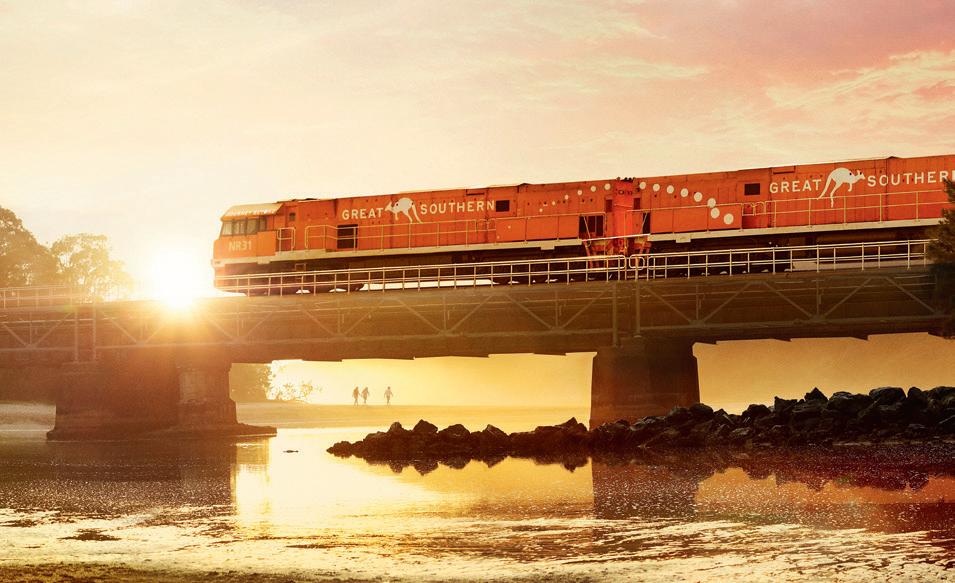


Spot stingrays and herons wading through the mangroves or kangaroos and pythons hiding among the melaleucas on a three-and-a-half-hour tour led by a local Gumbaynggirr guide in Coffs Harbour. The trail takes guests down the wheelchairaccessible Urunga Boardwalk – a 30-minute drive south of the city’s yacht-studded marina –where the Kalang and Bellinger rivers spill into the sea. Afterwards, you’ll witness a display of traditional tools and weaponry while sampling First Nations bush tucker.
Next stop is the historic Maitland Station. From here, head straight to the Hunter Valley for a decadent cellar door tour between boutique wineries and big-name players such as Brokenwood and Bimbadgen. You'll taste the complexity of the region’s famed semillon and shiraz before pausing for a long-table lunch among the vines. Alternatively, it's a short bus ride to Nelson Bay marina in Port Stephens where you’ll step aboard a catamaran and have front-row seats to playful bottlenose dolphins before heading back to the Great Southern.
Walk the corridors of Old Melbourne Gaol, which held some of history's most infamous criminals, including bushranger Ned Kelly. Following the private tour, you'll be transferred to the banks of the Yarra River at Melbourne Skydeck – a 297metre-high observation platform with views spanning the Melbourne Cricket Ground and Port Phillip Bay. Lunch is a seasonal journey of dishes, including grilled Rangers Valley beef with black garlic, at Eureka 89. Or head to Clyde Park in the Moorabool Valley – an hour’s drive from Melbourne – for cool-climate wines. The bright chardonnay pairs perfectly with pan-fried barramundi. Then it's back to the tracks for the final leg of the 2885kilometre journey to Adelaide.
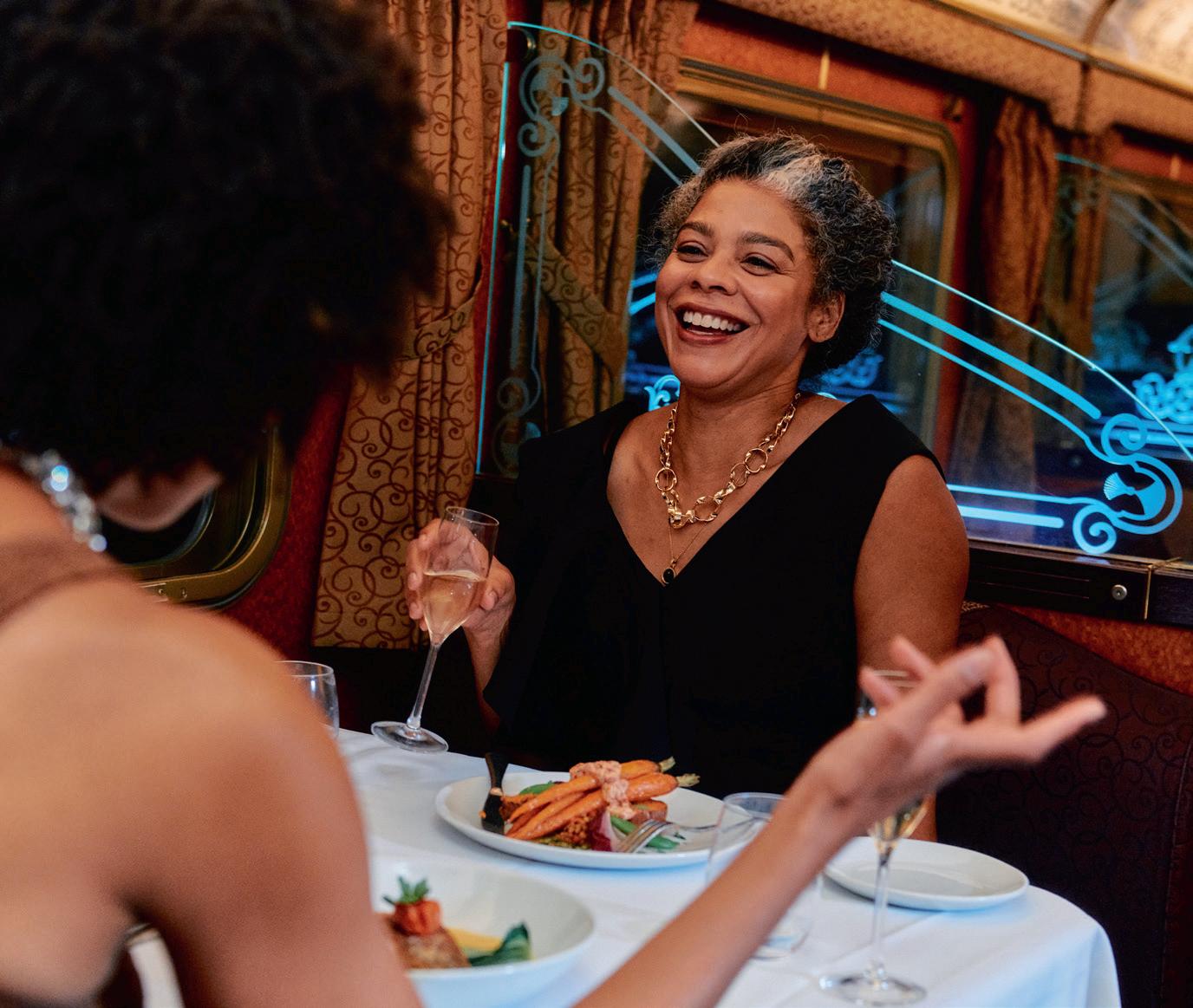
A trip on the Great Southern is like gazing out on a moving picture frame of south-east Australia’s epic landscapes. The perfect accompaniment? All-inclusive chef-prepared food (and local wines) inspired by the regions you’ll roll through – think Riverina orange crêpes, Junee lamb rump and succulent Spencer Gulf prawns. In the exclusive Platinum Club, fitted out with quartzite tables, brass fittings and leather banquette seating, guests feast on four-course farm-to-table fare served with champagne.

For Gold Service guests, in the Queen Adelaide Restaurant, the Art Deco styling is a throwback to a golden era but the menu is modern Australian, heroing locally sourced saltwater barramundi and kangaroo fillet. Breakfasts, two-course lunches and three-course dinners are on offer, as is an extensive range of fine regional wines, beers and spirits. Want something more casual? Sink into a comfy sofa in the Outback Explorer Lounge, a communal space for playing board games, listening to roaming musicians or getting lost in deep conversation over a beer or glass of red. EAST
For the ultimate indulgence, Platinum cabins are spacious lodgings that can be transformed into an upscale lounge room during the day. Book into a double or twin-bed Platinum cabin and you'll receive the VIP treatment, including return transfers and access to the exclusive Platinum Club carriage. Other luxe trimmings include Appelles Apothecary toiletries in your ensuite, Bollinger champagne and Bracegirdle’s chocolates.
A Gold Twin Cabin comes with upper and lower berths and an ensuite, while a Gold Single features a single bed and shared bathroom facilities. Elsewhere, the Gold Access Cabin is purpose-built for those with mobility issues, with an accessible ensuite bathroom featuring seat and handrail facilities, a flexible hand shower and a shower chair. It's a considered and curated journey, filled with surprising experiences and travelled in peerless comfort.
*Advertised price is per person, based on the Advance Purchase fare in a Gold Twin Cabin in January 2024, from Adelaide to Brisbane. Subject to availability. For full terms & conditions visit www.journeybeyondrail.com.au/ terms-conditions/. ~QANTAS FREQUENT FLYER: You must be a Qantas Frequent Flyer Member to earn Qantas Points. Please visit journeybeyondrail.com.au/qantas for full conditions.

Book a Gold Twin Cabin from $2,455* per person. Visit journeybeyondrail.com.au, call 1800 703 357, or contact your local travel agent.
 Presented by The Great Southern
Presented by The Great Southern
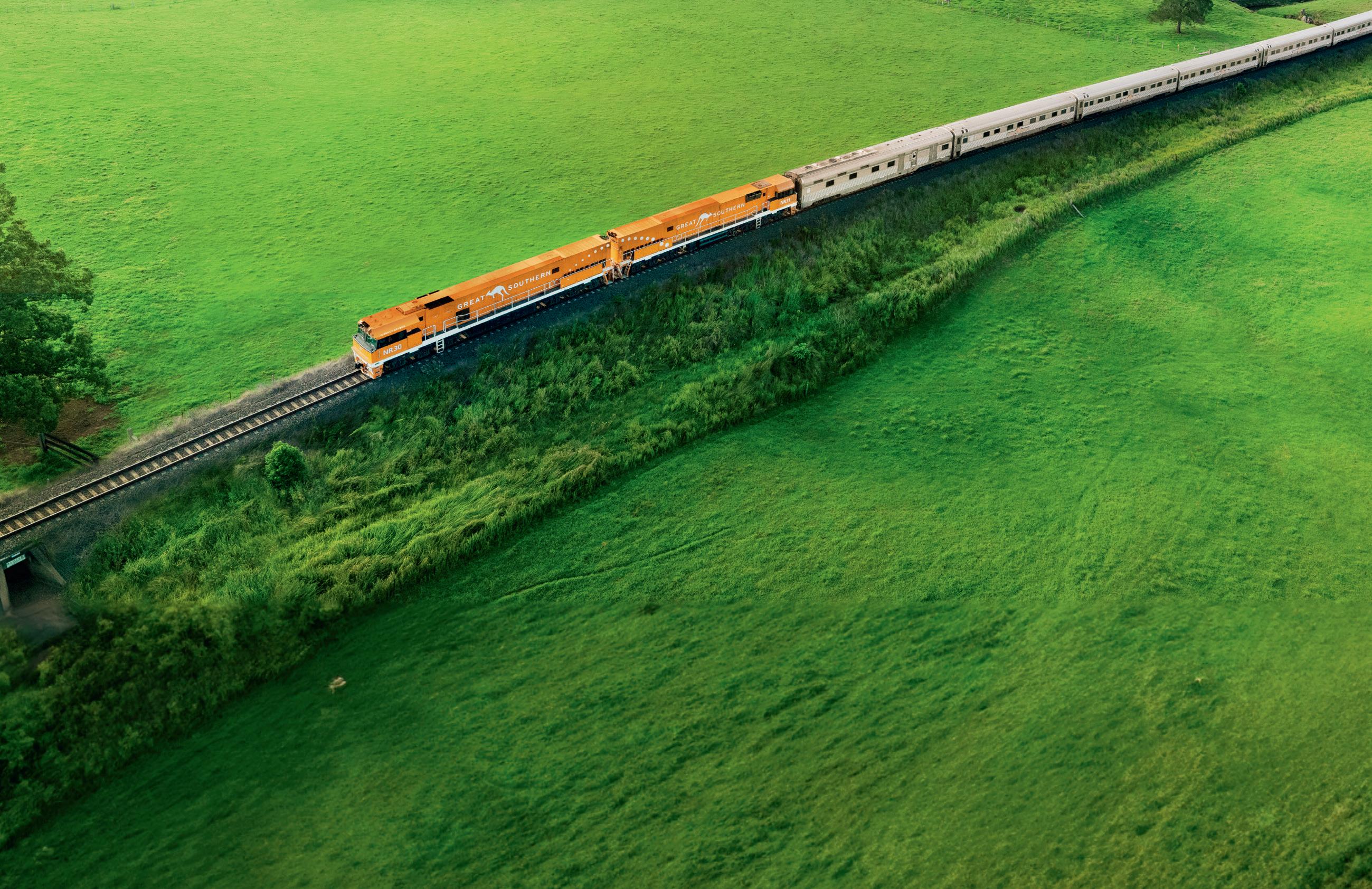

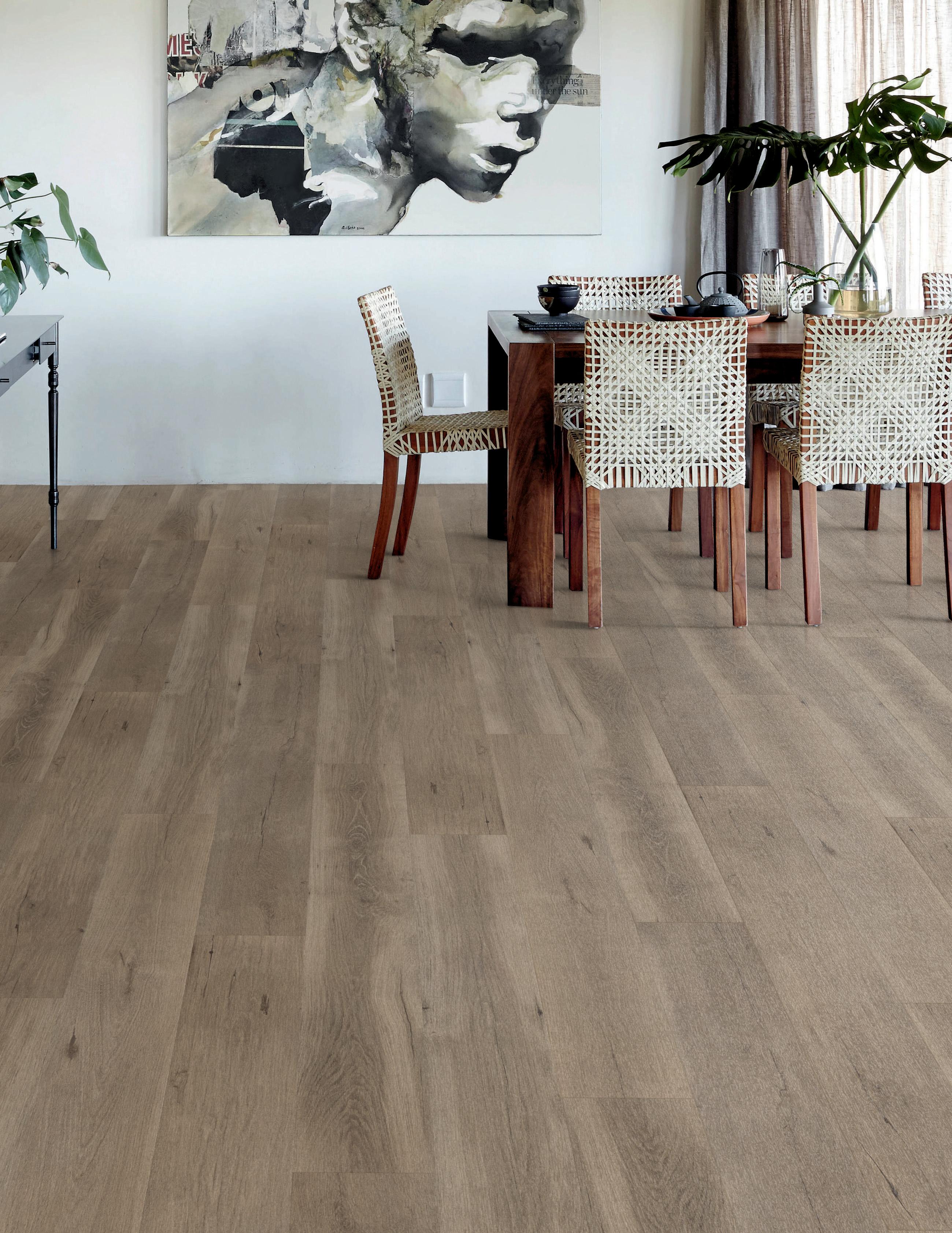
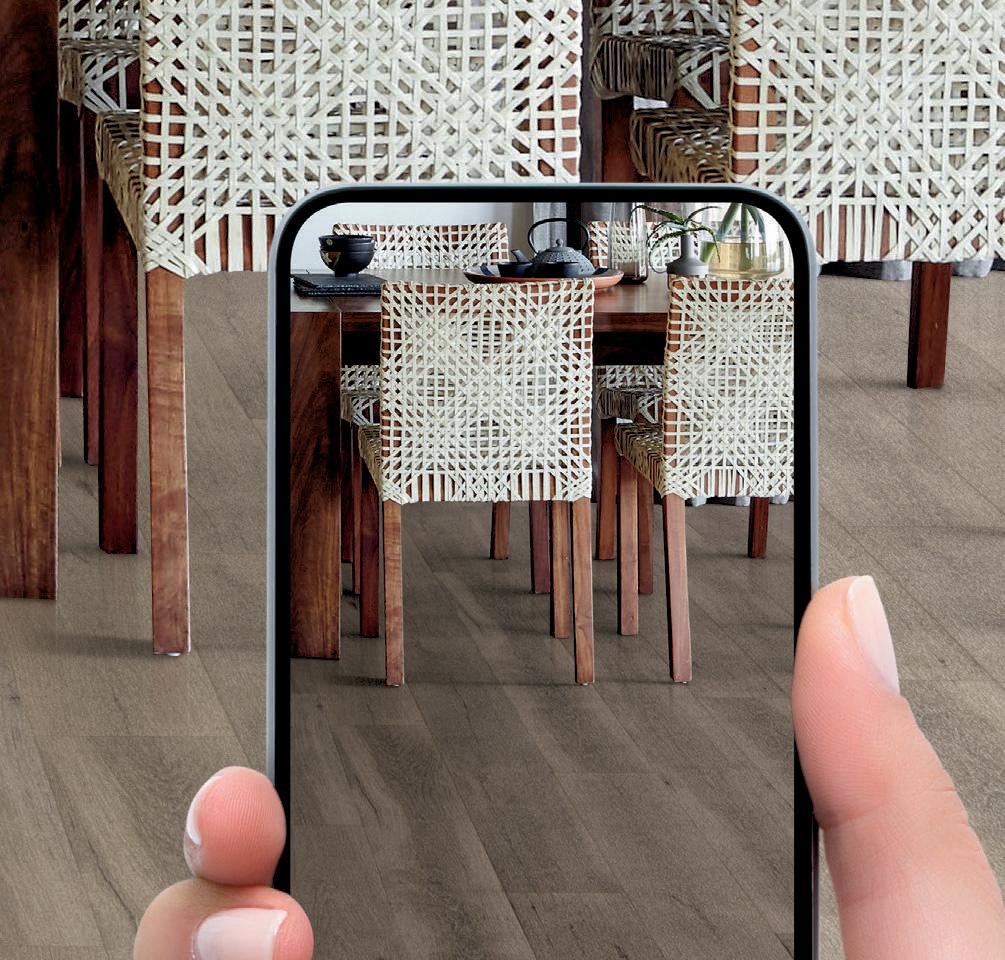














How the puffer jacket became a tech bro stapleMoncler Maya 70 short down jacket
This secluded 40-hectare retreat in the Northern Rivers is a haven of rest and play.
From the deck at Micalo (micalo.com.au), the manicured green of the golf course rolls towards a line of gum trees on the banks of the Clarence River. The gated retreat, 10 minutes from Yamba in the Northern Rivers region, unfurls across a huge area and is as well suited to an escape for two as it is for group getaways of up to 20 people.
“We wanted a place big enough for friends and family to come together,” says owner Taliah Lowry. “I love that even though it’s big, I can sit on the verandah with a champagne and watch my boys fishing, kayaking or stand-up paddleboarding on the river or playing in the pool. You feel connected no matter what activity everyone is doing.”
Lowry enlisted an architect to ensure the design of the main house and adjoining open-plan studio would encourage that sense of closeness. Sliding glass doors, stone floors and recycled jarrah timber feature walls allow a seamless transition between the inside and outside, tempering interiors that are so capacious most of the furniture had to be custom-made.
Built for rest and rejuvenation, the estate also prioritises health and wellbeing with an ice bath, 10-person hot rock sauna and heated magnesium spa onsite. “We just kept adding things,” says Lowry, laughing. It’s no surprise that guests frequently ask to extend their stay.
But it’s the secluded location, she says, that’s most captivating. “It’s totally private and is on a hard-to-access stretch of the river. When you drive in, there can be 200 kangaroos on the green. It’s like they’re there to greet you.”
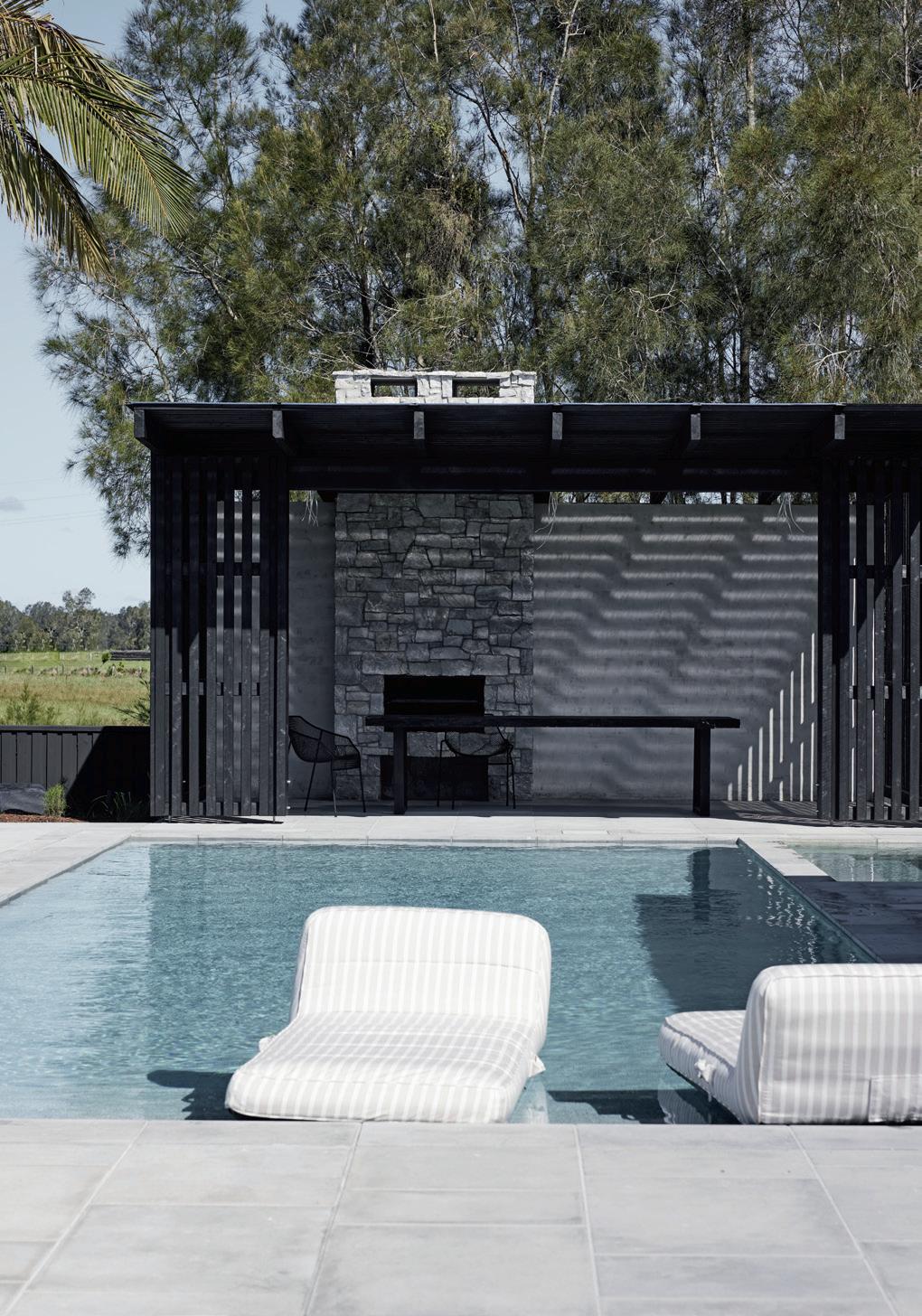



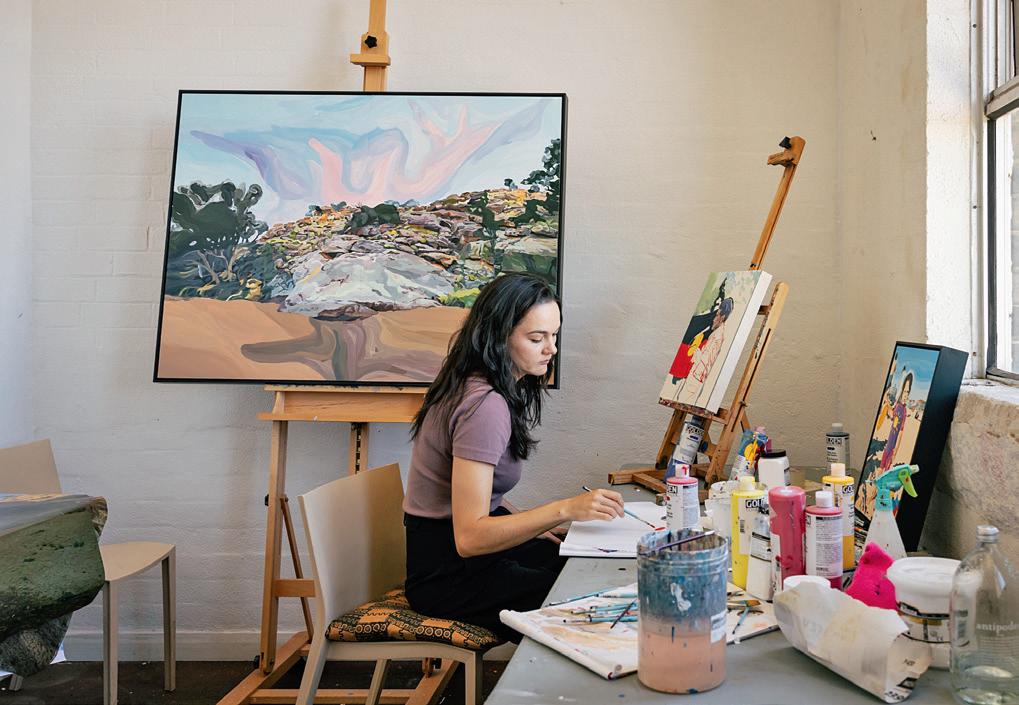
Carrying on her famous family’s legacy, this First Nations painter makes powerful statements in art.
As the grandchild of Aboriginal activist Charles Perkins, niece of filmmaker Rachel and daughter of art curator Hetti, painter Thea Anamara Perkins was destined to advocate for First Nations Australians. She knew, though, that hers would be a different kind of activism, using portraiture to “lead with love” and address uncomfortable truths. “Being true to how I communicate and try to be in the world, a gentle approach came naturally to me,” says the 31-year-old Arrernte and Kalkadoon woman. “Although softer, it’s just as powerful.”
So powerful that Perkins won the La Prairie Art Award earlier this year – an annual $80,000 Art Gallery of NSW prize that champions the work of Australian female artists and includes a six-month residency in Europe. In her work, Perkins mines her family’s photographic archives, turning snapshots into intimate paintings of warm, loving moments – the family gathered around a birthday cake, for example, or a Bondi Beach scene of her grandfather, uncle and mother from the late 1960s. “They’re a response to the misrepresentation and misinformation about First Nations families that I saw growing up. [My family photos] presented this clear and direct contradiction to that and it’s something I know about in our wider community.”
Perkins was raised in Sydney but regularly visits her traditional home of Mparntwe (Alice Springs) to paint; the landscape there and the Central Desert movement are a strong influence. Growing up, Perkins was surrounded by creatives – First Nations artists Tony Albert, Jonathan Jones and Christian Thompson among them – and her mother, Hetti, encouraged her to analyse why she was drawn to certain works. “Deep thinking is a big part of my art. I just want to make art that’s useful and a good communicator. On my terms.”
Her paintings have a comforting, universal quality, with a hint of wistfulness. “With what First Nations people have faced in the past and continue to face, we all feel that sense of melancholy.” Perkins looks for photos with “the glimmer”, which she describes as the opposite of a trigger, “something inspiring safety, connection and belonging”.
Exhibited at:
National Portrait Gallery, Canberra; Art Gallery of NSW, Sydney; Art Gallery of South Australia, Adelaide; Museum and Art Gallery of the Northern Territory, Darwin
Awards:
La Prairie Art Award 2023; Brett Whiteley Travelling Art Scholarship 2021; Archibald Prize finalist 2021, 2020 and 2019
Breakthrough moment: Her debut solo exhibition at Sydney’s Firstdraft gallery in 2018. “That was my first time pulling a show together and taking my practice seriously, making that leap in confidence.”
What the critics say:
“Perkins has a beautiful and distinct way of reworking and transforming photographs. She understands photography’s capacity to isolate and memorialise particular moments in time. This, paired with her unique approach to line, colour and form, lends her work an emotive resonance. Transient moments are encoded and commemorated in the gentle yet precise gestures of her brushstrokes.” – Isobel Parker Philip, senior curator of Australian contemporary art, Art Gallery of NSW
A clifftop house overlooking the Bay of Naples provides a lesson in site-specific design, says Melbourne architect Rodney Eggleston.

Casa Malaparte is a private house made from the same stone on which it sits. It was built in the late 1930s on top of a rocky outcrop. What jumps out first is the way the house reacts to the site. Second is the staircase and the idea of standing on the rooftop and looking to the horizon forever. Finding a simple, elegant idea is sometimes the hardest thing to do and I often go back to this design for inspiration. I haven’t seen it in person; the best view you can get is at a distance from a boat.

I first saw the house in Jean-Luc Godard’s 1963 film Le Mépris. That film and the house were the reason I wanted to become an architect. There’s this fabulous scene where Brigitte Bardot is walking up the stairs to the rooftop with this dramatic, long panning shot that captures the essence of what architecture can be. It shows the cinematic nature of the building and the way in which views are framed through its windows.
The interiors are pared back and they’re all about the placement of the windows. Some are there for ventilation so they don’t have to be enormous and they become larger as you get to the living areas. The views have been consciously chosen by the client and architect and modest windows frame the headlands and other incredible vistas of Capri. They’re about the view out rather than the interiors and offer the landscapes up as pieces of art.
The rooftop terrace is essentially the only outdoor space. It’s taking a site that’s difficult to build on and trying to solve that problem using architecture, allowing an outdoor area to exist and be as efficient as possible. If it was built today by someone else, you’d probably see a huge deck wrapped around the side of it, whereas the idea to put a terrace on top and define the architecture through the staircase is special.
There’s a theory that the client designed the house, more so than the architect. The client was German-Italian writer Curzio Malaparte and in the book Casa Malaparte, Marida Talamona outlines this theory and includes a fascinating early design by the architect, Adalberto Libera, which looks nothing like the house that was built. I find that collaboration between architect and client to produce a unique result intriguing. And there’s nothing in the world that looks like this building.

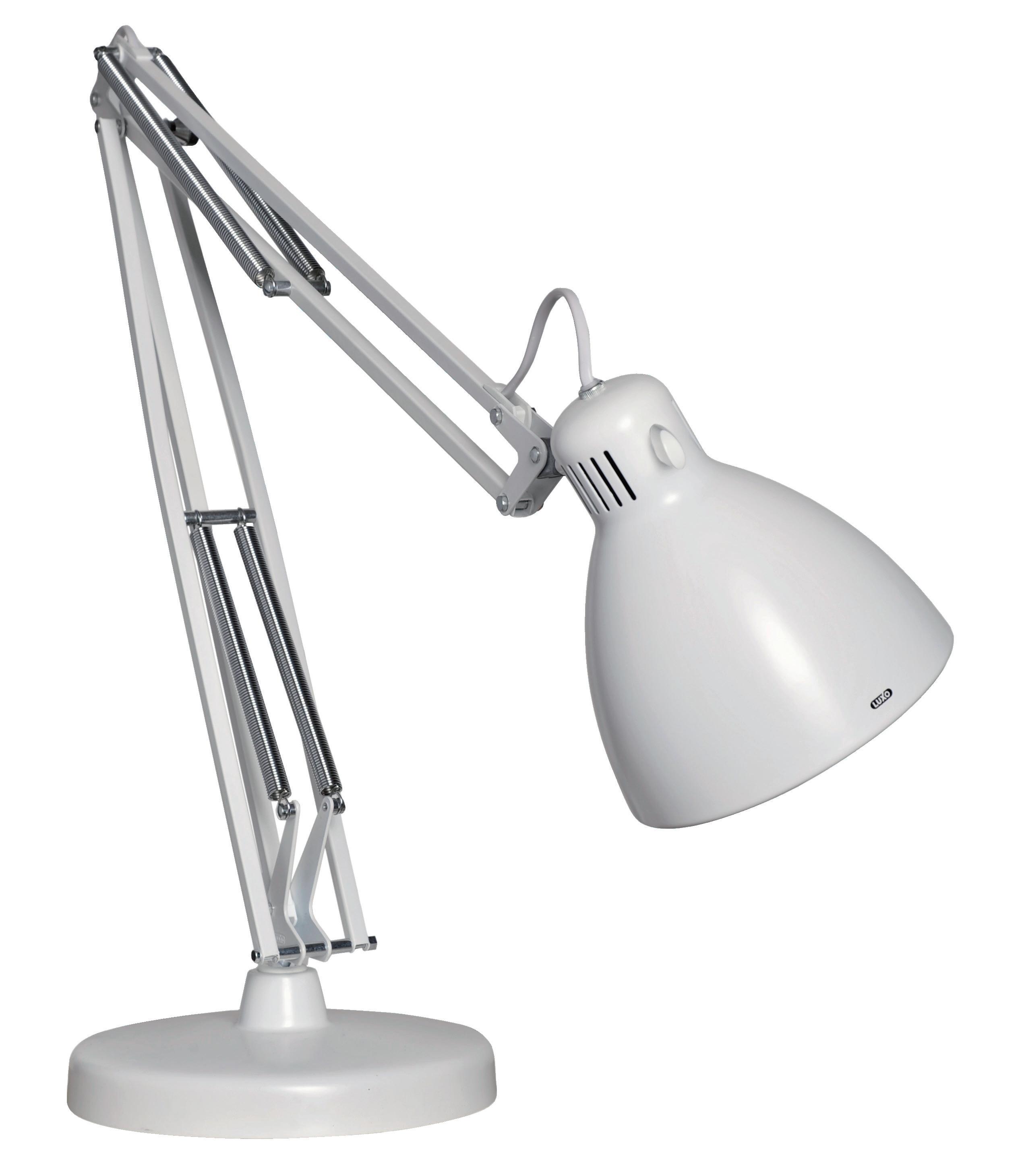
In 1937, Norway’s Jac Jacobsen designed the award-winning Luxo L-1 lamp, an industrial task light. But in 1986, CGI animation studio Toy Story and were hit movies, the studio released what was then a ground-breaking 3D computer-animated short called Luxo Jr It was a simple two-minute tale of father-and-son lamps playing with a ball. Director John Lasseter had looked no further than the architect’s lamp on his desk for inspiration and had imbued the inanimate objects with emotion. At its premiere, the short scored a standing ovation and Luxo Jr. went on to receive an Oscar nomination before the lamp cemented its place as Pixar’s mascot, hopping onto the screen before every movie as part of its logo.
For years, the relationship between lighting company Luxo and Pixar was amicable – until 2009, when Pixar started making knock-off Luxo Jr. lamps to go with its special-edition Blu-ray package of the movie Up. Luxo’s lawyers swung into action, claiming trademark infringement, and the matter was settled out of court. Not only that, the 1.8-metre-high animatronic Luxo lamps that greeted Walt Disney World visitors were pulled.
Still, the Luxo lamp lives on. With its flexible, spring-balanced arm and crane-like look, it remains in production (the L-1 is available with a lamp base or table clamp at Finnish Design Shop, from $358, finnishdesignshop.com) and 25 million have been sold worldwide. “It’s the original workstation lamp,” says interior designer Amanda Ayres from Melbourne’s Studio Husk. “People like it for the aesthetic but it’s a functional light designed to hang over your workspace so you’ve got this direct illumination of what you’re drawing or reading – you don’t have any shade or shadow.”
Practical, timeless and a pop-culture icon, the Luxo lamp has come to symbolise creativity and innovation. And maybe even a lightbulb moment.
When this cleverly functional task light was chosen as the Pixar mascot, it became instantly iconic – and controversial.







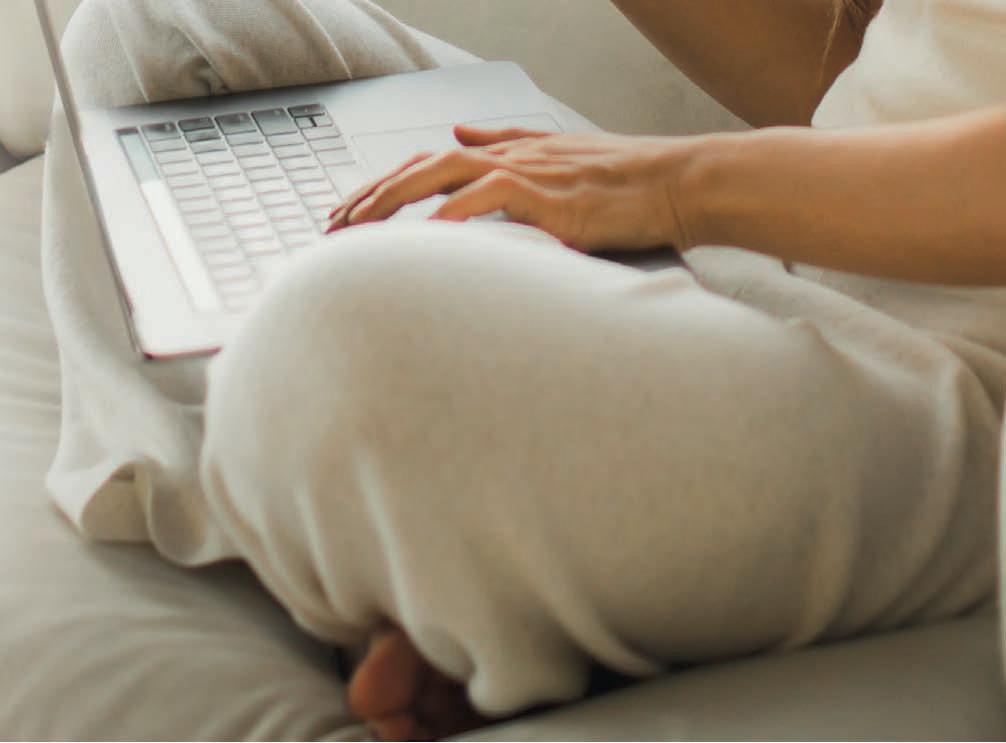







Editor’s note: Though crafted by hand in an Adelaide workshop, these quintessentially Australian boots are destined to trot the globe – even when box-new they look like they could have done one or two circuits already. While a sturdy rubber outsole, spring toe and storm welt make them the ideal all-elements footwear

(with concealed arch support for round-the-clock comfort), their vintage pebbled leather appeal is what’s going to secure them pole position in your suitcase.
Wear it with: They might take their inspiration from wilderness wear but these boots are firmly rooted in the urban environment and work hardest when teamed with fine-gauge knitwear, an all-weather windbreaker and clean blue denim.
Price: $699 / rmwilliams.com.au
The piece: R.M. Williams Risden bootsThe piece: Gucci Deco bag

Editor’s note: Packing for a city break in cooler climates inevitably presents a sartorial challenge: to what degree do you sacrifice style in order to stay warm? The answer should be, not at all. Hot or cold weather, the principles remain the same – choose coordinating pieces in compelling textures and finish with a bag that can cross from day to night. Not your average purse but every bit as versatile, this compact, chainstrapped green dream is your ticket to cosy chic.
Wear it with: Tap into on-trend yet time-honoured pieces like a mid-weight fair-isle cardigan (great for the plane), tortoiseshell aviators (for crisp sunny days) and smart loafers that are made for walking.
Price: $4645 / gucci.com

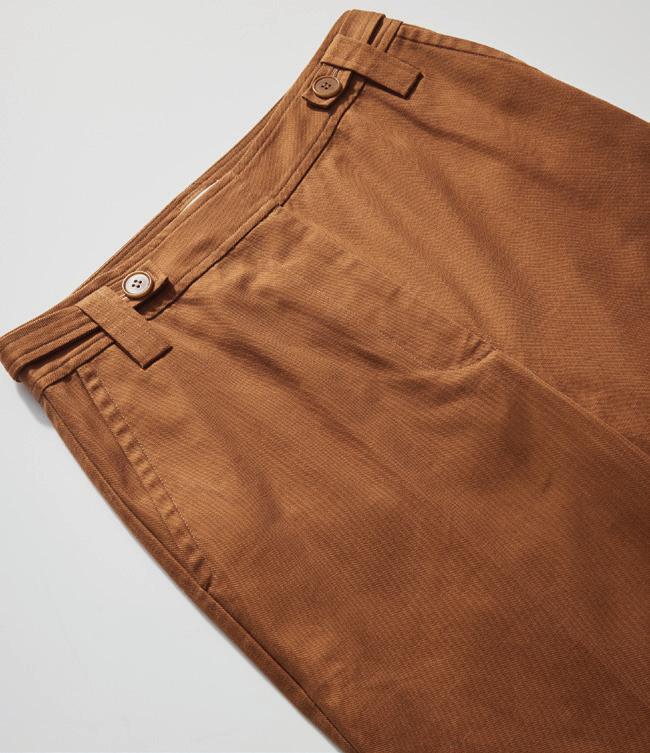



When an image of Pope Francis wearing a white puffer coat went viral in March, it lent the pontiff an air of serious street swag. But those who thought the papal robes had been given a stylish update were soon disappointed: it was an AI-generated image that even its creator, a 31-year-old construction worker from Chicago, was surprised had taken off.
It’s understandable that people thought that it could be real. The once-derided puffer – remember George Costanza’s Michelin Man Gore-Tex style in Seinfeld? – has had a makeover in recent years, becoming a staple for winter morning dog walkers and fashion devotees alike.
Many credit American sporting goods retailer Eddie Bauer with the invention of the puffer in 1936, when he created a goose-down-filled jacket after suffering from hypothermia on a fishing trip. But there is an earlier incarnation. Australian George Finch pipped Bauer with his own custom-made coat, designed for an attempt
at climbing Mount Everest in 1922. While the Brits were kitted out in traditional climbing tweeds, Finch, a chemist from NSW, had commissioned an “eiderdown coat” from outdoor outfitters S.W. Silver & Co. in London. While it may have been the butt of jokes at the beginning of the ascent, by its end, Finch wrote in his journal: “It is no longer laughed at.”
Fashion first paid attention to the padded style in 1937, when British couturier Charles James created a cream silk jacket “constructed in the same manner as an eiderdown quilt”, according to London’s Victoria and Albert Museum, where the jacket now resides.
Flash forward to the 1990s, when the puffer came down from the mountain and into the London rave scene, worn with baggy pants by party people. Hip hop musicians soon co-opted the style and by the mid-2000s, Wall Street types and tech bros donned puffer vests, inadvertently turning the nylon quilted piece into a symbol of stealth wealth.

(When not suited up, Musk, Bezos and co are rarely seen out of them.) By 2016, designers had rediscovered it, with Tom Ford sending puffers down the runway.
Gucci’s collaboration with The North Face ignited the Gorpcore trend – a luxury take on adventure gear – while high-end label Moncler, whose business is built on the puffer, has partnered with creative directors and celebrities, such as Valentino’s Pierpaolo Piccioli and Pharrell Williams, to add to its cachet.
The puffer jacket
Once a must-have for intrepid explorers, now it’s worn by anyone brave enough to go for coffee before 7am in winter.







there with up to 80,000 Qantas Points* with Qantas Premier Platinum



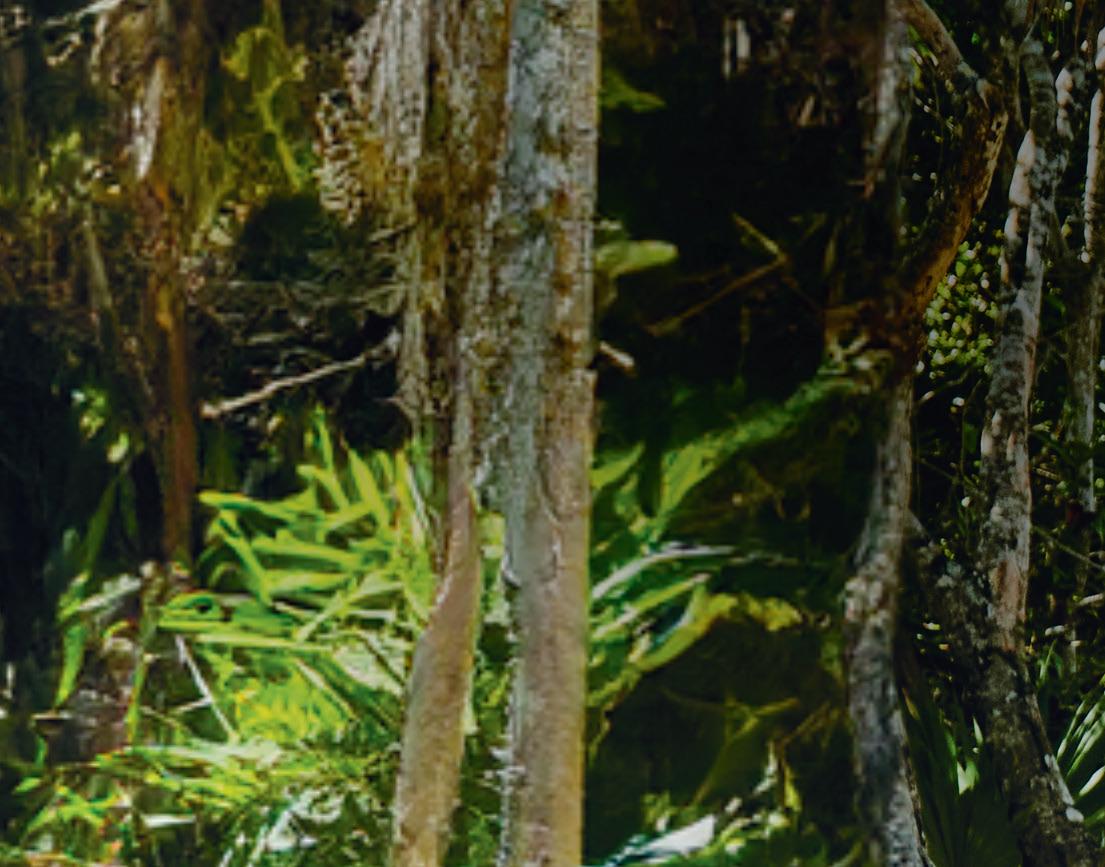


Awarded for exceptional value over time, a benefitpacked credit card with uncapped and high earn rate on Qantas Points, plus exclusive travel perks and more. Qantas








From lighting that can safeguard your health to First Nations design principles that promote harmony, the places we inhabit are set to be transformed.

Homes that “protect” you from the elements are out and biomimetic design – built environments that aim to increase our connectivity to the natural world and our biological function – is most definitely in. The new frontier in home design is a tale as old as time: nature knows best. And smart home technology may be futuristic but it, too, borrows from Mother Earth.
“Contextually aware” houses utilise adaptive design to evolve as we do, with each household a rapidly growing ecosystem.
The emergence of electricity heralded boundless invention in terms of our ability to bend time to our will with artificial lighting. But the impact of this on our natural circadian rhythms (which for all but the shortest blip in human existence have been driven by daylight and firelight alone) is making us sicker.
The discovery a few decades ago of the existence of intrinsically photosensitive retinal ganglion cells (ipRGCs) in the
human eye led to the understanding of just how dependent we are on the synchronisation of our physiological functions with circadian rhythms. The light that our eyes are exposed to tells our bodies what they should be doing at that time – and disruption in circadian entrainment has been linked to everything from insulin resistance and depression to weight gain, insomnia and digestion problems.
“Before this was discovered, scientists couldn’t understand exactly how our internal clock was being impacted,” explains Dr Wenye Hu (right), a lecturer in illumination design and head of the Lighting Lab at The University Of Sydney. “They ended up realising that light was by far the biggest contributor.”
Now, lighting design is changing to safeguard us against the health risks of an

artificially lit world. The answer? Circadian lighting design, the practice of utilising natural light, as well as smart-lighting solutions across the colour spectrum, to help mimic the conditions humans have evolved to thrive in. “We talk about it in terms of colour temperature,” says Hu, “which sounds like it has to do with heat but actually refers to the description of the colour of the light.”
In short, blue light is better for increasing alertness and productivity and warm yellow or orange light allows our systems to begin their wind-down for sleep, when hormonal and physiological changes vital for optimal health take place. Both commercial and residential lighting design is looking to a range of cuttingedge innovations to mimic millennia of unchanged chronobiology.
This is where Hu’s work comes in.
Smart lighting – interconnected lighting systems that have adaptable colour temperatures and can be programmed to certain times of day through your smartphone – are becoming increasingly popular. Revenue in the Australian smart lighting market is expected to grow by 10.47 per cent annually over the next four years, reaching a projected market volume of $714 million by 2027, but Hu says what’s coming next is even more exciting.
Along with research colleagues, she has developed a system in which a home’s blinds, lighting design and schedule can all work in symphony with each other, adjusting access to natural light based on the time of day and the occupant’s specifications. The tech exists, says Hu, it’s just waiting to be integrated by the right industrial partner. Stay tuned.

Play around with colours, shapes and dimensions and design your own furniture with our online configurator

Australia: Anibou – anibou.com.au
Sydney 726 Bourke St. Redfern NSW 2016, 02 9319 0655
Melbourne 3 Newton Street, Cremorne VIC 3121, 03 9416 3671 info@anibou.com.au



New Zealand: ECC – ecc.co.nz






Auckland 39 Nugent St Grafton 1023, 09 379 9680
Christchurch 145 Victoria Street, Christchurch Central 8013, 03 353 0586
Wellington 61 Thorndon Quay, Pipitea 6021, 04 473 3456 info@ecc.co.nz

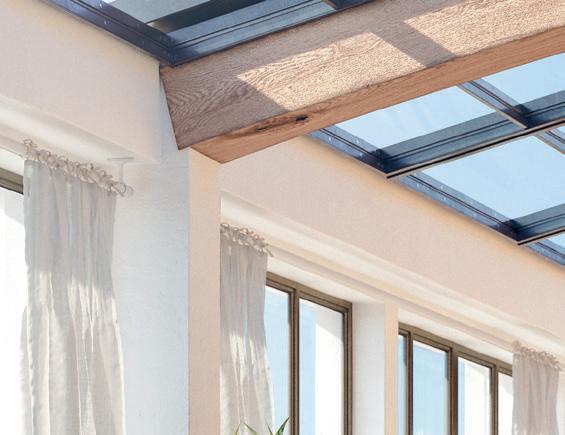





usm.com





“It’s a fancy new phrase for something we’ve actually been focusing on for quite a while,” says Melissa Bright (below), director and owner of Melbourne-based architectural firm Studio Bright, whose renovation project Autumn House (right) won Australian House of the Year in 2022. That phrase? Biophilic design, a concept that aims to increase occupant connectivity to nature through the use of light, natural materials, green space and place-sensitive planning. It’s one that has exploded into the lexicon of homeowners throughout Australia and the world to such an extent that Pinterest searches for “biophilic architecture” rose by 150 per cent between 2019 and 2021, prompting the term’s inclusion on the platform’s annual trends and predictions report for 2022.

The design principle is on triumphant display throughout Autumn House –a complex project that came from the desire to overhaul a Victorian terrace without disturbing the majestic mature elm in the backyard. A russet screen rises up to cover the second storey, which in time will be covered in climbing greenery, a gift to the surrounding urban landscape as well as its bees, birds and insects.
Bright says demand for this kind of symbiotic solution is growing exponentially. She believes that COVID and the shift to remote working means we’re asking more from our homes than ever before – including that they make us happier, healthier humans.
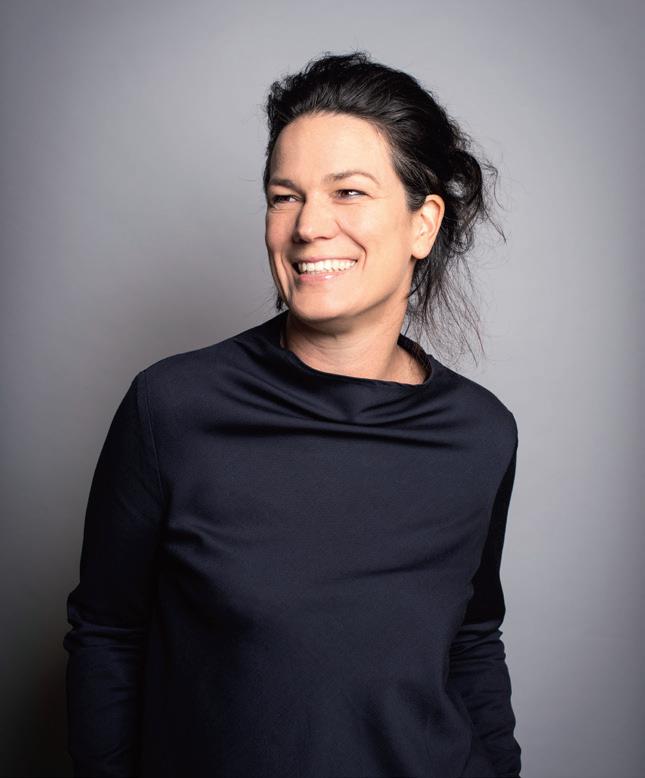
And there’s no question that greater exposure to nature does precisely this. A University of Exeter study of 20,000 people found that just 120 minutes per week of immersion in nature had a marked impact on mental and physical health.
In terms of innovation in the space, Bright believes it’s less about jumping on a trend and more about using modern techniques to circle back to the ancient truth that humans can’t exist outside of their natural environment.
“Urban heat load is a massive problem, with black bitumen everywhere in our Australian cities. So designing to keep tree canopies, using green rooftops – which up until recently were a kind of futuristic, way-out thing – this is all becoming more commonplace. Biophilic design is not some high-tech future concept; it’s returning to the understanding of how our cities need to function in harmony with place.”

Dhudhuroa-Yorta Yorta consultant Allan Murray (above, right) is working on using a train line in Melbourne to tell an ancient story. “What we want to do for the Frankston line is to create a songline,” says Murray, who works for engineering giant WSP, ensuring that Traditional Owners not only have a seat at the table in highlevel planning decisions but also that the story of place and Country is woven into the built environment.
“Community or school groups can hop on and off at each of the stations we’ve worked on [above] and look at some of the

cultural outcomes that we’ve achieved then jump back on the train and go to the next station and gather more knowledge about the land that they’re travelling on.”
His goal extends far beyond tick-a-box policy decisions; the goal is to create as many touch points as possible with the cultural significance.
Murray says in recent years “there’s been a huge cultural shift” around people’s appetite for First Nations design principles, which include respect for the land and its spiritual significance, sustainability and harmony with the natural environment and the incorporation of First Nations knowledge, art and cultural practices.
With a deepening commitment to establishing Reconciliation Action Plans in the architecture industry, as well as programs such as BLAKitecture – an annual series of talks exploring all things Aboriginal and Torres Strait Islander in the built environment – Murray believes this weaving of culture and Country is trickling into the residential market, too.
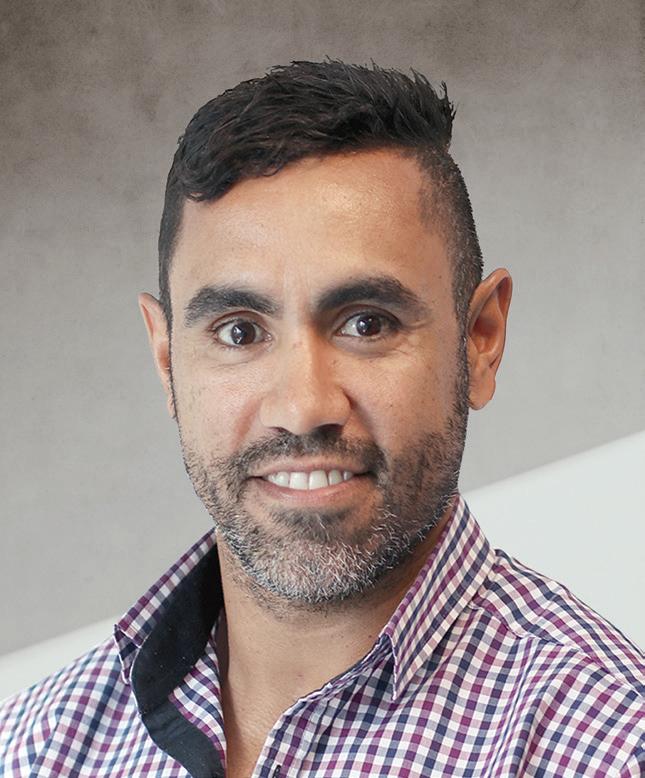
“It’s really the architects driving this,” he says. “A lot of firms are reaching out for us to assist them around this cultural design space. We’ve been able to present the high-level concepts of what a building could look like with cultural influence, or a landscape design, even how to implement yarning circles within garden beds and the like.”
Architect Melissa Bright agrees. “Where we’re headed in terms of design and perhaps, on a smaller scale, with our houses, is towards a conversation about designing with Country. Not just the nature aspect but the place itself; honouring the history of that land.”

With voice-activated hubs such as Amazon Alexa and Google Home, our houses have been able to hear us for a while. And into the next decade, they’ll actually begin to listen.
“The concept is called the Internet of Things [IoT], a way to describe how everything connects and talks to each other,” explains futurist Dr Keith Suter (above, right), managing director of the Global Directions think tank.

“One example I quote in my talks is that you’ll soon have a situation where your
You’ll have a situation where your car and your refrigerator talk to each other. So the fridge says, ‘We’re running short of milk’... and, of course, your car will then reroute you to the nearest carton of milk.”
car and your refrigerator talk to each other. So the fridge says to the car, ‘We’re running short of milk,’ and the car will say to you, ‘You’ve got to make a detour to buy some milk on the way home.’ And, of course, your car will then reroute you to the nearest carton of milk.”
This kind of whole-house ecosystem is seen as “contextually aware”, a network of devices that not only communicate with each other but learn – and adapt – to their inhabitant’s lifestyle.
The instruments of this not-so-distant future reality appeared in every corner of the International Consumer Electronics Show this year, from a sprinkler that senses the moisture in the earth and reads the weather in order to skip a watering if rain is forecast, to a smart switch that learns your habits and personalises lighting design based on your routine.
This brave new world is not without its risks, cautions Suter. “Data is the new oil. So where information is free, you’re the product. The more you use the internet, the more the internet is using you to gather information about your preferences.”
Ubiquitous connection to the internet also brings with it a host of security and privacy concerns, he says. Burglars might be able to hack your appliances to determine whether you’re home. Or governments and other agencies could have access to untold amounts of personal detail.
And while the recent debut of opensource connectivity standard Matter (a joint project between Apple, Google, Amazon and others) looks to address some of these security concerns by improving the compatibility of smart-home products, it’s still uncertain how that might work.



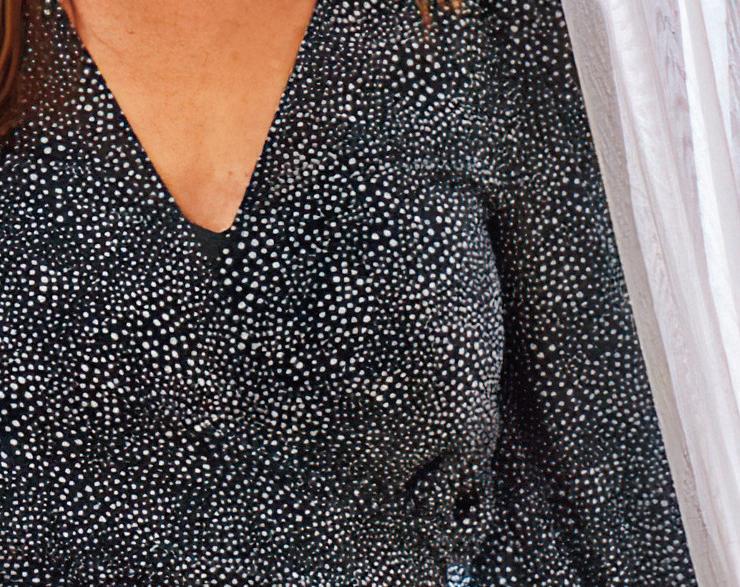



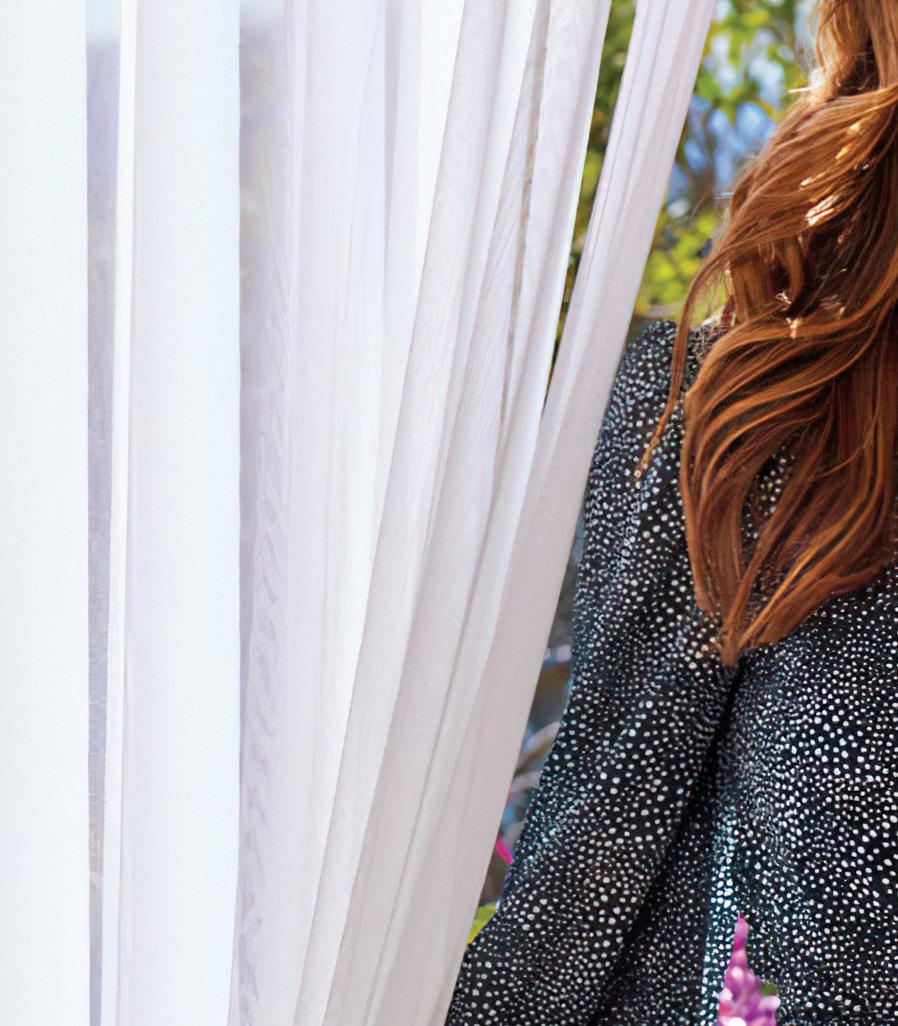

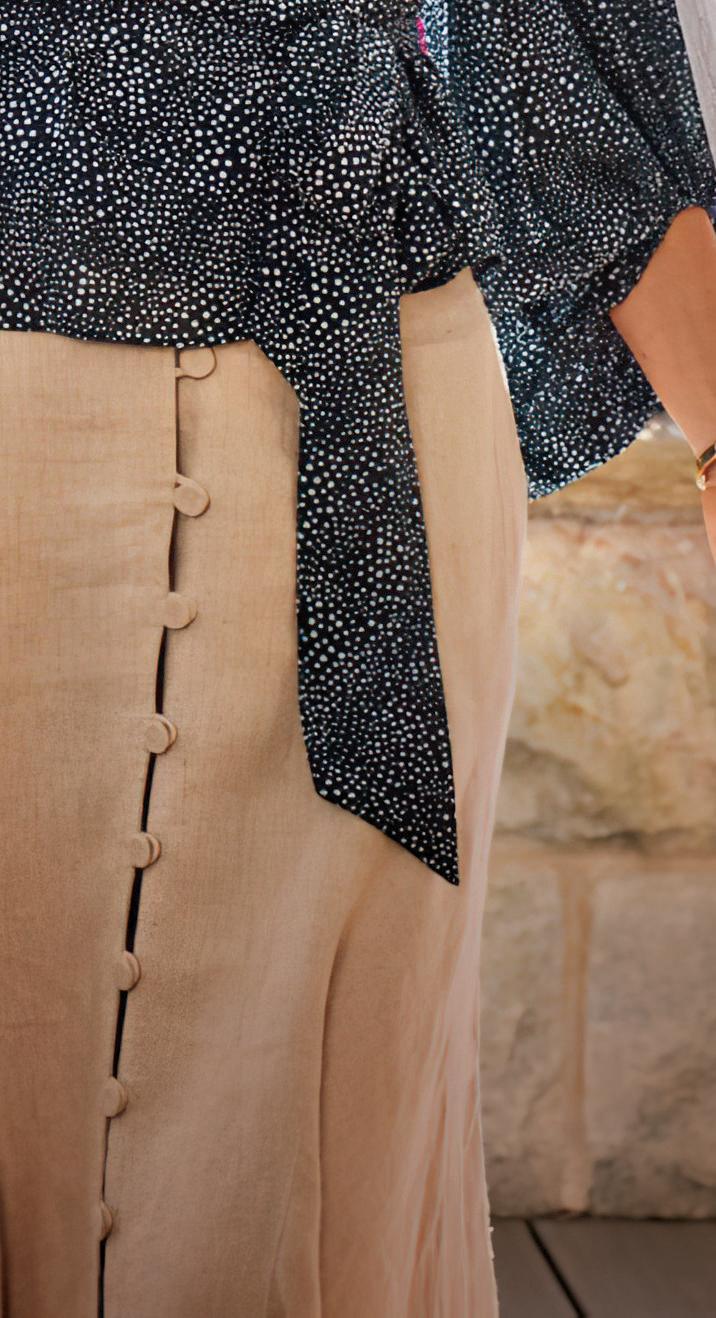



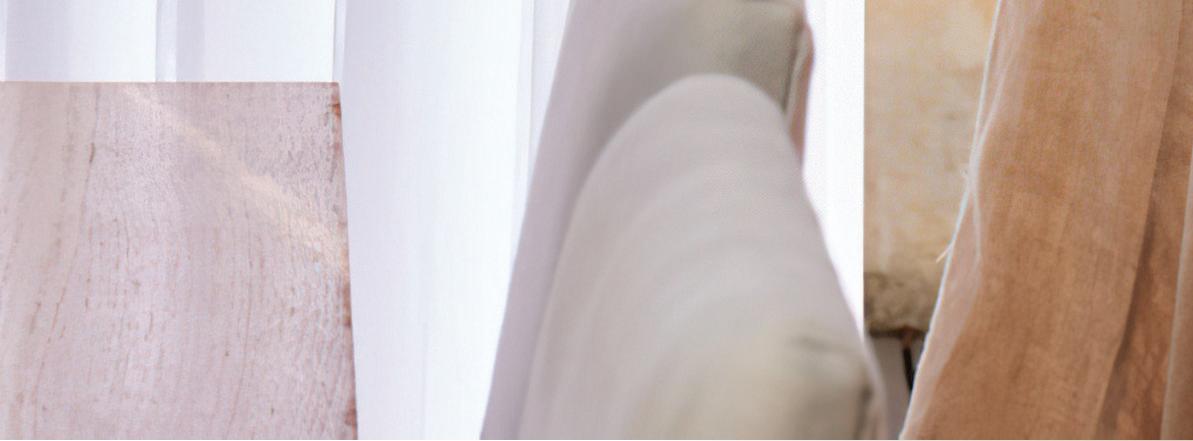



Study in 2-week residential blocks in 5 countries and graduate with a global mindset. Your journey will take you from Australia to India, Asia, Israel and the United States.
Find out more sydney.edu.au/globalEMBA
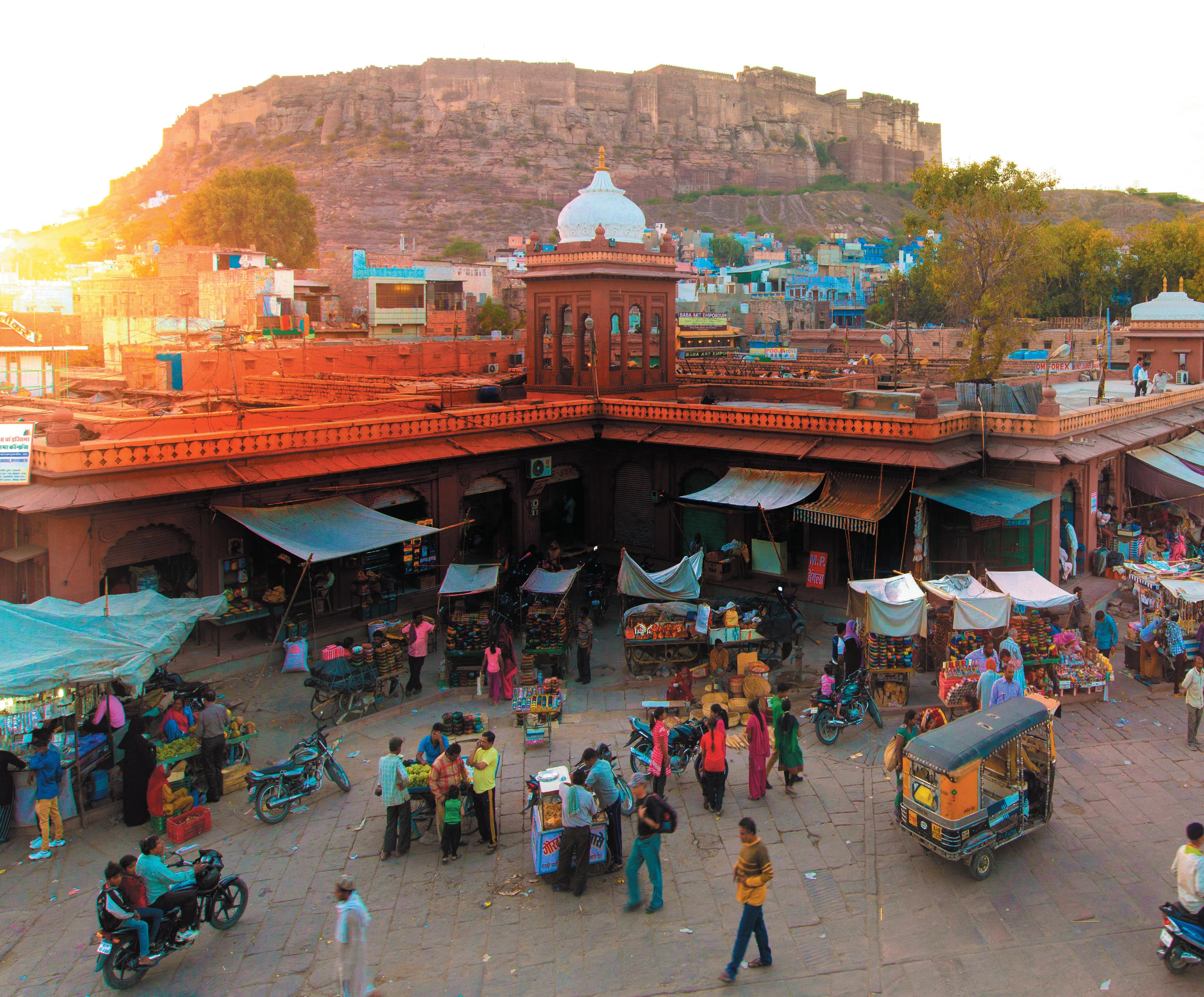
To influence the world, you need to be inspired by it

How do leaders navigate the most exciting, disruptive and risk-loaded technology of our time? Business schools are going all-out to help build essential skills and knowledge in AI – fast.
By Jane NichollsAs any technologist will tell you, artificial intelligence is not a new beast. The march of intelligent machines has long been a sci-fi trope and the term as it relates to computing was coined by researchers in the 1950s. But the launch of OpenAI’s ChatGPT large language model (LLM) in November last year has been a shrill wake-up call for leaders: AI is your job now, too.
“It might not be new from a technical perspective but generative AI is revolutionary,” says Judy Slatyer, head of the Responsible AI Think Tank at Australia’s National AI Centre. “Within two months, 100 million people were using it – that’s what we’ve got to get our heads around.”
Slatyer, a leader with global experience, is entrepreneur-inresidence at CSIRO’s Data61, which houses the National AI Centre. While she’s quick to point out she’s not a technologist, Slatyer brings real-life experience on how companies need to adapt to technologies. An advocate for continuous learning, in 2022 she took a six-week online executive education course to build her knowledge about AI’s implications for business strategy.
“It’s important that business schools and educators help leaders ask the right questions and then walk alongside them as they get the answers.” As generative AI goes deeper into companies and supply chains, she adds, leaders need to understand the complex opportunities – and the risks. “AI has very long tentacles and many different uses. Educators need to help CEOs and others to make sure they explore all pieces of the puzzle, including the impact.”
Aided by a highly educated population, Australia is well-placed to capitalise on the latest AI revolution but Slatyer cautions that the most recent Responsible AI Index shows a drop from 8 per cent to just 3 per cent of businesses reporting that they rate themselves as “mature” in the space. “We need good frameworks to help CEOs explain how they’re using AI in their organisation – to take accountability for the strategy and to overcome their fears about the risks,” she says, adding that few executives can confidently do that today. Business schools are developing a range of courses designed to help leaders build their AI muscles. Leading exponents from five schools share the key capabilities they’re targeting.
Discover how have streamlined end-to-end procurement processes to achieve������������������������ mitigate�����������accelerate its ESG initiatives with First Nations suppliers.





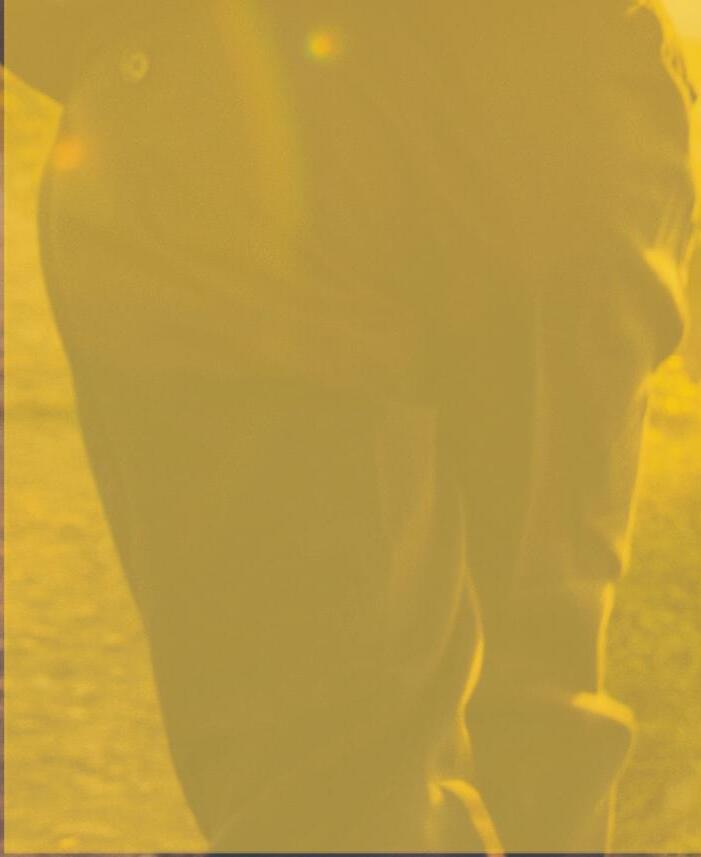

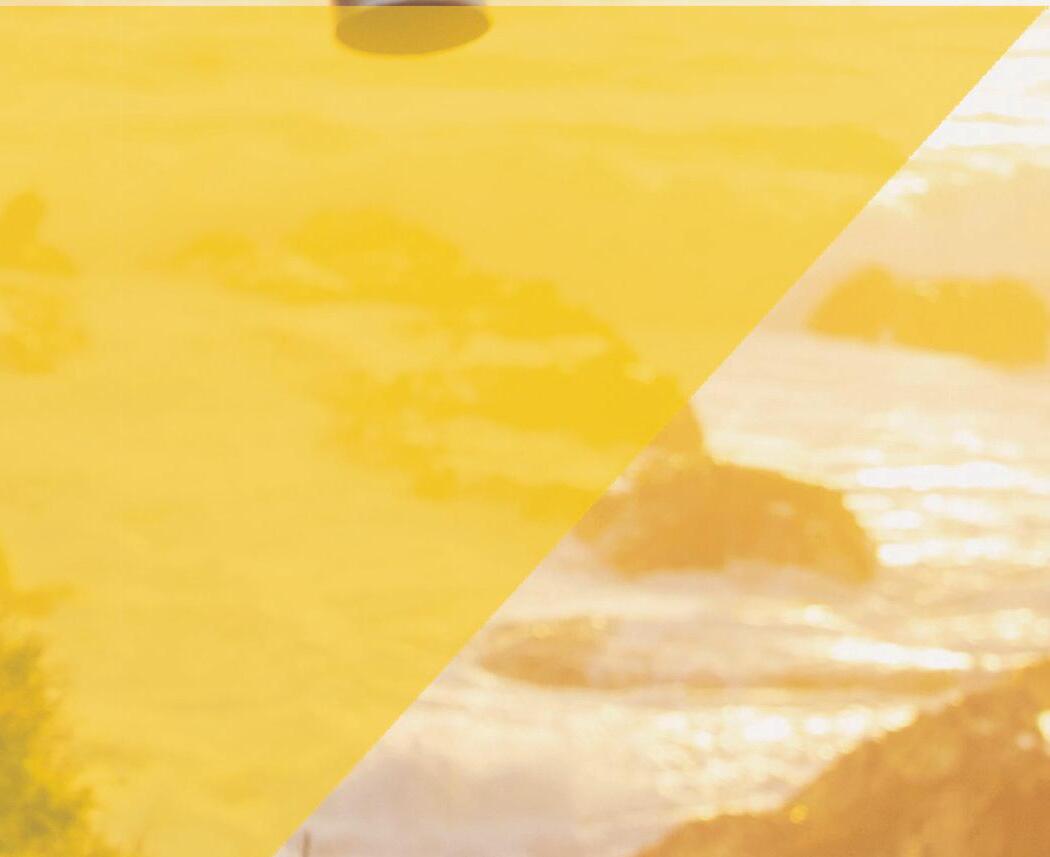

Within 48 hours of ChatGPT’s public release in November 2022, Professor Mary-Anne Williams hosted a pop-up workshop on generative AI for the UNSW Business School, where she is director of the Business AI Lab. “It is so exciting,” she says. Williams, who did her PhD in AI, has been working in the field for about 30 years and in generative AI since 2017. “It’s not about copying and pasting – it’s about using AI to add value and adapt it to a particular need or circumstance. That’s the human part.”
She warns that we should strap in for upheaval. “This is a massive step change – this turns everything upside down and we have to remake the world. Generative AI is very powerful and if we harness it in a safe, inclusive, responsible way, we can do something quite extraordinary. As educators, we are at the coalface of guiding that.”
There are fears – particularly in universities – about generative AI’s leg-up for copying but Williams flips that. “Copying is important for innovation. If we’re not producing people in Australia who can adapt what’s already out there, we’re creating generations of people who think they have to reinvent the wheel – we’ll never get ahead in technology. Of course, we have to ensure students don’t plagiarise but if we’re not encouraging them to use AI to explore, amplify and augment what they can do and how they can do it, that’s a real problem.”
Leaders don’t need to learn to code but they do need to develop an appreciation of what’s under the hood. “Our program has no formulas, no code at all,” says Professor Matthias Holweg from the University of Oxford’s Saïd Business School, which introduced an online short course in 2019. “We teach leaders to understand how these methods work in an illustrative way so they can go away and understand the potential and the risks.
“I tell leaders they need to think like taxi drivers who know very well what kind of car they want. Hybrid, electric or diesel? Sedan or an SUV? That brand or another? The cab driver doesn’t need to know how the fuel injection works but he or she knows very well whether she wants fuel injection or an EV.”
Executive education in AI aims to get students to the level of what Holweg calls the competent customer – or clued-up taxi driver. “You work in this space and you know what’s good
As Williams points out, calculators and even shovels were once revolutionary new tools. “The surprise is the speed with which it’s happening and also the magnitude of the change. Nobody has seen anything like this – ever. We’re going from riding a horse to co-piloting a spaceship in one step, without a bicycle, car or plane in between. It’s one huge leap so there’s a lot of risk and uncertainty.”
Creating value from AI is something the UNSW Business AI Lab, which launched last October, is focusing on. “It’s not about profit, it’s about value,” says Williams. “Which AI should we be implementing? Which will have the biggest impact, the most ROI and help our customers create more value for themselves? We talk about value because our definition of business is every human endeavour – including social enterprise, government and for-profit businesses.”
Associate Professor Babak Abedin from Macquarie Business School is equally excited about the potential of AI, beyond operational automation, to improve productivity, which many are already familiar with. “AI is going to help humanity and represent us in places and cases and applications that would either not be feasible for humans to be there or it would not be as efficient,” he says. “An extreme example is having AI represent humans under the oceans and in space to make real-time decisions.”
and bad, what’s risky and what’s reliable. Getting leaders there means we can use AI to society’s advantage.”
“They need to understand from a business point of view where the intersection with AI is and the value you can create,” says Lamont Tang, program director and director of industry projects at the Australian Graduate School of Management (AGSM) at UNSW Business School. “We build those foundational skills so leaders can navigate between the hype and the noise.”
Part of that is knowing the right questions to ask, much of which comes down to the datasets on which AI and machine learning (ML) algorithms are trained, along with a clear view of the purpose. “When we engage with scaleups and startups,” says Tang, “we always ask what the data asset looks like, how it will be used, who will use it and other questions that leaders should be cognisant of.
There’s a lot of talk about the issues around bias in AI and many infamous examples of how it gets companies into trouble, from algorithms identifying nurses as female and doctors as male to racial biases in recruitment models.
“Knowing what goes into your model is really important,” says Anita Arbogast, executive director of the Centre for Business Analytics at Melbourne Business School (MBS). Big organisations will need to understand how to feed their own AI, using data from inside their walls. “Where security and accuracy are paramount – such as in healthcare or banking – that’s really important. Large language models (LLMs) have been fed copious amounts of data from the web – not necessarily the most reliable source. Generative AI makes the potential to spread misinformation so much faster.” As with other schools, MBS is devising a variety of courses to get leaders across this risk, stressing the importance of having a clear, considered view of their data.
That also means getting a handle on whether your dataset could hold historic information that could lead AI to make biased decisions, such as discrimination in bank lending based on race or gender. Professor Zsolt Katona at Berkeley Haas business school in California prefers to talk about fairness. “Bias can be mixed up with the statistical meaning of ‘bias’,” says Katona, lead faculty for the school’s online course in AI business strategies and applications.
“That’s why I prefer to use ‘unfairness’. Contrary to what
some believe, a lot of human tinkering is involved to get these algorithms to work, even if they appear autonomous at the end. We need a lot of human input – and the more eyes and the more different types of eyes the better.”
Data is the life source for AI and business schools make it clear that doubling down on data privacy and security is another responsibility that goes all the way up to the CEO. “Look at the two recent major data breaches in Australia – there was information kept of people who were no longer customers,” says Arbogast. “Leaders should realise their organisations need to hold the bare minimum of data to service a customer.”
Tang says the evolution of LLMs means they will be more efficient with less data. Leaders who ensure their businesses prioritise data quality over quantity and are transparent about how they use data could win big. “Signalling that you’re taking responsible steps for all your processes and your technology is how organisations can distinguish themselves from their competitors.”
In 2019, after consultation with hundreds of stakeholders, CSIRO’s Data61 produced Australia’s AI Ethics Framework. “There are eight principles and they have much in common with frameworks in the US, Canada, the EU and China, and big tech companies,” says Abedin. “For executives, the framework is a good point to start thinking about what they mean for their company.”
Try again



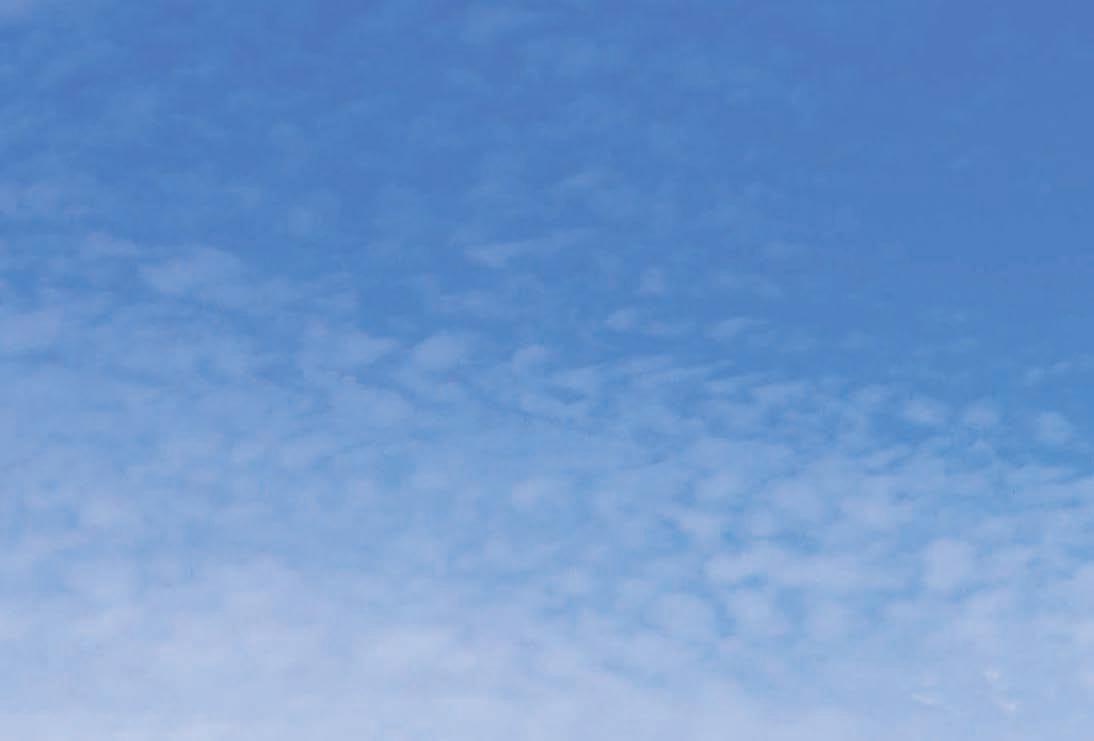




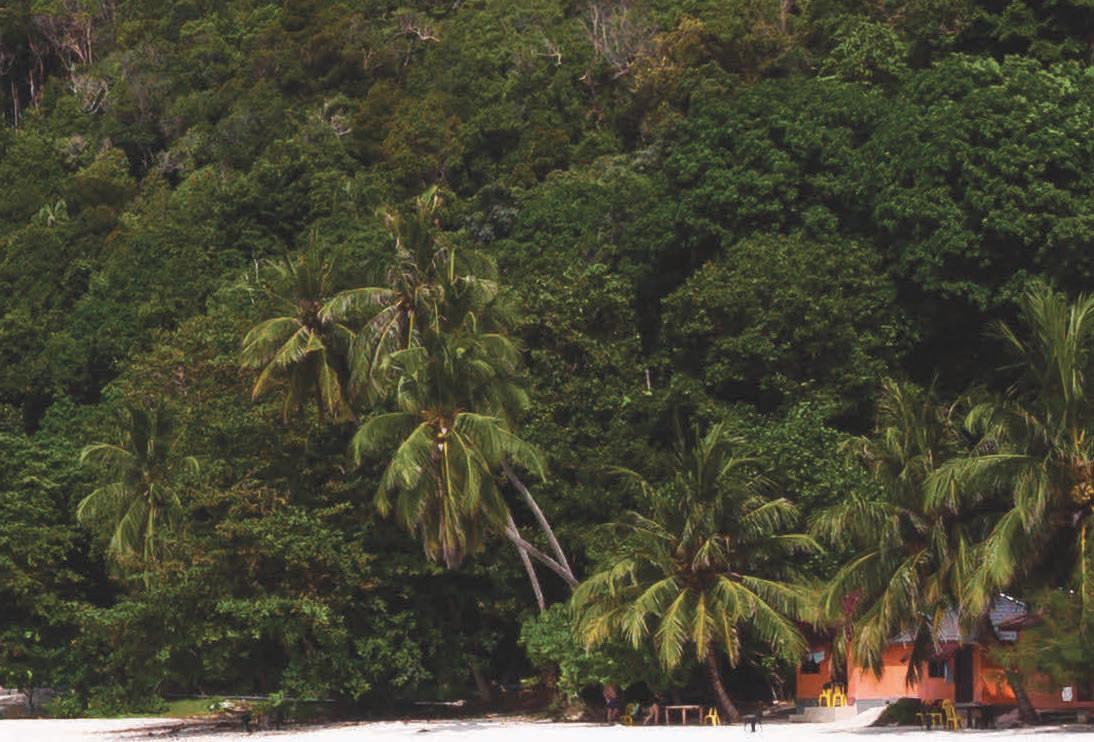
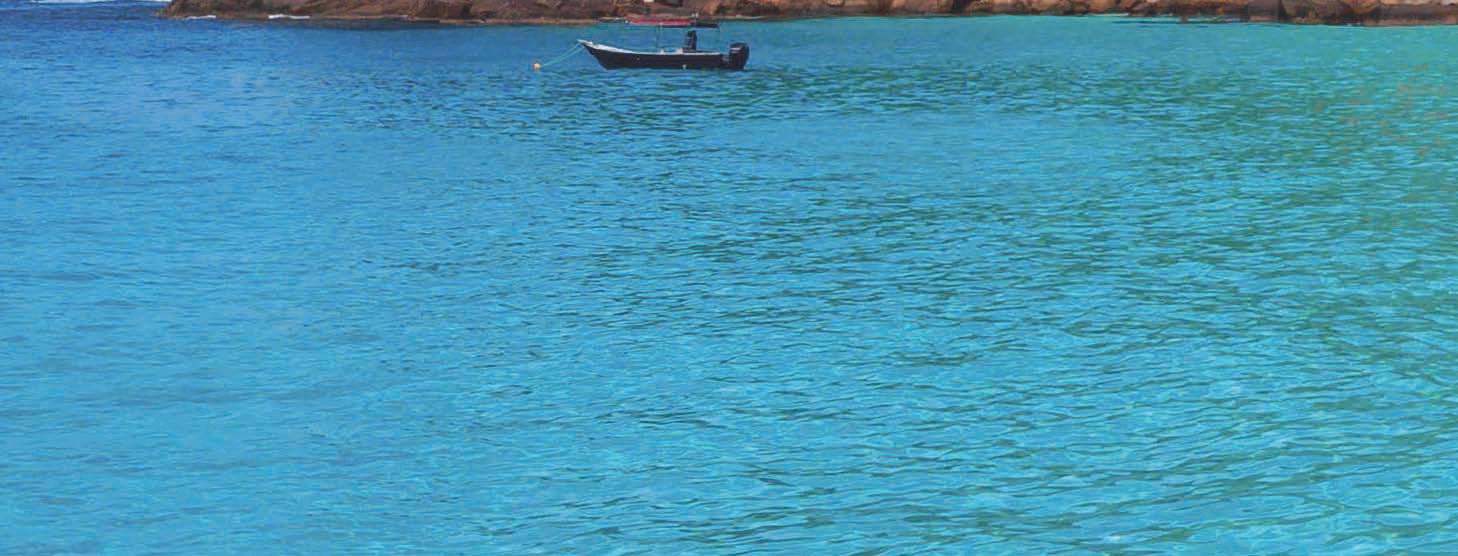

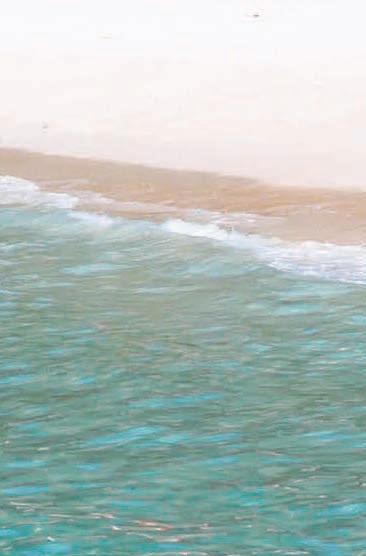




No more throwing to the tech team – all leaders, including line managers, should be able to clearly explain how they are using AI, along with their plans for their workforce as AI takes over more tasks.
Short courses are the smartest path for essential grounding. “It’s not much use coming into our executive diploma in AI unless you understand the basics,” says Oxford’s Holweg. “We get people from every sector for our six-week online program – many from government, consulting, healthcare, pharma and legal. The least represented is manufacturing – they think, ‘Oh, we make stuff, we don’t need to worry about it’, though I would beg to differ.” Holweg’s point is that AI is at the heart of industrial automation.
The academics are reassuring about the understandable anxiety experienced in the face of the AI learning curve. “We look through a business lens at what leaders – who are not coders or mathematicians – need to understand in terms of the concepts to bring to the fore and also to ensure they can ask the right questions around AI,” says Arbogast.
“Our courses are suitable for people with absolutely no STEM background,” says Berkeley’s Katona, echoing the
“We want to shift the conversation from focusing on the tech because the future is all about human-AI collaboration – how we work together,” says Williams. “AI is awesome but without humans it doesn’t have direction, motivation or real problems to solve. That’s what the UNSW Business AI Lab is oriented towards, plus a lot of our other courses.”
Leaders themselves, says Arbogast, “will be disrupted or displaced” if they don’t upskill around AI but keeping soft skills sharp is all-important, too. “AI is learning and creating from the data being fed into it, finding the patterns and the networks, but EQ and the human skills of being able to interpret with nuance is true intelligence.”
“In a way, we have to redefine what creativity is,” says Williams. “A lot of people would say creativity separates humans from AI or machines. Yet generative AI on its own is more creative than most people. In the hands of a creative human, it’s even more so.”
sentiments from many of the other business schools. “We try to explain how AI works without really any equations. Our goal is to teach them language so that they can communicate about it.”
“This year, we’ve added more case studies about AI and machine learning,” says Tang. “We’re not going to teach our executives to code but we can give them a little taste of how just a few lines of code can help automate workflows or reveal new growth opportunities. In executive education courses, we’re teaching data literacy and data analytics and, this year, we’ve had a lot of incoming demand to upskill leaders and managers in generative AI.”
More help is on the way – 2024 will see multiple new courses at business schools to get leaders up to speed on generative AI. “Organisations are reaching out to us and I’m sure to others,” says Abedin. “As far as I know, there is no single course out there to cover everything but there are a lot of discussions and there’s a lot of awareness. Moving forward, you will see more systematic learning and teaching programs.”

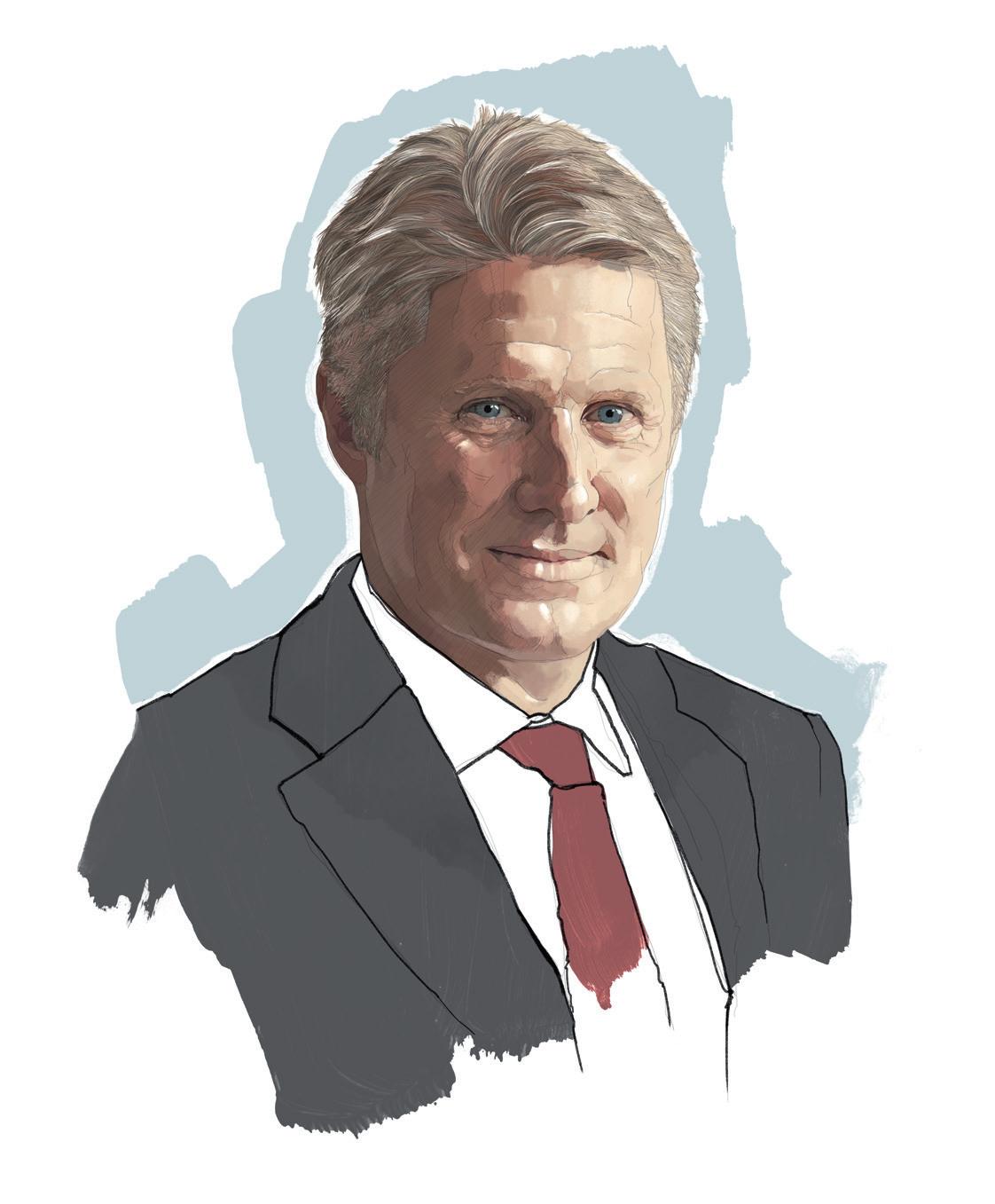
How do you define good leadership?
It has a couple of elements. One is to be able to operate at two speeds – what I call “‘in the today” and “‘in the tomorrow”. It’s being able to lead your organisation to be effective today but thinking about what’s coming around the corner. What does tomorrow look like? Good leaders can also zoom in on the detail with their people – without micromanaging – and then zoom out to see what’s strategically important and what stuff you can leave behind.
That’s quite a skill, isn’t it?
Zoom out too far and you’re not on top of things. Zoom in too much and you’re not visionary enough. It’s quite a balance.
You talk a lot about the importance of foresight. Is that really something people can master?
Well, you can probably improve on it but I don’t know if you ever master it. But it’s something that boards are starting to think about more and more. It used to be insights – show me the data and what does the past tell us about what we should be doing today? – but increasingly boards are being tasked to think about what’s coming. What foresight can they bring from the wealth of their experience? Instead of asking for a new report all the time and looking back, it’s learning to look forward.
The former lawyer and new head of the Australian Institute of Company Directors says boards need to look into the future... right now.
You’ve joined the AICD at such a challenging time. Boards are grappling with enormous issues of cybersecurity, AI and climate change. How many directors are up to the task?
Quite a lot, I think. Our director community is pretty strong. When I went to law school many years ago there were all these cases of corporate train wrecks. You don’t hear as many terrible circumstances now so directors do a good but not perfect job – no-one is perfect. The increasing challenge is the tsunami of regulation that keeps accumulating. That can be quite crushing for directors and boards. They should be dealing with all that complexity you mentioned but instead they’re trying to work out the latest change. The regulation may be well-intentioned but it doesn’t have regard for the cumulative effect of all the changes that keep coming, one on top of another.
What do you think a best-practice board looks like?
I’m sure you’ll find a management consultant who’ll tell you the ideal size of a board is seven because of the human dynamics. You need more than five to get enough diversity and you want less than 10, otherwise it ends up being too big for the chair to manage the interpersonal dynamics. Scale does matter but boards have to be inclusive in terms of being chaired well and allowing different views to come through. You can put 10 people with a variety of experiences and diversity of thought in but unless there’s an environment that allows that to come forward, people aren’t going to speak up and say what they really think.
Even at that level?
Sometimes, yes, on hard issues, social issues or very difficult corporate issues. So you need to create an environment where people with different thoughts, perspectives and experiences can put them into the mix. And a good board gets behind decisions once they’re made, even if they aren’t the exact decision I wanted or you wanted. A good board can rally around the decision and not lick their wounds and think, “Oh, I didn’t get that one.”
Similarly, you have to be able to correct the course when you know you’ve made the wrong decision.
Absolutely. Nothing is forever. At the AICD we call it being adaptive. The world is full of six-month chunks. The days of the five-year plan are gone.
You mentioned diversity. How reflective of our society are boards?
If you run the numbers, they’re not. Gender-wise they’re not far off but culturally or racially they’re not, I would suggest. I heard of “postcode diversity” the other day. Look at the listed companies and look at the postcodes of where their directors live. There aren’t many from regional areas; there’s probably not many from certain demographics within each city. So there is some way to go. But having said that, it’s not about getting a perfect paint chart, if you like, of diversity. It’s about doing the right thing for the stakeholders, which will depend on the company and what it’s trying to achieve, as well as on the skills matrix that you have. You can have the perfect diverse board and it still might not be right for the company at that point in time with its particular set of stakeholders.
Given that there’s so much pressure on directors these days, what’s your pitch when someone says they’re on the fence about pursuing it as a career?
If you can, talk to someone you admire who does it well.
It’s not going to be plain sailing. It’s a profession, not a semiretirement job. Not every day is going to be perfect but there are plenty of positives, impacts and contributions that you can make.
There is a little bit more fear these days.
Yes, there are liability issues. Some of the stuff we try and teach is how you can get in front of that – check the insurance, do your due diligence before you go on a board, all of those things. But you’ve also got to examine why you want to be a director. If it’s just a vanity project, maybe it’s not for you.
You speak with chairs of ASX200 companies all the time. What’s the one issue they’re really worrying about right now?
Cyber is right up there because it’s so quick-moving and it probably doesn’t matter what you do, you never solve it. Longer term, climate. You’re trying to make decisions that are going to have 10-, 20-, 30-year implications and that’s big.
When it comes to cyber, how do you think boards can best build cyber resilience?
Build internal capacity but also have some third-party help. There are experts who live in that world every day. Unless you’re a huge bank or corporation, you’re probably not going to be able to build sufficient internal capacity so don’t do it alone. And constantly try to keep abreast of trends and ask your management intelligent, challenging but supportive questions. In AICD’s Essential Director Update last year, David Thodey [chair of Xero and Tyro Payments] said there are three questions you should ask your management: What data do we have that cybercriminals might want? Why do we have it? And if we don’t need it then get rid of it. Third, is it coded, encrypted?
What’s your view on boards paying ransoms?
Our view is that it shouldn’t be outlawed. There should be some level of flexibility, depending on the circumstances. There are some rules and guidelines that can be given to help companies and governments navigate their way through this and probably some level of what I would call “safe reporting”. If people can report when they’ve received a ransomware request, the government can say, “Well, actually, we’ve had seven of those in the past month and we suggest you don’t pay it because that particular threat actor has a history of not returning your data.”
And what are your thoughts on penalties for directors of organisations that have suffered data theft?
If the directors haven’t protected the company properly and the board signed off on something that’s substandard, there probably should be some sort of consideration. But I don’t think there should be a specific liability just because their walls have been breached. That feels pretty heavy-handed and it may not promote sharing of information. If Bank A has a major breach, you want it to share it so that Banks B, C and D don’t suffer the same breach.
Coming back to climate change, stakeholders are very vocal about their expectations. How big a problem is greenwashing?
Clearly, there are some people who use language deliberately without having anything to back up the claims they’re making. In legal terms, that’s called puffery. ASIC has got a record number of cases going at the moment because we’re in new territory. There’s also a lack of clarity on some of the language. People will say “net zero” and there might be four or five people in a room and you could have four or five versions of what net zero means. So probably some people are genuine but they’re using loose language that hasn’t been sufficiently pinned down.
Is green-hushing a problem?
It could become a problem. How do you react when someone threatens you? Most people shut down a bit and protect themselves and corporates are no different. So instead of disclosing on a best-practice basis, they’ll disclose on a minimum-practice basis.
Last year, ASIC launched a civil case against directors and officers of Star Entertainment Group, alleging they breached their duties. Is that making directors nervous?
Any case that’s brought against directors individually, rather than against the company, is going to have people sit up and watch. This is particularly interesting because it’s going further down the line of non-financial risk.
It’s very unusual for ASIC to do this.
It is. There’s some suggestion that it’s testing the edges of the law. That’s dangerous territory… Any director in that circumstance is going to suffer heavy personal damage and if the court says, “That’s too far, ASIC, you’ve got to pull it back”, well, a lot of the damage has been done.
So what do you think directors can learn about non-financial risk from that case?
There’s a heightened need to be aware of non-financial risk relating to money laundering. Every industry will have their hot area – their particular area of focus – so I think one of the takeaways is what area of risk and compliance do we need to focus on given what the company does? And are we putting adequate resources into that rather than giving everything equal weighting?
You moved back to Australia in 2020 after more than a decade in London. What’s the corporate landscape here compared to the UK? We’re behind on privacy and data protection. On the diversity front, there’s more open conversation on gender and sexual orientation here but we’re probably behind on racial diversity. We were way behind on climate although I think that has reversed in the past 18 months. When I first arrived, I remember thinking, “Hang on, we’re having the wrong debate. We’re talking about whether there is climate change, whereas everyone else is talking about what to do about it and how fast we can do it.”
What’s your biggest strength as a leader?
Integrity is important to me. I do what I say I’m going to do. And I do really care how the organisation is going. I care
Look at the listed companies and look at the postcodes of where the directors live. There aren’t many from regional areas; there’s probably not many from certain demographics within each city. So there is some way to go.
about how people are feeling about it. It’s not an objective exercise for me and it’s not misplaced passion or emotion; it’s just that I do care and I’m not afraid to say it.
And what about your biggest gap as a leader?
If we’re thinking about a change program and I’m leading that, I’ve been thinking about it for three months – I’m already there. But other people are hearing about it for the first time. My gap is that I don’t always slow down to allow people to come along.
It can be hard...
I’ve never met an unambitious, patient leader who’s successful [laughs]. It’s difficult because you’ve got a board that’s going, “Go further, go faster.” And you’ve got some people who are change-fatigued. The role of the leader is to sit in the middle and manage the polarities but my inclination is to always go faster and further.
How do you help people to become more change-resilient?
Everyone loves talking about the big transformation, this enormous light on the hill. I personally prefer to chunk it down into small steps; victories you can celebrate along the way. My grandfather was a product of the Depression and he used to tell me about the power of compounding – putting money away, earning a bit of interest, leaving it there, letting it build. The power of compounding incremental change is sometimes better than high-risk exponential change.
There’s a lot of networking in your role. How are you on that front? Good but I need to get better. It’s a bit like my mum would say about school.
Are you getting out of the office enough?
On a good week, yes. On a bad week, no. Forty per cent is the rule, I reckon. Forty per cent out of the office or talking to people. Less time in meetings or behind screens.
What advice would you give a brand-new CEO?
Listen first. What’s the carpenters’ saying? “Measure twice, cut once.” So don’t go in and change everything straightaway. Actually get to know your people and get to know your context first.

To meet this shifting world order, adaptive leadership invites open collaboration and the deployment of creative thinking. Across decades of developing leadership capabilities, the Australian Graduate School of Management (AGSM @ UNSW Business School) has been dynamic in its response to changing economies, technologies, business practices and societal expectations. Late last year, the Academy of Adaptive Leadership was launched at UNSW’s Canberra campus, where it has advanced adaptive practice for a new era of business.
“Leadership has become so much more important in these challenging times and people are looking to leaders to guide them through,” says Professor Nick Wailes, director of AGSM and deputy dean at UNSW Business School. “Everything we do at AGSM is about building leadership capability to create a better future in an accelerating world. Adaptive leadership is a movement away from the idea of the leader as a heroic figure who can answer every question.”
Professor Catherine Althaus, who leads programs for the Academy of Adaptive Leadership at UNSW in Canberra, wants to be clear that “we’re not touting adaptive leadership as the panacea for everything –it’s an additive to the leadership repertoire. Adaptive leadership is defined as a practice, not as a person or a position. Therefore it’s available to all and democratises leadership.”
Althaus, a self-described “pracademic”, says practical aspects are so core to adaptive leadership that Ronald Heifetz and Marty Linsky, the men regarded as its founders, started sharing its principles at Harvard University decades ago, many years before they began to write it down. “Ron and Marty were interested in shifting practice but it’s only recently they’ve started to engage with the scholarly underpinnings of it.”
An adaptive challenge has no known solution. When you have a technical problem – even if it’s difficult – there’s an established way forward. “Baking a cake or flying to the moon are both technical challenges, with very different levels of complexity,” says Althaus. While there are different ways to achieve both, they have each been successfully completed by others in the past.
“Adaptive challenges may also have multiple contested solutions and nobody is sure about the next steps,” she says. They are the kind of problems that require facing sometimes painful truths and turning the status quo upside down to solve them. Althaus emphasises the importance of holding onto technical leadership frameworks in tandem with adaptive practice. “In the real world we face a mixture of both technical and adaptive challenges all the time.”
Pairing adaptive leadership with technical expertise is the edge organisations need to cope with the roiling ride of modern business. There’s still a need for leaders to set a vision and inspire teams to go on the journey to get there. “That’s great and we don’t want to get rid of that,” says Althaus. “Adaptive leadership is a framework to mobilise people to make progress on challenges where there’s no clear path – and everyone is a part of it.”
Adaptive leadership draws inspiration from the natural world. “It’s the practice of mobilising groups to tackle tough challenges. Linsky, Heifetz and others who built up the adaptive leadership framework looked at biological systems as a metaphor,” says Wailes. “In nature, organisms and ecosystems are always having to respond to change, dealing with challenges and changing conditions and they adapt to survive. They change the way they do things, develop new capabilities and ways of working with others.”
Likewise, organisations with adaptive systems pulsing through them are more likely to achieve long-term survival and success than those that are stuck in business as usual. “Particularly in the environment in which we’re operating – with multiple changes coming from so many different directions – organisations need that ability to evolve from where they are to a new structure,” he says.
Turning an organisation’s way of doing things upside down “requires a total shift in mindset”, says Althaus. That’s where being
prepared to down technical tools, or at the very least loosen the grip, is key. “Organisms successfully evolve not through deliberate planning or a five-year strategy but by experimentation,” says Wailes.
“Green frogs survived better than blue frogs because they were camouflaged from predators – genetic diversity was effectively experimentation that became the successful adaptation. Organisations need to be able to experiment with new ways of doing things and take the learnings to help their system evolve. It’s not that you’ve got to come out with a radical reinvention but rather that you are always evolving your structure, the way you operate, how you work with your partners and what you’re providing to your customers.”
the department. The focus is on the work to move the system, not on the people.”
While a program for Defence obviously has specific requirements, Althaus says much of it is applicable to leadership everywhere.
“We live in a VUCA world – volatility, uncertainty, complexity and ambiguity are the norms. Adaptive leadership is recognised as one of the key frameworks to help us navigate our way through the VUCA challenges we all face.”
Adaptive leadership can also ease the burden of leadership: if we’re all in this together, failure is on all of us as much as success.
“Often, there is no solution; the best you can do is to make progress and try new things and that’s the measure of success. In that sense, nothing is ever a failure – it gives you the ability to focus on the long game.”
Nous Group and AGSM @ UNSW Business School are delivering Journey: Leading Transformation, a five-year program with the Australian Department of Defence. Althaus, who is a key contributor to the design and delivery of the program, says Defence forces now have less time to pivot to respond to geopolitical issues, as reflected by recommendations from the recently released Defence Strategic Review. It’s never been done before – a classic adaptive challenge.
“That’s the kind of ambitious challenge that adaptive leadership steps in to meet,” says Althaus, who is also chair of public service leadership and reform and deputy dean at the Australia and New Zealand School of Government (ANZSOG) at UNSW in Canberra.
“The Journey program is training 3500 people across Defence – it’s deliberately rank agnostic and across the military and non-military sides of the defence system. It’s opening network opportunities for people who otherwise don’t get to meet and for them to work together focusing on new ideas about leadership. It’s about openness and honouring both the person with a 35-year history in the Navy and the new grad who’s just joined
To get this kind of system thinking running, it’s essential to bring in everyone’s ideas and for them to have equal rank. “There are specific principles in adaptive leadership that rely on celebrating local intelligence and local knowledge,” says Althaus. “It’s recognising that people on the ground in the company, government department or community group have really important knowledge. You ignore that at your peril and you need to deliberately capture it and build it into a system perspective.
“That’s key: adaptive leadership focuses on the system rather than the individual. We dig deep below the surface to find out what’s going on and surface the undiscussables that need a deeper level of appreciation. It implicates everyone – we always ask everyone to answer the question: ‘What is my role in the mess?’ It doesn’t shy away from the fact we all need to step into the zone.”
Wailes finds the biological metaphor is apt here, too. “We need to remember how valuable variety is – successful adaptation doesn’t happen because you focus all your resources on one thing. It’s when you try lots of things. Choosing one way to adapt to a situation is very hit-and-miss and highly risky. It’s really powerful when you ask, ‘What are all the different ways that we could adapt?’, then test to find out which one works.”
Failures lead to growth. “In a lot of environments, failure is seen as a bad thing but it’s an opportunity to learn,” says Wailes. “Adaptive leaders – and I hope graduates from our programs – give their people autonomy to try different things. If they try something and it’s not successful, the adaptive response is to ask, ‘What did we learn?’”
“Successful adaptation doesn’t happen because you focus all your resources on one thing. It’s when you try lots of things.”
Aware Super CEO Deanne Stewart knew she needed to lean heavily on adaptive leadership to instigate transformation in a highly regulated environment.

Combining her technical skill set with the principles of adaptive leadership has been instrumental in making Deanne Stewart one of the most respected leaders in the Australian financial services industry.
“She’s incredibly collaborative and open to new ideas,” says Nick Wailes about Stewart, an alumnus of UNSW, who’s on the university’s Business School Advisory Council. “She never thinks she has all the answers and she creates an environment for her people to find new ways of doing things, always asking, ‘What can we learn’ and ‘Where are the opportunities to improve?’”
Adaptive leadership has been central to leading what Stewart calls “one of the industry’s largest digital transformations”. For the past two years, Aware has been focused on moving the highly regulated business away from the industry norms of paper forms and multiple contact points – and into the digital age. The journey to make super simple and automated is something Stewart
describes as “both a challenge and an exciting opportunity that has not been accomplished in the industry to date. As we faced the myriad complex issues coming our way, we had to make sure we did it without grinding our business to a halt and create a much more adaptive organisation that can really utilise the power of this new technology and the new processes we’re putting in place.”
As well as members, Stewart is focused on Aware employees. “We want an environment where people feel that they are constantly growing and learning.”
Fulbright scholar. Aware is in the process of seeding its principles through the organisation. “We want our culture and our structure to be far more adaptive so that we can solve these complex problems coming at us. We’ve started by training our leaders around the adaptive leadership mindset and building out adaptive ways of working across the organisation. That will enable the organisation to accelerate.”
While there’s never an end point to such a culture shift – by definition it should keep adapting – Stewart says the Aware team is enthusiastically embracing the rollout. As well as the rapid evolution of technology and regulation, she says customer and community expectations are also shifting quickly. “Most of the problems are adaptive and as wonderful as my education at UNSW was, my commerce degree back in 1992 was more about developing a technical skill set. Today we also need adaptability, curiosity, courage, empathy – a lot of it comes down to culture and mindset, not just technical training, as well as a strong and timely feedback loop with members, your team and your stakeholders.”
Stewart says those critical non-technical capabilities are now woven into business school programs. “As a leader, that side of it has become far more critical. UNSW and AGSM are strongly tapped into the business community, seeing how organisations are evolving and the types of problems that they’re facing.”
In her experience talking with other leaders, Stewart says all businesses are in the midst of “some form of” digital transformation. “That is adaptive – you can’t perfectly predict how you’ll evolve an organisation, the individuals, the culture, the technology, the systems. That’s why you must set up a much more adaptive organisation.”
Nonetheless, the balance of technical and adaptive is vital, especially in an organisation such as Aware. “You do need to set goals and plan but gone are the days where you set a five-year strategy and just march towards it. You need a culture and a system that is constantly checking, that is curious, that takes a broad view and tries to withhold judgement.
Stewart encountered adaptive leadership in the United States, where she completed her MBA at Yale School of Management as a
“As well as the plan, you need to know where and how to adapt and to make sure you’re solving the right problem in the first place, as opposed to being wedded to a problem that you thought you were solving five years ago.”
“Gone are the days where you set a five-year strategy and just march towards it. You need a culture and a system that is constantly checking, that is curious.”
Embedding an adaptive mindset
“YOU CAN’T PREDICT HOW YOU’LL EVOLVE”
As CEO of the Electric Vehicle Council, Behyad Jafari wrangles a diverse group of stakeholders. Keeping them at the table and moving forward together requires deft leadership.
Complexity is a constant companion for Behyad Jafari. “Can you imagine how complicated it is bringing together vehicle manufacturers, the local motor vehicle industry and governments at different levels to get clarity of purpose and build a productive coalition for a better future when the policy environment is shifting all the time?” asks Wailes. “That’s being super-adaptive and Behyad’s a bit of a magician.”
Jafari says most leaders are traversing a complex landscape. “Not only are there no known solutions to issues, there can’t possibly be known solutions when quite often we haven’t quite got to the issues yet,” he says.
“Whether the problem is enough charging stations for electric cars or the impact of AI on our business practices, you need to be able to navigate new things and come up with processes to do the best you can amid continuing changes.”
It’s Jafari’s job to make progress through a maelstrom of change fraught with competing priorities. “I run a peak body that represents 97 companies and not one of them knows exactly what their future role will be. For some it’s more obvious – car companies will continue selling cars and they’ll be electric. But they may also become energy retailers or battery providers. They know that this profound change presents a lot of opportunity and they’re looking to do a few of these things in the most sensible way possible to discover our future path and develop a strategy.”
Jafari’s role has an extra twist of difficulty: he’s navigating such a rapidly changing industry while aiming to reach and influence a disparate group. “Whether you’re excited for it or not, change can be a bit scary and there’s the natural impulse to stick with what you know.
“We can provide people with the confidence that, yes, we can go through change without knowing all the answers but we know how to not know the answers and still be okay. That helps give people the confidence to keep moving forward.”
Jafari’s own confidence is buoyed by the fact that “the overwhelming majority of senior executives” he’s working with are excited for change. “They’ll say things like, ‘This job has been the same for the past 60 years and I get to be the one who changes how
this industry works.’ The option to do nothing no longer exists – everything about this sector is wholly transforming. If you’re not someone who wants to grapple with these changes, there’s not much room in this industry for you.”
“I often say that the more you know about something, the more comfortable you are saying, ‘I don’t know,’” says Jafari. “This can instil confidence in people to then work together to come up with the best possible answer. We’re not dealing with mathematical equations where there’s a clear answer. We want the best possible attempt to try to resolve an issue then move forward and try things out.”
Jafari has led the EVC for more than six years and previously held senior roles elsewhere in the energy space. He commenced his Executive MBA at AGSM “when I first started to manage a team. One of the valuable learnings I took from it is understanding people’s motivations and how to get them onboard with a mission and how to drive everyone in the same direction.”
Since completing the AGSM MBA in 2020 and as the EV transition has gathered momentum, Jafari has needed to understand very different worlds and help connect them even more quickly than before. “One example is bringing together stakeholders from the energy and the automotive sectors – often for the very first time – and helping them understand what makes the other side tick. Both industries are going through a period of profound transformation. Being able to play a guiding role requires the ability to understand the changes well enough that you can give people comfort that there is a steady hand on the wheel to help them go through the process.”

“THE OPTION TO DO NOTHING NO LONGER EXISTS”



She calls herself a market maker rather than a market leader, with each new business she has founded pushing Australia in the right direction for AI and the metaverse.

Maintain an independent voice
2022-present Founder, Responsible Metaverse Alliance“The RMA is a social enterprise set up to work with policymakers and regulators around the world to formulate standards and regulations for the metaverse so that when it arrives – in three to five years – it will be a safe place, particularly for women, children and the vulnerable. I’ve learnt to go straight to the top and deal with the ministers and commissioners. And that is just by being bold and being confident. What I’m very privileged to do – because I run my own businesses and I’m not associated with government, a corporate or a particular charity – is I can say exactly what I want to say and I can be very direct and call out the tech giants for poor behaviour. And so far that’s been successful. I do it respectfully and I do it based on evidence. There’s just not many people in the business or government community who are able to actually speak their mind. Whenever I do it, I get messages saying, ‘Cat, thank you for saying that. I’m not in a position to say that.’ So I’m lucky that I am an independent voice with a deep level of experience and international relationships.”
Be
“We know that out of 10 companies we invest in, seven will fail, two will be average and one will hit it out of the ballpark. What I coach entrepreneurs on is to really look at the company: is it time for you to step out of being the CEO? Is it time to pivot the product? Or is it time to start an M&A strategy so that you can exit before it all falls over? We have this expression in the startup world: “zombie business”, which is essentially a business that’s dead but it’s still walking around trying to do its thing. My coaching of all of the companies that come through Boab now is really based on what not to do: how not to do partnerships; how not to expand too quickly; how not to scale too quickly, in addition to some of the good things that they need to do.”
Use
2013-2020 CEO
“I started Flamingo AI in 2013 and sold it in 2020. It was highly successful until it wasn’t. The last couple of years were horrendously difficult because essentially we were failing on the ASX. COVID had started so I was not able to travel to America, where the business was run out of. Google and Amazon had come into the market with exactly the same product, giving it away for free. We fell from a very great height of being the darling of the ASX to really failing. I had to navigate all of that journey. Ninety per cent of startups fail and 85 per cent of AI companies fail. What I’ve realised is, you have to have that level of failure for things to evolve. With the number of businesses I’ve had, the law of probability says at least one of them is going to fail. And with that failure has come vastly superior learnings than anything I’ve done by being successful.”
“I loved every second of running The Ventura [a co-working space for women-led businesses]. It was very social, supportive and collegiate. Often it’s difficult for women to know their own leadership styles and strengths when we’ve grown up in a very masculine-oriented system. As one of the few female CEOs on the ASX [with Flamingo AI], I experienced an extraordinary amount of misogyny. I had a lead investor say, ‘It’s impossible for you to have five children and run a public company; which one are you going to choose?’ If we can give women some reprieve by being around female leaders, it’s an opportunity for them to find their own way of leading. Hopefully they can then step back into the more masculineoriented system and be stronger leaders.”
2021-2023
“CEOs in Australia do not have a very strong understanding of what artificial intelligence is – generally, there is a low-risk appetite for new technologies. But I’m very respectful of the CEOs who did step into The B Team [a platform for business leaders to drive progress towards better ways of working]. They’re committed to learn and to support, not only their large enterprises but the country’s evolution with AI. We’re well behind the rest of the world. There’s a very low level of government investment [in AI] and a low level of adoption. All CEOs must be starting to think about an AI-first strategy because we’ve already seen how quickly it’s becoming mainstream with the release of generative AI, and it will be invasive. If they don’t get on board now, they will be at a serious disadvantage.”
“I had a beautiful, comfortable, middle-class upbringing and there was something in me that was rebellious and wanted to crack out of that bubble and do something quite extreme. I’d also been brought up to know that the other side of being a privileged middle-class Australian is that you have an obligation to be of service. I saw the police force as a great act of rebellion at the same time as being in service to the community. I was really thrown in. What I had to do in the cops as a 19-year-old woman was act older, stronger and more mature. I was put in lots of extremely dangerous positions so that allowed me to now be confident standing on stage. It allowed me, when I was the CEO of a listed company and I was being attacked by investors, to have that presence and resilience to move through hard or dangerous times.”
Presented by Qantas Business Rewards
Fiona Jefferies launched Diva Works to deliver custom showrooms with first-class service for property developers and brands across Australia. She’s unlocked a smarter way to travel the world, finding inspiration and new opportunities to help her business soar.

As an industrial designer, Fiona Jefferies spent her early career working for agencies delivering fit-outs for trade shows and sales offices – but she always saw the potential for more. “The designs were good but I didn’t think they were backed by first-class client service.”
In 2001 she set out on her own, launching Diva Works with just $5000 in the bank and operating from her dining table. Today, the building design firm has a staff of 15 around Australia working for property giants including Mirvac, Stockland and the Dennis Family Corporation.
Jefferies’ guiding mantra is “to take the stress out” of a crucial part of the marketing process. Diva Works designs, builds and delivers sales offices, customised for each client. “There are so many marketing channels
now but there’s still nothing like the personal one-to-one that happens in a sales office.”
As an early member of Qantas Business Rewards, Jefferies sees the airline as a true partner. “Qantas has helped me build my business, taking me across the country many times to meet clients and deliver beautiful fit-outs. We can’t do this without them.”
Sydney All Australian capitals “Loyalty means being there”
“When I first went out on my own, I was project managing four stands at the Australian International Motor Show, then the biggest trade show in the country, doing a circuit around Australia. We were building more than 1000
square metres of stand space with a crew of 38 – and I was the only female on the floor. I bristle at female stars being called ‘divas’ because they have an entourage. To me, ‘diva’ says you deliver at a higher level and you need an entourage to support that first-class performance. Hence Diva Works; we’re each other’s entourage, supporting one another to do better for our clients. Loyalty means a lot to me – Mirvac was my first client and they’re still with me today. I use a lot of the same suppliers as I did back then, too. Melbourne is our biggest market so I fly there regularly. I joined Qantas Business Rewards in 2014 so I could earn Qantas Points for my business, on top of what I earn as a Frequent Flyer. I really work to maximise points earned when I’m flying and buying, as it offsets the cost of future travel.”
“I’ve been to New York several times with Qantas. On one memorable trip I went on a study tour with the Property Council of Australia. We got behind-the-scenes access to major property projects in Manhattan and it was fascinating to see construction plans coming together. It showed me a different scale of what’s possible and taught me to think bigger. Travel is essential for expanding your view. I get so much inspiration from the galleries and museums, including how tech can create a better customer experience. Things like building an immersive experience so a prospective customer can stand there in a sales office and see the view from the apartment. I’m excited that there are more flight options now for the New York trip –I might try the new route via Auckland soon. Booking all our flights through our Qantas Business Rewards account is easy. We can access discounts of up to 10 per cent and save on Qantas Club memberships for the team. I love having the Qantas lounges to continue working in comfortable surroundings when I travel – and as a Platinum Frequent Flyer I can access the gorgeous First Lounge in Sydney when I’m heading overseas.”
“The Qantas eastern seaboard route is my second home – I fly at least twice a month and the ability to choose from multiple flights between these cities means I can jump on a plane for a face-to-face meeting with a client at short notice. It was in-person meetings that secured our top longstanding clients and building relationships onsite is the reason we’re delivering our biggest sales office projects this year for Mirvac and the Dennis Family Corporation. Qantas Business Rewards helps us unlock the points that facilitate many of these trips. Beyond flights, we earn points through Qantas Hotels and rental vehicles with Budget Car and Truck Rental. I use Snap printing and we do our accounts through Xero. I also maximise the points I earn by using my American Express Qantas Business Rewards Card to pay for everything, earning the business triple points on Qantas flights booked with the Card. We’ve got to be smart – making our money work harder in every way is just good business sense.”
“I use points to request upgrades through our Qantas Business Rewards account. I’ve had so many over the years, allowing me to work or rest while I’m on the move.” Fiona Jefferies, Diva Works

As a Qantas Business Rewards member, the more points your business earns from flying, the faster you’ll progress through the three levels, unlocking more rewards and savings.1
The more you fly, the more points you earn The amount of points your business earns from flying is determined by your membership level. At Level 3, your business earns 40 points for every 100 points earned by your traveller.1
The more you fly, the more you save
Unlock bigger savings on flights and Qantas Club membership with each level and access special benefits, like the Gold Accelerator, exclusive to Level 3 members.1
When you book an eligible flight using your American Express® Qantas Business Rewards Card, the points your business earns from flying are tripled, helping you progress quickly through each level of the program. 2
Discover how other members unlock more for their business at qantas.com/businesspassport

As customers’ disposable incomes shrink, tap into their perceptions of value to boost sales.
how we can construct our garments more durably or efficiently”.
In addition, Denimsmith customers who buy online and click and collect from the Brunswick East manufacturing site “can see the tranquil nature of the factory floor”, says Le. “I think that there’s something quite powerful about transparency, knowing where your garments are made and who the people are behind them.”
Zoppos cites Kuwaii, another Melbournebased slow-fashion (locally made, limitedrun, timeless styles) label, for its radical itemisation on Instagram of all the costs that go into making its $159 Heidi T-shirt and $279 Beatrix pants. “Kuwaii know what their customers want and they’re being authentic and transparent,” she says. “They’re setting the tone for their brand and providing a great example of how small businesses can play in this conscious consumption space.”
Cost of living increases, the reverberating effects of COVID and rising climate change anxiety are all factors contributing to new purchasing behaviours that Dr Eloise Zoppos, research and engagement adviser to the Australian Consumer and Retail Studies (ACRS) group at Monash University, characterises as “conscious consumption”. ACRS studies indicate customers under financial pressure are shopping around more than previously. This represents opportunities for small businesses to beat the financial squeeze with genuine value propositions that speak to their customers’ needs, drivers and expectations.
“Australians are looking for alternatives,” says Zoppos. Those options might be price orientated. “Fifty per cent say that they are holding off or deferring purchases until sales or special deals now more than they did last year.” At the same time, “sustainability is a huge demand” and consumer surveys over several years have shown it’s becoming a much more important purchase factor.
Melbourne company Denimsmith promotes itself as “committed to the ethical production of high-quality denim clothing”. Its jeans are priced from $109 and are made in Brunswick East by its parent company, Vince Clothing, out of denim sourced from accredited sustainable mills in countries such as Turkey and Japan or from deadstocks (fabric from brands that have over-ordered or whose sales forecasts have had to be downsized). The jeans are produced in classic styles that have been designed and redesigned in response to customers’ feedback on wearability and endurance.
From the inception of the business in 2015, Denimsmith has offered free minor repairs on all its clothing. “It was really important for us that customers could always come back and have a chat about what services we could provide,” says product manager Hanh Le. Keeping customers close allows the company to identify issues with construction and fit and “give feedback to the factory on
Durability and future savings are among the levers small businesses can engage to offset the up-front cost of their products. Ecoliv, a builder of sustainable, modular homes (above), promotes the fact that purchasers of its solar-equipped, insulated, double-glazed houses “can expect their utility bills to be reduced by about 51 per cent annually”, says director Ashley Beaumont. The seven-star energy efficiency rating of Ecoliv designs, he adds, delivers the “bonus of improved capital value, with University of Melbourne research showing homes with seven stars are worth 9.4 per cent more” than one-star homes.
It all comes down to knowing your customer and Beaumont believes that the market is growing for sustainably constructed housing. Even at a minimum cost of $379,000 for an 87.7-square-metre two-bedroom dwelling, he says buyers are willing to invest in homes aligned with their values. “The prospect of lifetime savings on energy bills, a reduced environmental impact and the ethical value of supporting sustainable practices outweigh the initial cost premium.”

For a young civil engineer, working on projects to build important infrastructure for the community continues the legacy left by her father.
From a young age, Monica Rojas dreamed of being an engineer like her father, Guillermo, in their native Colombia. She qualified as a civil engineer in 2011 then obtained a Master’s in project management, perfectly positioning her for a role as a progress monitoring engineer at Snowy 2.0. Rojas knows her dad would be proud to see her at work, building a pumped hydro expansion of the Snowy Scheme with the capacity to power 500,000 homes.
Tell us about your role at Snowy 2.0… I assess daily work and update our management team. It’s a great opportunity to oversee the project and apply my engineering knowledge on the ground as well as my postgraduate studies and communication skills.
What attracted you to the role?
In Colombia I was a project engineer on Ruta del Sol, a highway connecting North and South America. When I moved to Australia I became a site engineer on Sydney’s light rail project and then a project engineer at a desalination plant. I wanted to continue working on iconic projects and it drove me to Snowy 2.0, where the spectrum of engineering disciplines – from tunnelling excavation to building the pumped hydro infrastructure – brings people from around the world to this beautiful part of Australia.
How did your dad inspire your career?
I grew up in Bucaramanga, Colombia, and my dad would take me with him to his projects. He always talked about the importance of building infrastructure that develops countries and helps communities. He also worked on hydro resourcing so I’m proud to continue the expansion of hydro power for Australia. Dad passed away in 2021, which was a very hard time for me. I got through it with the support of my partner and friends here at Snowy 2.0.


EXPLORE OUR NATION-BUILDING CAREER OPPORTUNITIES

Snowy 2.0 is an internationally recognised project using engineering innovation to enhance the iconic Snowy Scheme. Future Generation JV provides work-life balance, FIFO rosters and charter flights from Melbourne, Sydney and Brisbane. Now hiring Drill and Blast personnel, Technical staff, Engineers, Supervisors, Superintendents and more.
You fly in and out to Sydney. What does your week look like?
I have a great arrangement. I work Monday to Friday in Cooma and I fly to Sydney on Friday to spend the weekend with my partner. Then it’s back to Cooma on Monday. I’m from a tropical climate in Colombia but I’ve learnt to ski, which I love. My partner and I get a season pass in winter and go to Perisher every weekend; we can use that same pass in Canada, the United States and Japan. It’s great!
Scan the QR code to learn more. Or visit futuregenerationjv.com.au

Upstart
This Australian company is proof that we can design and build fully recyclable, affordable, cyber-secure commercial batteries fit for energy storage in harsh conditions.
Founders
Brian Craighead (below), 57, Julie Frikken, 50, Su McCluskey, 61
Staff 18
First customer Defence Science and Technology Group, 2018
Headquarters Head office, Sydney; factory in Tomago, Hunter Valley, NSW
Investors
High-net-worth individuals and small corporates, with grants from the Innovative Manufacturing CRC (which closed at the end of 2022), the Advanced Manufacturing
Growth Centre and Impact
Investing Australia
Market valuation
Commercial in confidence
How did you get it off the ground? It started with Scottish-born Craighead’s dismay at the lack of action on Australia’s energy transition. He tapped a friend at Australian engineering giant UGL to brainstorm with its engineers, who told him that storing power safely was the problem to solve. “But everybody said, ‘It’ll be too expensive, you should make them in China.’” After two years, he went to his long-time business partner, Julie Frikken, with whom he owned digital media agency Red Bean Republic. “I said, ‘I want to sell this business and build a battery factory in Australia’, and she said, ‘Great, let’s do it.’” Together with a third co-founder, Su McCluskey, they put in their own cash. “When we thought it was viable, we did our first proper capital raise with family and friends.”
Biggest challenge? Craighead says his smartest move was contracting CSIRO early on. “Everything they do is world class and while it was expensive and time-consuming for a startup, we needed their brains on our team.” A big challenge was developing a battery that could be completely recyclable. To achieve a second life for the materials – an “unbreakable rule” for Energy Renaissance – they had to rethink battery design from the ground up.
Biggest breakthrough? Craighead says the battery management system (BMS) that CSIRO engineers wrote solved a technical problem and a security issue. The BMS is the brains of the batteries, enabling them to operate safely in extreme heat and ensuring they are cyber-safe. “The idea of having non-Australian software running on big batteries plugged to the electricity grid is crazy – that’s a very bad thing to go awry.”
What is it? “We design and manufacture lithium-ion batteries for hot climates,” says CEO and co-founder Brian Craighead. The company’s ruggedised batteries are energy storage solutions for everything from microgrids and transmission support to heavy vehicles. “Our ambition is to make batteries for Australia and to turn Australia into a big seller of batteries rather than a big buyer.” More than 90 per cent of the components in Energy Renaissance batteries are Australian-made. “Everything we can buy in Australia, we do, but we can’t manufacture the battery cells here – yet.”
What’s next? The Tomago facility is Australia’s first “gigafactory” and the company plans to scale up, one gigafactory at a time, in other states and territories. It’s committed to setting up in the regions and will keep 1.5 per cent of batteries made to store its own rooftop solar so each factory itself will become a big battery. “We’re here to try to help save the planet – we don’t want to do that by punching it in the face.” Also in the strategy is making battery cells onshore. “Instead of selling the wool and buying back jumpers, we can be the country making the jumpers.”
energyrenaissance.com



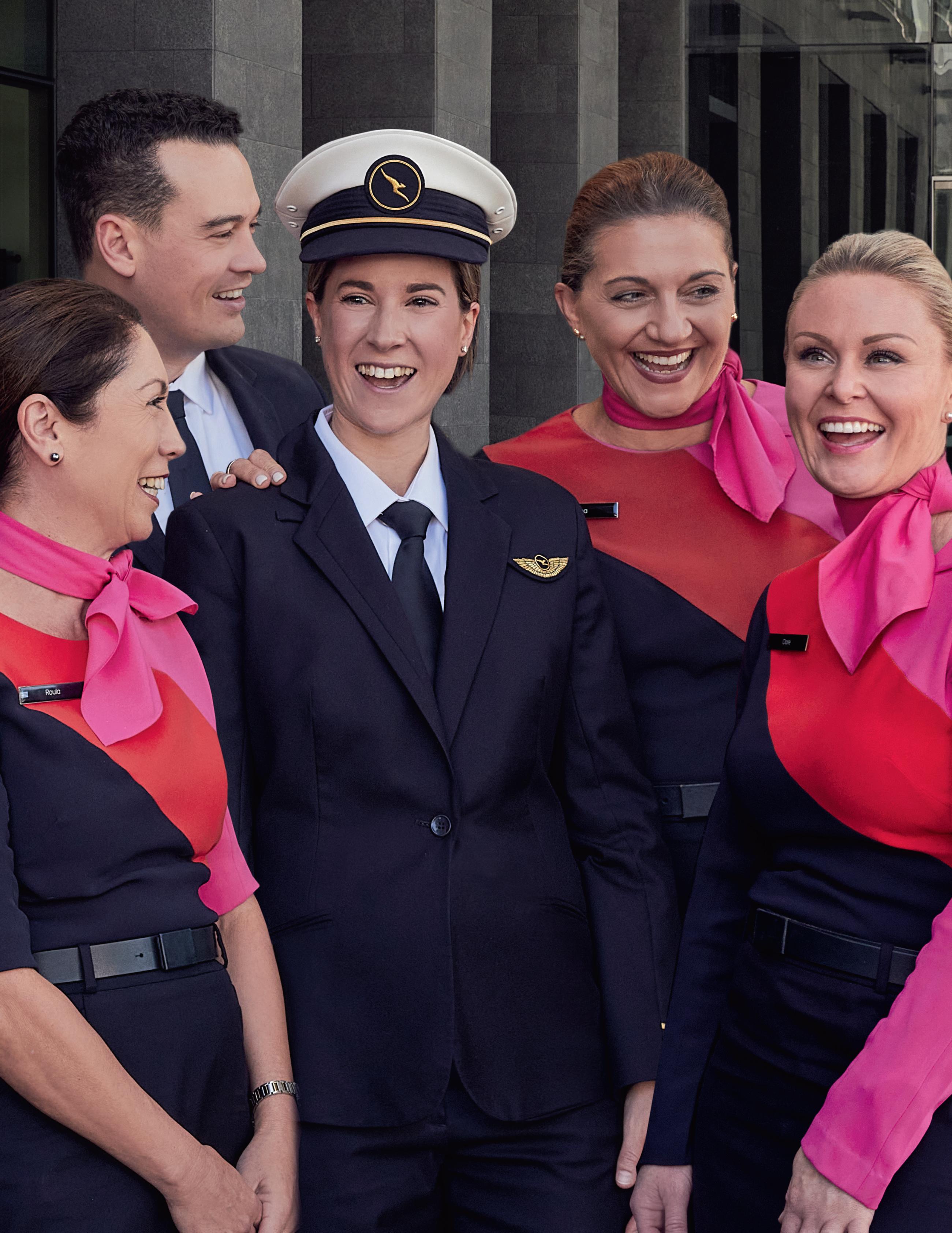
We all want to leave behind a legacy of positivity. Leaving a gift in your Will to Australian Red Cross can help transform lives for the better.

Val knows the difference that support can make in the tough times. She has formed a beautiful friendship with Allie, her Red Cross visitor. In a world where people feel lonelier than ever before, our generous supporters are helping ensure thousands of older people don’t feel so alone. These days, Val knows she is loved and cared for, thanks to her friend Allie.
Everybody deserves the warmth of kindness and friendship, and your Will can help us share that with people for generations to come.
If you’ve already left a gift in your Will or are considering leaving one, please let us know so we can thank you and plan for the future.
To receive our free Wills guide or get in touch, scan the QR code.

Premiere movies, hit TV shows and absorbing audiobooks

There’s something for everyone in this selection of new films.
Anyone worried about how two Anglo guys would tackle what is a beloved video game with a strong Italian heritage can now exhale. Chris Pratt’s Mario and Charlie Day’s Luigi market their plumbing business as an authentic Italiano gig then go home to their family and speak like the Brooklyn guys they are. It’s one of the many smart ways the creators of The Super Mario Bros. Movie get to have their cake and eat it, too. Casting Anya Taylor-Joy as the voice of Princess Peach, a seemingly vapid trophy who knows more than she lets on, is another. But Jack Black as the dark king, Bowser, is the cherry on top, for how can a villain be taken seriously when we’re so used to him as a Kung Fu Panda? Rated PG

When the Guardians franchise began in 2014, its star Chris Pratt (above, centre) was known primarily as the goofball on the lightweight comedy television show Parks and Recreation, while Guardians was known for occupying the more obscure corner of the Marvel universe. The movies, based on the comic books of the same name, contain an entertaining hotchpotch of creatures, including a mouthy raccoon named Rocket (voiced by Bradley Cooper), who’s also a proficient pilot, engineer and adoptive father to a humanoid-tree creature called Groot (Vin Diesel).

But this is Marvel so the series, written and directed by James Gunn, has already made about US$2.5 billion worldwide. In this third – and said to
be final – instalment, Peter Quill (Pratt) is still in recovery mode after losing his love, Gamora (Zoë Saldaña). Sure, she’s been recreated but this version has no romantic feelings for Quill. But there’s precious little time for moping when Quill learns he must prepare to defend – what else? – the universe. That mission is complicated by an attack on Rocket, giving rise to a flashback origin story of how such a highly accomplished raccoon, who has all the attitude of a young Joe Pesci, came to be. While there’s plenty of action that sometimes veers into gore, Guardians Volume 3 is, in the end, about how a ragtag group of misfits, rejected by the world, can become each other’s family. Rated PG
When Kristin’s (Toni Collette, above) grandfather dies in Italy, she decides to craft her own version of Eat Pray Love meets Under the Tuscan Sun. In fact, after her son goes off to college and her marriage implodes, she cites those two movies before embarking on her grand adventure. Only one slight problem: it appears her grandpa was the head of some organised crime ring. And they’re looking for a replacement. With Monica Bellucci. Rated MA15+
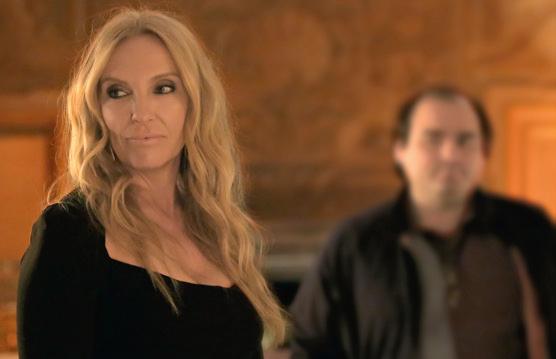
Beau is Afraid
Filmmaker Ari Aster, the mastermind behind 2018’s Hereditary, which has been called the scariest film of all time, and Midsommar, the gruesome Scandi-horror flick that made Florence Pugh a star, wrote this darkly absurdist tale about one man’s frustrating quest to find a connection to himself and his family’s past. Aster, who also directs, has made a film he describes as a “nightmare comedy” and he’s not wrong. Joaquin Phoenix (right, as an older version of his character) stars as hyper-anxious boy-man Beau Wasserman, who runs into grievances big (car accidents, death of a loved one), small (missed calls) and insane (people dying during sex) while on a mission to visit his demanding mother (Patti LuPone). Fans of other pitch-black surrealist comedies – such as Charlie Kaufman’s Synecdoche, New York and Adaptation – will revel in the bleak alienation of the characters, while others may view it all as simply too much, which is probably the point. With Amy Ryan and Nathan Lane. Rated MA15+
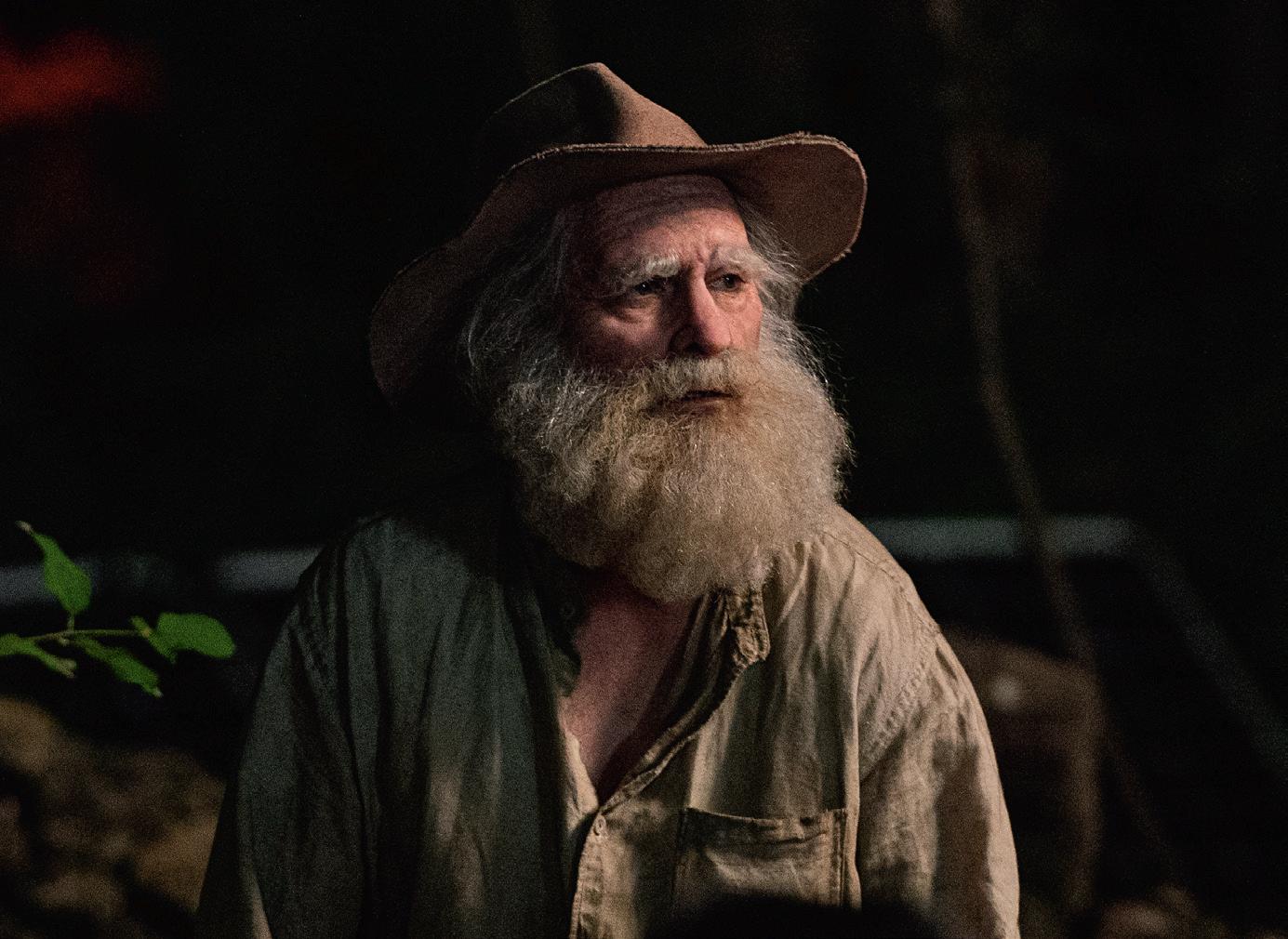
There must be something about the Middle East for Jake Gyllenhaal (left, at right, with Dar Salim), because the American actor keeps starring in movies set in the region. He played a new recruit to the Gulf War in Jarhead (2005), a soldier in the Afghanistan war in Brothers (2009) and who could forget Prince of Persia: The Sands of Time (2010), for which he grew his hair and was slammed by the critics? He’s back in the Middle East again in this vehicle, written and directed by Guy Ritchie, starring as US Army Sergeant John Kinley, who is rescued by his Afghan interpreter, Ahmed (Dar Salim), after being seriously wounded in a Taliban attack. Determined to pay Ahmed back for the risk he has taken, John tries to secure visas for him and his family. But he soon realises he’s in far more danger than he could have anticipated. Rated MA15+
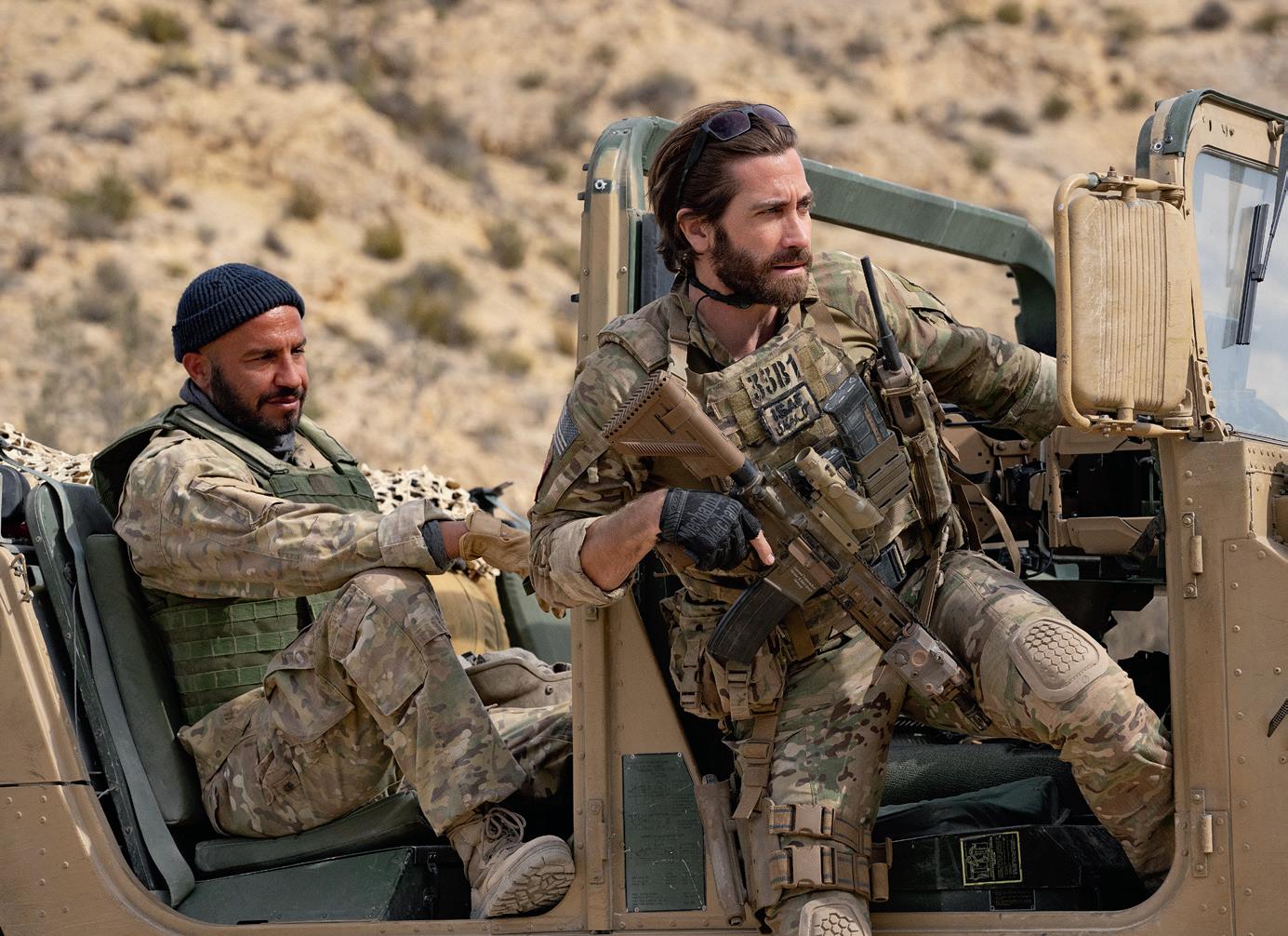
Whatever your mood, there’s a show to match.
This true story behind the Watergate scandal concerns the two (slightly unhinged) members of the Nixon administration who planned the infamous burglary, inadvertently toppling the president they were trying to protect. Starring Justin Theroux and Woody Harrelson (below). Rated MA15+

In this third season of the popular British crime series, Sarah Lancashire (below, left) returns as Sergeant Catherine Cawood, a nearly retired West Yorkshire police officer in search of personal justice. Rated MA15+


On 13 June 1980, suburban housewife Candy Montgomery of Wylie, Texas, brutally murdered her friend and fellow churchgoer, Betty Gore, with an axe. The crime – which took place in Betty’s home – stunned the town until it emerged that Candy had been having an extramarital affair with Betty’s husband, Allan. What followed was a court case so strange, it still intrigues today. Starring Avengers actor Elizabeth Olsen as Candy (above, centre), Jesse Plemons as Allan and Lily Rabe as Betty. Rated M
Sylvester Stallone (left) and model Jennifer Flavin married in 1997 (millennia in Hollywood years) and have three daughters together... So what could be better than giving the family the Kardashian treatment and turning their everyday lives into a reality show? Rated M

Written and directed by Hugh Laurie, the title is the cryptic last sentence spoken by a man before he dies in the arms of Bobby Jones (Will Poulter, below), who sets out to solve the mystery. Rated PG

Tune into these compelling stories.
In an increasingly complex world, how do parents nurture and guide their children into adulthood? Bringing everything he’s learnt from decades of working with and writing for young people, bestselling author and educator John Marsden presents his manifesto on parenting and childhood in the 21st century. He offers insights into a range of topics, from the role and importance of education to what he defines as a “problem parent” and a “problem child”.

How do you survive unimaginable suffering and not be defined by it? In 1938, Eddie Jaku, a German Jew, was arrested and spent seven years enduring the horrors of Buchenwald and Auschwitz concentration camps then a death march. In this memoir, Jaku, who died in 2021, tells how the Holocaust robbed him of family, friends and country but never his belief in humanity. His story is proof that the pursuit of happiness is the most effective rebuke to hate.

Young Allegra is surrounded by people who love her –grandmothers Joy and Matilde and father Rick – yet these same people don’t love each other. They all live in their own worlds, divided from each other by a tragedy that refuses to remain silently in the past. In her award-winning comingof-age debut novel set in 1970s Australia, writer Suzanne Daniel makes the conflicted Allegra the lens through which her splintered family is viewed.

Free Wi-Fi and Entertainment App
Once onboard, connect your own device to Qantas Free Wi-Fi on domestic flights in three simple steps to access the internet and Qantas Entertainment App.
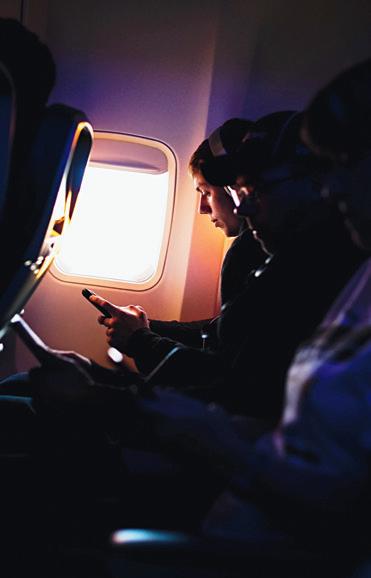
STEP 1
Enable Aeroplane Mode and select the “Qantas Free Wi-Fi” network in your Wi-Fi settings.
STEP 2 Follow the prompts on the “Welcome Onboard” screen to connect.
STEP 3
Enjoy
Once you’re connected, you’re now ready to access the internet and the Qantas Entertainment App. Having trouble connecting? Make sure you are connected to the “Qantas Free Wi-Fi” network and go to wifi.qantas.com in your preferred browser to start exploring. Inflight entertainment varies by route and aircraft. Voice calls are not permitted inflight.
unlimited access to theaustralian.com.au, and themonthly.com.au when you are connected to Qantas Wi-Fi onboard and in Qantas lounges.
These exercises are designed to provide a safe way to stretch and enjoy movement in certain muscle groups that can become stiff as a result of long periods of sitting. They may be effective at increasing the body’s blood circulation and massaging the muscles. We recommend you do these exercises for three or four minutes every hour and occasionally leave your seat to walk down the aisles. Each exercise should be done with minimal disturbance to other passengers. None of these exercises should be performed if they cause pain or cannot be done with ease.
Ankle circles
Lift feet. Draw a circle with toes, moving one foot clockwise and the other counterclockwise at the same time. Reverse circles. Rotate in each direction for 15 seconds. Repeat if desired.
Knee lifts
Lift leg with knee bent while contracting your thigh muscle. Alternate legs. Repeat 20 to 30 times for each leg.
Neck roll
With shoulders relaxed, drop your ear to your shoulder and gently roll your neck forward and back, holding each position for about five seconds. Repeat five times.
01
Start with both heels on the floor and point feet upwards as high as you can.
02
Put both feet flat on the floor. Lift heels high, keeping the balls of the feet on the floor.
03
Repeat these three stages in a continuous motion and at 30-second intervals.
Knee to chest
Bend forward slightly. Clasp hands around left knee and hug it to your chest. Hold for 15 seconds. Keeping hands around the knee, slowly let it down. Alternate legs. Repeat 10 times.
Forward flex
With both feet on the floor and stomach held in, slowly bend forward and walk your hands down the front of your legs towards your ankles. Hold for 15 seconds and slowly sit back up.
Shoulder roll
Hunch shoulders forwards then upwards, backwards and downwards in a gentle circular motion.
Mobile phones and electronic equipment: All transmitting electronic devices, including mobile phones, tablets and laptop computers, must be switched to flight mode* prior to departure. Smaller devices such as mobile phones, e-readers, electronic games, MP3 players, iPads and other small tablets may be held in your hands or stowed in a seat pocket. Unless otherwise directed by the captain, these devices may remain switched on and used in flight mode during take-off, cruise and landing. Larger electronic equipment such as laptop computers may only be used from when the aircraft seatbelt sign is extinguished after take-off until the top of descent. After landing, the cabin crew will advise when flight mode may be switched off.
Headsets: Do not use a personal single-pin audio headset in the Qantas inflight entertainment system unless it is supported by a two-pin airline headset adaptor. Personal headsets that connect via a cable
to a handheld device can be used at any time from boarding until arrival. Headsets and other devices that connect via Bluetooth must be switched off for take-off and landing but can be used during cruise.
*Flight mode enables you to operate basic functions of your mobile phone or personal electronic device while its transmitting function is switched off, meaning you cannot make phone calls or send an SMS.
Your wellbeing is our priority. Our Fly Well program brings together a number of measures to give you peace of mind during your flight.
Cabin air: Our aircraft air conditioning systems are fitted with hospital-grade HEPA filters, which remove 99.9% of all particles including viruses. The air inside the cabin is refreshed every few minutes, ensuring the highest possible air quality.
Inflight: The aircraft configuration, including the seats and galley, act as a natural barrier, and people are not seated face to face. The direction of inflight airflow is ceiling to floor.
Enhanced cleaning: Our aircraft are cleaned with a disinfectant effective against coronaviruses, with a focus on the high contact areas of seats, seatbelts, overhead lockers, air vents and toilets. Our people are trained in the latest hygiene protocols.
Face masks: Some destinations require you to wear a mask during your flight or at the airport. Ensure you check the latest government requirements before you travel. Your face mask needs to cover your mouth and nose, fit securely and must be worn unless you’re under 12 years of age or have a medical exemption.
Your inflight health: When flying, passengers can be seated and inactive for long periods of time. The environment can be low in humidity and the
cabin pressure equivalent to an altitude of 2440 metres above sea level. The following advice helps you stay healthy during your journey.
The importance of inflight blood circulation and muscle relaxation: When walking, the leg muscle action helps return venous blood to the heart. Sitting in the same position for a long period of time can slow this process and, in some people, leads to swelling in the feet. Some studies have shown that immobility associated with travel of longer than four hours (by air, car or rail) can also lead to an increased risk of deep vein thrombosis (DVT), or clotting in the legs. Personal factors that increase the risk of DVT include:
Age over 40 years
Personal or family history of DVT or pulmonary embolus
Recent surgery or injury, especially to the lower limbs, pelvis or abdomen
Cancer
Inherited or other blood disorders leading to clotting tendency
Pregnancy
Oestrogen therapy (oral contraceptive pill or hormone replacement therapy).
There are a number of ways to help reduce the possibility of DVT, including the following:
Avoid leg-crossing while seated
Ensure adequate hydration
Minimise alcohol and caffeine intake before and during your flight
Wear comfortable, loose-fitting clothes
During your flight, move your legs and feet for three to four minutes per hour while seated and move about the cabin occasionally
Do the light exercises we recommend here (see above) and through the inflight entertainment system.
If you have concerns about your health and flying, or you feel that you may be at risk of DVT, Qantas recommends that you talk to your doctor before travelling. Additional measures such as well-fitted compression stockings or anti-clotting medication may be recommended for high-risk individuals.
Jet lag: Unlike other forms of transport, air travel allows for rapid movement across many time zones, which can disrupt the body’s biological clock. This is commonly known as jet lag. This disruption can affect various body rhythms such as the sleepwake cycle and the digestive system, leading to symptoms such as tiredness and lack of energy and appetite. In general, the more time zones crossed, the more disruption of the body clock and the more symptoms experienced after the journey. We recommend the following to minimise the effects of jet lag.
Before your flight:
Get a good night’s rest
During your flight:
Eat light meals
Wear loose, comfortable clothing and sleep when you can
Stay hydrated – drink plenty of water and avoid excess tea, coffee and alcohol
At your destination:
If possible, give yourself a day or two after arrival to adjust to the new time zone
Try to eat meals and do other social activities at appropriate destination times to adjust to the new time zone
Cabin humidity and hydration: Humidity levels of less than 25 per cent are common in the cabin, as the outside air that supplies the cabin is very dry. The low humidity can cause drying of the surfaces of the nose, throat and eyes and it can irritate contact lenses. If normal fluid intake is maintained during the flight, dehydration will not occur.
We recommend:
Drink water and juices frequently during the flight
Drink coffee, tea and alcohol in moderation
Remove contact lenses and wear glasses if your eyes are irritated
Use a skin moisturiser to refresh the skin
Cabin pressurisation: During flight, aircraft cabin pressure is maintained to a sufficient density for your comfort and health. As the aircraft climbs, the cabin may reach the same air pressure as at an elevation of 2440 metres above sea level. Cabin pressure does not pose a problem for most passengers. However, if you suffer from obstructive pulmonary diseases, anaemias or certain cardiovascular conditions, you could experience discomfort at these altitudes. These passengers should seek medical advice before flying, as some may require supplementary oxygen. Qantas can arrange this but requires at least seven days’ notice before travelling. The rate of change in cabin pressure during climb and descent is also carefully maintained and does not usually cause discomfort. However, children and infants, and adults who have sinus or nasal congestion, may experience some discomfort because of pressure changes during climb and particularly descent. Those suffering from nasal or sinus congestion because of a cold or allergies may need to delay travel. The following advice may assist:
To “clear” your ears, try swallowing, yawning or pinching your nose closed and gently blowing against it. These actions help open the Eustachian tubes, equalising pressure between the middle ear chamber and throat. If flying with an infant, feed or give your baby a dummy during descent. Sucking and swallowing help equalise pressure in an infant’s ears. Give children something to drink or chew during descent. Consider using medication such as nasal sprays, decongestants and antihistamines 30 minutes prior to descent to help open up your ear and sinus passages.
Motion sickness: Air travel, especially if turbulence is experienced, can cause motion sickness, as it leads to a conflict between the body’s sense of vision and its sense of equilibrium. Maintaining good visual cues (keeping your eyes fixed on a non-moving object) helps prevent motion sickness. When the weather is clear, you should look out at the ground, sea or horizon. If the horizon can’t be seen, closing your eyes and keeping your head movements to a minimum will help. While over-thecounter medications are available, we recommend
you consult your doctor about the appropriate medications. More information can be found: At qantas.com.au/info/flying/intheair/ yourhealthinflight
Through the onboard entertainment system
On our information leaflet available from Qantas or your travel agent
Smoking: Government regulations prohibit smoking on all flights operated by Australian-registered aircraft. The use and charging of all e-cigarettes and other personal vaporisers are not permitted on board an aircraft. There are smoke detectors in all toilets and penalties for regulation breaches.
Travelling with children: Please ask cabin crew for help if required. Baby food and nappies (diapers) are available on most flights, while some washrooms are fitted with baby change tables. Please dispose of nappies etc. in the waste bins.
Leaving flights: On international flights, the cabin crew will distribute the necessary Customs and Immigration forms. If you are stopping en route, you will need your boarding pass to re-board the aircraft. If you’re travelling as a domestic passenger on an international flight within Australia, retain your boarding card with the large D sticker. This will be required to clear Customs at your destination.
Transferring from Australian domestic flights numbered QF400 and above to international flights: At check-in you will be issued with your international boarding pass. Your international boarding pass and baggage will be tagged through to your final destination. There is no need to claim your baggage or attend check-in at the transfer airport. Follow the signs for international transfers passengers to the complimentary transfer bus (not necessary in Melbourne and Darwin).
Transferring from international to domestic flights numbered QF400 and above: On arrival at your Australian transfer port, go through Immigration and collect your luggage. Proceed through Customs and follow the signs to the domestic transfer area to re-check your luggage. A complimentary transfer bus (not necessary in Melbourne, Adelaide and Darwin) departs at regular intervals for the domestic terminal for your connecting Qantas flight within Australia. If your connecting domestic flight is numbered QF1-QF399, there is no need to clear Customs and Immigration. These flights depart from the international terminals. Customs and Immigration clearance will be completed at your final destination.
Transferring to a Jetstar domestic flight: If your next flight is with Jetstar (JQ) or a Qantas codeshare flight operated by Jetstar (QF5400-QF5999), you will need to collect your baggage and follow the signs to the Jetstar counter to check in for your flight and re-check your baggage.
The Qantas Group has a strict policy of denying boarding, or offloading any passenger who makes inappropriate comments or behaves inappropriately inflight or on the ground. Qantas will not accept any inappropriate comments as “jokes”. It will also seek to recover all costs incurred, including diversions as a result of security incidents, from those involved.
Security screening is subject to the laws and regulations of the country of operation. The Qantas Group ensures that its passengers, staff and aircraft are safe and secure through an outcome-focused, risk-based approach to security management. Qantas security standards apply across the business, including QantasLink and Jetstar. A dedicated operations centre monitors global security events 24 hours a day.
Pack your own luggage
Do not carry any items for another person Carry valuables, approved medication and keys in your carry-on baggage
All knives, sharp objects or cutting implements must be in checked baggage
Security measures can include random frisk search after consent is obtained. Passengers may request privacy and must be searched by a screener of the same gender
Important note: Security screening is subject to the laws and regulations of the country of operation.
On all international flights to and from Australia: Each container of LAGs in your carry-on baggage must be 100ml or less
All 100ml containers must be placed in a single transparent one-litre plastic bag
Plastic bags containing LAGs are to be screened separately from other carry-on baggage
All powders must be screened separately with restrictions on the carriage of inorganic powders over 350ml (350g)
Passengers may still carry prescription medicines or baby products sufficient for the flight
If departing, transiting or transferring on an international flight at an Australian
international gateway airport, duty-free powders and LAGs must be sealed, with receipt, in a security tamper-evident bag issued at the time of purchase
The Australian federal government has introduced full-body scanners at international gateway airports: Sydney, Adelaide, Brisbane, Cairns, Darwin, Perth, Melbourne and the Gold Coast
The Australian Federal Government has commenced introducing full-body scanners at major domestic airports: Adelaide, Brisbane, Cairns, Canberra, Darwin, Gold Coast, Hobart, Launceston, Melbourne, Newcastle, Perth, Sunshine Coast, Sydney and Townsville
At international gateway airports passengers refusing to pass through the scanner will be banned from entering the sterile area or boarding an aircraft for 24 hours
Exemptions apply for people with serious medical conditions, infants and small children, and people in wheelchairs
As per advice, the energy exposure is comparable to that from a mobile phone several metres away
There are no known safety concerns for people with pacemakers and metal implants or for pregnant women
Common items used every day may seem harmless but on an aircraft they may become dangerous. When the aircraft changes altitude, variations in temperature and pressure may cause items to leak, create fumes or catch fire.
Items that are forbidden on aircraft or have carriage restrictions include lithium batteries, other battery types, camping stoves, fuels, oils, compressed gases, aerosols, household cleaners, matches, lighters, paints, explosives (including flares, fireworks, sparklers and bonbons), emergency position-indicating radio beacons, radioactive material, biological and infectious substances and fuel-powered equipment. This list is not exhaustive so please carefully consider what items you pack for your next flight.
If you’re unsure about an item in your baggage, ask a member of our friendly cabin crew.
For further information, go to qantas.com or email dg@qantas.com.au.
Qantas is a partner in the Australian government’s Charter for Safe Travel. Travellers may obtain the latest travel advice for their destination by visiting smartraveller.gov.au.
Several countries are introducing automated immigration clearance procedures to cope with growing air-travel numbers. The goal is to provide a faster, smoother immigration experience to eligible passengers without compromising border security. Please note that some automated clearance options may not be available due to COVID. Countries providing facilities across our network:
Australia SmartGate: e-passport holders of Australia, Canada, China, France, Hong Kong, Ireland, Japan, Korea, Macau, New Zealand, Singapore, Sweden, Switzerland, UK and US
China e-Channel: citizens of China
Hong Kong e-Channel Residents: citizens and residents of Hong Kong
Hong Kong e-Channel Visitors: frequent visitors that are visa-exempt, including Australians
Indonesia Autogate passport gates: citizens of Indonesia
Japan Speedy Immigration: citizens and foreign nationals with re-entry and special re-entry permits
New Zealand SmartGate Plus: e-passport holders of Australia, New Zealand, UK and US
Singapore enhanced-Immigration Automated Clearance System (eIACS): citizens, permanent residents, work permit holders and APEC cardholders
UAE eGate: UAE citizens and residents
UK ePassport gates: e-passport holders of UK, Switzerland and European Economic Area (EEA)
USA Global Entry system: US citizens and permanent residents, Dutch citizens, South Korean citizens and Mexican nationals. Canadian citizens and residents with NEXUS membership
USA Automated Passport Control: for US, Canadian and Visa Waiver Program passport holders
Fee applies
Pre-enrolment required





Access to preferred or pre-reserved seating is in accordance with the individual policy of the oneworld member airline operating the flight. First and business class check-in desks and lounges are not available at all airports. Fast track is not available at all airports. Priority baggage handling is not available on flights operated by British Airways. Extra baggage allowance benefits differ for Sapphire and Emerald tier members. oneworld benefits are available only to passengers on scheduled flights that are both marketed and operated by a oneworld member airline (marketed means that there must be a oneworld member airline’s flight number on your ticket). Alaska Airlines, American Airlines, British Airways, Cathay Pacific, Finnair, Iberia, Japan Airlines, Malaysia Airlines, Qantas, Qatar Airways, Royal Air Maroc, Royal Jordanian, SriLankan Airlines and oneworld are trademarks of their respective companies. Some limitations and exceptions may apply. For more information, visit www.oneworld.com/benefits. Fiji Airways is a oneworld connect partner which provides select alliance benefits to oneworld members. For more information, visit www.oneworld.com/oneworld-connect. For detailed information on the oneworld Lounge Access policy, visit https://www.oneworld.com/airport-lounges.

Across
01. Immediately, ... now (5)
04. Taverns (4)
06. Ejection of tenant (8)
12. Using (machinery) (9)
13 Sailors’ jigs (9)
14. Undergarment (7)
15. Fresco (5)
16. Circular coral reef (5)
17. Altering (8)
19. Immediate (fine) (2-3-4)
22. Warm autumn (6,6)
23. Convince (6)
25. Products from hives (6)
27. Stand-in actors (12)
31. Italian dish (9)
33. Official commands (8)
35. Fade away, ... out (5)
36. Woodland meadow (5)
37. Destitution (7)
40. Spate of robberies (5,4)
41. Rodin’s art (9)
42. Visit places of interest (8)
43. Remain (4)
44. Await with horror (5)
Across 01. Correct way to turn? (5)
04. Turn up with degree in surgery in hotels (4)
06. Expulsion that’s legal but novice gets around it somehow (8)
12. Working in the theatre? (9)
13. Are hips prone to dislocation in these dances? (9)
14. Burst into song before being allowed to get basketballer’s top (7)
15. Artwork you’ll miss if your back’s to the wall (5)
16. Island taken over by ayatollah (5)
17. One hundred face lynching for putting on different clothes (8)
19. Where to put pimple cream when under pressure to make a decision (2,3,4)
22. Delhi’s hot weather that goes on longer than expected (6,6)
23. Excerpt from Argentina’s sure-fire guarantee (6)
25. Hey, son! Go out and get some yellow box and leatherwood (6)
27. They are ready in the event of falling stars (12)
31. The pig sat tangled in pasta (9)
33. Authorisations for fellow to go on romantic outings (8)
35. Tape terrorists embracing Mr Sellers (5)
36. Pleased and initially excited by forest clearing (5)
37. Lack of money due in part to blow-up over typists (7)
40. Does it swell the number in jails? (5,4)
41. Work done by those carving out a living? (9)
42. Moan wearily then set out east to be a tourist (8)
43. Hold back the mast rope (4)
44. Five hundred read on in great trepidation (5)
01. In short, Aussie icon with woman’s title wants lodgings (5)
02. Ecologically friendly country? (9)
03. After terrible start, liar is back on track (5)
Down
01. Chambers (5)
02 Arctic island (9)
03. Fall behind (5)
04. Watercolours or oils (9)
05. Double-marriage offence (6)
07. Masculinity (8)
08. Mini gâteau (7)
09. Off the cuff (9)
10. Rhinal (5)
11. Temperature gauge (11)
17. Hackneyed expressions (7)
18. Thickened pan juices (5)
20. Long curls (7)
21. Given the vote (11)
24. Octopus relative (5)
26. Close call (4,5)
28. Government levy (5,4)
29. Short break (9)
30. Become stale (8)
32. Reap (7)
34. International glitterati (3,3)
35. Groups of wolves (5)
38. Uninteresting (5)
39. Surrender (5)
04. Inapt sign would be out of place in landscapes, for example (9)
05. Having more than one mate is a crime? (6)
07. Manliness taken to extremes? Virtually an impossibility! (8)
08. Prize-winning bakery treat? (7)
09. One politician gets variety of top rum on the spur of the moment (9)
10. Wine appreciation, as always, has a bit to do with the nose (5)
11. Despite graduations and degrees, it can only answer one question! How cool is that? (11)
17. Club sandwiches (with not much filling) lead to trite remarks (7)
18. Meat sauce, if served on train, is source of easy money (5)
20. Roughly steer ship towards middle of locks (7)
21. Inmate paced around when released (11)
24. Firstly, sell a pound of calamari (5)
26. Lucky escape from the Rag Inn (4,5)
28. Put foot down firmly on obligation of document tax (5,4)
29. Tune idler composed is a musical piece (9)
30. Agents at fault stand without moving (8)
32. Have held right to street gathering (7)
34. Aircraft prepared for the rich and fashionable (3,3)
35 Fills suitcases with decks of cards (5)
38. Insipid, yet valid if fifty are quietly replaced (5)
39. Youth leader lied about amount produced (5)
Tough puzzle, simple rules: each row, column and 3x3 box must contain the numbers 1-9.
Create as many words of four letters or more as you can using the given letters once only but always including the central letter. Don’t use proper nouns or plurals ending with “s”. See if you can find the nine-letter word using all letters.
Fill in the missing parts of these fictional characters’ names and find them in the box of letters. When you’ve crossed them all off, the letters left over will spell out a friendly and lovable anthropomorphic character.
Can you spot the seven differences between these two images? Circle what’s changed on the image below.
01. The Spirit of Ecstasy icon is associated with what carmaker?
02. What does EOFY stand for in business?
03. The winner of what major Australian sporting event receives the Daphne Akhurst Memorial Cup?
04. Is the approximate percentage of sea life that is dependent on coral reefs 5 per cent, 15 per cent or 25 per cent?
05. What letter begins the most element names on the periodic table?
06. Ian Fleming International Airport is in which country?
07. Biryani, nasi goreng and jambalaya all traditionally feature what grain?
08. Studio Ghibli is associated with what type of movies?
09. What date is the Southern Hemisphere “horses’ birthday”, standardising breeding ages?
10. What chart-topping band’s albums included Green, Murmur and Automatic for the People?
11. The Ghan train runs between what two Australian capitals?
12. A story by sci-fi author Ray Bradbury led to the name of what concept in chaos theory?
13. In which part of the human body do wounds heal the fastest?
14. Cloche, homburg and ushanka are all types of what?
15. To within 10 per cent, what percentage of point-of-sale transactions in Australia are now made in cash?
16 Which Australian state was this year granted a licence to field its first team in the AFL?
17 Sylvester Stallone co-wrote and directed which 1983 dance drama movie sequel?
18 The Malay Peninsula is split between which three countries?
19 And what country lies just off its tip?

20. Which Beatles album cover shows the band on a pedestrian crossing?

qftravelinsider
Get your daily dose of travel inspiration as we share the latest and greatest tips on where to go, things to do, what to eat and drink, and more.


Solutions
If you’ve filled in the answers, please take the magazine with you so the cabin crew know to replace it with a new copy.
Wheel of words
Aced, Card, Cede, Cued, Curd, Dare, Darn, Dean, Dear, Deer, Dune, Need, Nerd, Nude, Rand, Read, Reed, Rend, Rude, Rued, Arced, Cadre, Caned, Cared, Cedar, Creed, Crude, Cured, Dance, Deuce, Educe, Raced, Under, Canned, Craned, Dancer, Duenna, Earned, Endear, Endure, Neared, Reduce, Unread, Nuanced, Unearned
Nine-letter word: Endurance
01. Clouds have been deleted.
02. Extra rock formation at right.
03. More grass in foreground.
04. Second post added.
05. Left tail light removed.
06. Inflatable on van roof now green.
07. Sticker on back window enlarged.
Ace Ventura, Atticus Finch, Austin Powers, Benjamin Button, Bilbo Baggins, Butch Cassidy, Darth Vader, Derek Zoolander, Don Vito Corleone, Donnie Darko, Eliza Doolittle, Ferris Bueller, Han Solo, Hannibal Lecter, Harry Callahan, Hermione Granger, Holden Caulfield, Indiana Jones, Jane Eyre, Jay Gatsby, Jerry Maguire, John McClane, Katniss Everdeen, Lex Luthor, Lisbeth Salander, Luke Skywalker, Marty McFly, Mary Poppins, Mick “Crocodile” Dundee, Morticia Addams, Optimus Prime, Phileas Fogg, Rocky Balboa, Scarlett O’Hara, Sherlock Holmes, Sweeney Todd, Tony Soprano, Willy Wonka
Solution: Winnie the Pooh
Quiz
01. Rolls-Royce 02. End of financial year
03. The Australian Open Women’s Singles (tennis)
04. 25 per cent 05. C 06. Jamaica 07. Rice
08. Animated (or anime) 09. 1 August 10. R.E.M.
11. Adelaide and Darwin 12. The butterfly effect
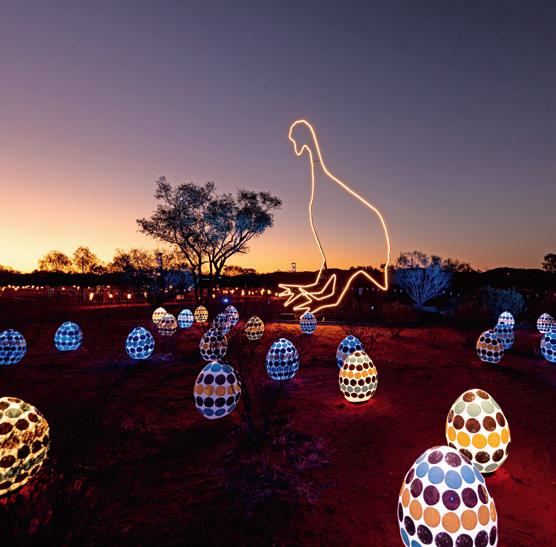
13. The mouth 14. Hats 15. 6 per cent 16.
Tasmania 17. Staying Alive 18. Myanmar, Thailand and Malaysia
19. Singapore 20. Abbey Road






 IWC Pilot’s Watch Chronograph 41 TOP GUN
IWC Pilot’s Watch Chronograph 41 TOP GUN
“ONCE I DREAMED TO BECOME THE FASTEST DRIVER. TODAY, I AM A DRIVER OF CHANGE.”
IWC
Watch Chronograph 41 TOP GUN
 Pilot’s
LEWIS HAMILTON, 7 TIME FORMULA 1™ WORLD CHAMPION
Pilot’s
LEWIS HAMILTON, 7 TIME FORMULA 1™ WORLD CHAMPION